My most current blog entry:
Entries by Dr. Jeff Harper (343)
Road Trip USA: Bonneville, Utah to Swall Meadows, California
 Thursday, January 31, 2019 at 5:08AM
Thursday, January 31, 2019 at 5:08AM In early September 2018, after camping/spectating at the World of Speed land speed event on the Bonneville Salt Flats, I drove at a 45 degree angle across the state Nevada to get to Swall Meadows, California in the Eastern Sierras.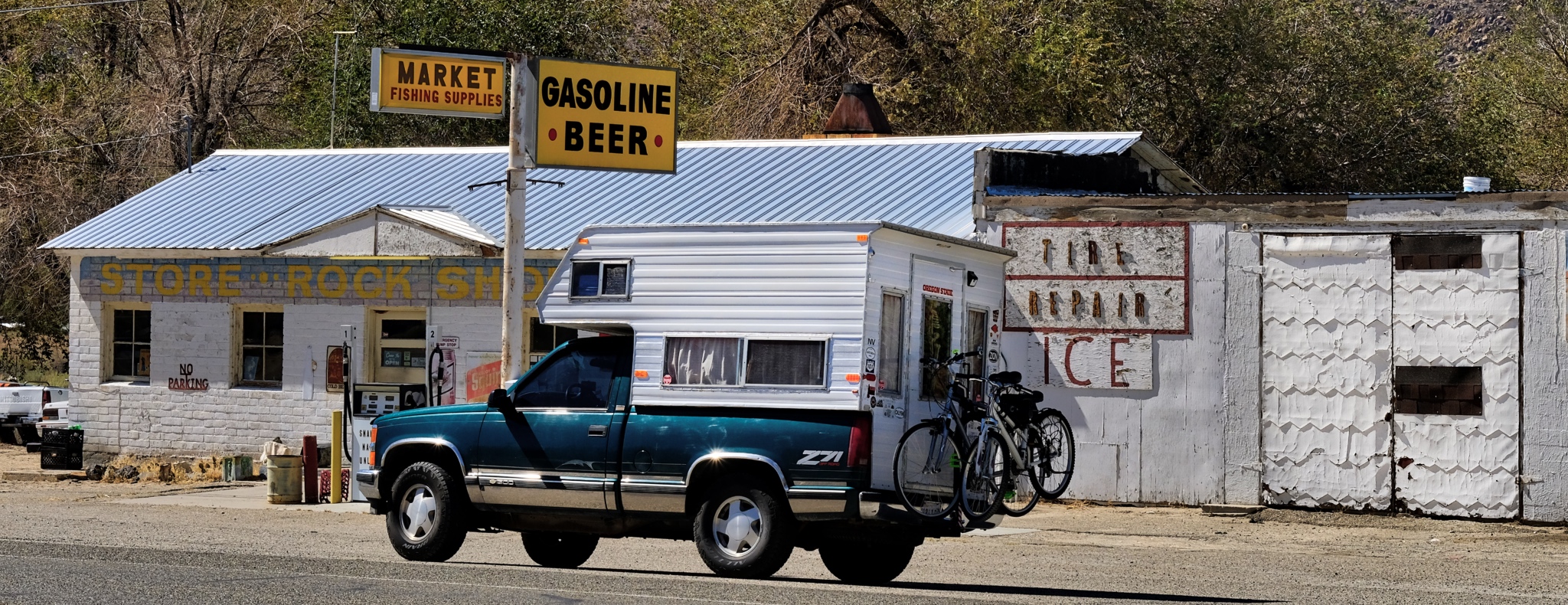
On the road again!!!
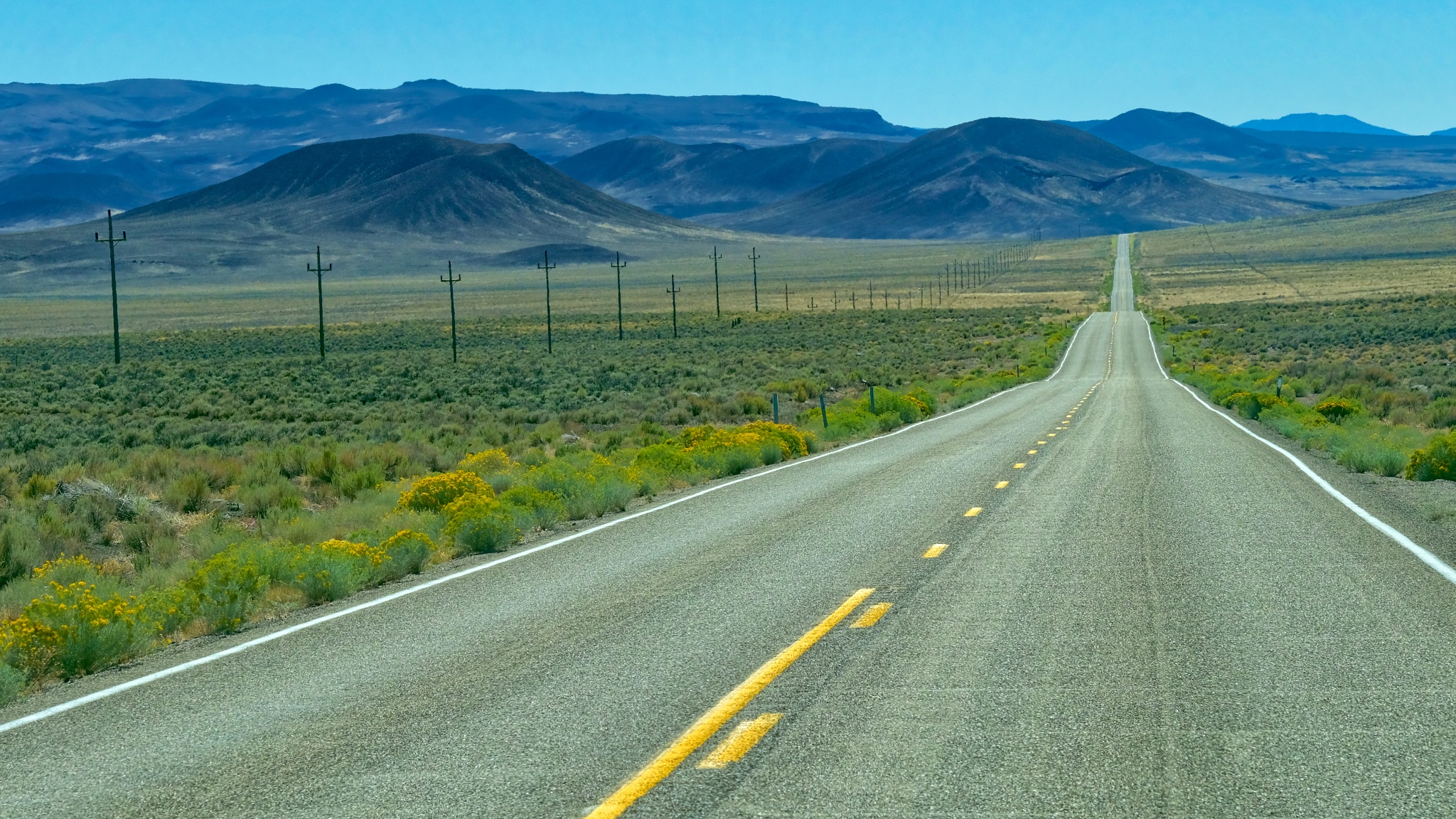 The road out of Utah went through some very deserted landscape. There were miles and miles between any sign of human activity.
The road out of Utah went through some very deserted landscape. There were miles and miles between any sign of human activity.
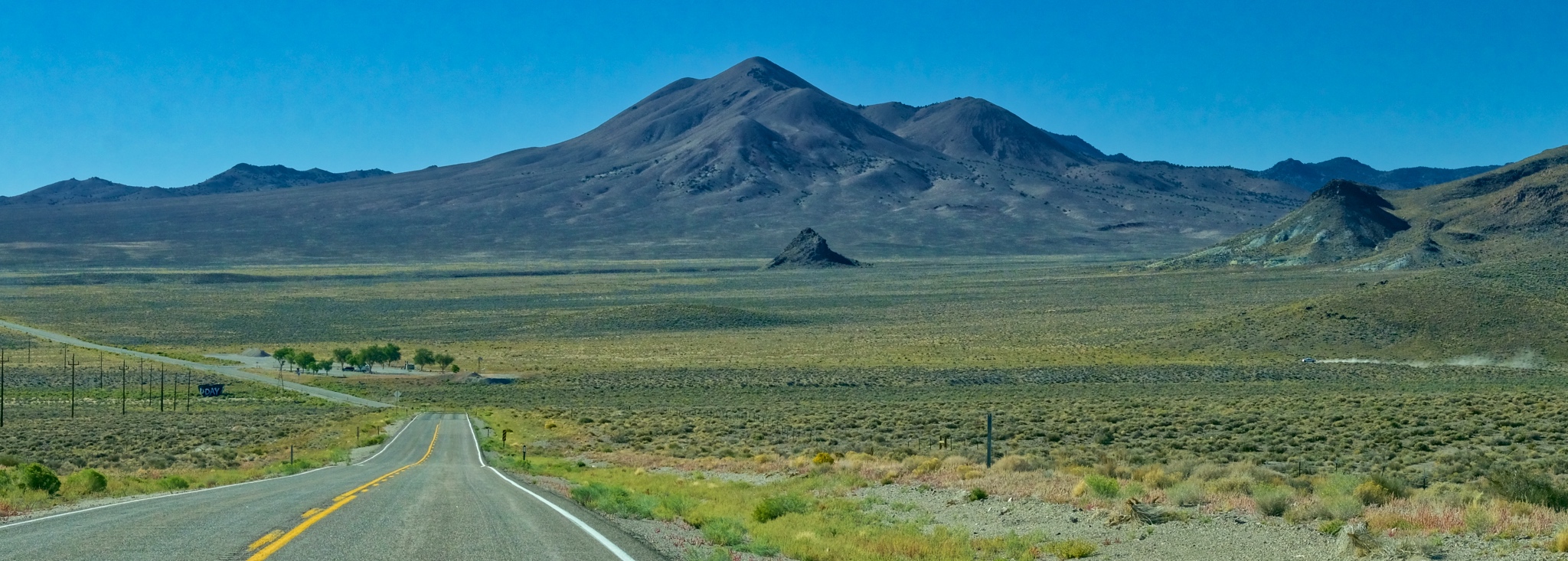 A little human activity after the first hundred miles . . . a roadside stop up ahead on the right.
A little human activity after the first hundred miles . . . a roadside stop up ahead on the right.
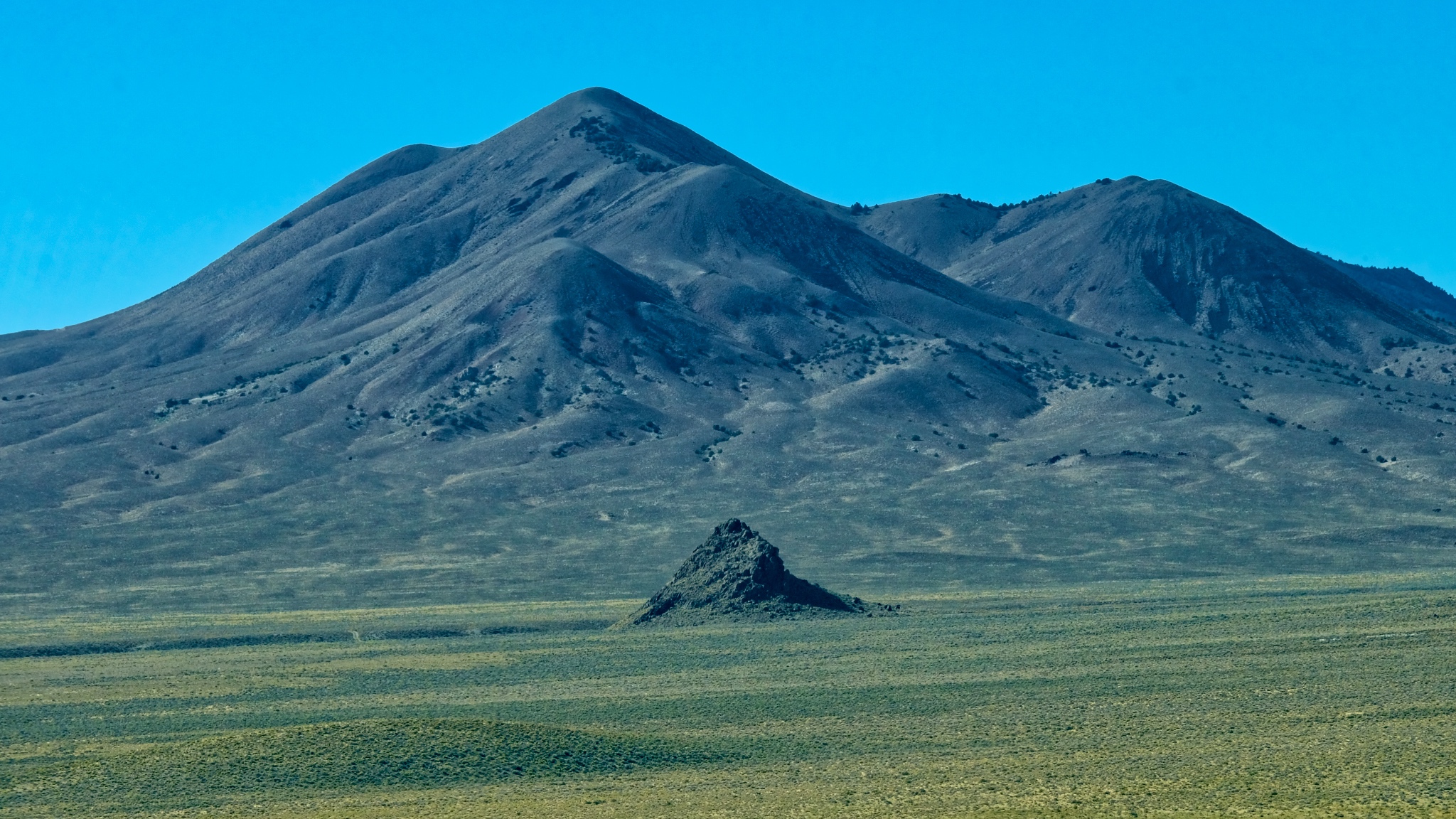 I suppose these geological features exist all over the world, but they would be obscured by forests and towns, and farms. Out here, in this high scrubland, every little remnant of a cinder cone still stands out.
I suppose these geological features exist all over the world, but they would be obscured by forests and towns, and farms. Out here, in this high scrubland, every little remnant of a cinder cone still stands out.
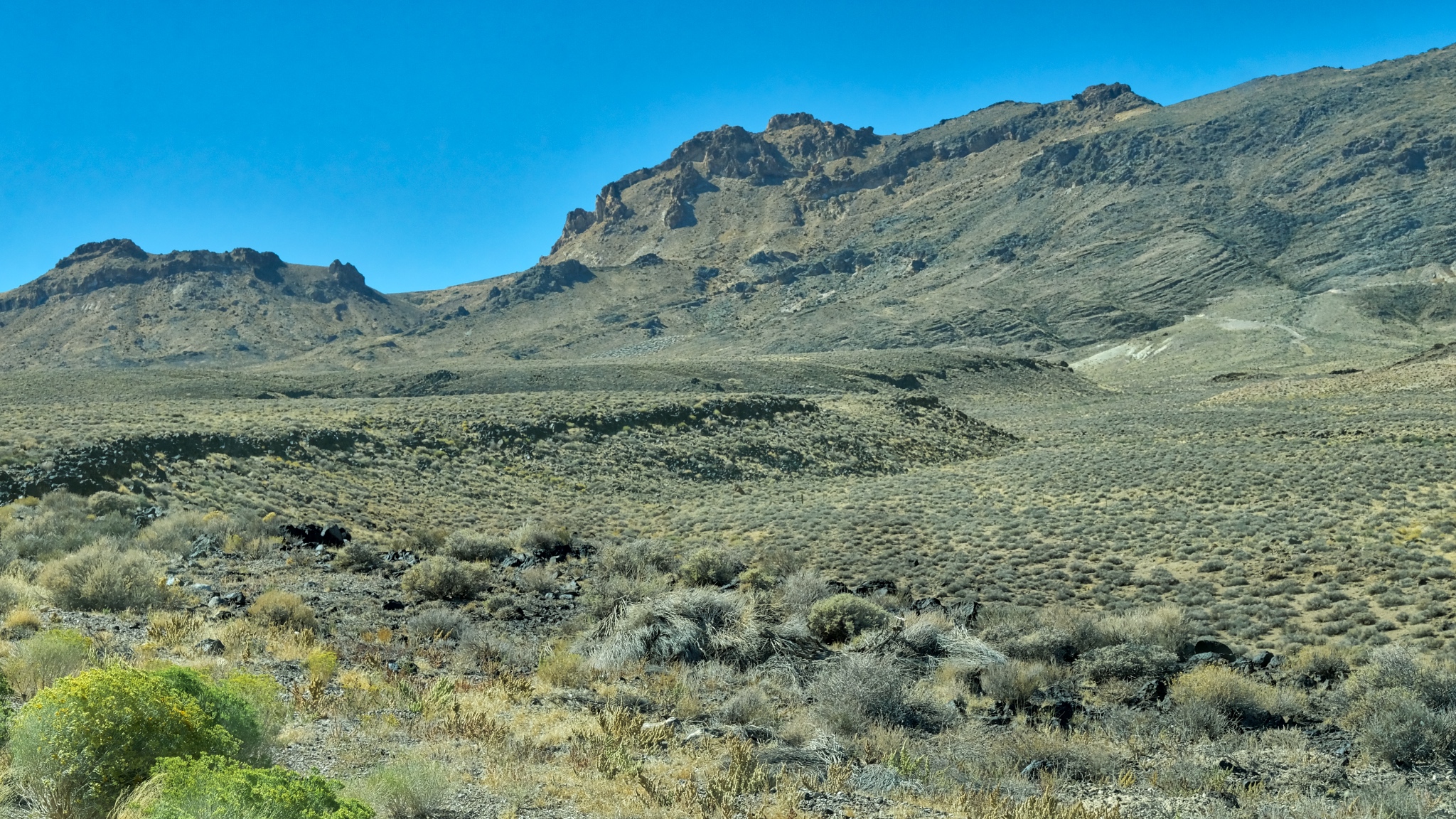 I absolutely love this type of landscape . . . and I don't know why . . . maybe the expression "high lonesome" explains it. I feel pulled to just wander around these hills . . . for years.
I absolutely love this type of landscape . . . and I don't know why . . . maybe the expression "high lonesome" explains it. I feel pulled to just wander around these hills . . . for years.
 An endless expanse of an endless variety of shapes and colorful vistas.
An endless expanse of an endless variety of shapes and colorful vistas.
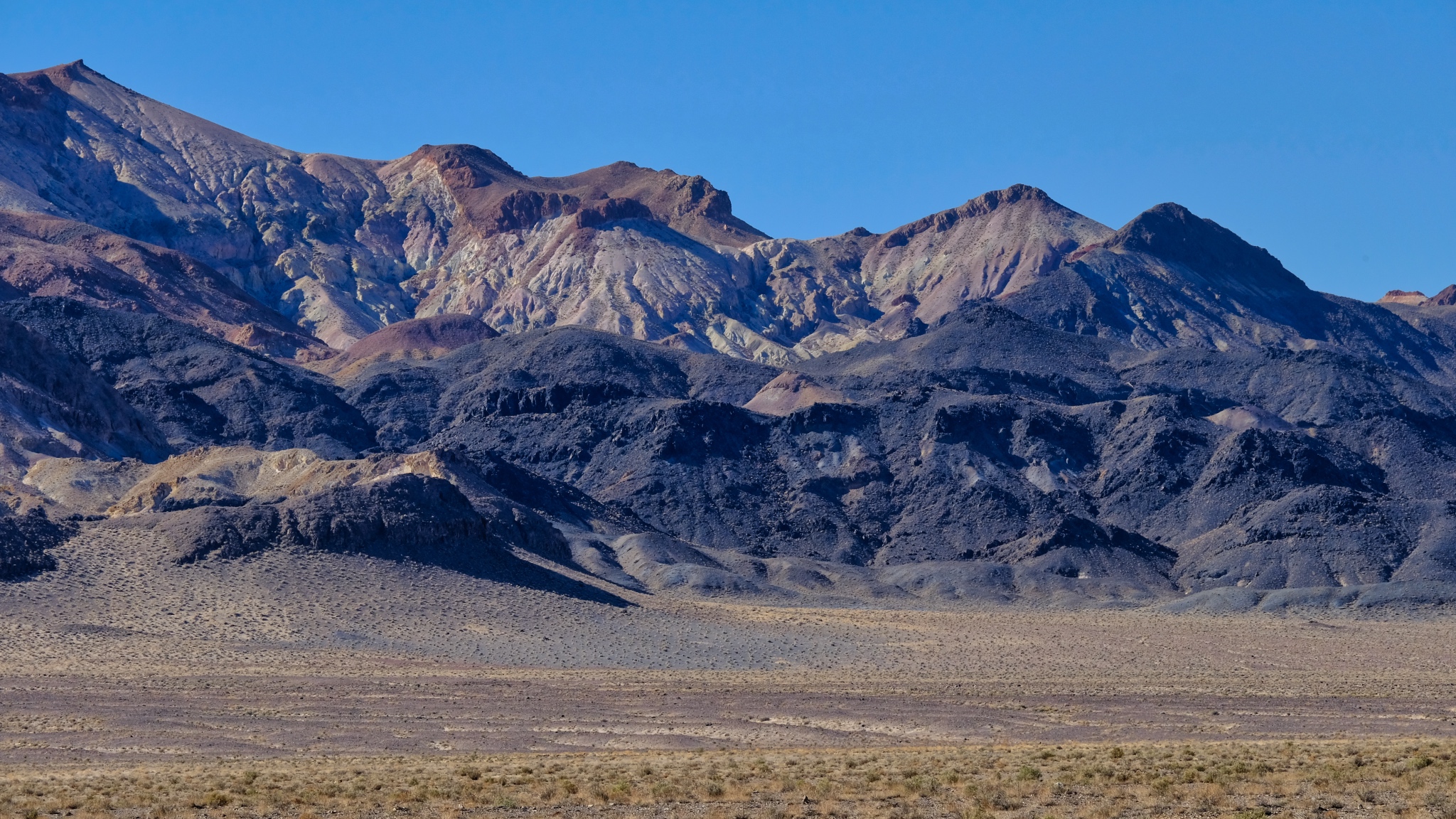 Here and there can be seen traces of former mining operations in the scars on the mountains.
Here and there can be seen traces of former mining operations in the scars on the mountains.
 An abandoned water tower servicing an abandoned rail spur near Cherry Creek, Nevada.
An abandoned water tower servicing an abandoned rail spur near Cherry Creek, Nevada.
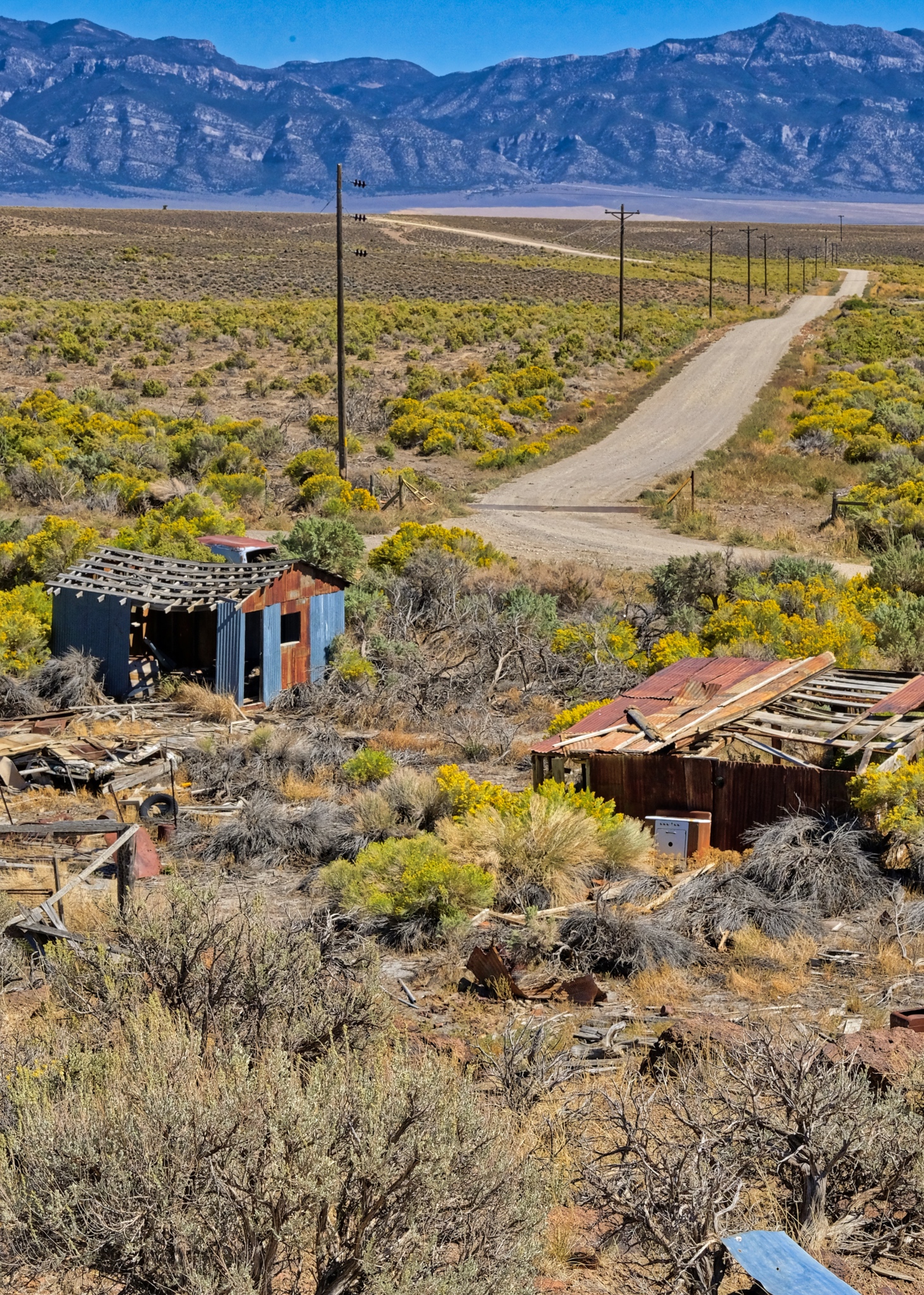 I passed by many roads I didn't have time to explore.
I passed by many roads I didn't have time to explore.
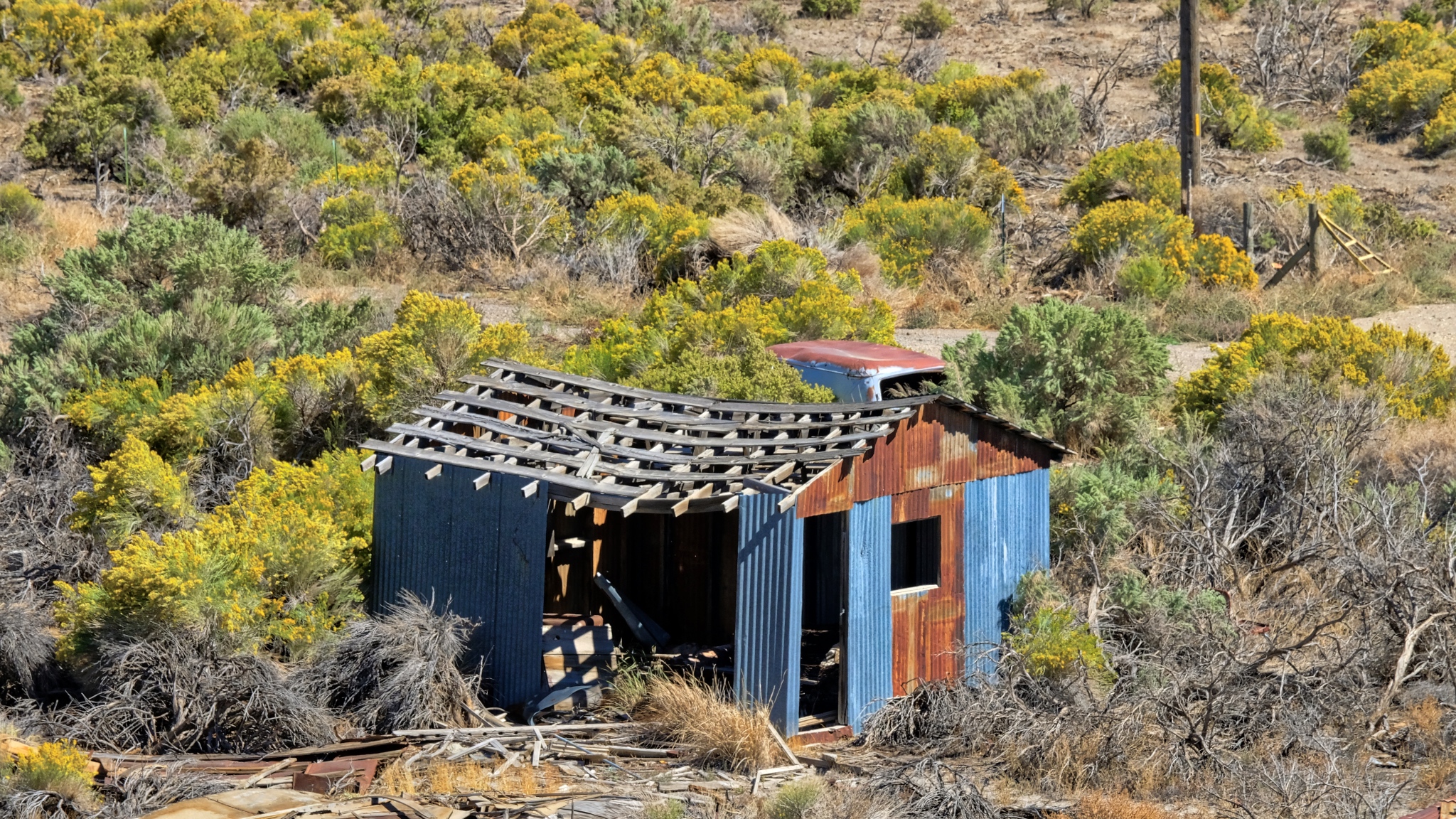 A story for each abandoned shack out here . . . a story never to be told.
A story for each abandoned shack out here . . . a story never to be told.
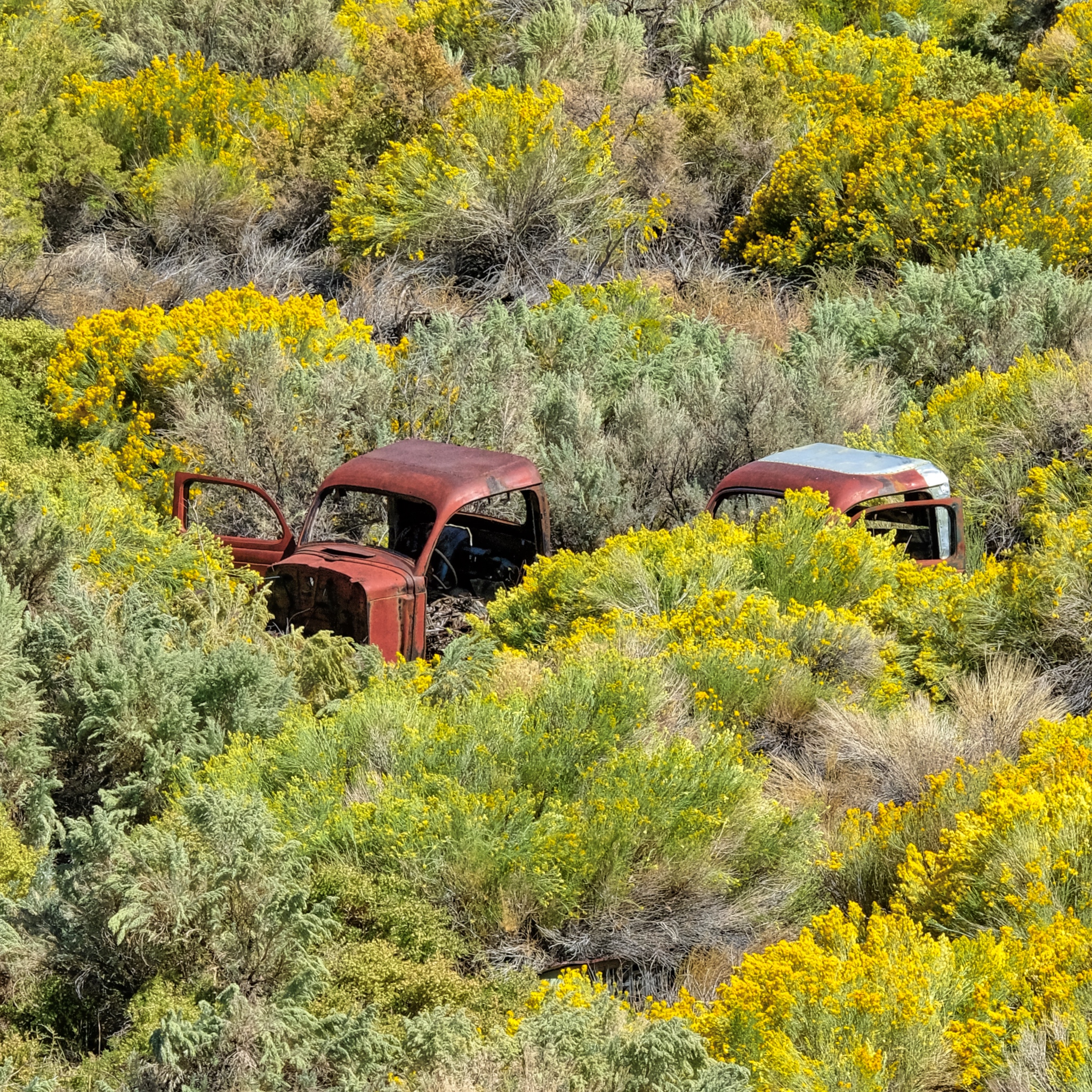 Used and left behind. I'm surprised the hot rodders and rat rodders haven't scavenged these old truck cabs.
Used and left behind. I'm surprised the hot rodders and rat rodders haven't scavenged these old truck cabs.
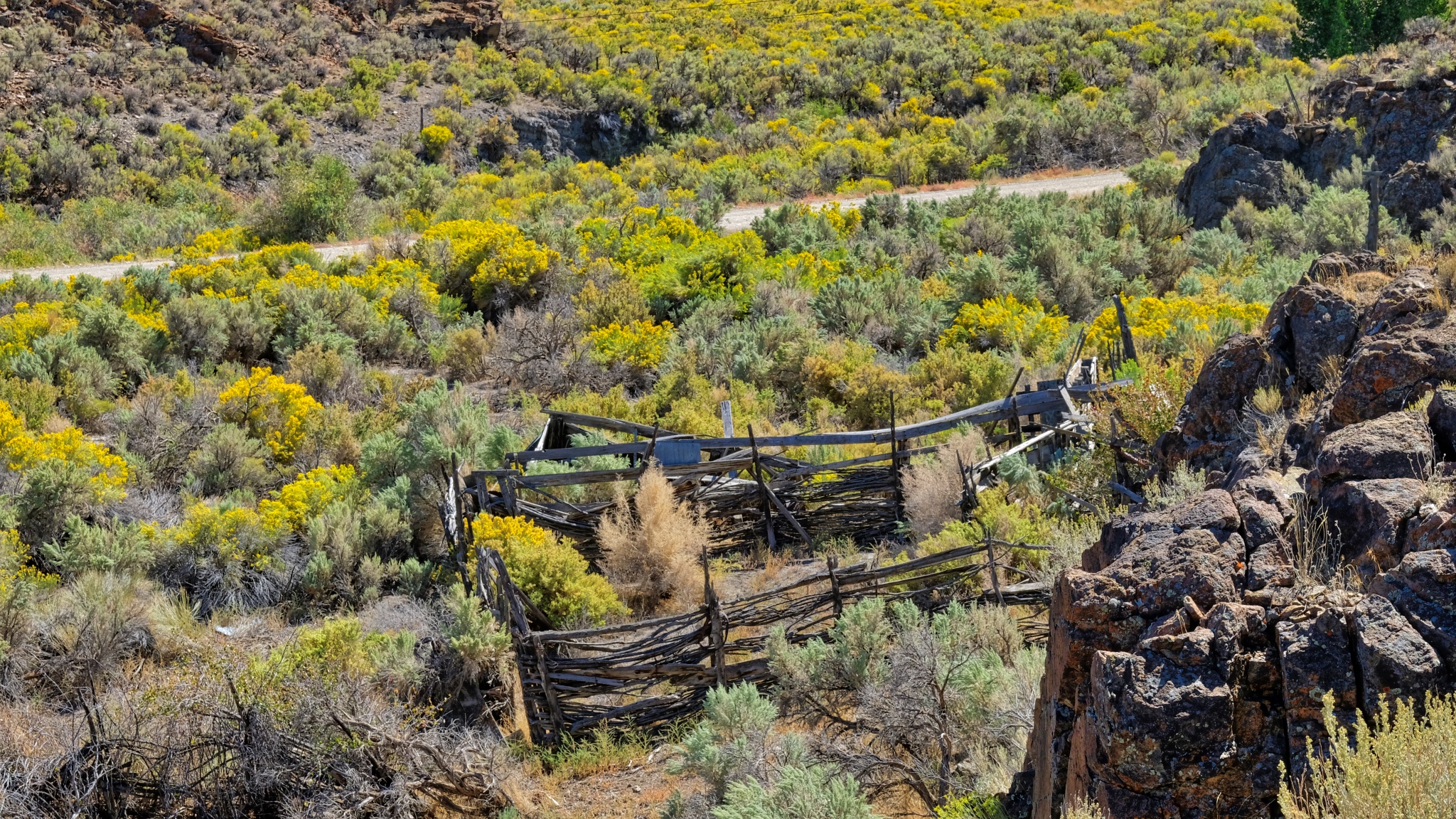 Hopes of ranching left behind with the decaying split beams.
Hopes of ranching left behind with the decaying split beams.
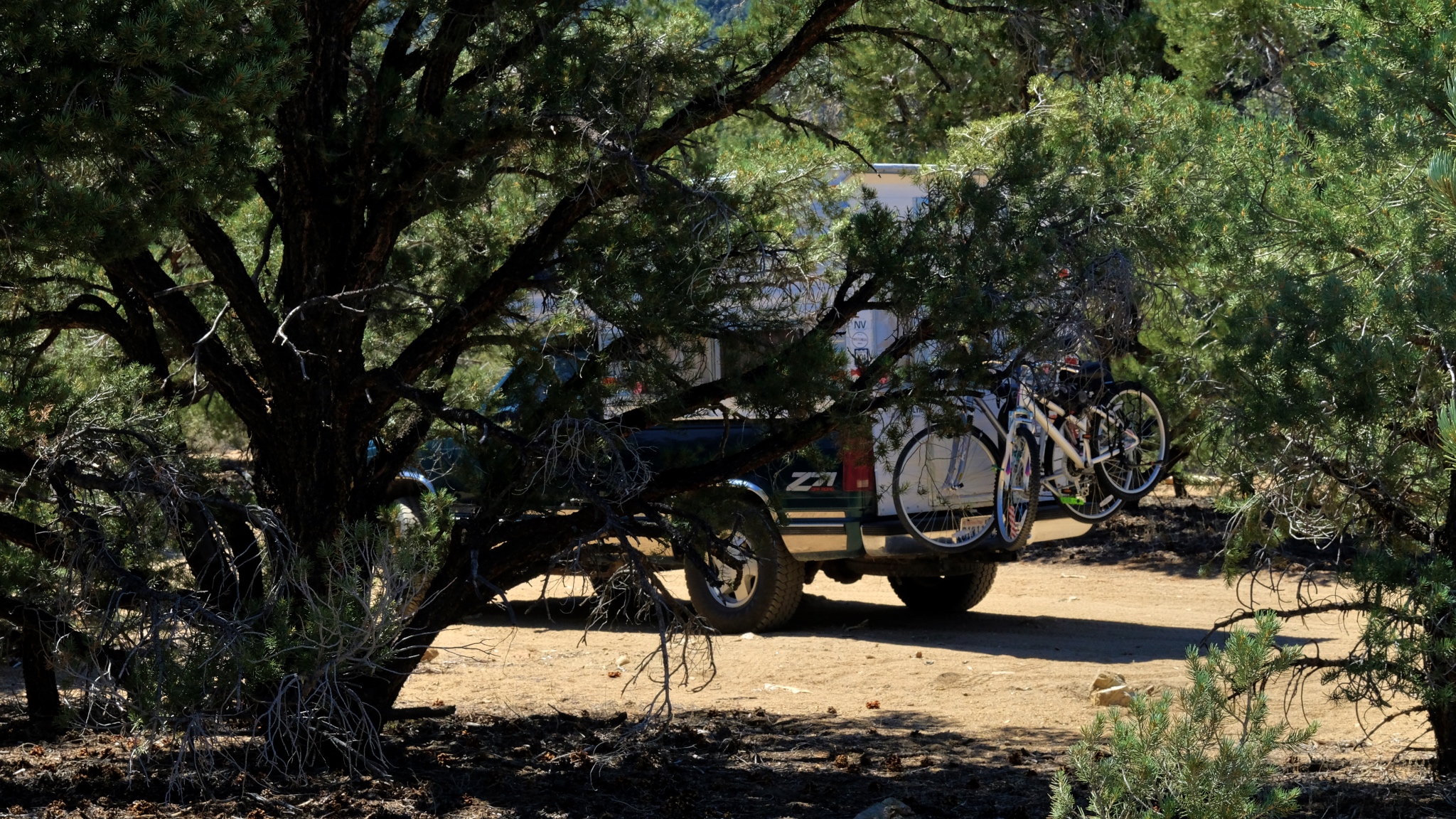 It is good to have four wheel drive when nature calls.
It is good to have four wheel drive when nature calls.
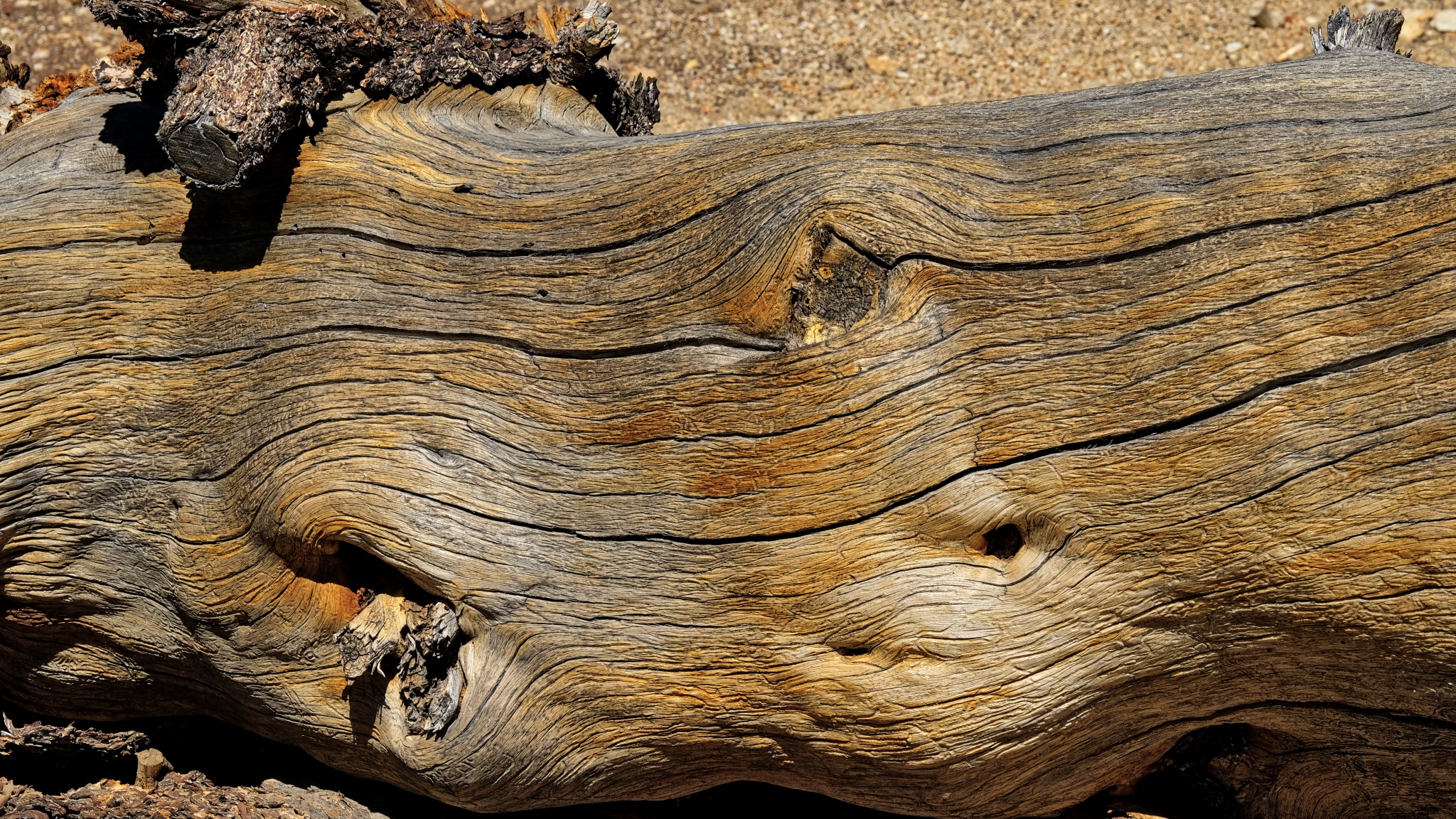 An ancient bristle cone pine trunk.
An ancient bristle cone pine trunk.
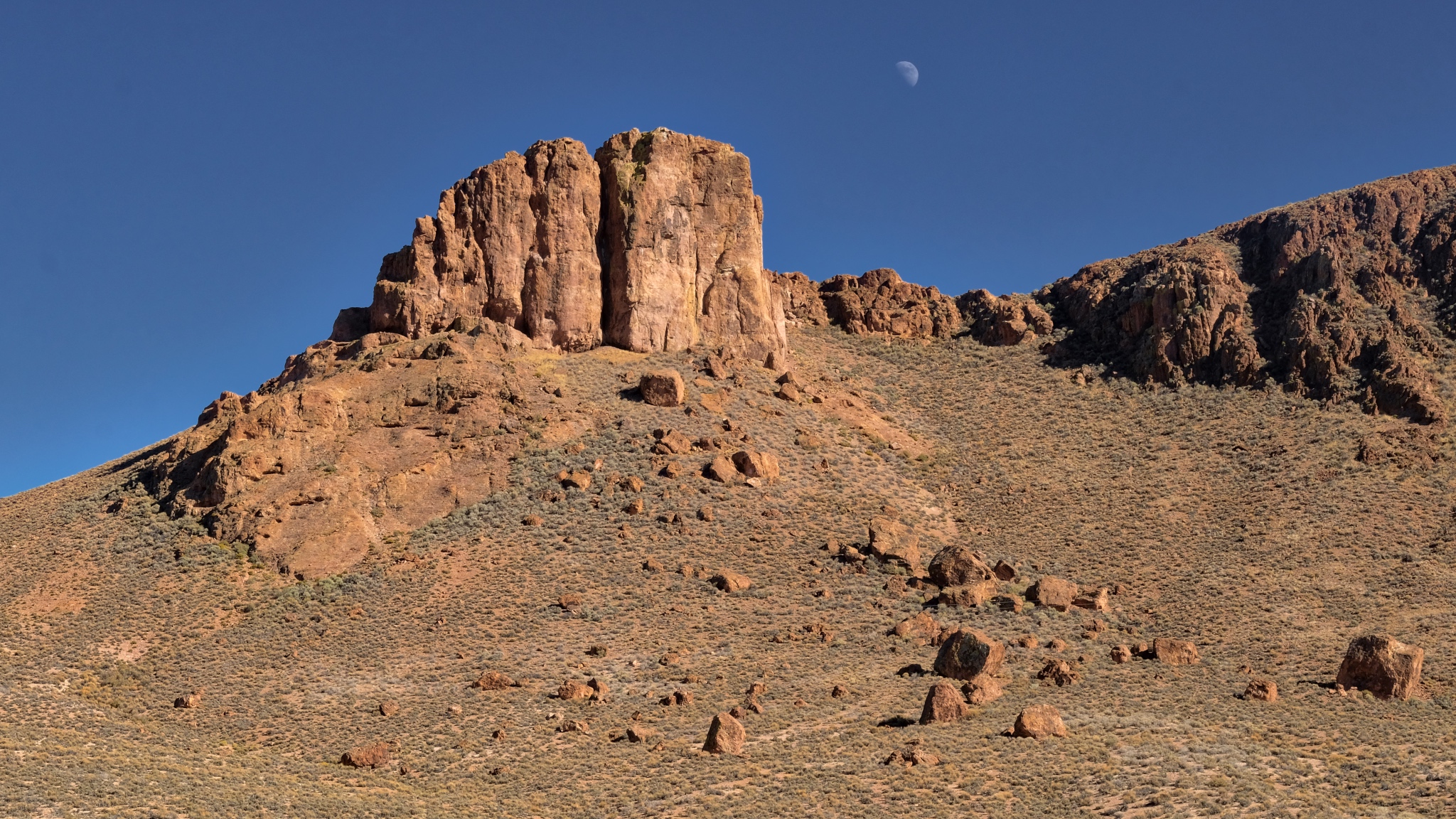 A left behind moon on a clear Nevada morning.
A left behind moon on a clear Nevada morning.
 A solar reflector energy farm way out in the desert. Amazing technology . . . you could almost smell the fried birds from the road!
A solar reflector energy farm way out in the desert. Amazing technology . . . you could almost smell the fried birds from the road!
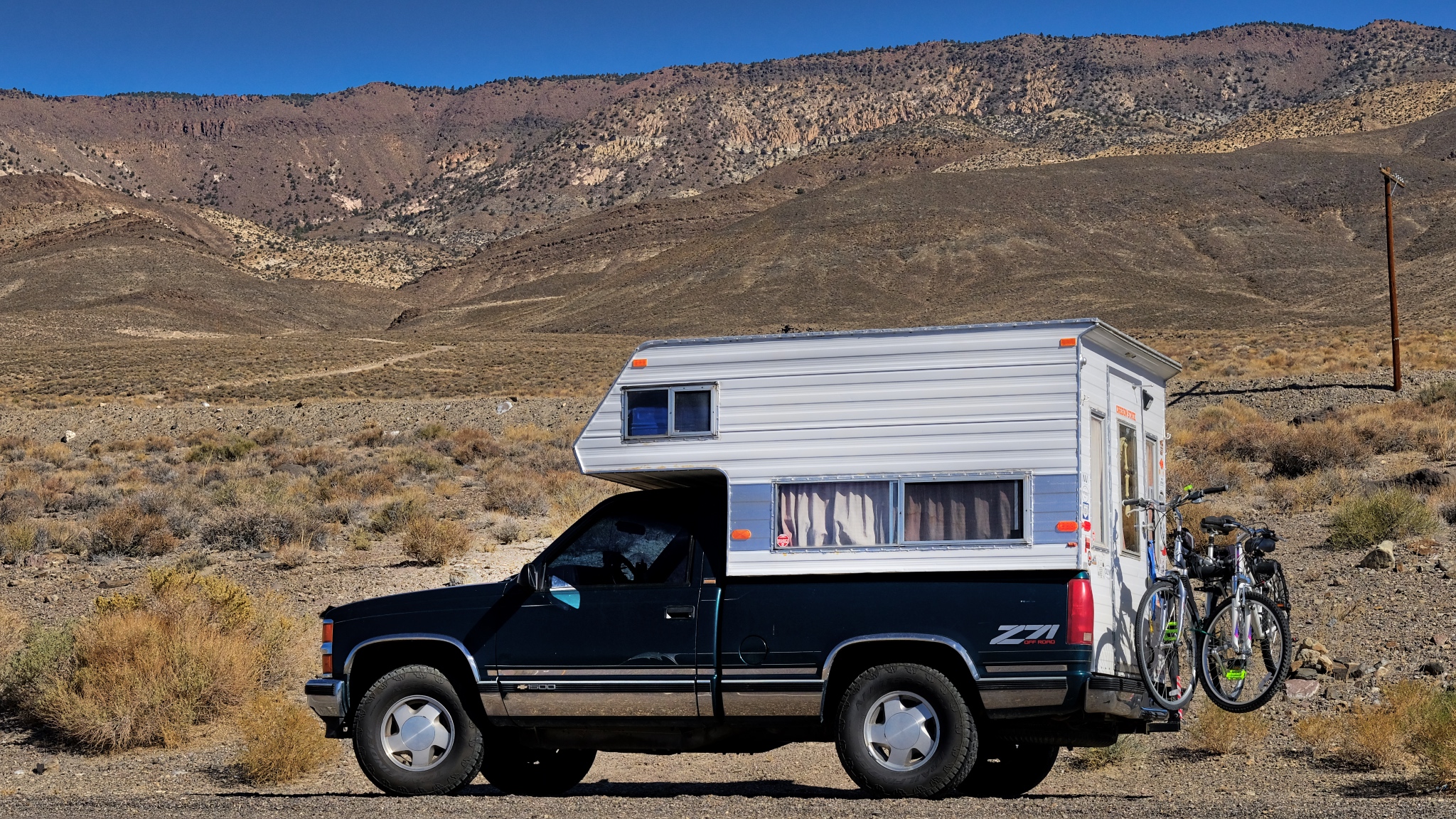 Loving my life on the road!
Loving my life on the road!
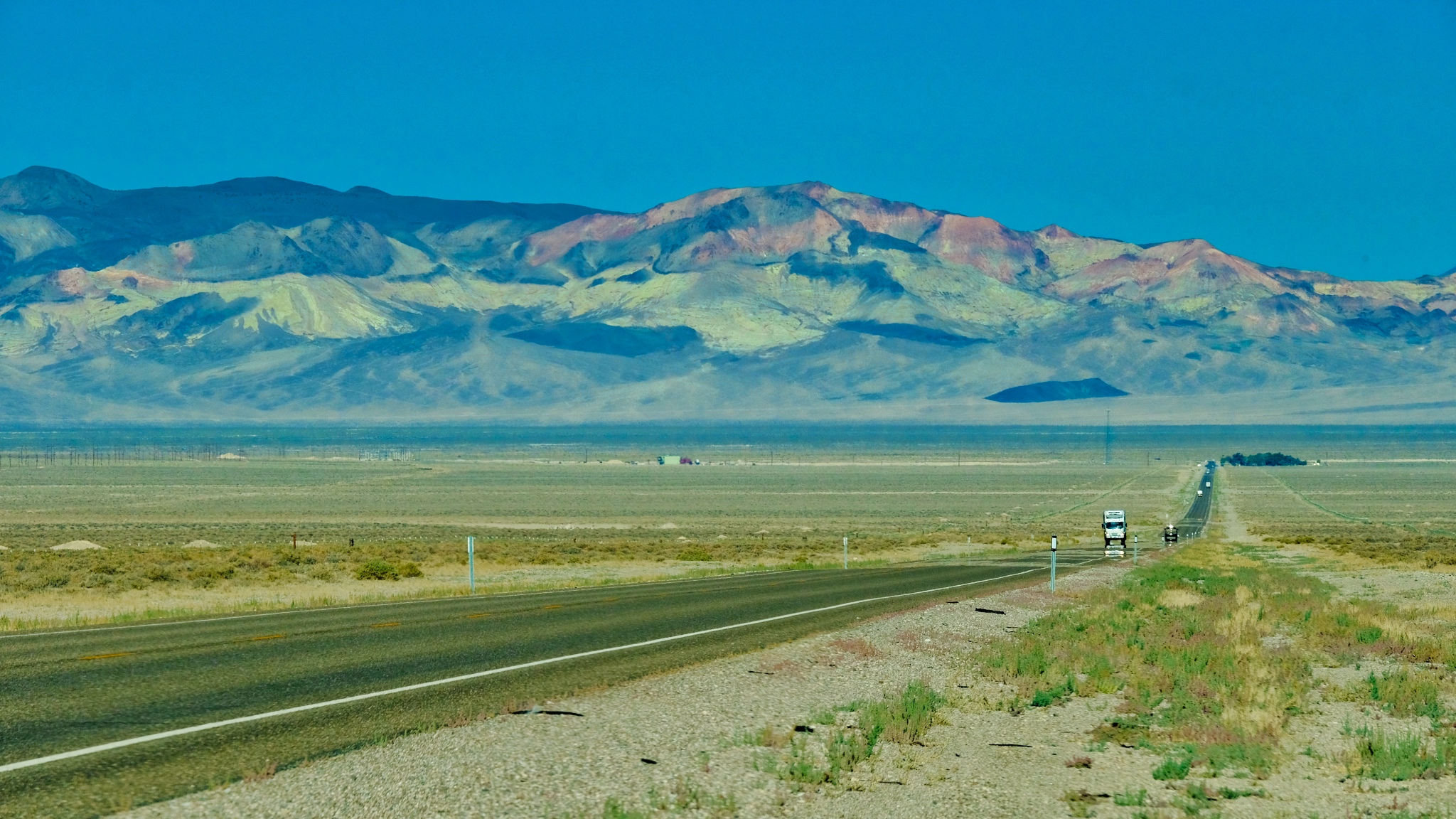 A long road to an other abandoned mountainside mine.
A long road to an other abandoned mountainside mine.
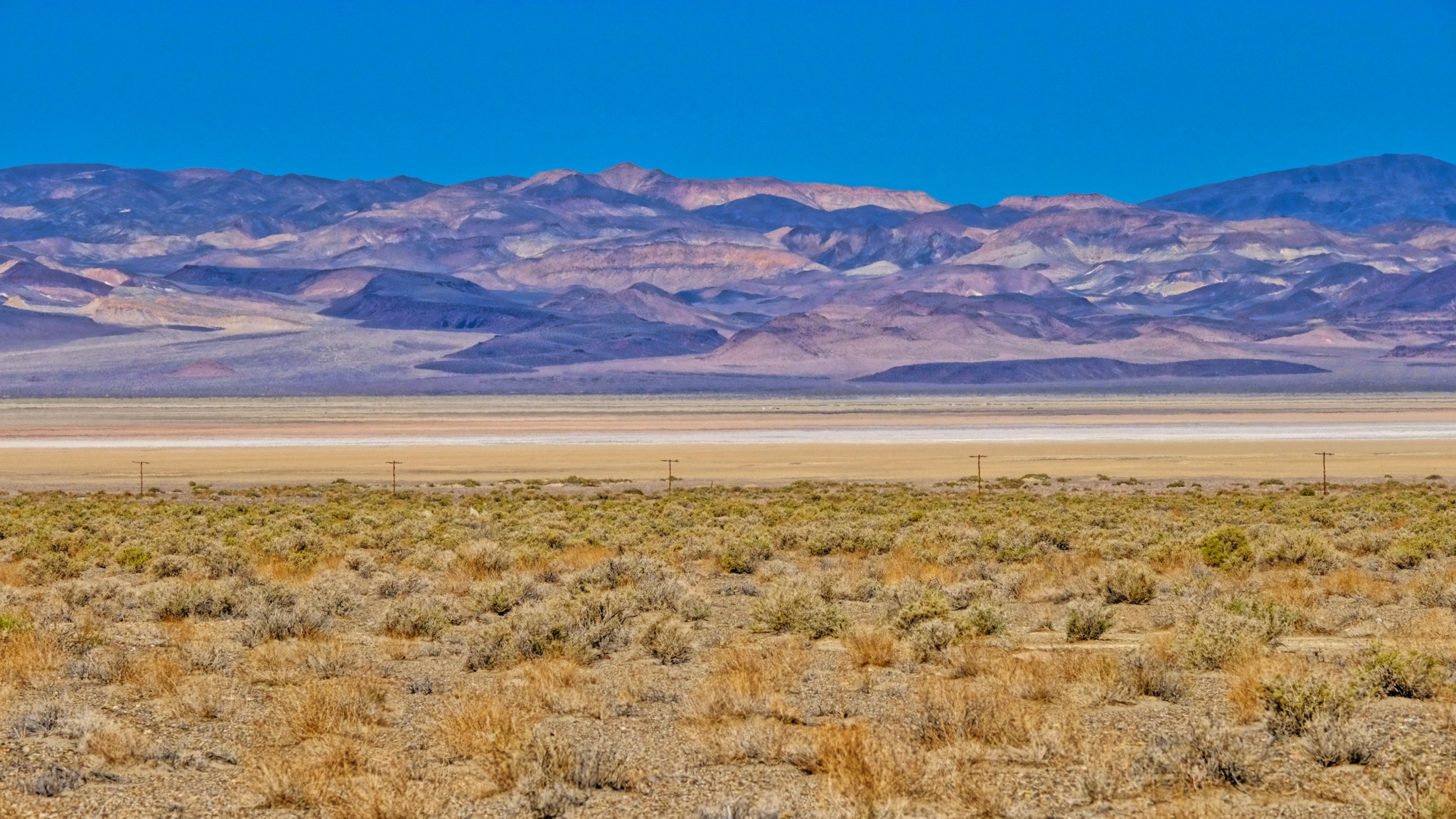 Scrub brush, dry lake, and mineral rich mountains.
Scrub brush, dry lake, and mineral rich mountains.
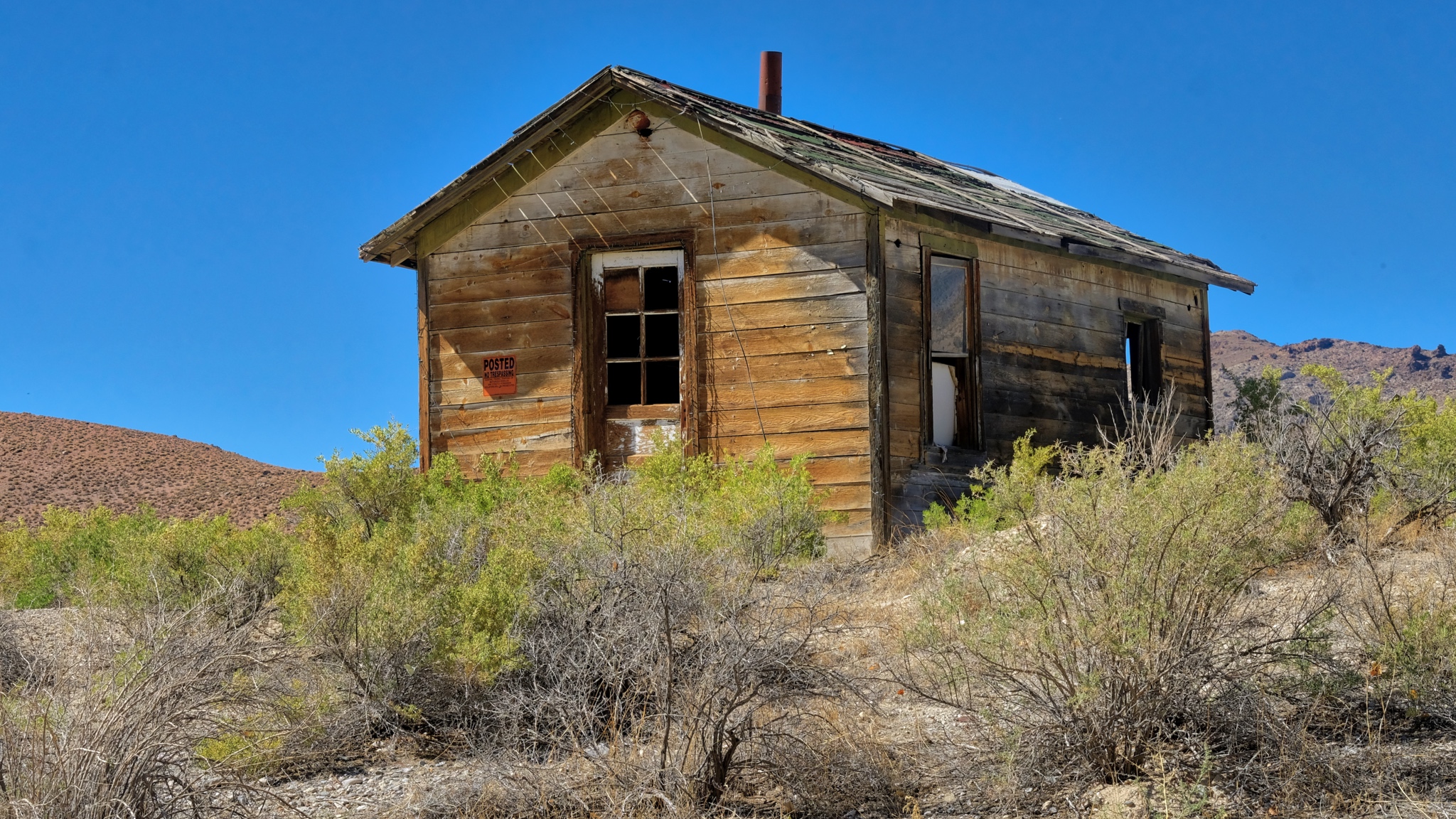 With so few structures around, I stopped at each one . . .
With so few structures around, I stopped at each one . . .
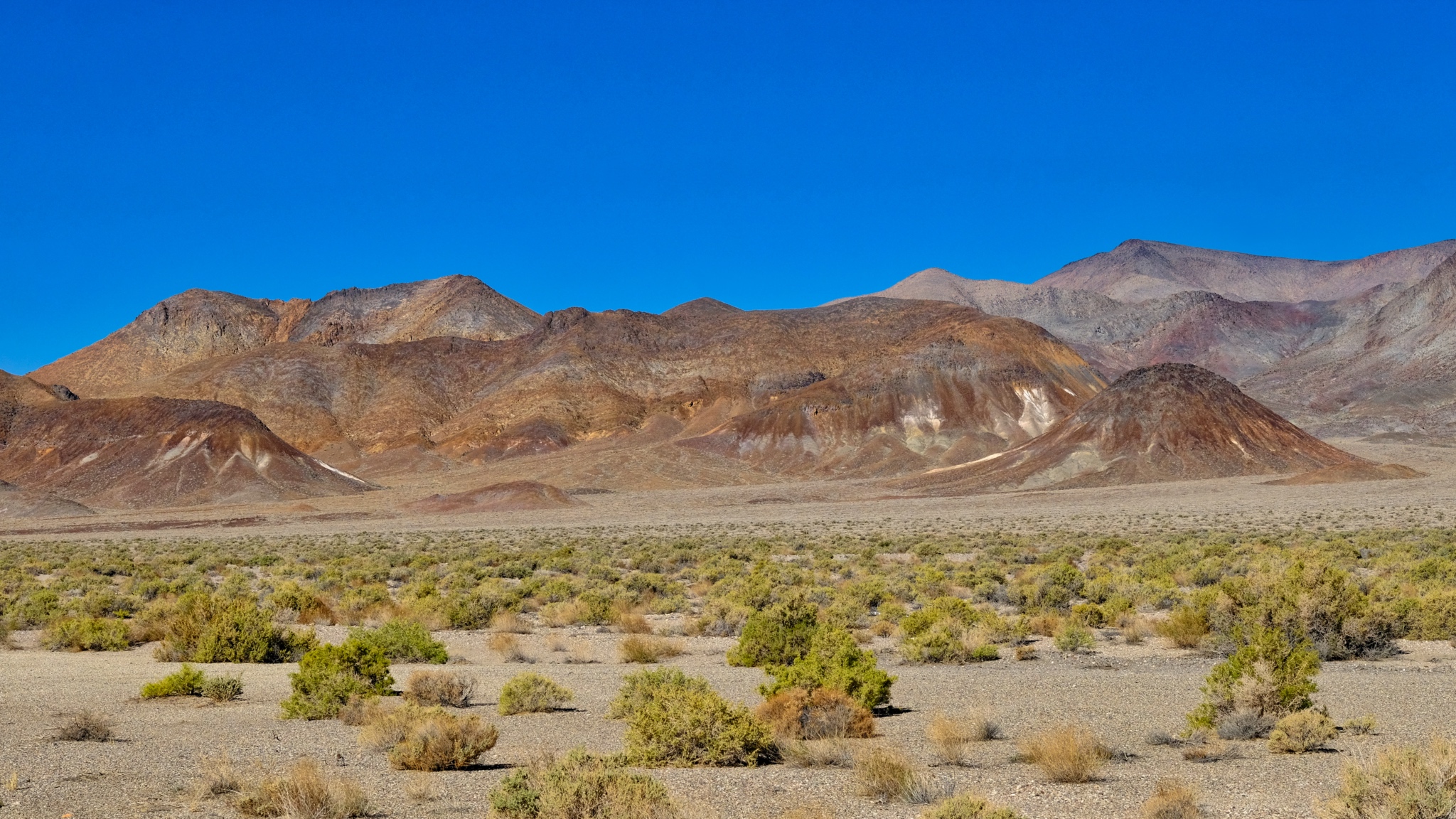 Mineral rich hills . . . another abandoned mining operation.
Mineral rich hills . . . another abandoned mining operation.
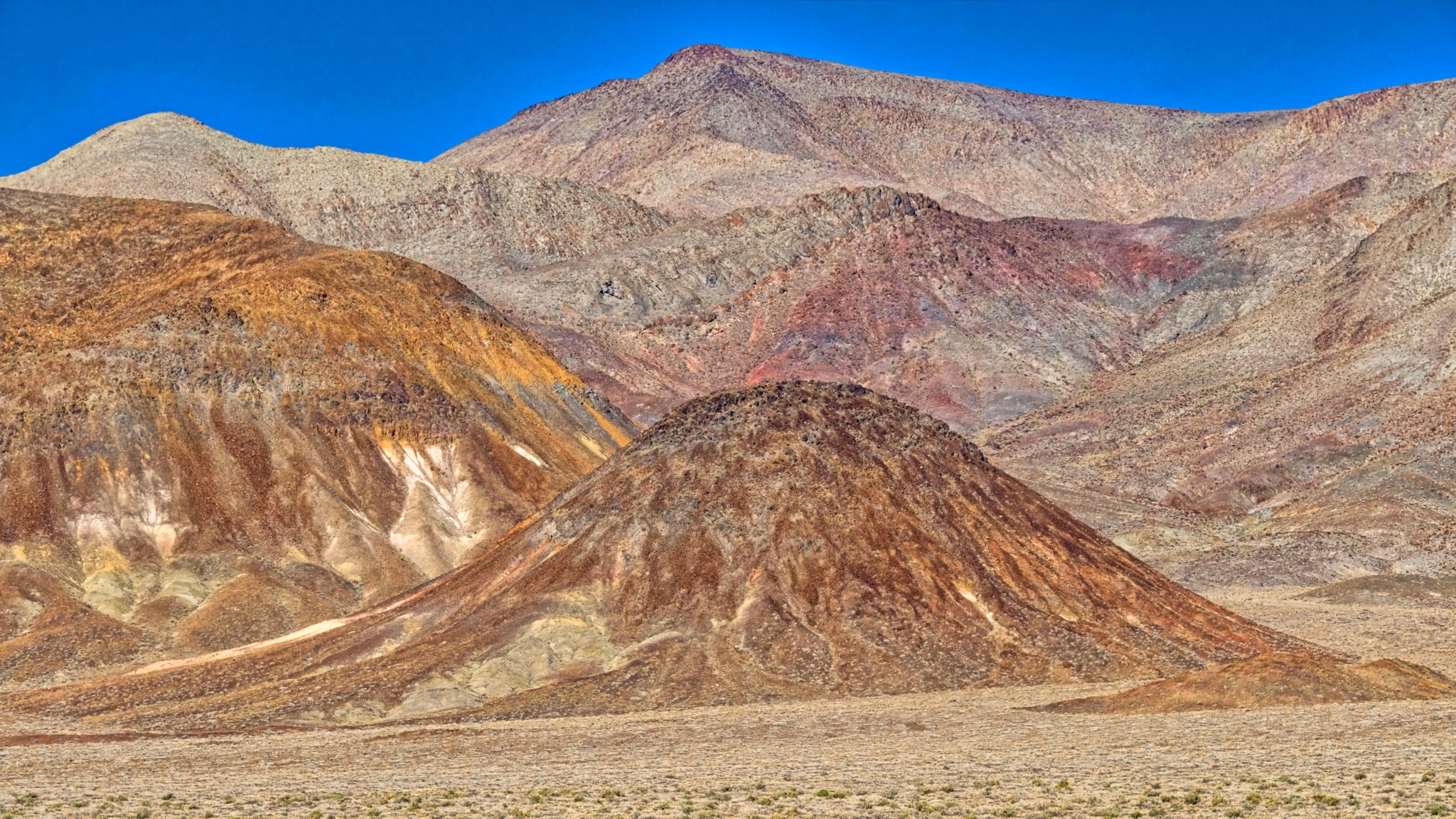 Strange hills left behind to weather after mining. This looks like a tungsten vein.
Strange hills left behind to weather after mining. This looks like a tungsten vein.
 The colors, shapes, and textures of these mined hills were simply fantastic.
The colors, shapes, and textures of these mined hills were simply fantastic.
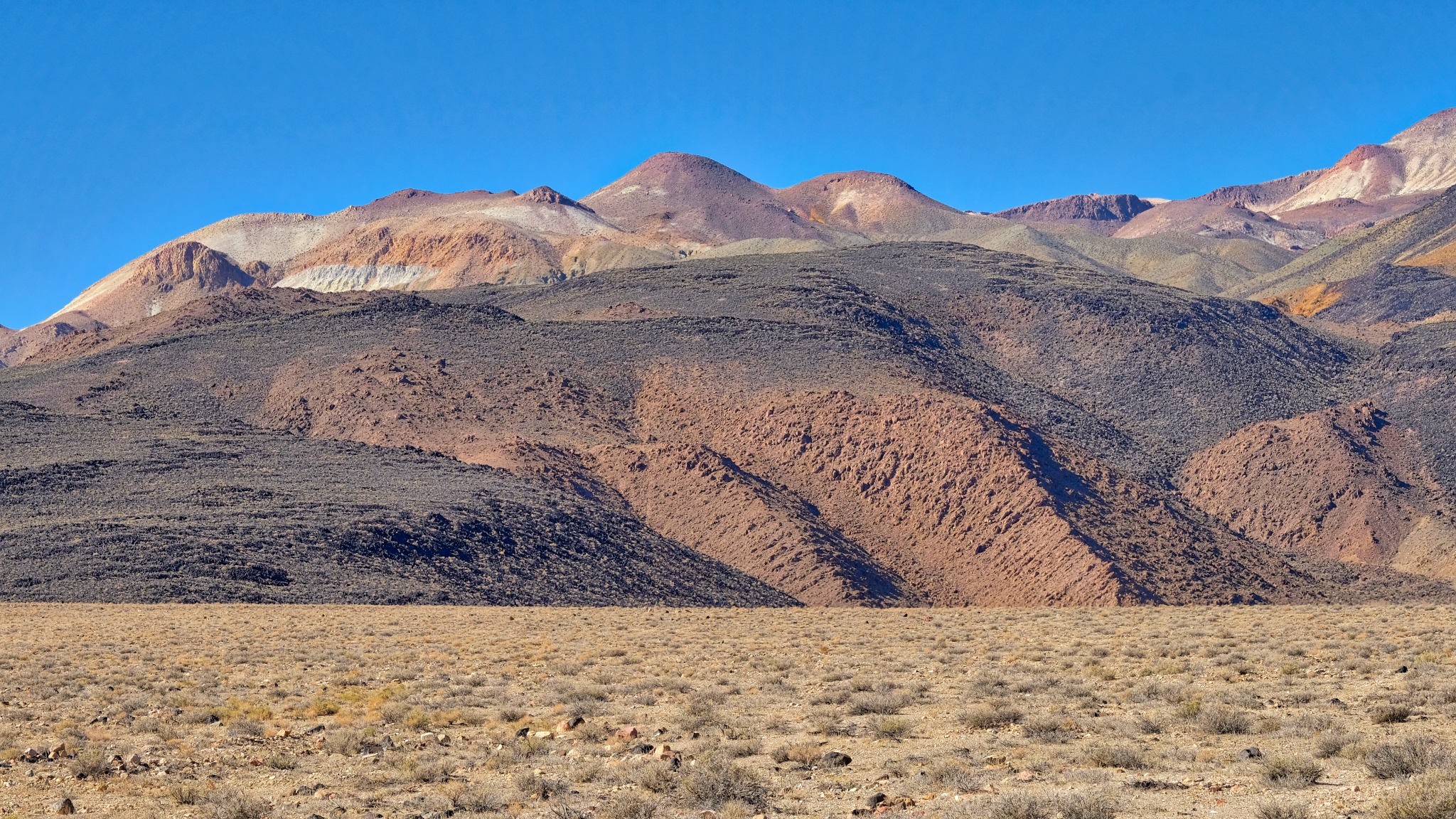 Geology everywhere (of course).
Geology everywhere (of course).
 Along the highway a gypsum deposit.
Along the highway a gypsum deposit.
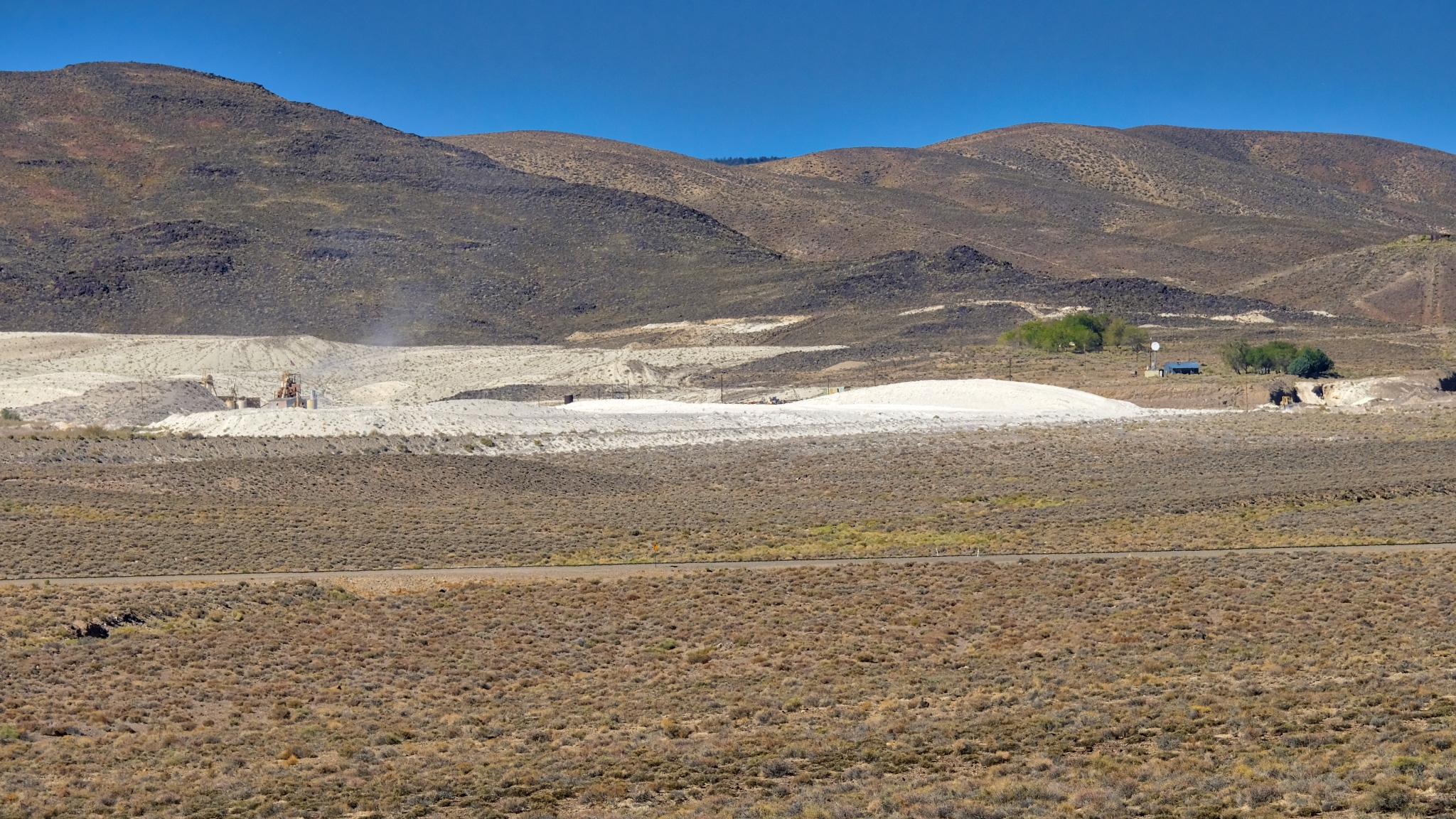 An active gypsum mine.
An active gypsum mine.
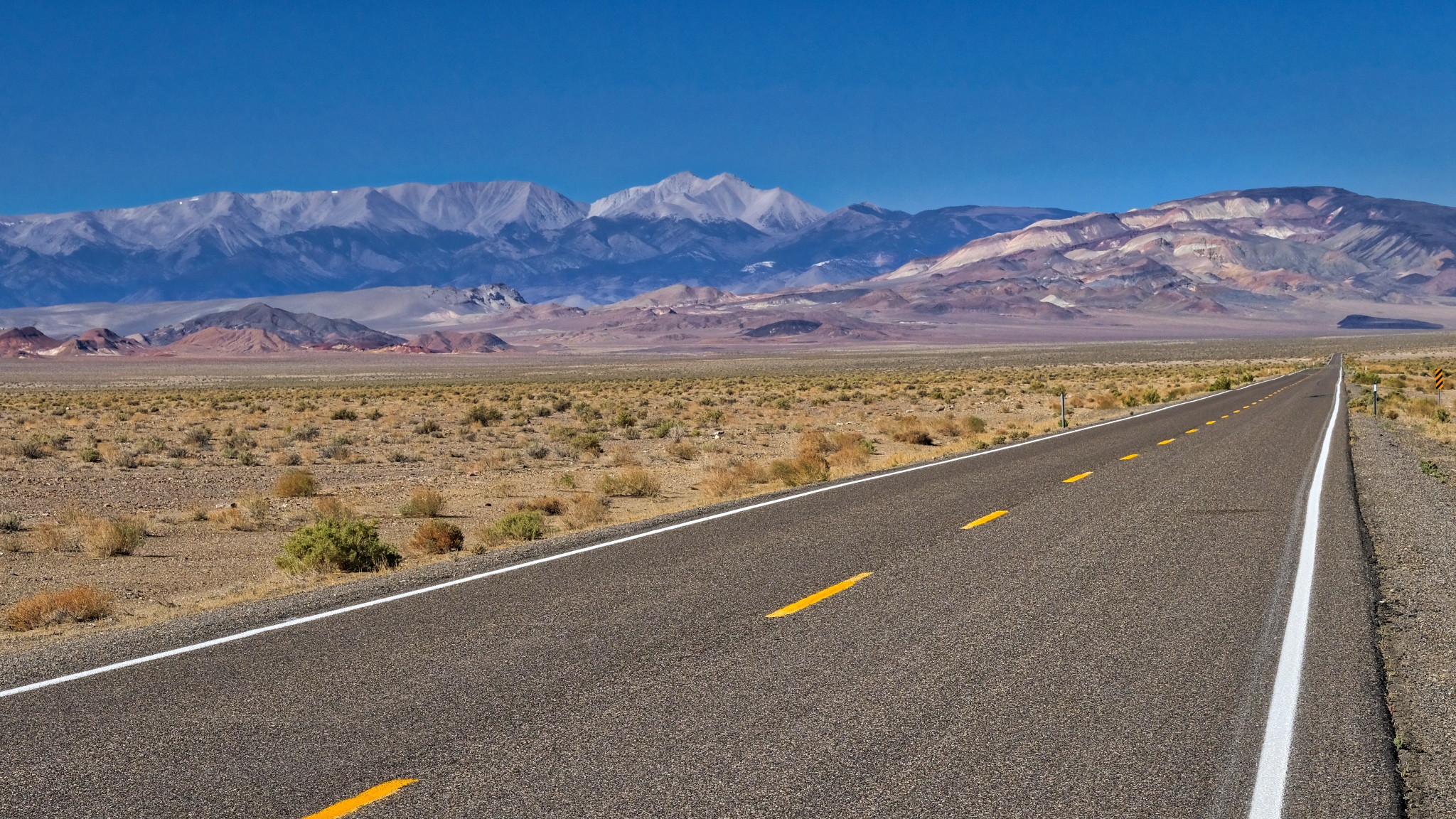 Coming up on the Boundary Range, which separates Nevada from California.
Coming up on the Boundary Range, which separates Nevada from California.
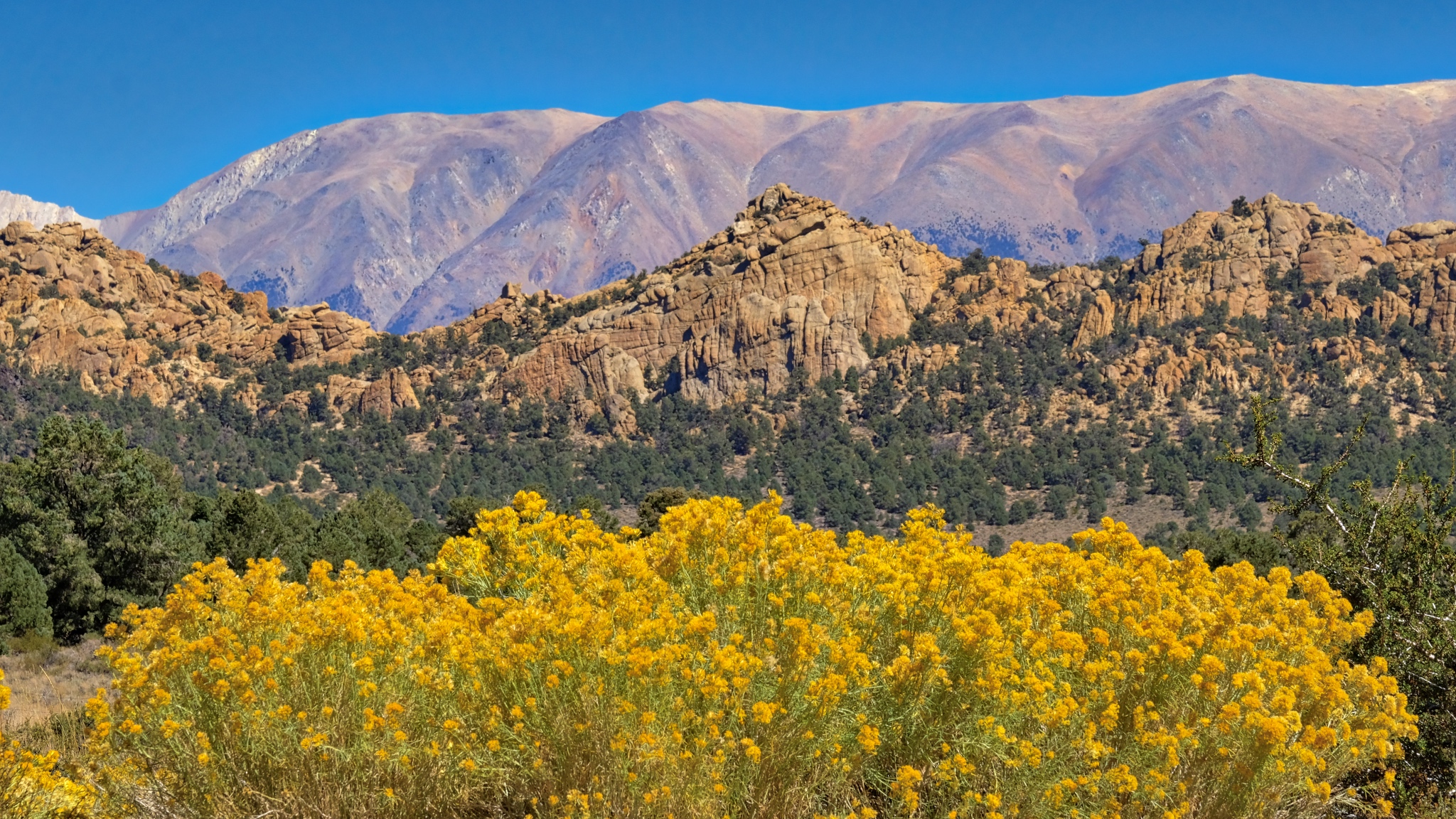 Some stunning flowering scenes as I began to gain in elevation into the Boundary Range.
Some stunning flowering scenes as I began to gain in elevation into the Boundary Range.
 Up and over a mountain pass through a sea of yellow!
Up and over a mountain pass through a sea of yellow!
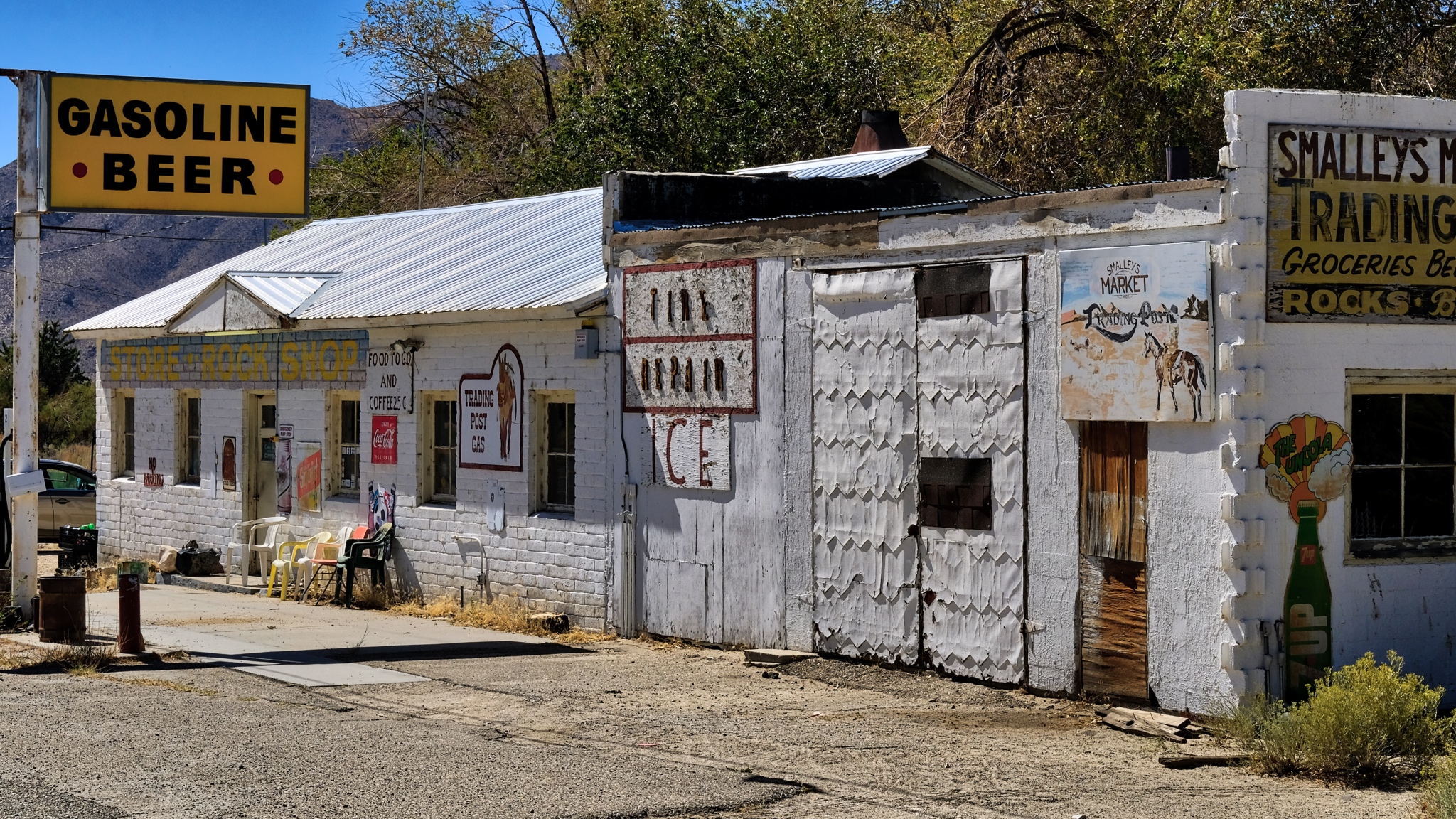 There were a few wide spots in the road along the way . . . here in Benton, California.
There were a few wide spots in the road along the way . . . here in Benton, California.
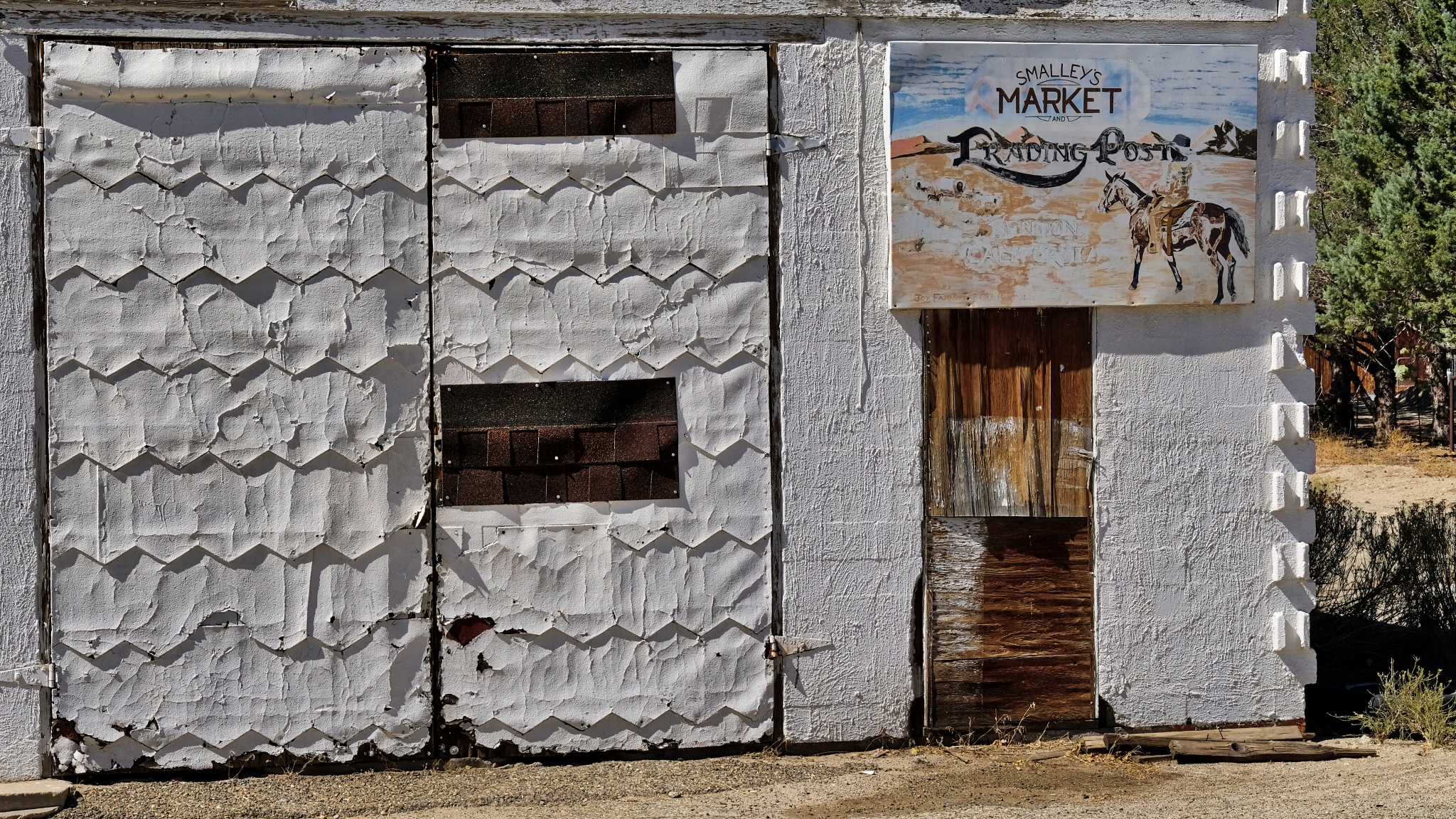 Fabulous textures of age.
Fabulous textures of age.
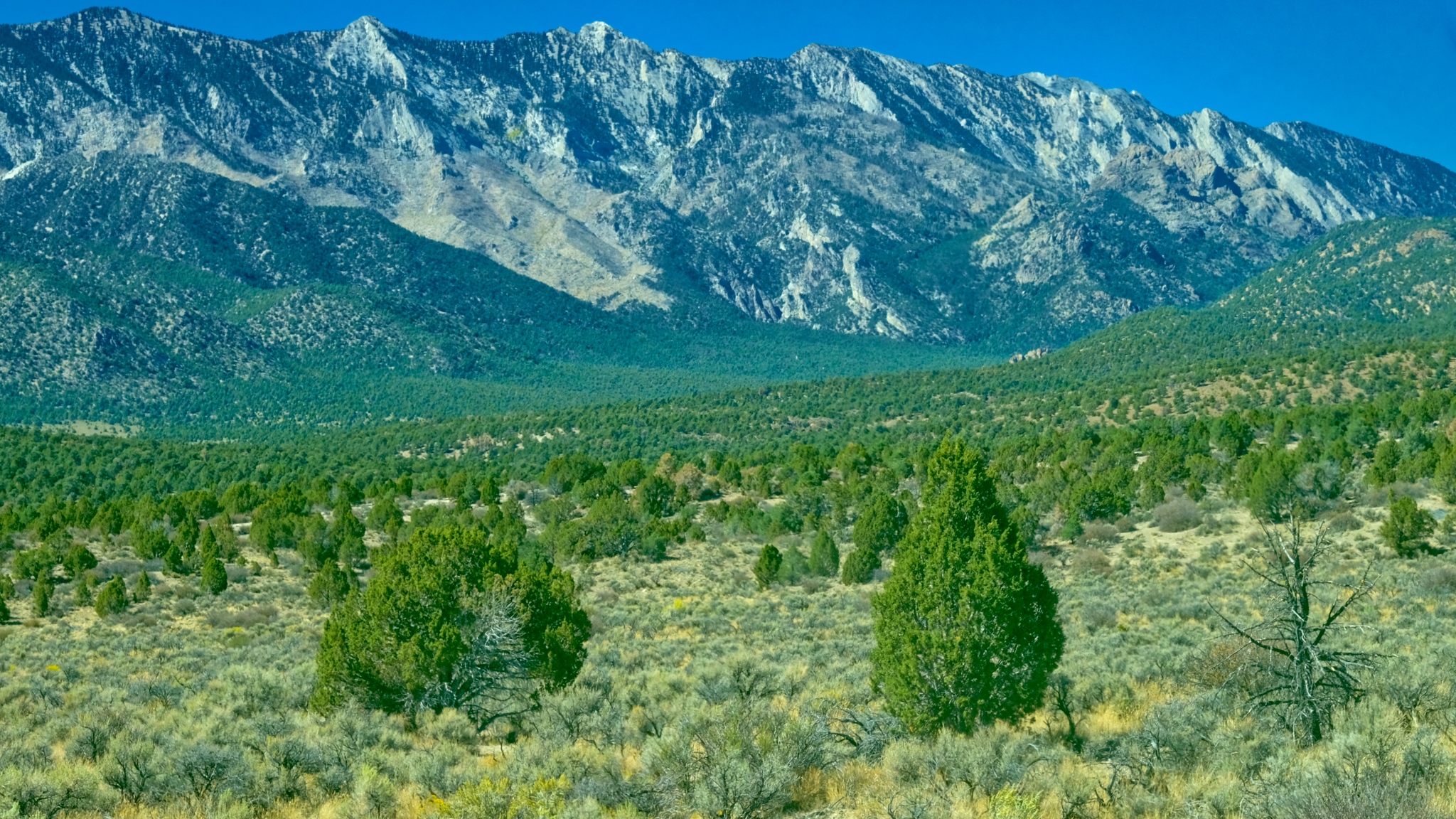 After Benton (and Benton Hot Springs), the GPS took me down 120 miles of gravel road to my destination. I was very happy about it too!
After Benton (and Benton Hot Springs), the GPS took me down 120 miles of gravel road to my destination. I was very happy about it too!
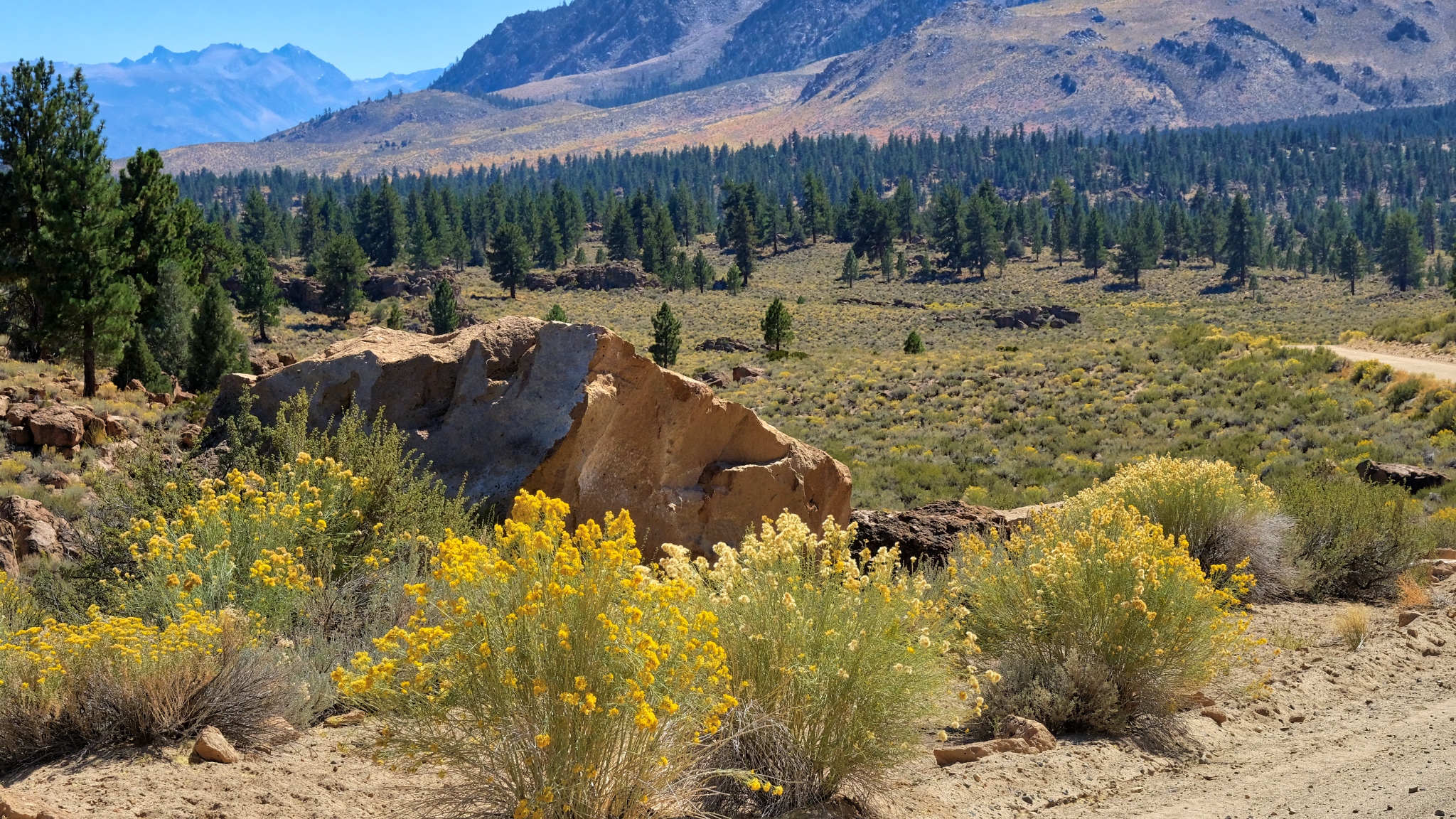 100 miles of this! I took my time.
100 miles of this! I took my time.
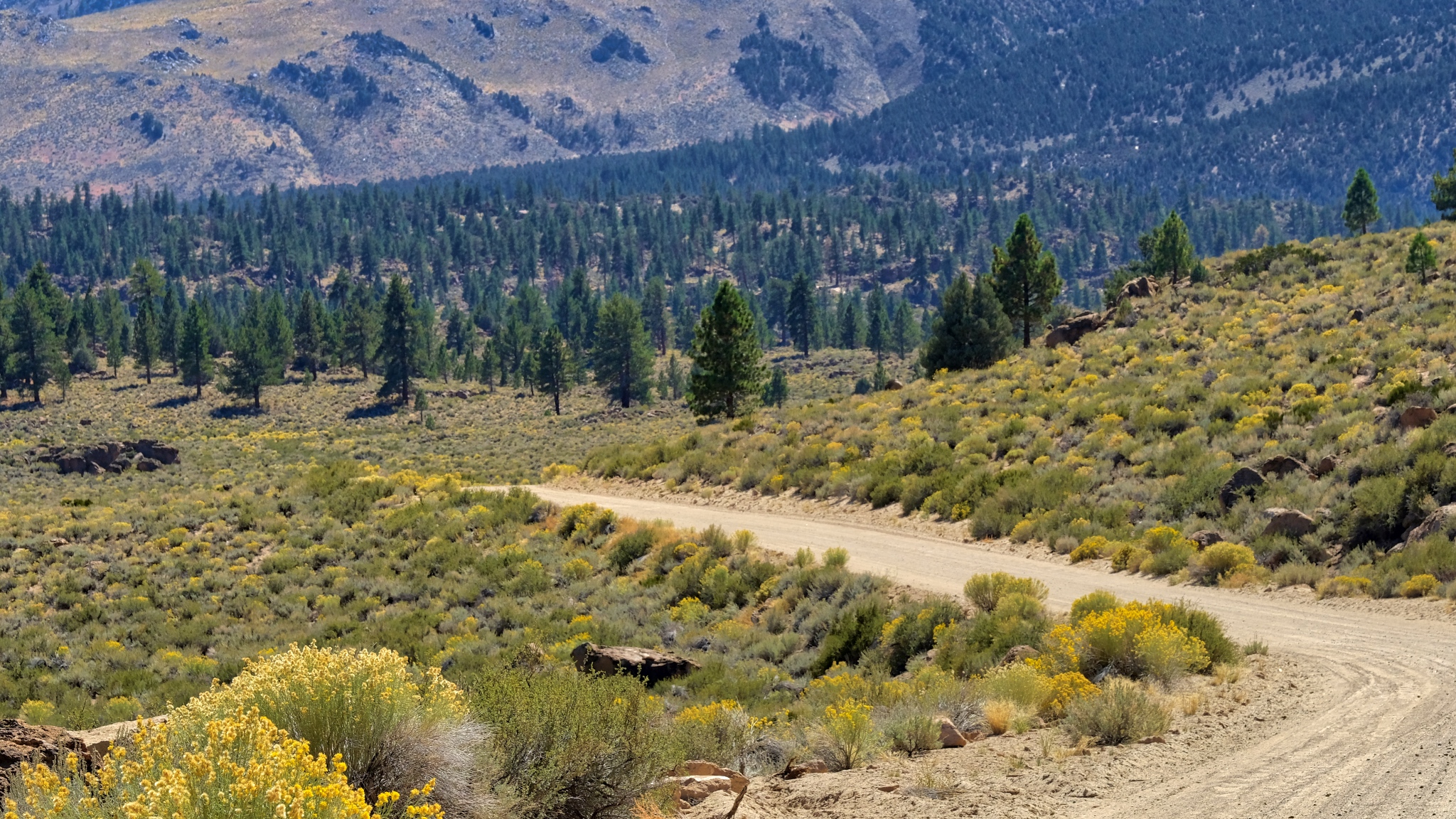 I drove for two hours on this gravel road and did not encounter a single other vehicle.
I drove for two hours on this gravel road and did not encounter a single other vehicle.
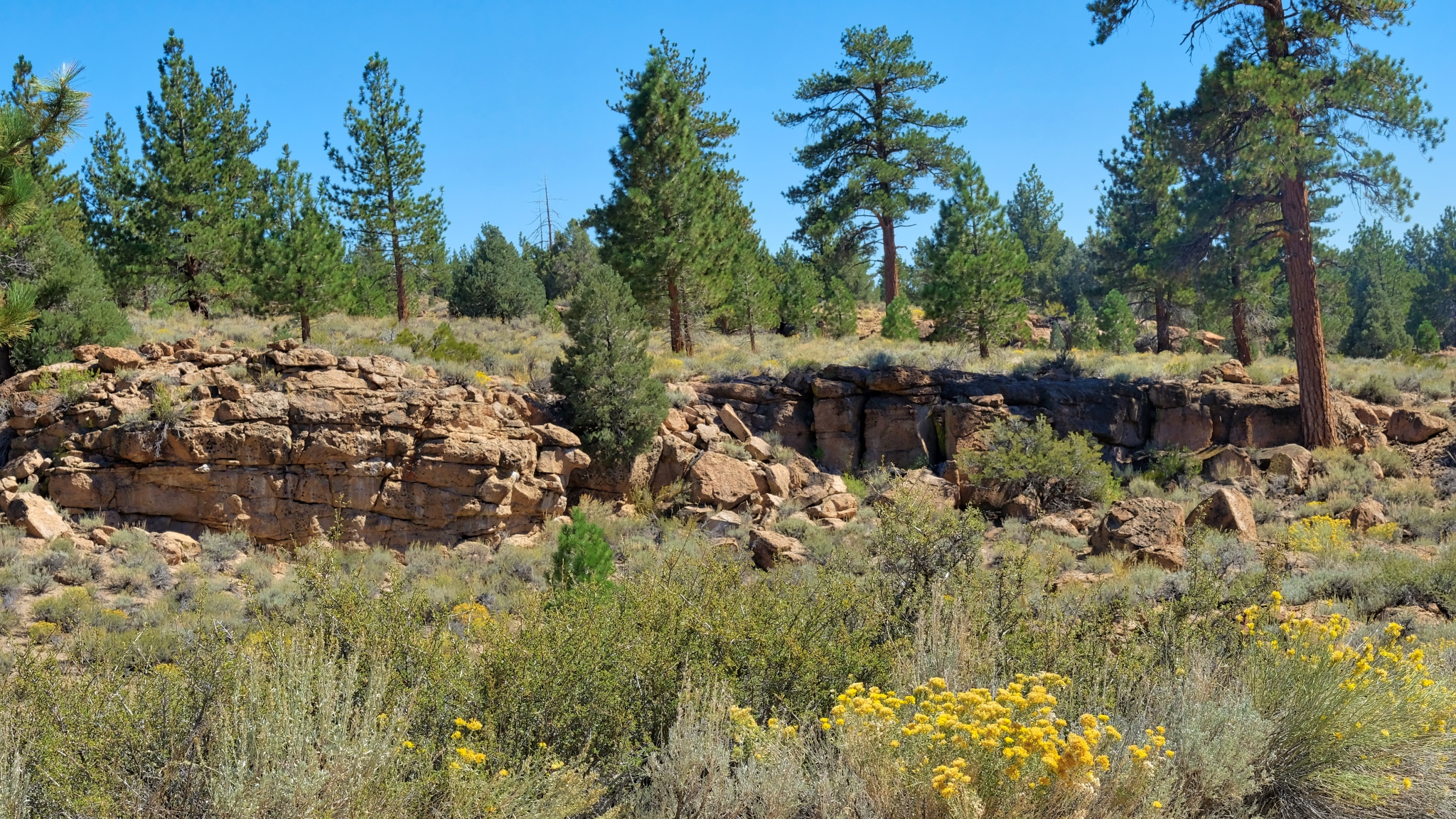 The trees became larger the more altitude I gained.
The trees became larger the more altitude I gained.
 Up and over and up and over many steep passes . . . .
Up and over and up and over many steep passes . . . .
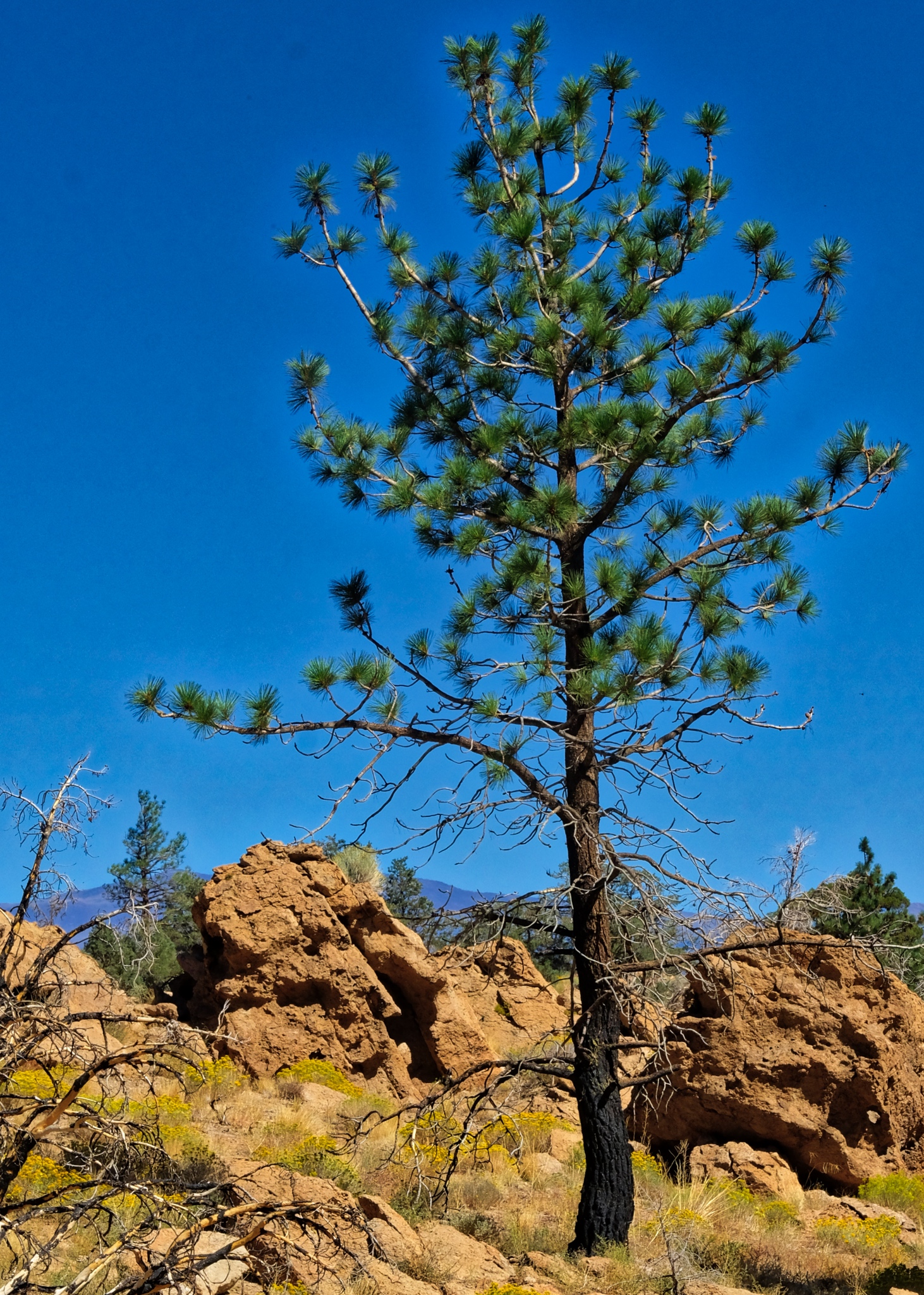 And on such a beautiful day . . . .
And on such a beautiful day . . . .
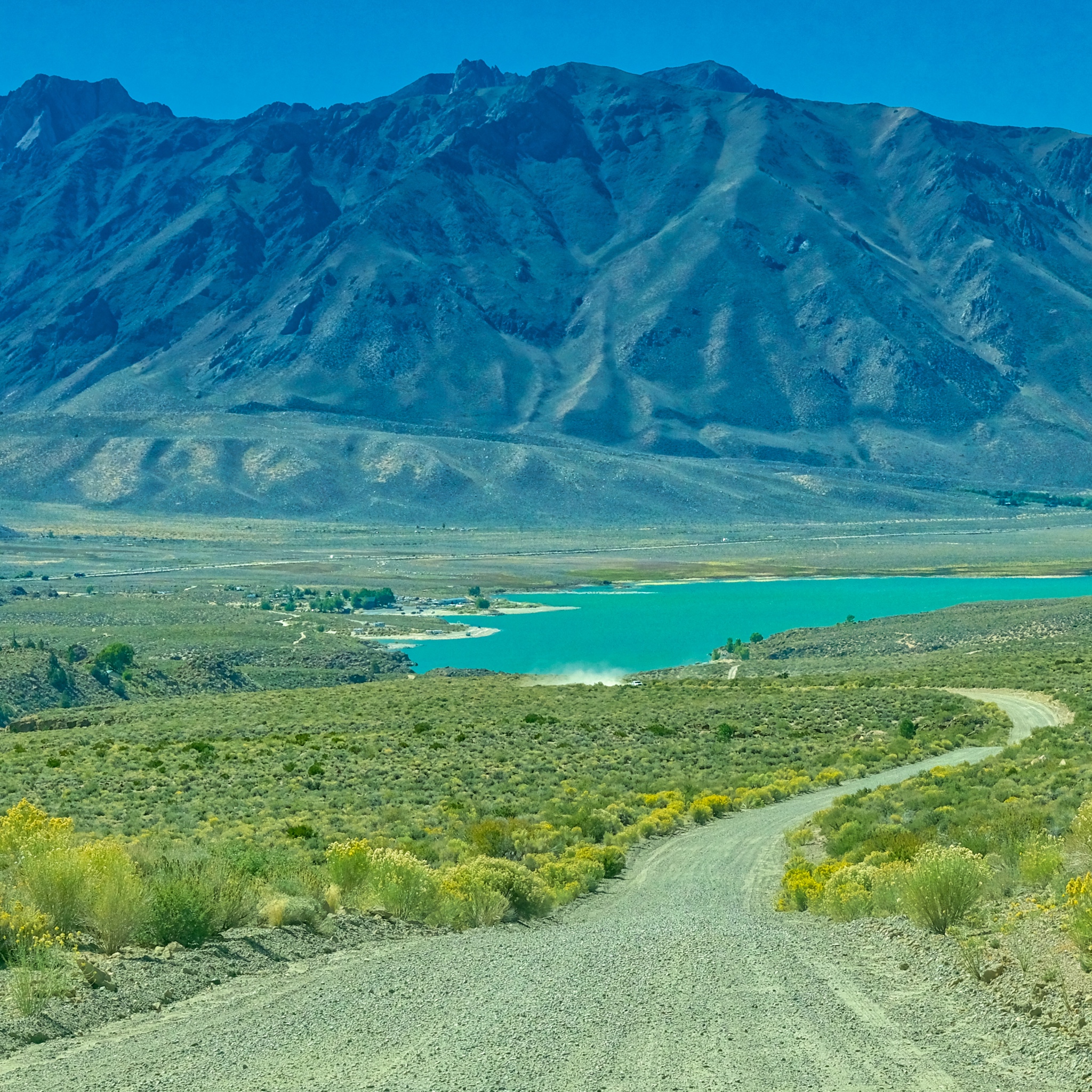 After two hours on Owens George Road I crested a hill to see Crowley Lake, just 15 miles from my final destination.
After two hours on Owens George Road I crested a hill to see Crowley Lake, just 15 miles from my final destination.
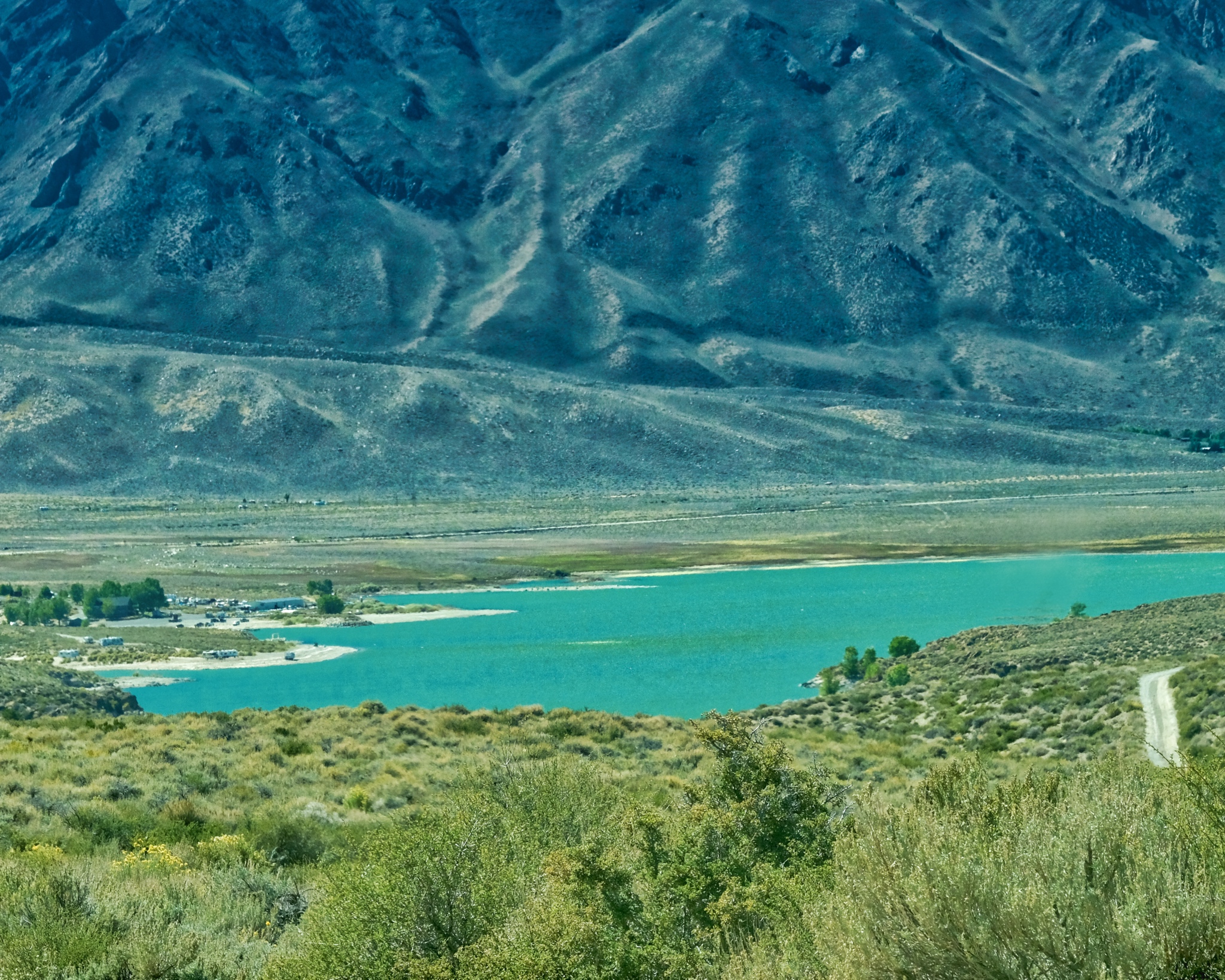 Civilization At Last!!!!!
Civilization At Last!!!!!
 The view approaching Swall Meadows; looking toward Bishop, California in a recent burn.
The view approaching Swall Meadows; looking toward Bishop, California in a recent burn.
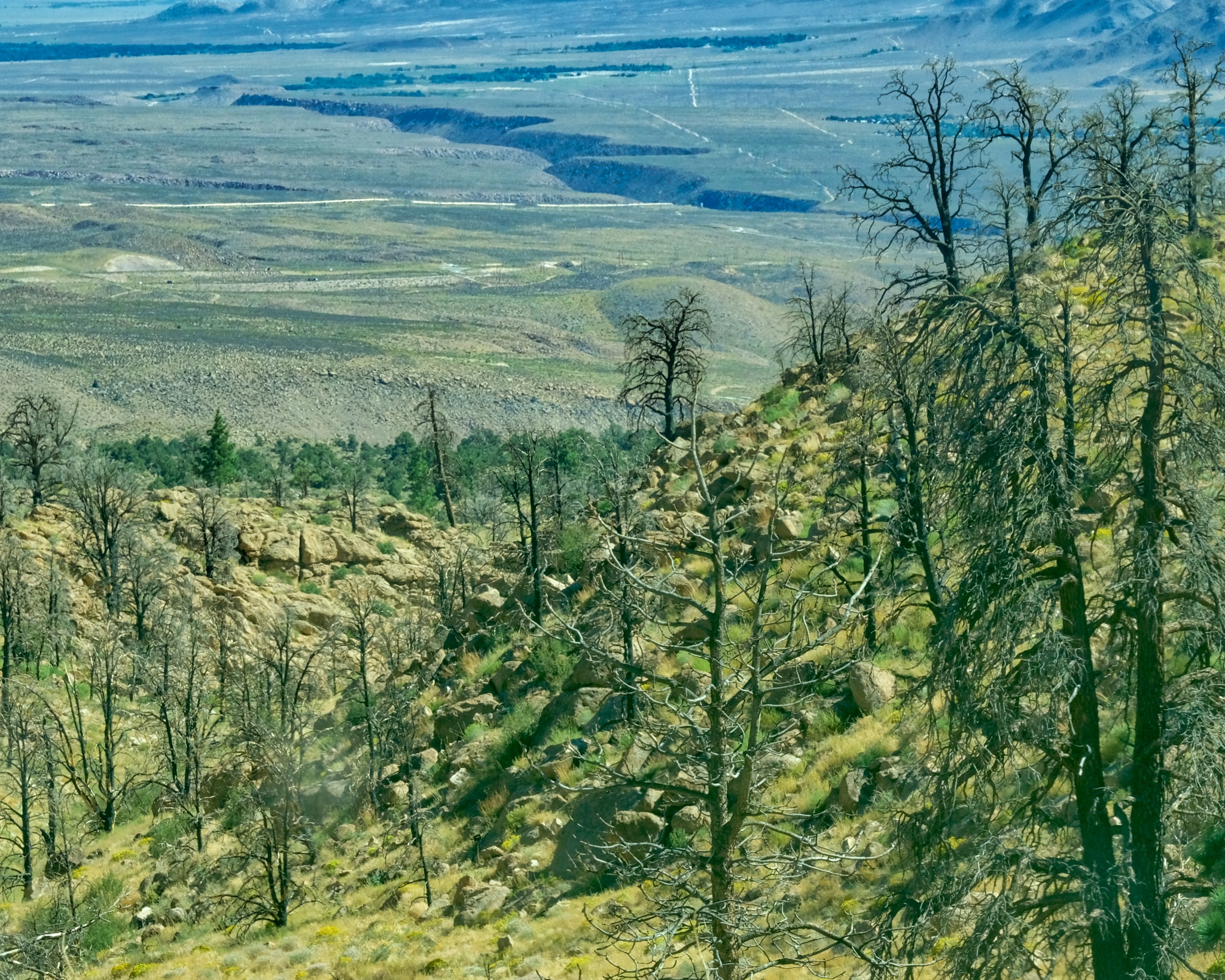 Near Swall Meadows where I would base myself for my next adventure: camping up in The Buttermilk Country.
Near Swall Meadows where I would base myself for my next adventure: camping up in The Buttermilk Country.
Road Trip USA: Bodie Ghost Town, California
 Tuesday, January 8, 2019 at 4:23AM
Tuesday, January 8, 2019 at 4:23AM
In June of 2018, as a part of my bigger year-long road trip, my wife and I took a trip from Oregon to the Grand Canyon. Along the way we stopped at whatever seemed interesting along the way.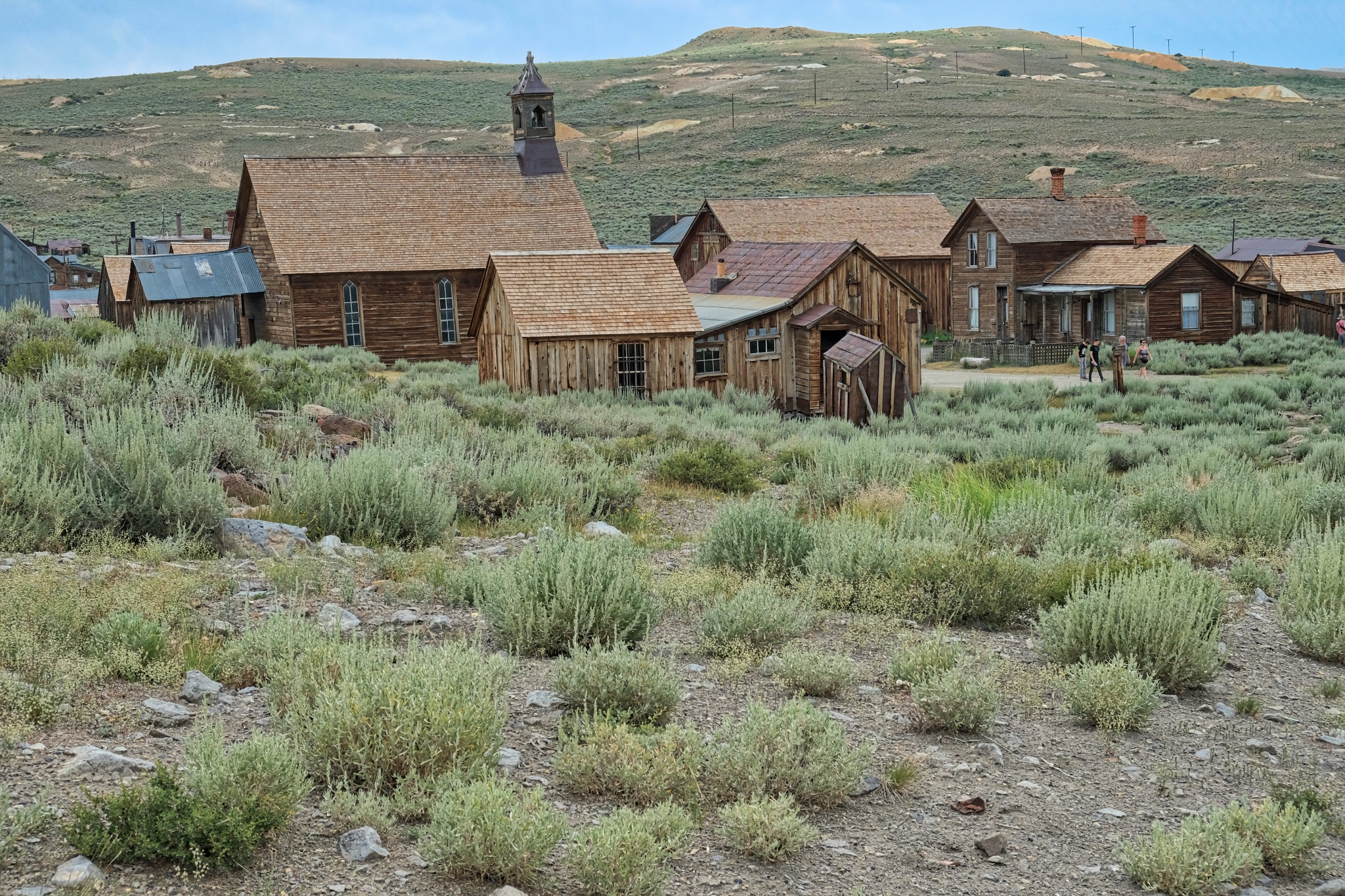 In east-central California, off of US Highway 395, is the old ghost town of Bodie, now a popular and much visited National Monument. It is one of the largest and most complete ghost towns in the USA (Jerome, Arizona is another).
In east-central California, off of US Highway 395, is the old ghost town of Bodie, now a popular and much visited National Monument. It is one of the largest and most complete ghost towns in the USA (Jerome, Arizona is another).
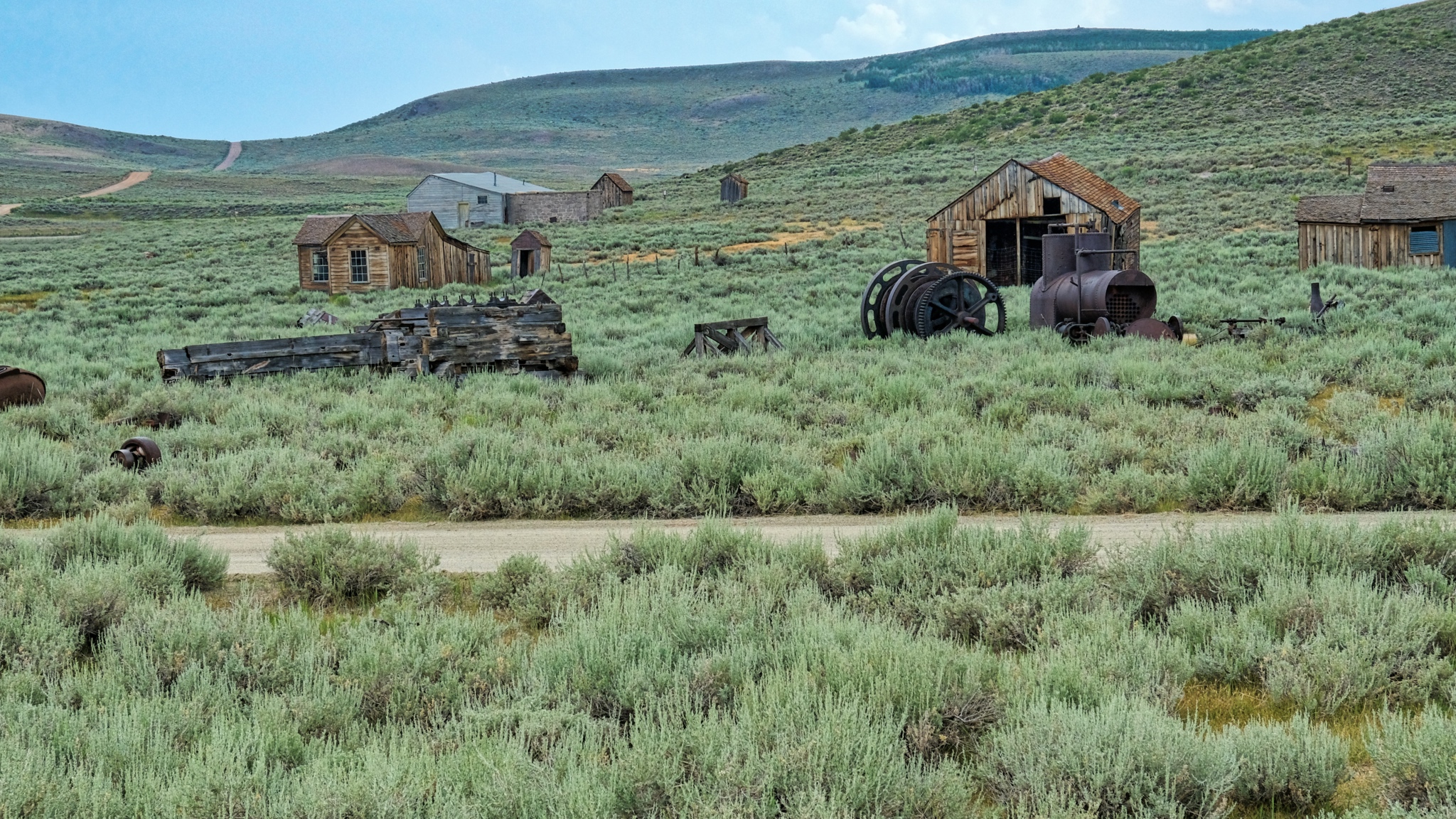 We arrived a the broad site of Bodie in a light drizzle under threatening skies.
We arrived a the broad site of Bodie in a light drizzle under threatening skies.
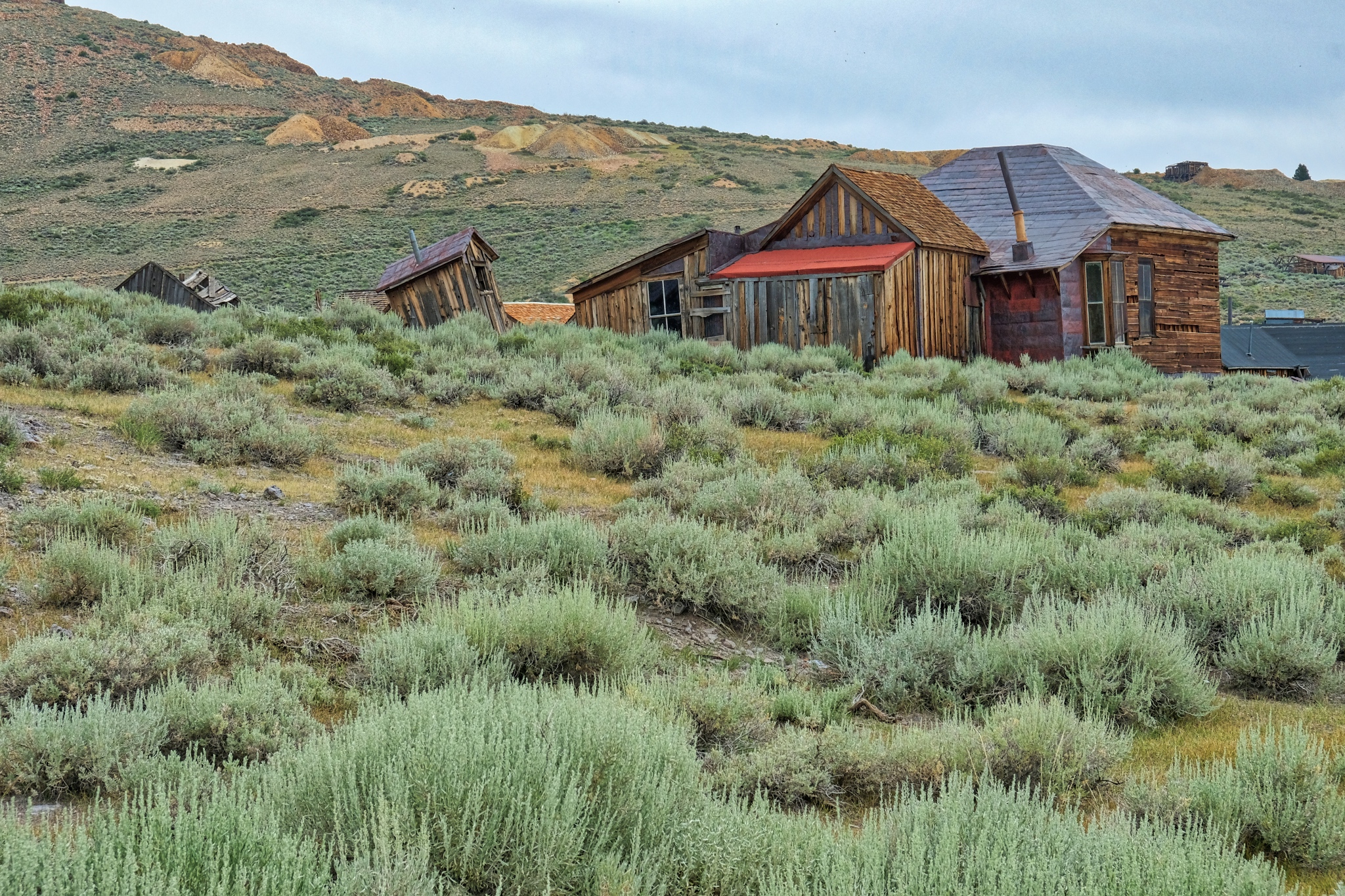 Our first view of Bodie was of scattered shacks and abandoned mine tailings.
Our first view of Bodie was of scattered shacks and abandoned mine tailings.
 And after parking and walking into the cluster of old weathered buildings, the layout of a town started to appear.
And after parking and walking into the cluster of old weathered buildings, the layout of a town started to appear.
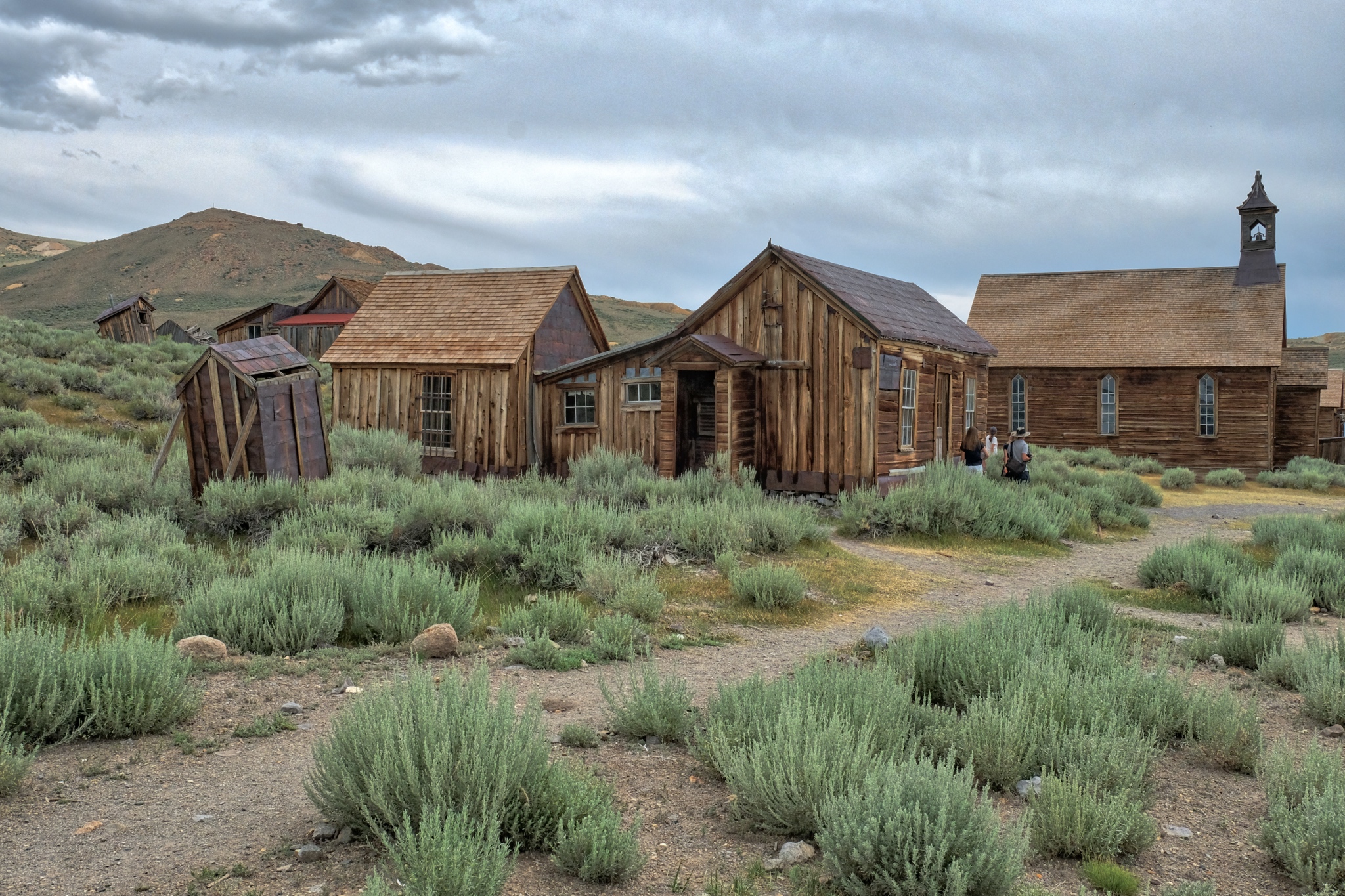 Bodie became a town in 1876 when a productive vein of gold was discovered there.
Bodie became a town in 1876 when a productive vein of gold was discovered there.
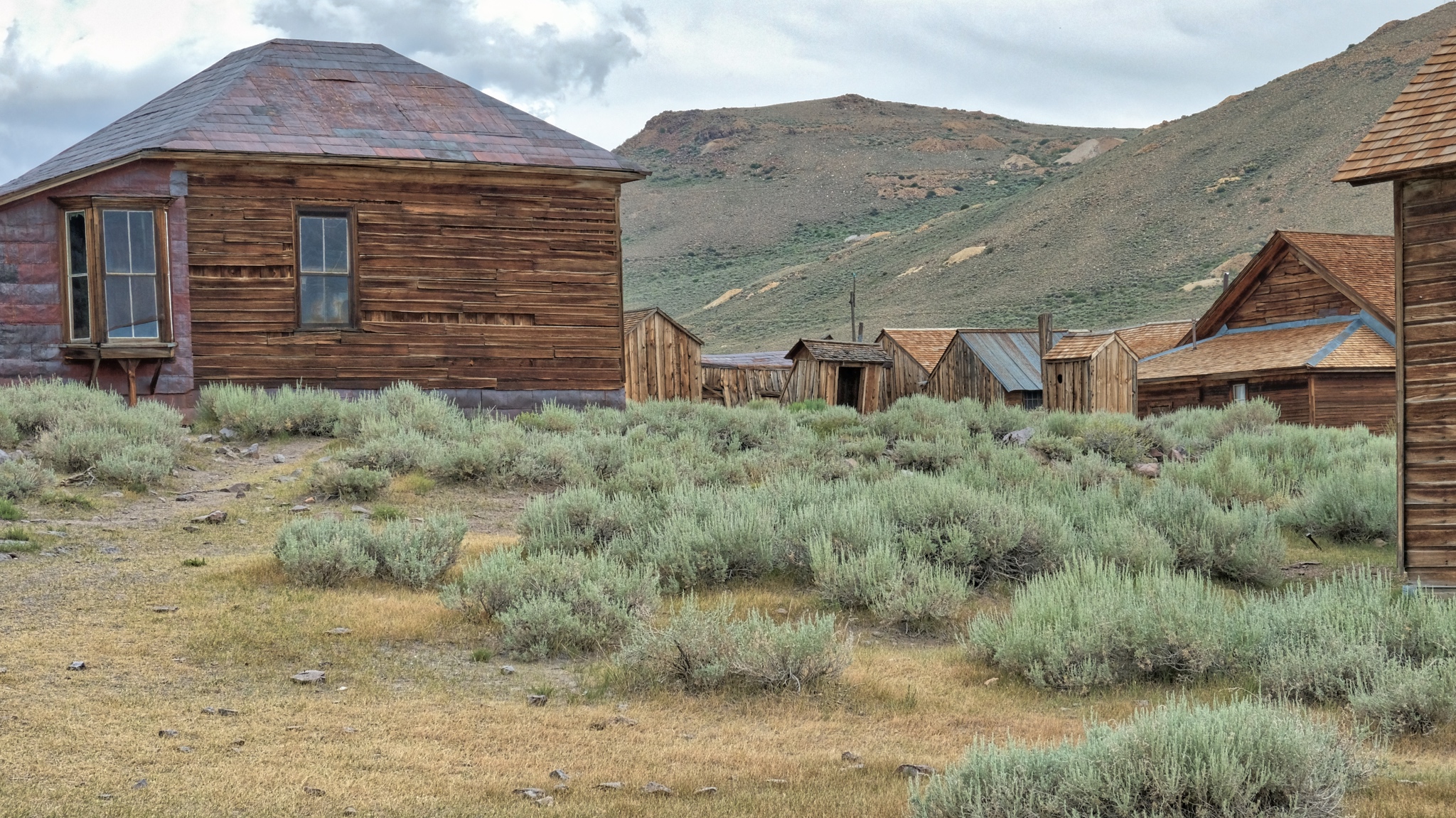 Even though it was mid June, the elevation of 8379 feet (2554 m) combined with the wind and mist, made the surfaces wet, revealing the colors and textures perfectly.
Even though it was mid June, the elevation of 8379 feet (2554 m) combined with the wind and mist, made the surfaces wet, revealing the colors and textures perfectly.

Bodie had a population of 7000 before the gold was all mined . . . and was connected to the world by a small gauge rail line.
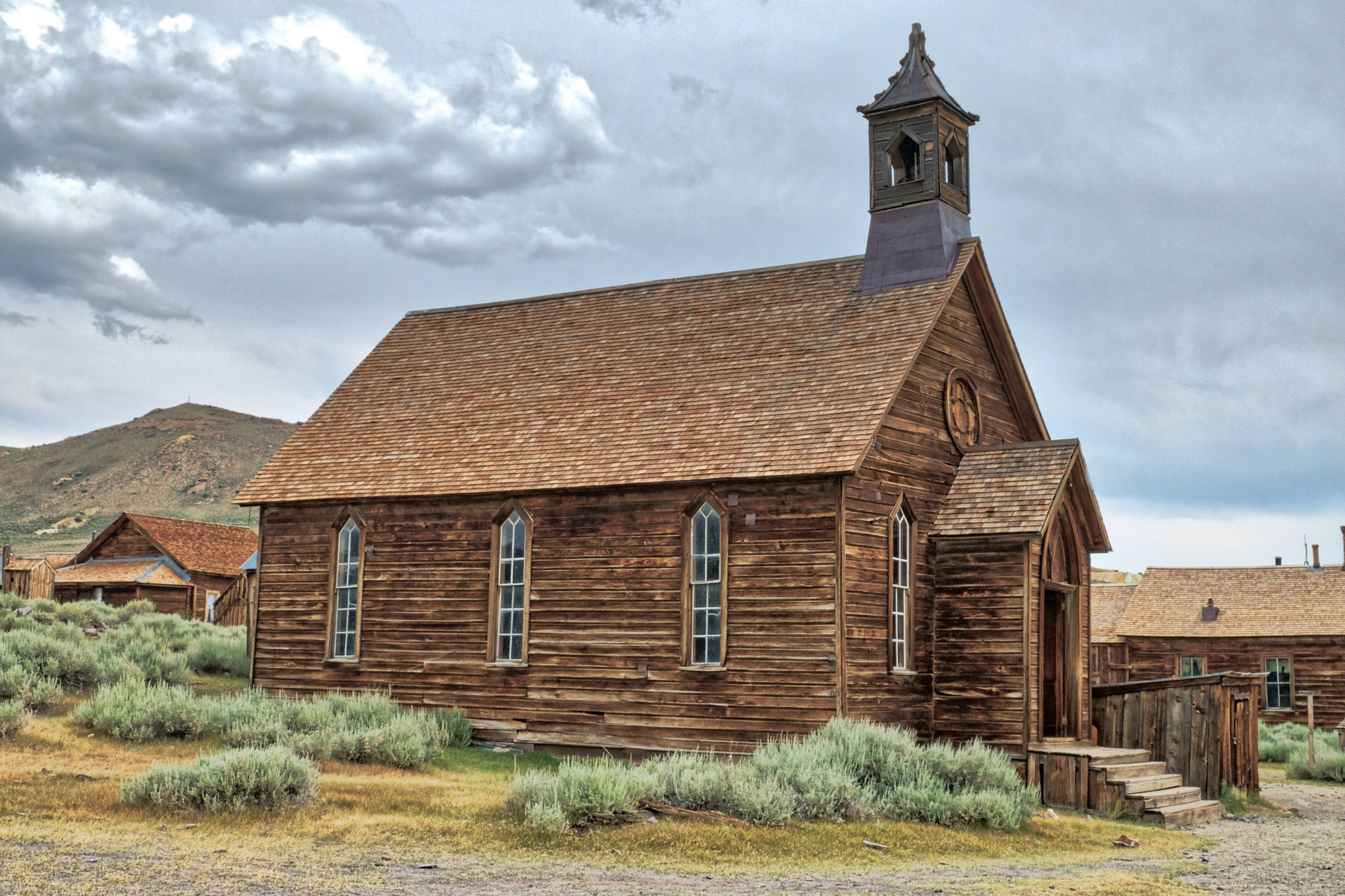 At it's height, Bodie had two churches, a Wells Fargo Bank, a myriad of shops and services, as well as its own hydroelectric generating station 13 miles away.
At it's height, Bodie had two churches, a Wells Fargo Bank, a myriad of shops and services, as well as its own hydroelectric generating station 13 miles away.
 There were 2000 buildings in Bodie at one time. There are nowhere near that many left today . . . but it is still an impressive sight to see.
There were 2000 buildings in Bodie at one time. There are nowhere near that many left today . . . but it is still an impressive sight to see.
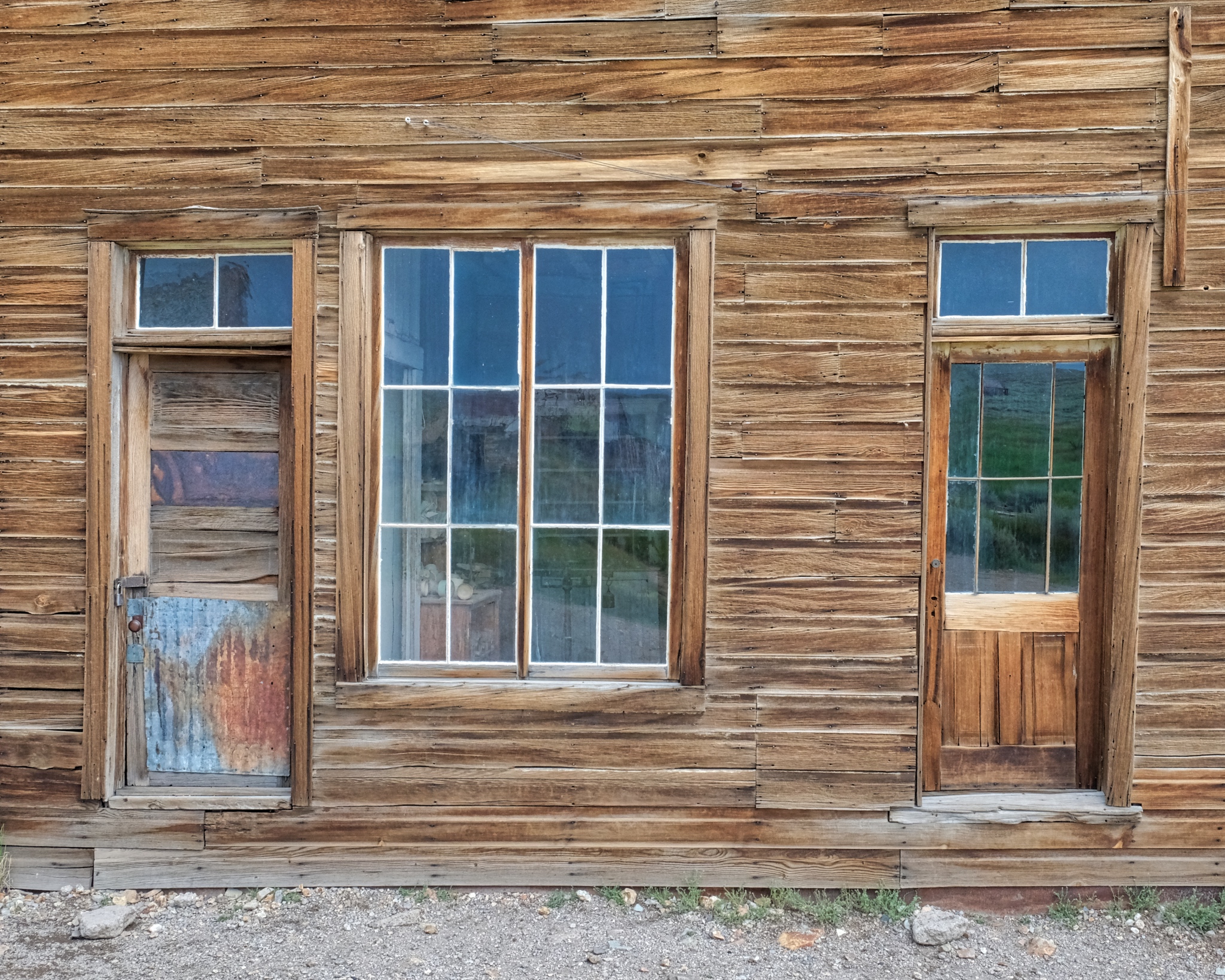 I am a fan of old doors and windows . . . especially weathered old doors and windows. I was in photographers' heaven in Bodie.
I am a fan of old doors and windows . . . especially weathered old doors and windows. I was in photographers' heaven in Bodie.
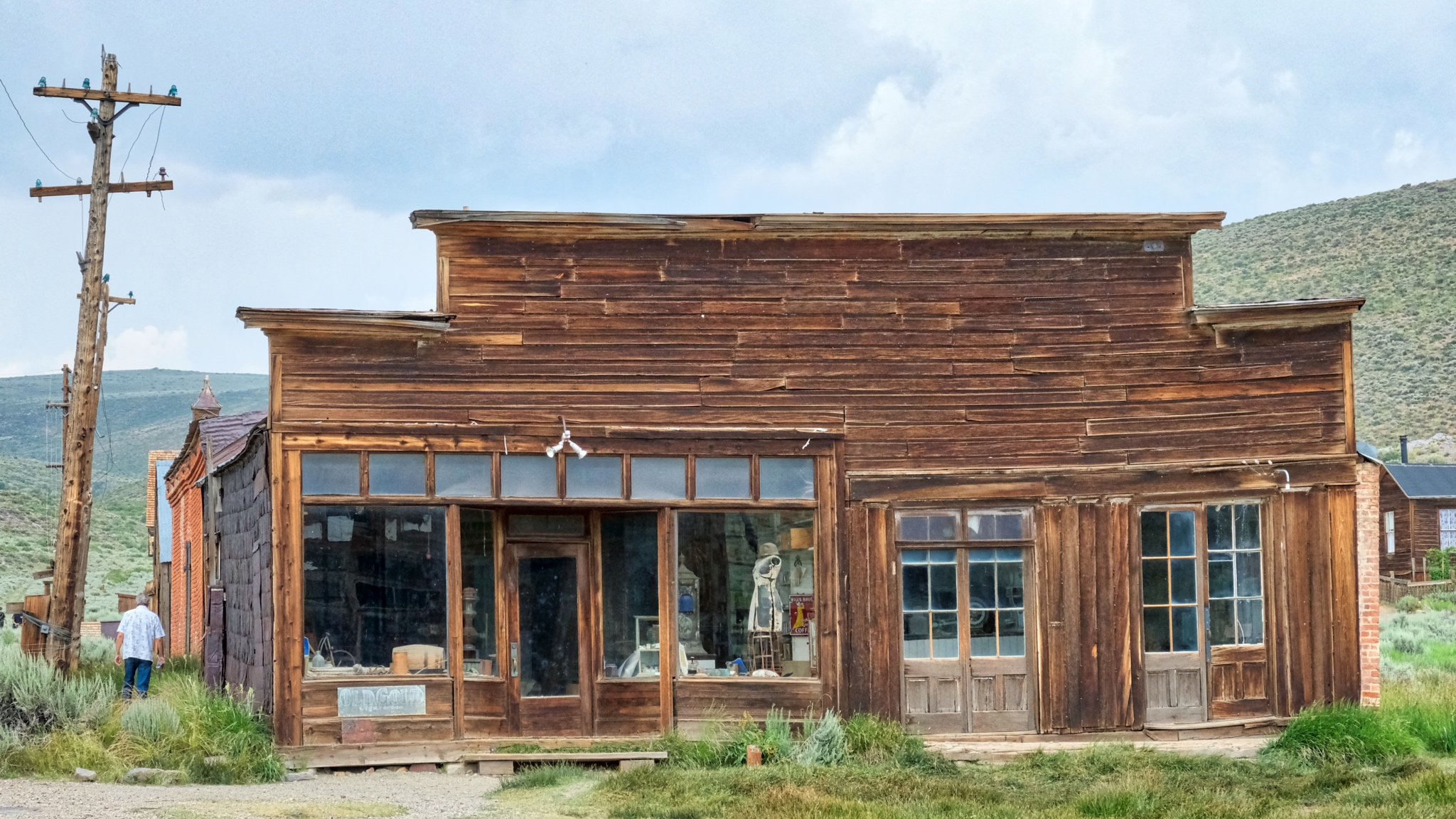 Several of the old general stores still had period merchandise in them. I am not sure if the items inside were left behind or carefully placed there years ago by over-eager National Parks staff, but the interiors are a marvel.
Several of the old general stores still had period merchandise in them. I am not sure if the items inside were left behind or carefully placed there years ago by over-eager National Parks staff, but the interiors are a marvel.
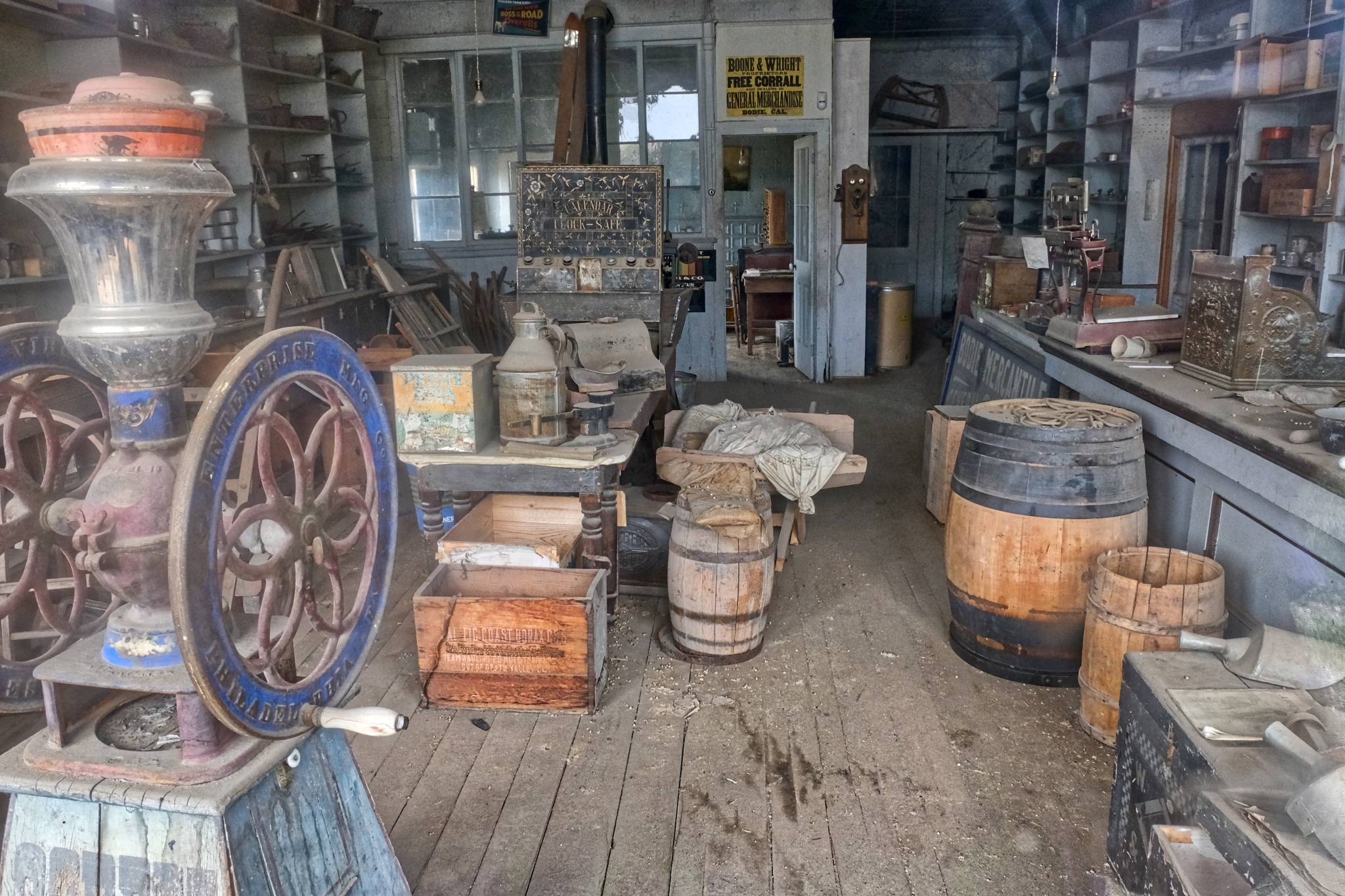 A photo of a general store interior, taken through the window since visitors could not go in. Fascinating.
A photo of a general store interior, taken through the window since visitors could not go in. Fascinating.
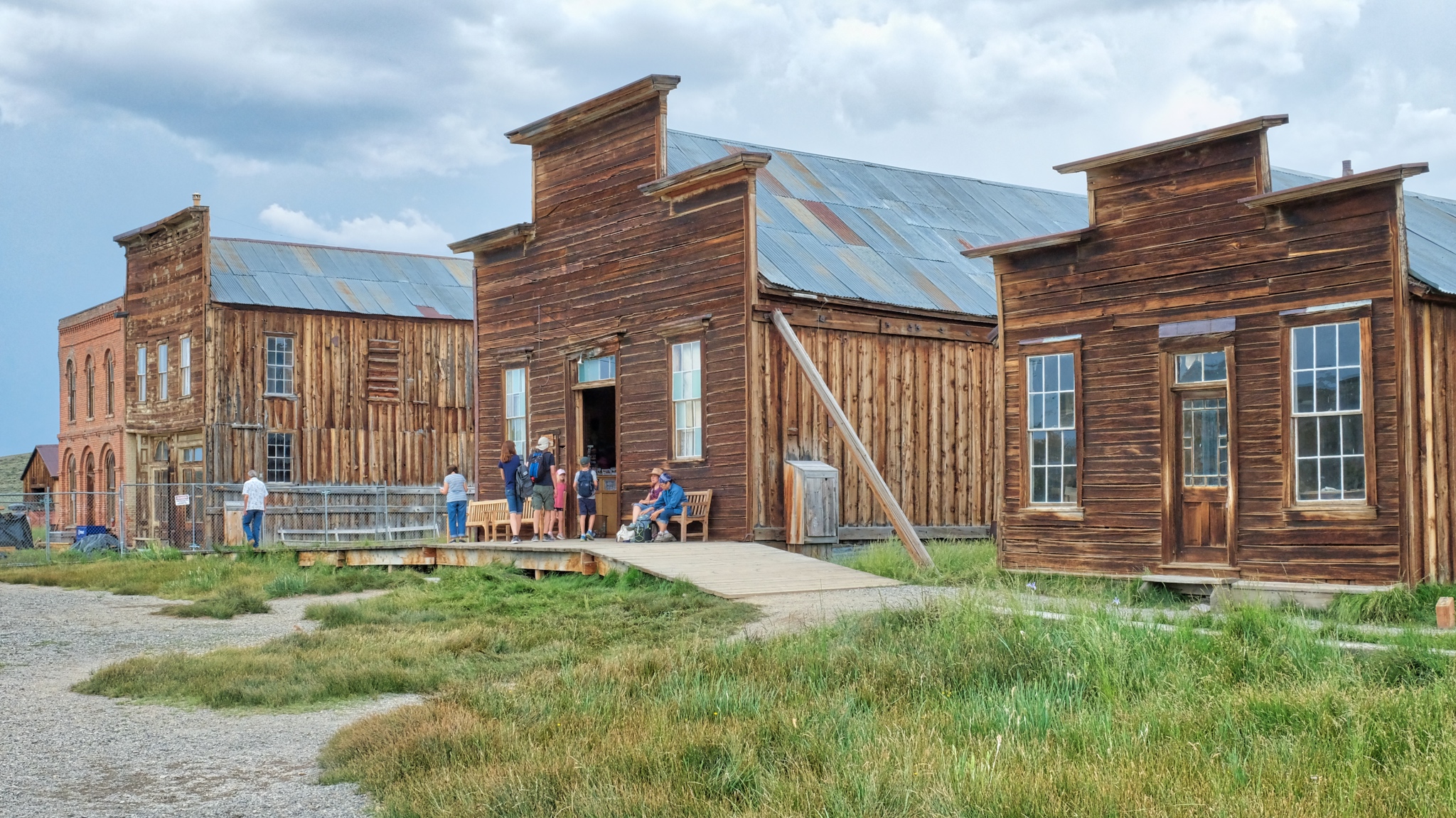 Bodie sees nearly 200,000 tourists yearly. The day we were there, we saw two large tour busses and four smaller vans full of tourists from France. They loved the place too. The building with the open door is the tourist information center, gift shop, and historical display.
Bodie sees nearly 200,000 tourists yearly. The day we were there, we saw two large tour busses and four smaller vans full of tourists from France. They loved the place too. The building with the open door is the tourist information center, gift shop, and historical display.
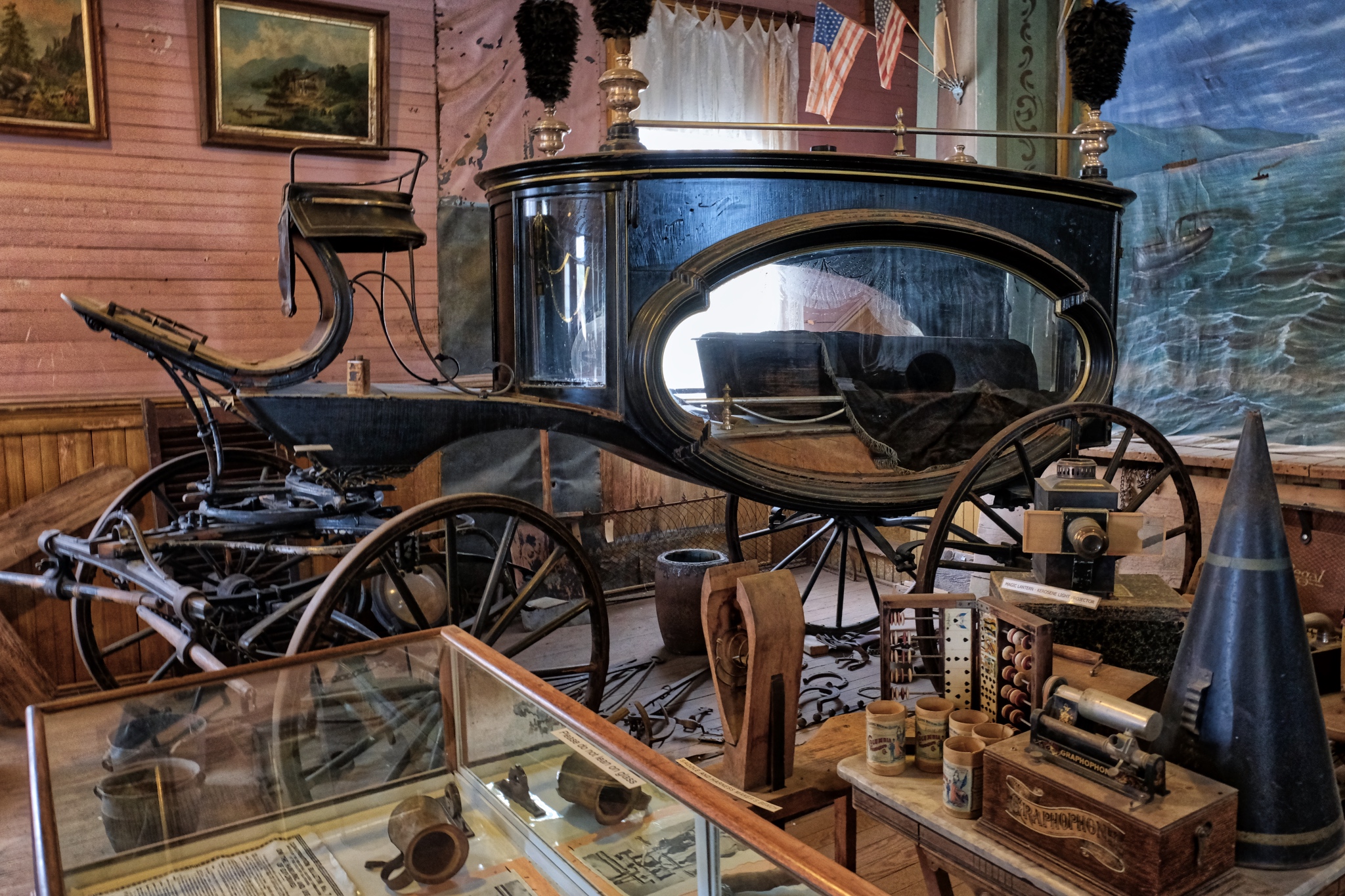 The museum had this wonderful horse drawn hearse, as well as many other finds from the site.
The museum had this wonderful horse drawn hearse, as well as many other finds from the site.
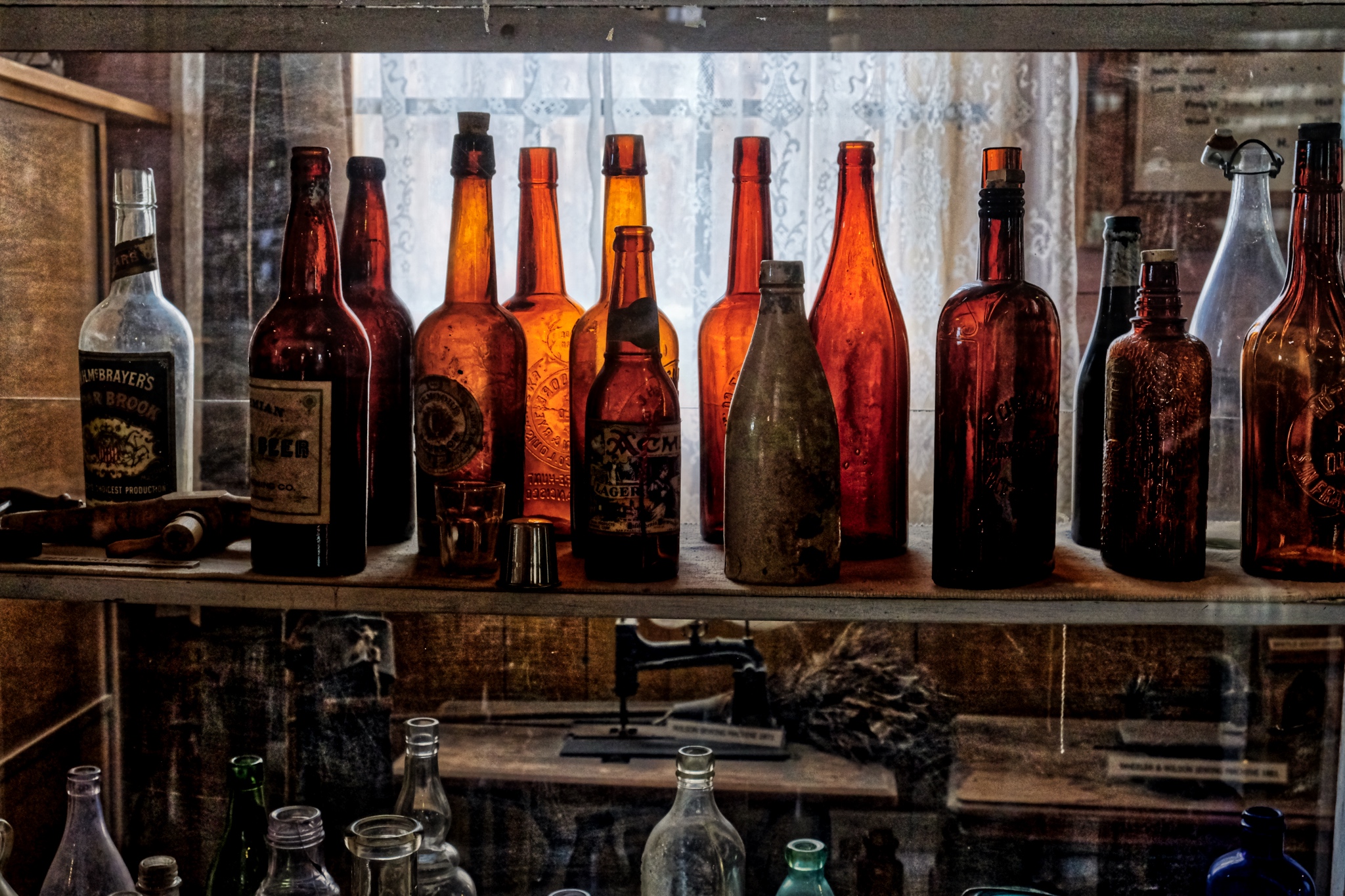 A lovely collection of amber bottles in the museum.
A lovely collection of amber bottles in the museum.
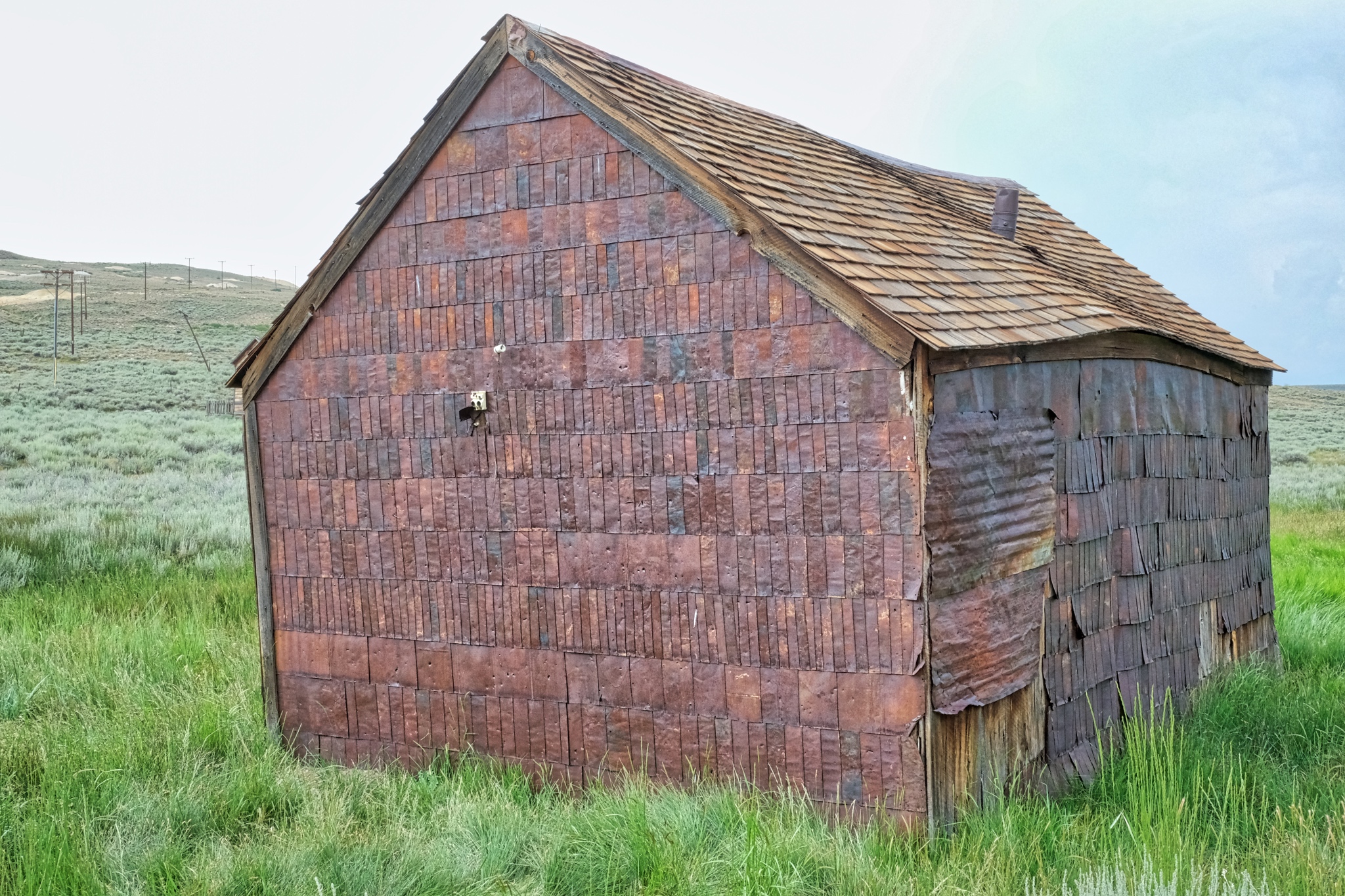 A number of the buildings used some kind of metal siding . . . as well as metal shingles on the roofs.
A number of the buildings used some kind of metal siding . . . as well as metal shingles on the roofs.
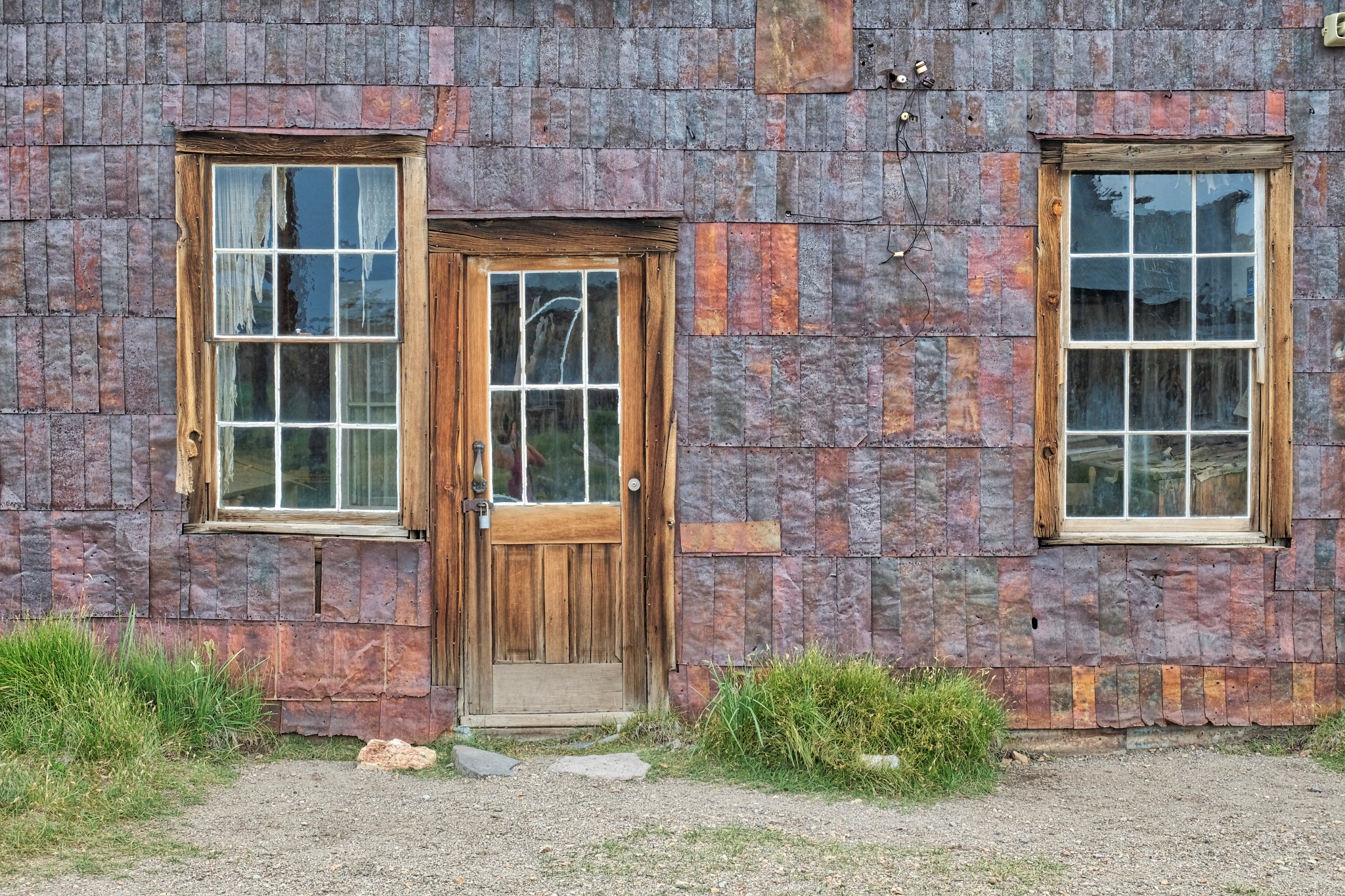 I was fascinated by this metal siding.
I was fascinated by this metal siding.
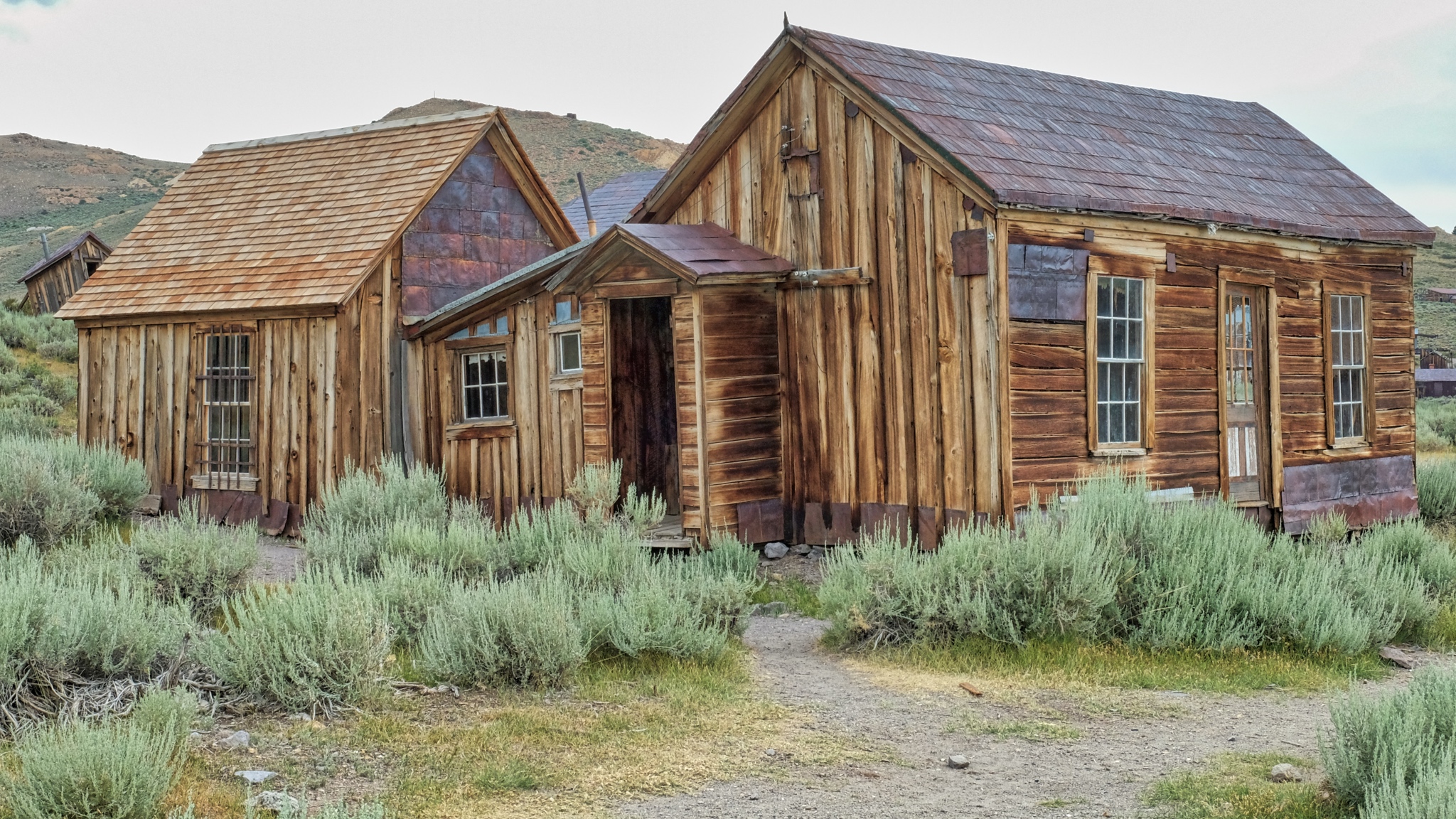 The small metal sheets were used all around Bodie. This house used metal for the roof, as a siding, and for various patching.
The small metal sheets were used all around Bodie. This house used metal for the roof, as a siding, and for various patching.
 Upon closer inspection, I came to the conclusion that the metal strips were, in fact, opened up 'tin cans' . . . which were made from iron and steel in those days. Because of the altitude and cold weather (303 nights a year with below freezing temperature), and deep snow (average 10 feet or more of snow per year) in the winter meant they must have had to import a lot of food . . . which at that time was packed into cans. You can see the can ridges on some of the large metal strips.
Upon closer inspection, I came to the conclusion that the metal strips were, in fact, opened up 'tin cans' . . . which were made from iron and steel in those days. Because of the altitude and cold weather (303 nights a year with below freezing temperature), and deep snow (average 10 feet or more of snow per year) in the winter meant they must have had to import a lot of food . . . which at that time was packed into cans. You can see the can ridges on some of the large metal strips.
 A kind of early recycling. In addition, these walls are visually very interesting in their own right.
A kind of early recycling. In addition, these walls are visually very interesting in their own right.
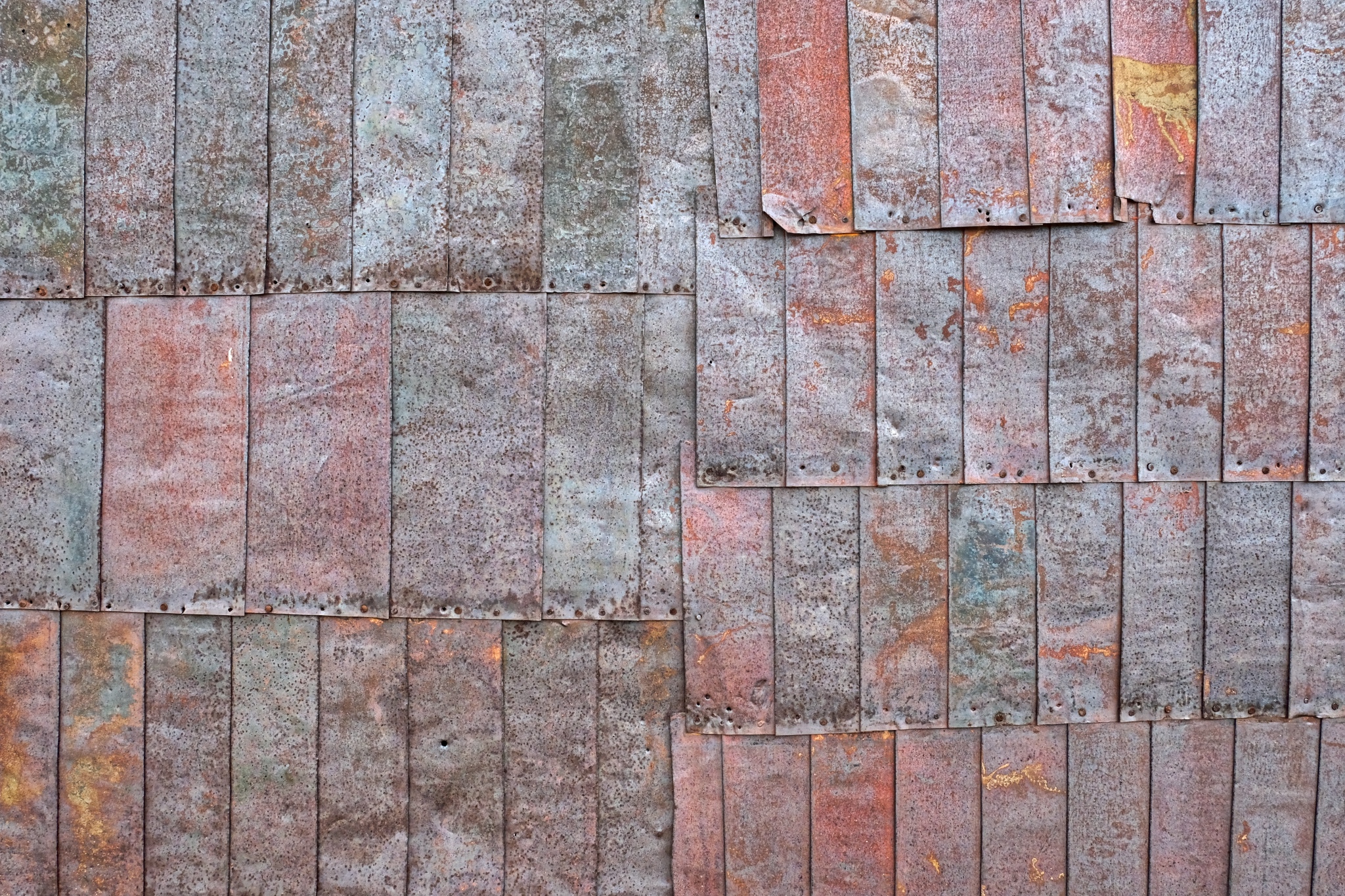 One more . . . just for the artistic effect.
One more . . . just for the artistic effect.
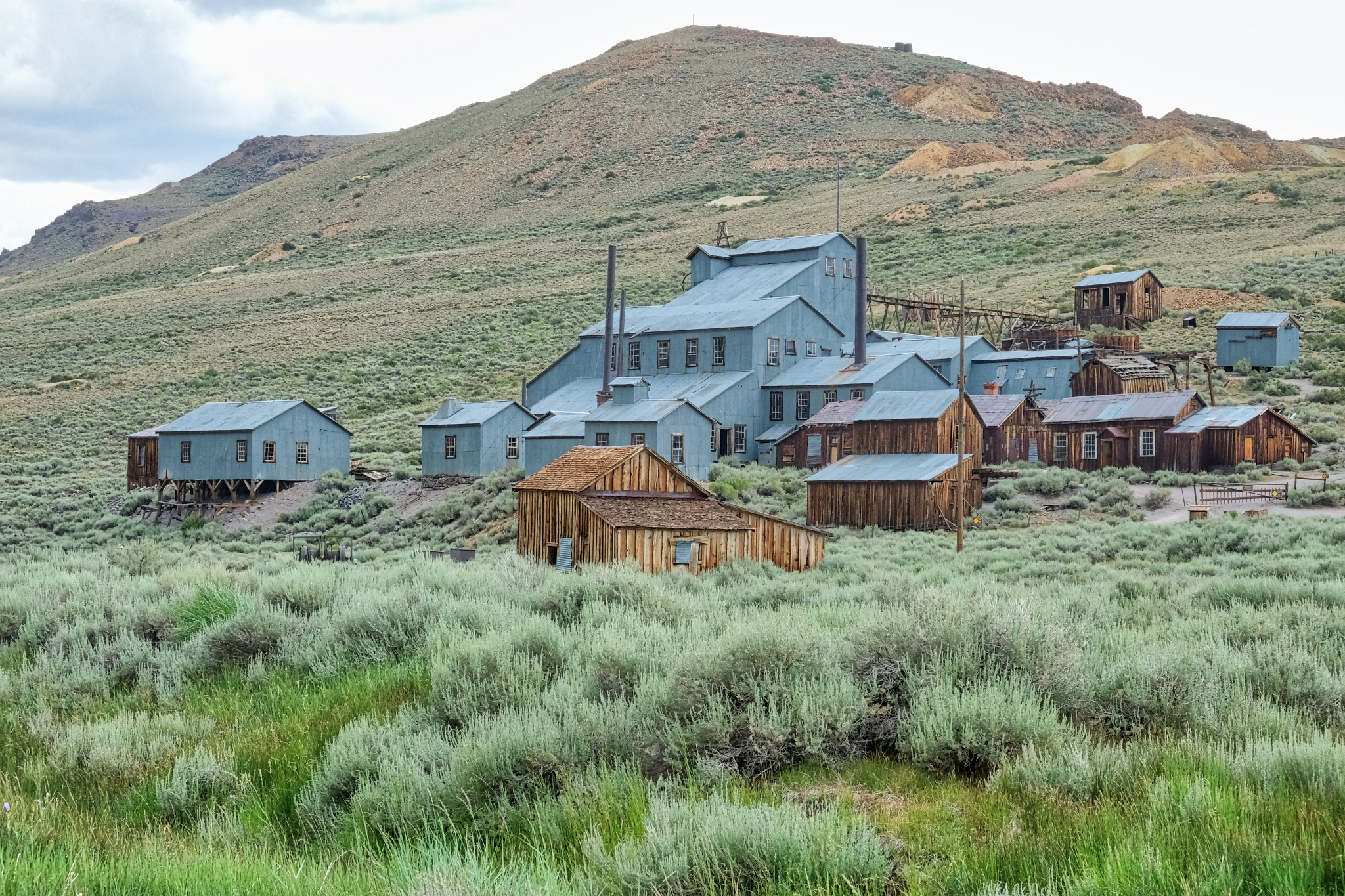 1881 was the highest production from the Bodie mines: $3.1 million US dollars. The total value of all the gold pulled from the ground here was $34 million US dollars . . . a lot of money at that time!
1881 was the highest production from the Bodie mines: $3.1 million US dollars. The total value of all the gold pulled from the ground here was $34 million US dollars . . . a lot of money at that time!
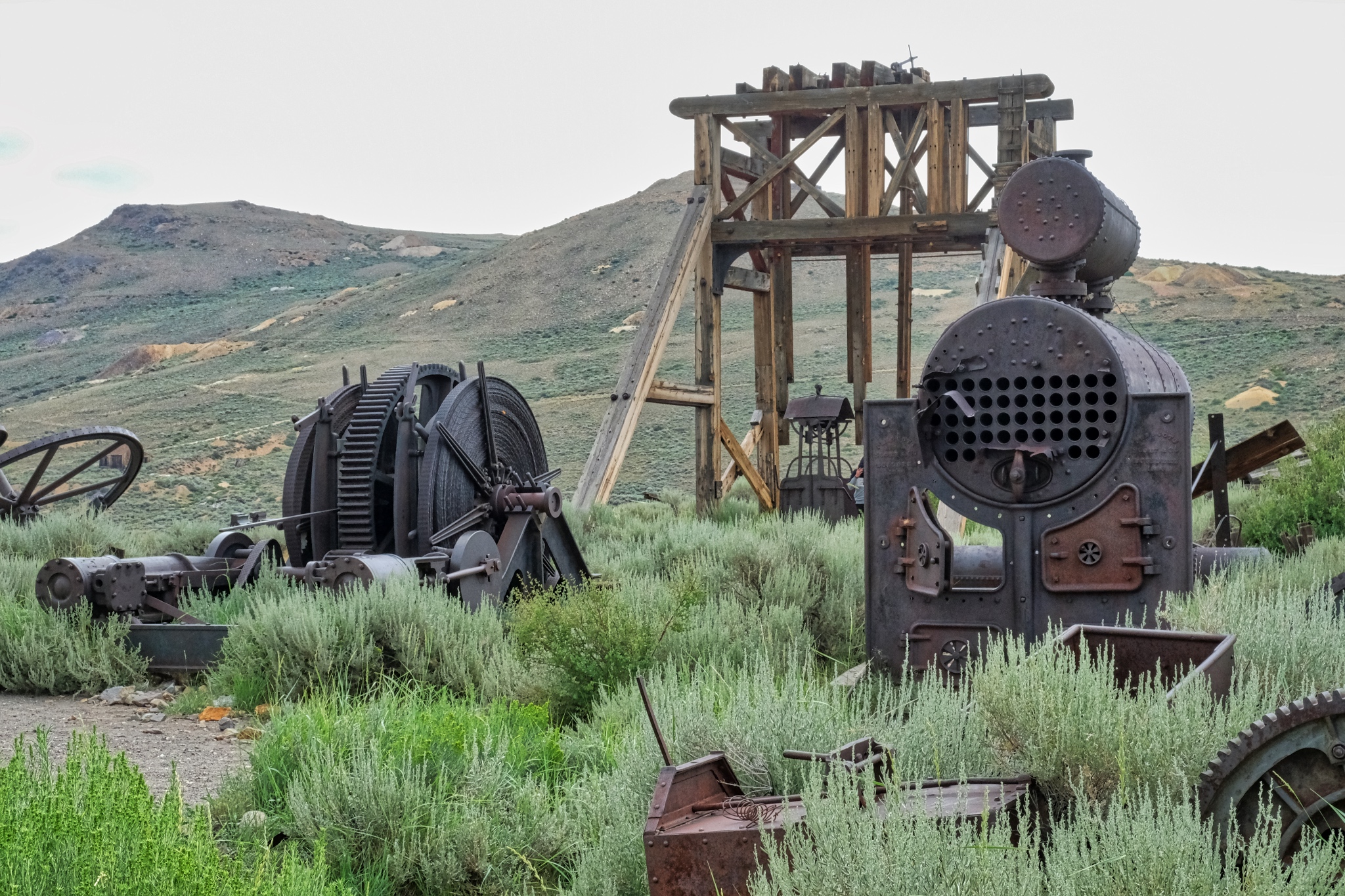 There is still a lot of mechanical debris left over from the age of industrial mining.
There is still a lot of mechanical debris left over from the age of industrial mining.
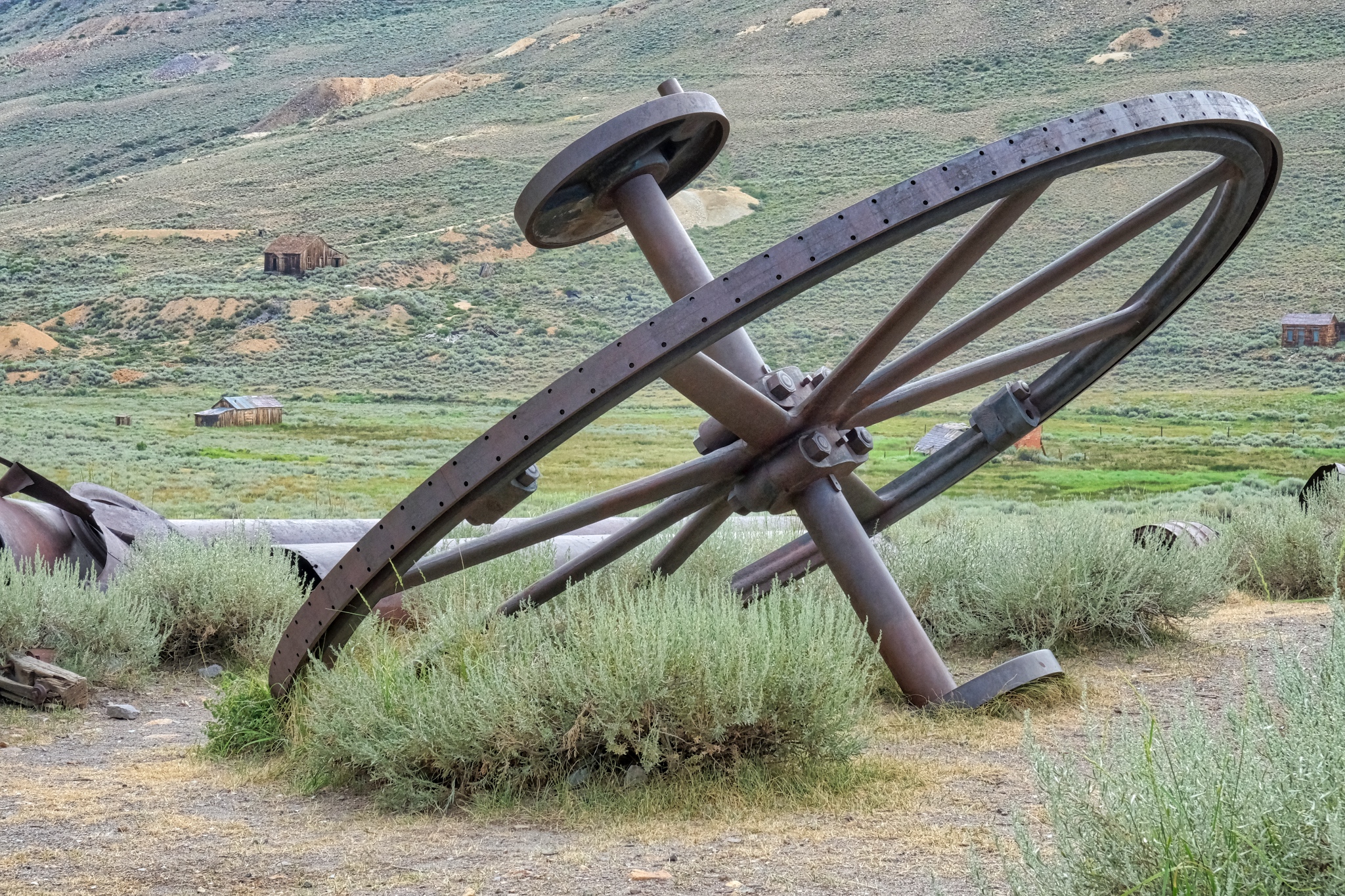 It is interesting to try and imagine where these parts went and what their purposes might have been.
It is interesting to try and imagine where these parts went and what their purposes might have been.
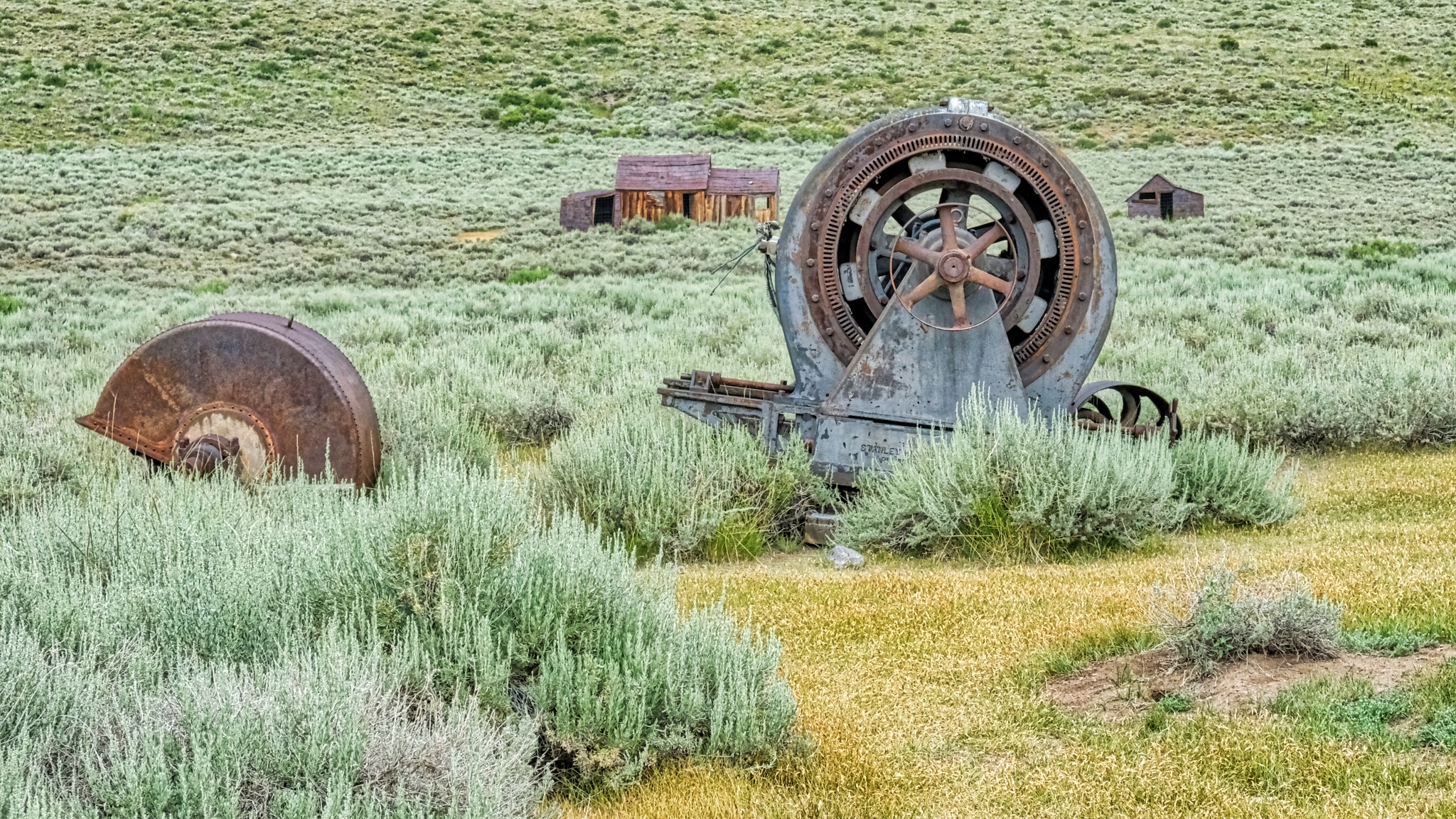 Your guess is as good as mine . . . .
Your guess is as good as mine . . . .
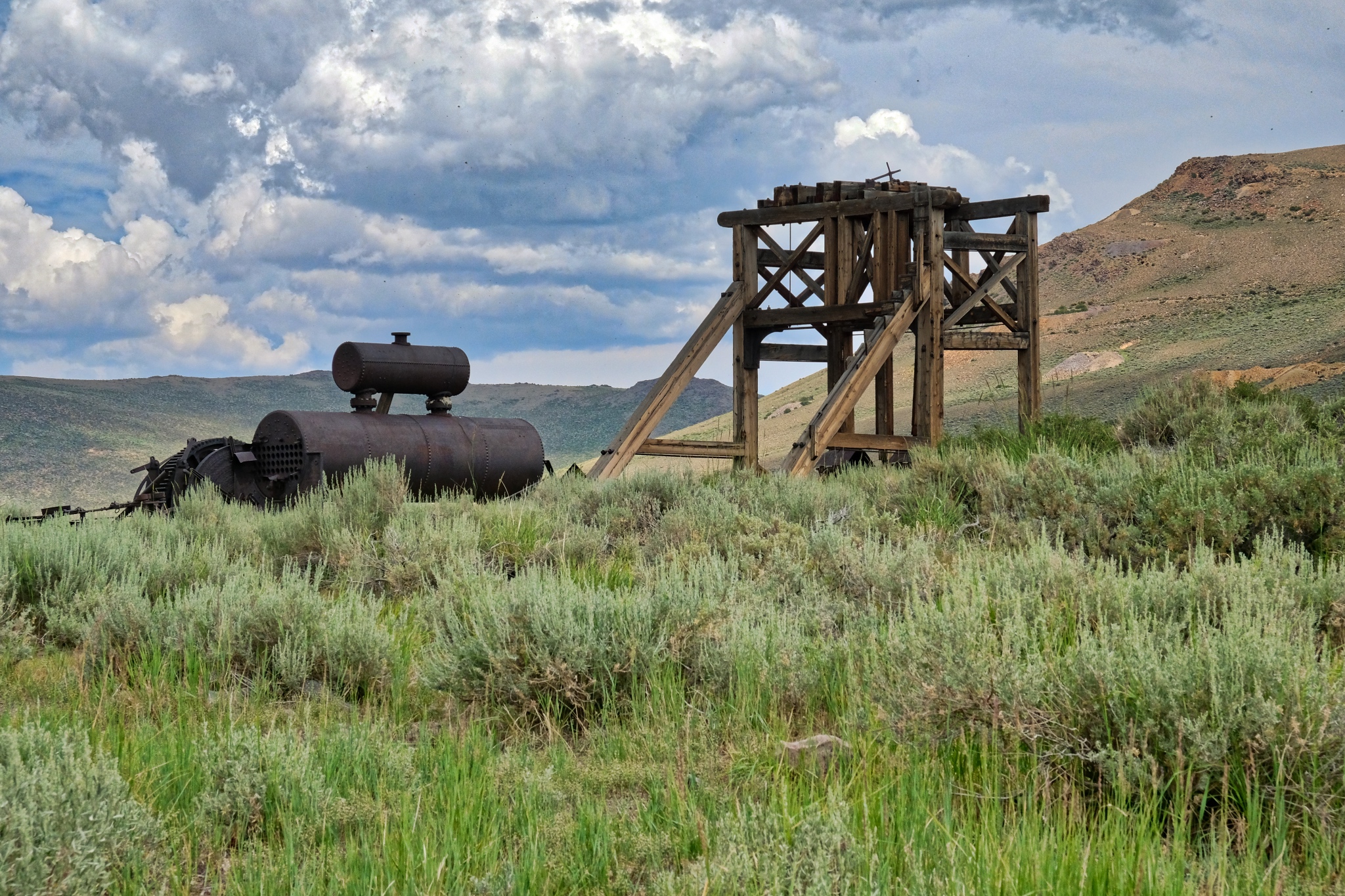 There were many mine head rigs and tanks across the area.
There were many mine head rigs and tanks across the area.
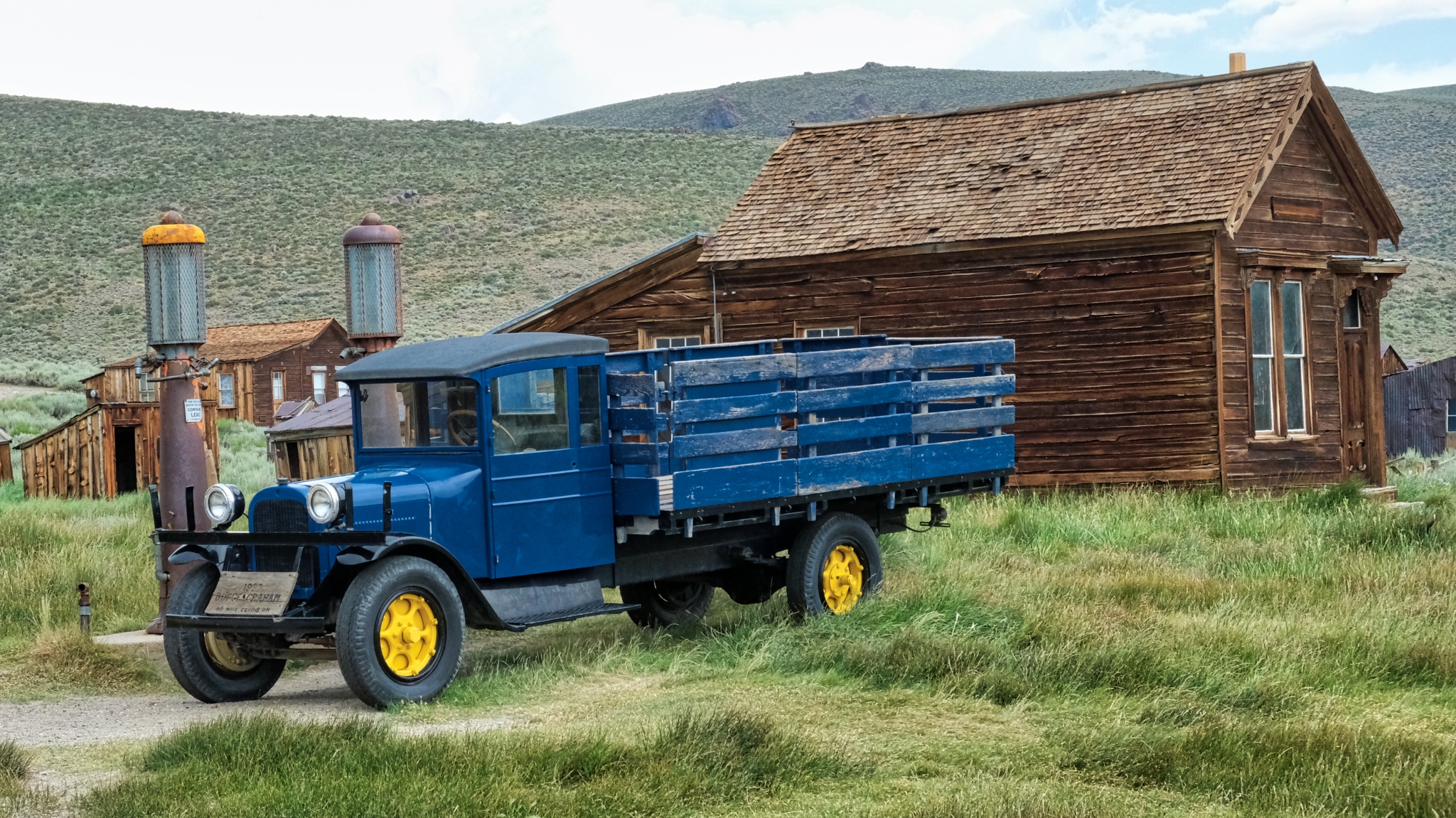 Although the rail line was torn up, trucks continued to supply the town with food, supplies, and machinery.
Although the rail line was torn up, trucks continued to supply the town with food, supplies, and machinery.
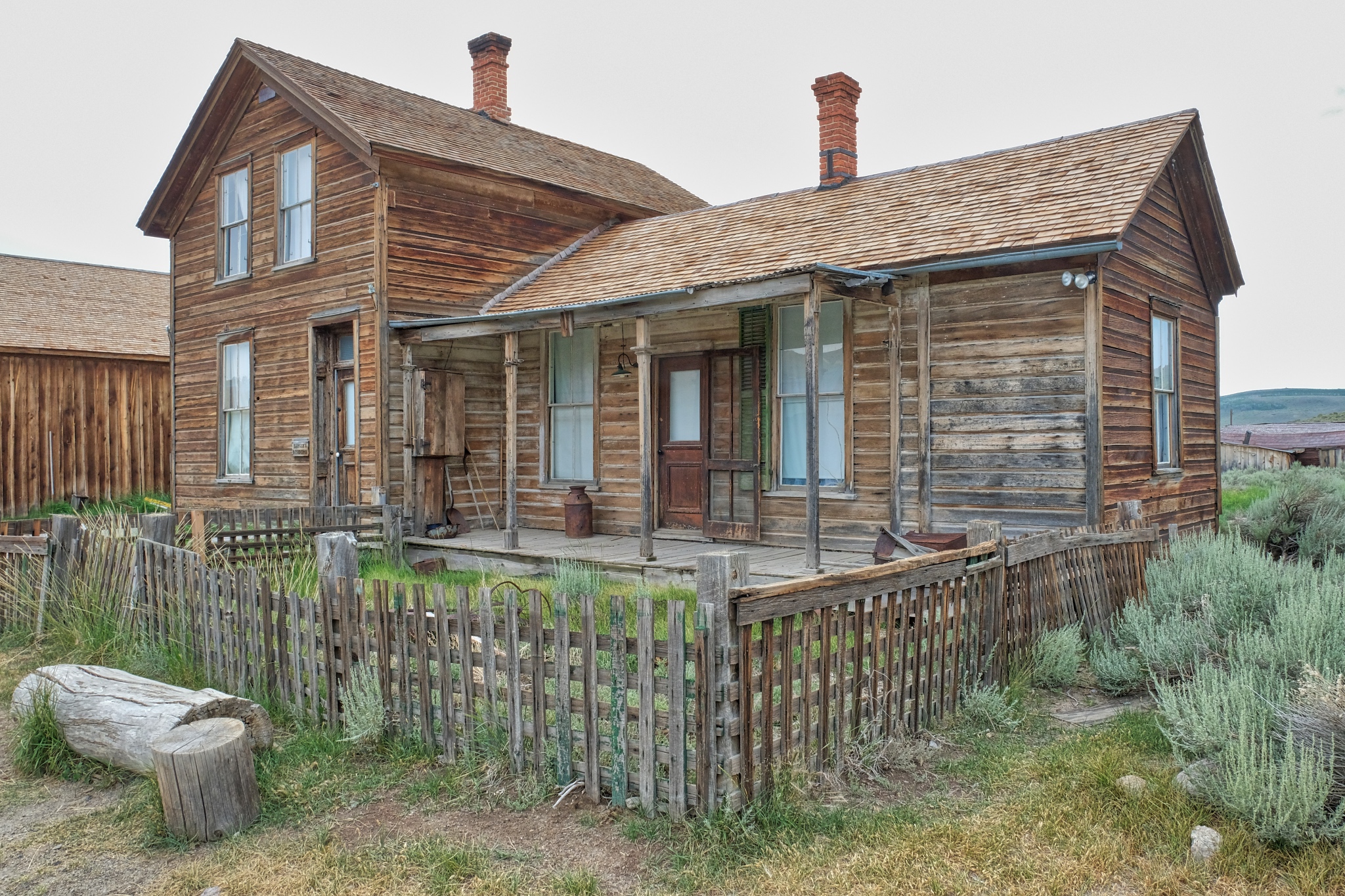 There were some very nice old homes here. Although it was designated a ghost town as early as 1915, there were still a few hardy souls who lived in Bodie up into the 1950s.
There were some very nice old homes here. Although it was designated a ghost town as early as 1915, there were still a few hardy souls who lived in Bodie up into the 1950s.
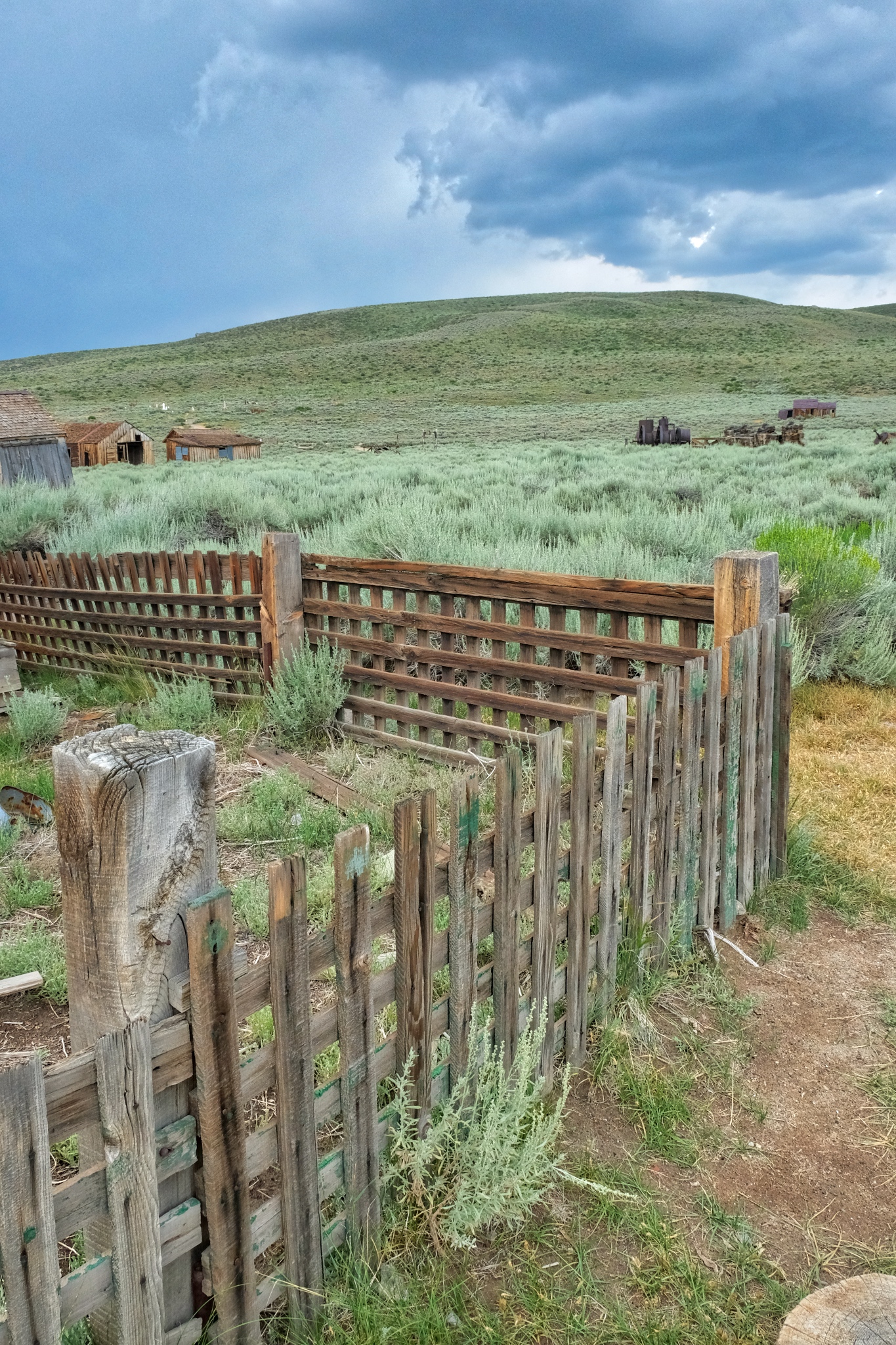 This view back in the day would have had many more houses in it.
This view back in the day would have had many more houses in it.
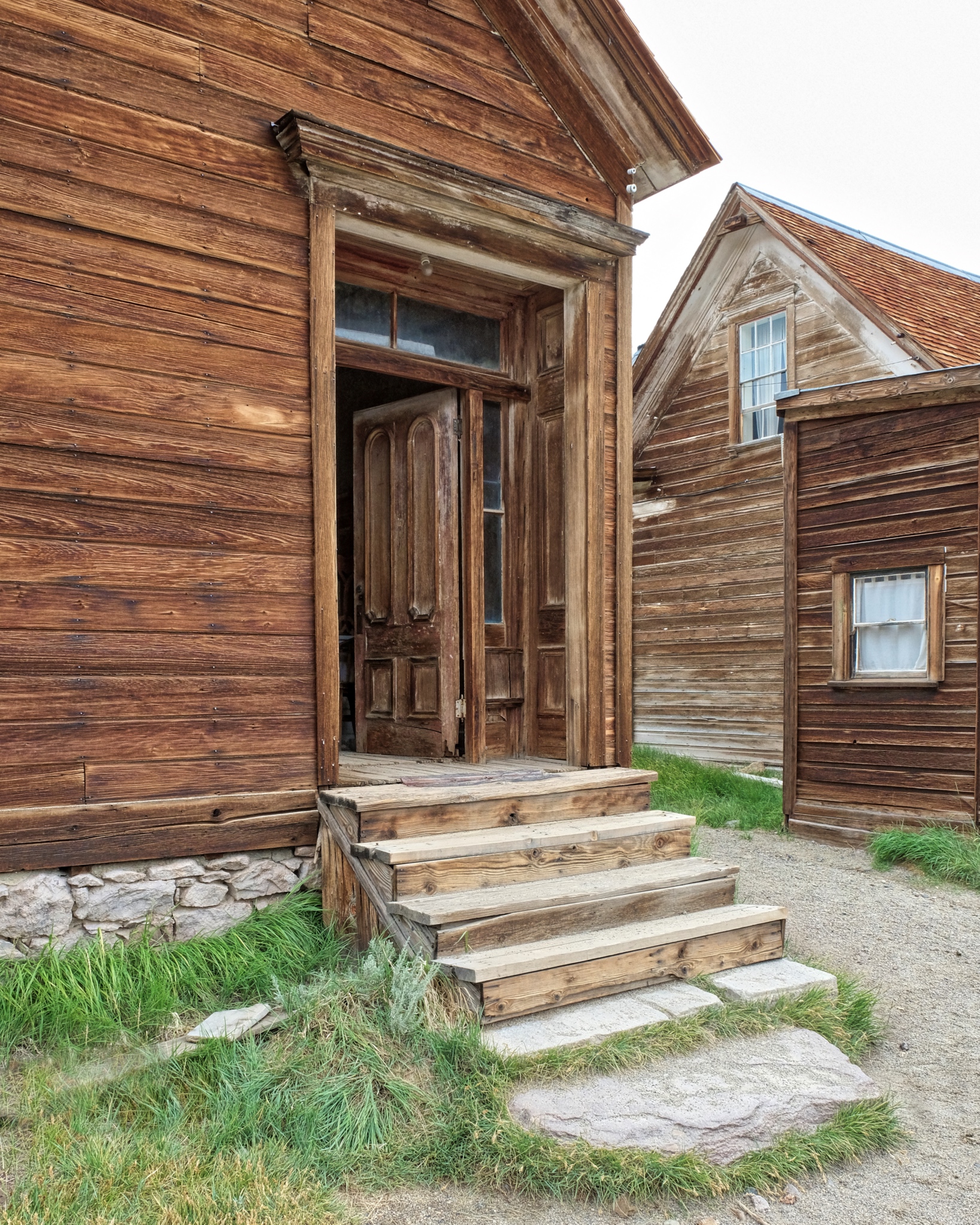 One house had an open door . . . so I went in for a look.
One house had an open door . . . so I went in for a look.
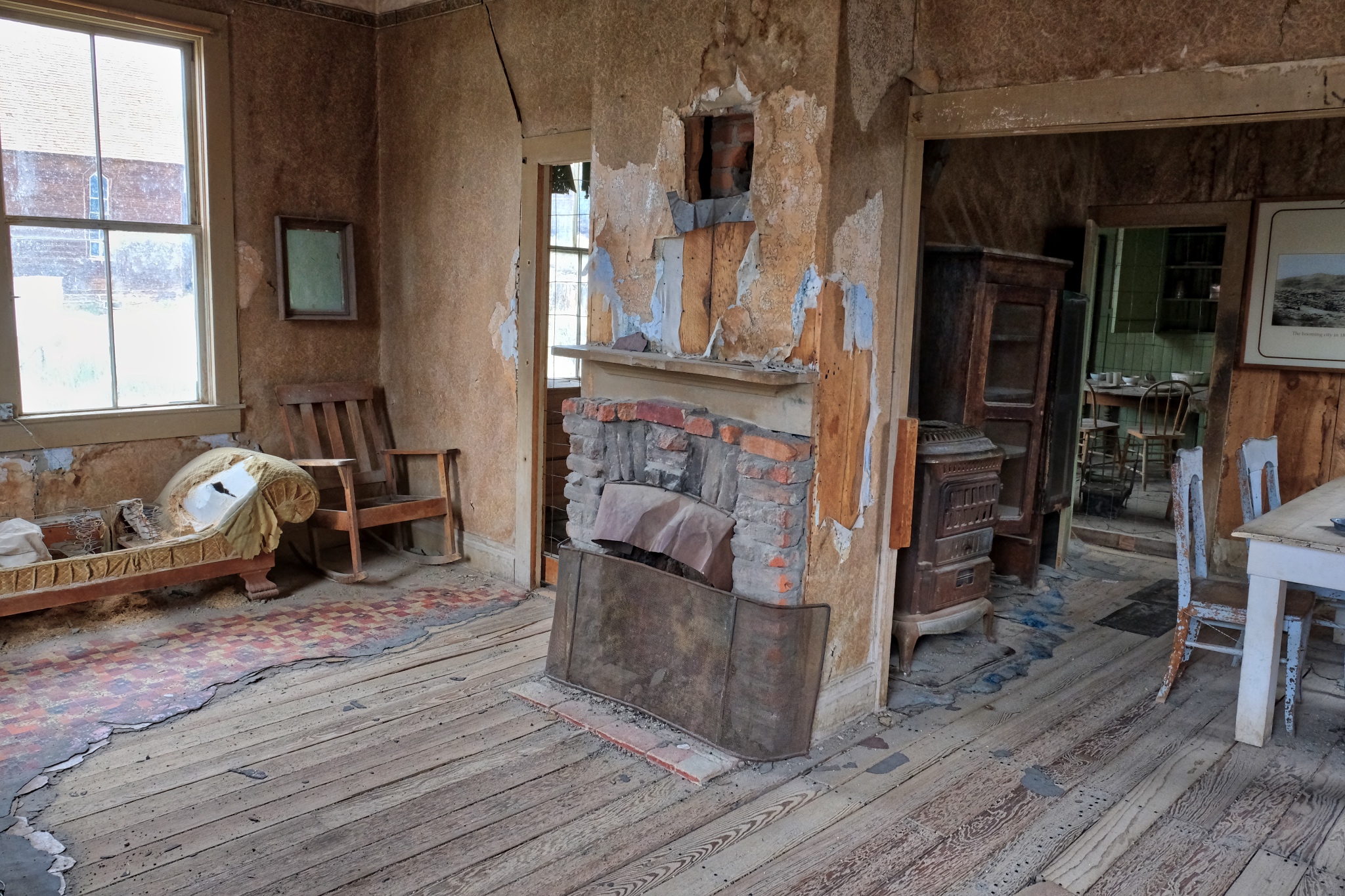 Fantastic!
Fantastic!
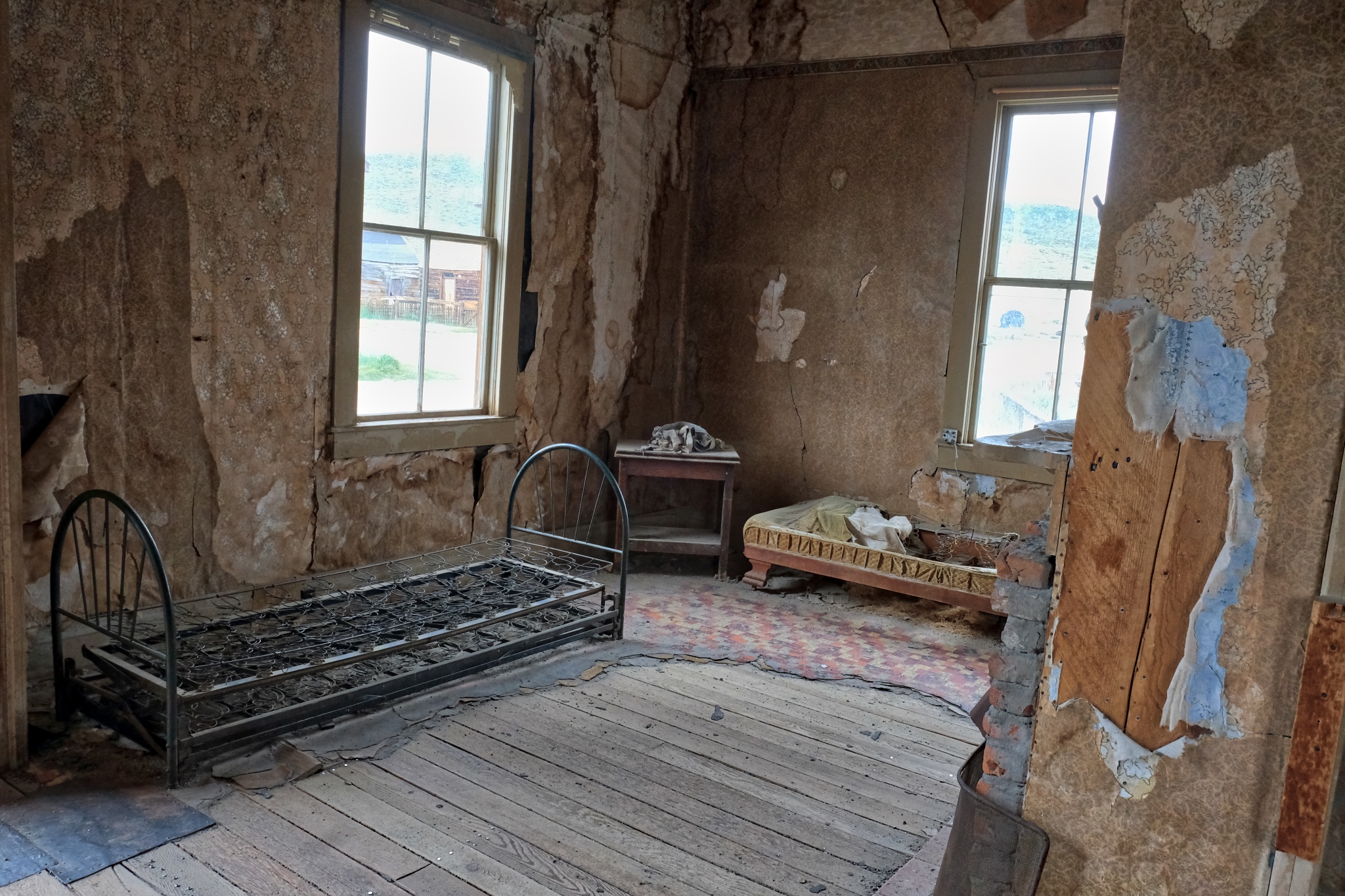 Although tens of thousands of visitors come to Bodie every year, it still feels like a discovery to find these old abandoned rooms.
Although tens of thousands of visitors come to Bodie every year, it still feels like a discovery to find these old abandoned rooms.
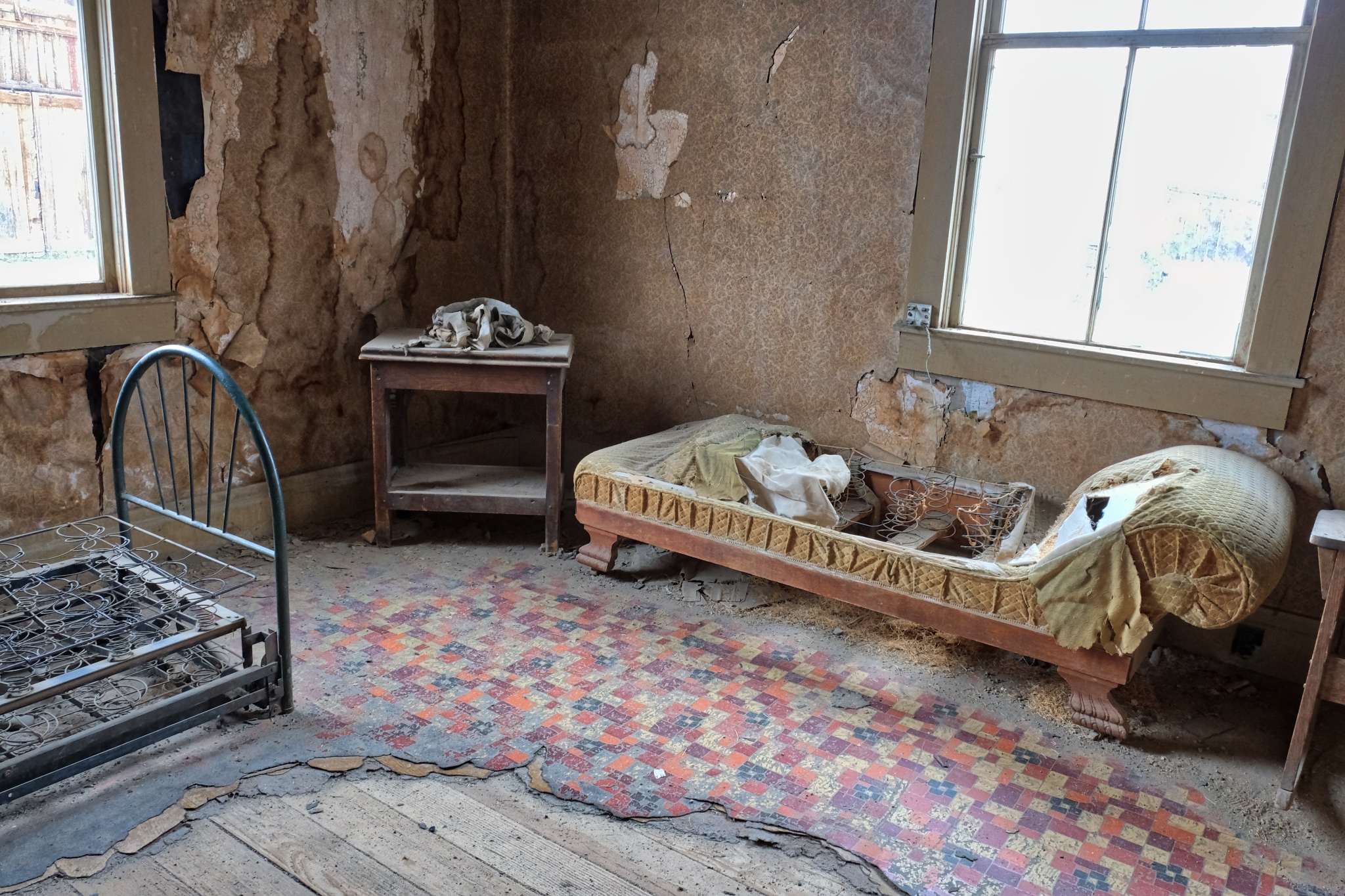 I cannot tell if the furniture is original, but those layers of linoleum sure are!
I cannot tell if the furniture is original, but those layers of linoleum sure are!
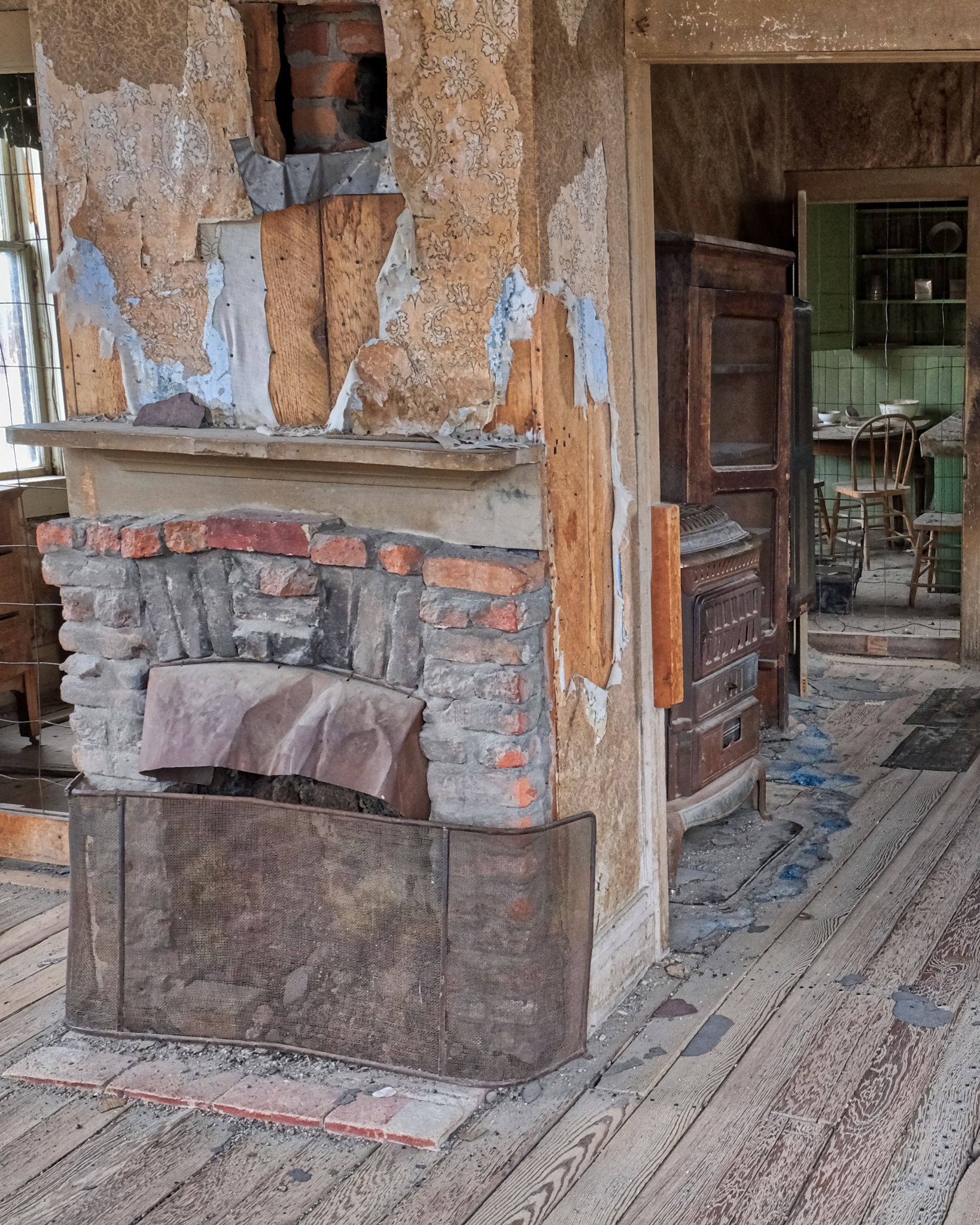 Again, some of these old homes were lived in up to the 1950s, so I am not sure if this is one of those houses or it it dates to the end of mining around 1916.
Again, some of these old homes were lived in up to the 1950s, so I am not sure if this is one of those houses or it it dates to the end of mining around 1916.
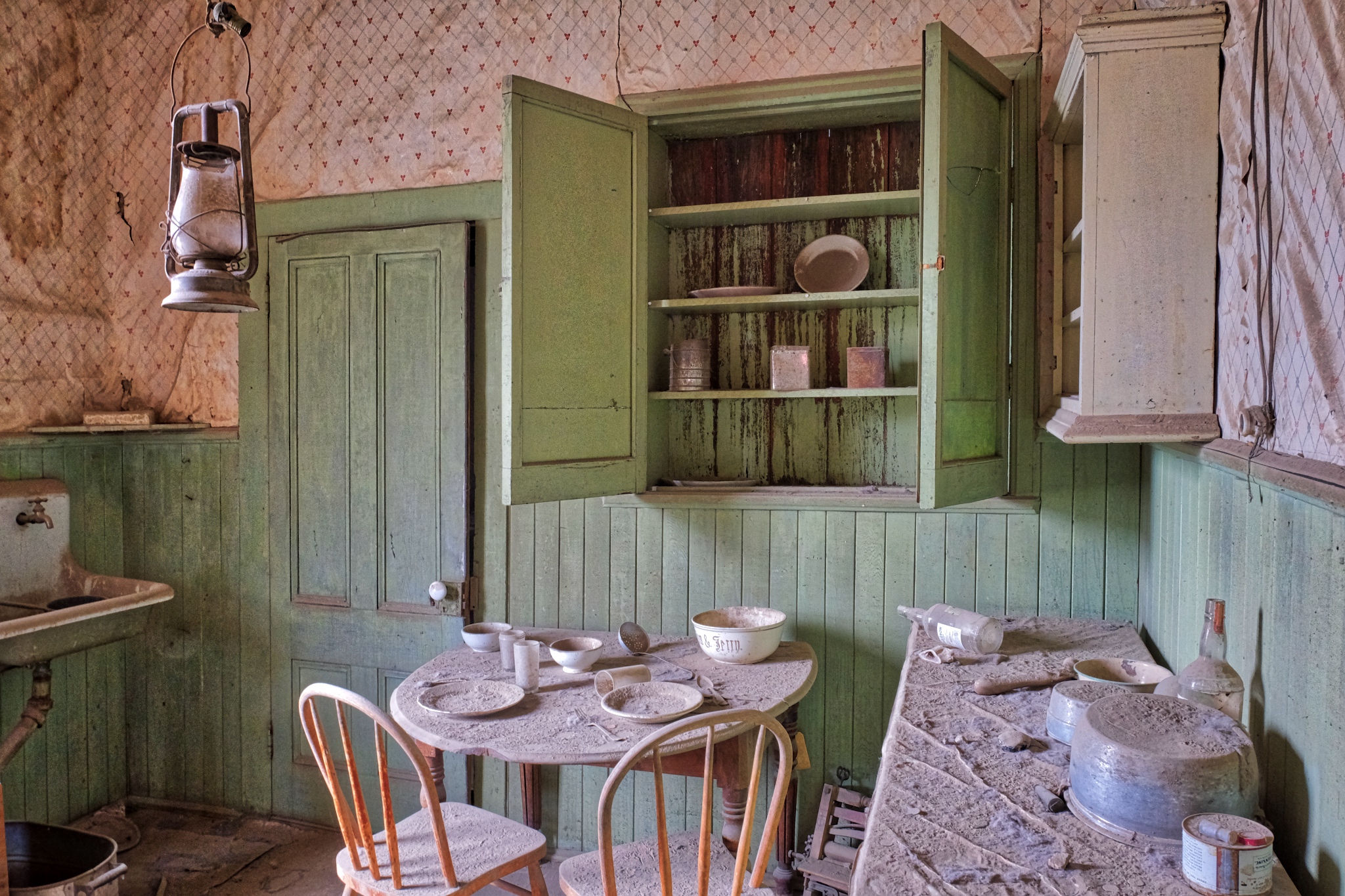 "The last breakfast" table still set. At least they didn't have to do the dishes on that last day . . .
"The last breakfast" table still set. At least they didn't have to do the dishes on that last day . . .
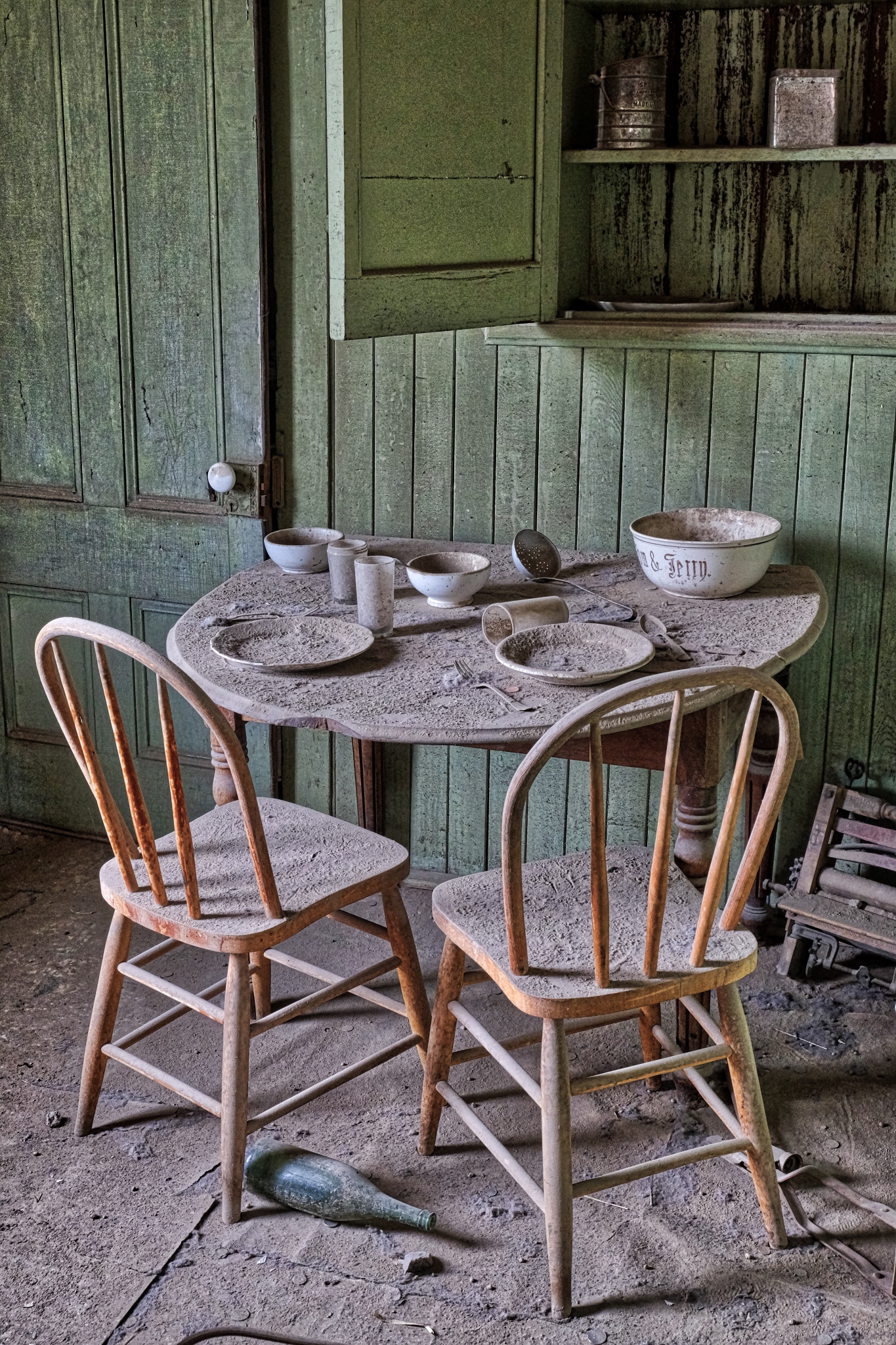 Wonderful patina of age.
Wonderful patina of age.
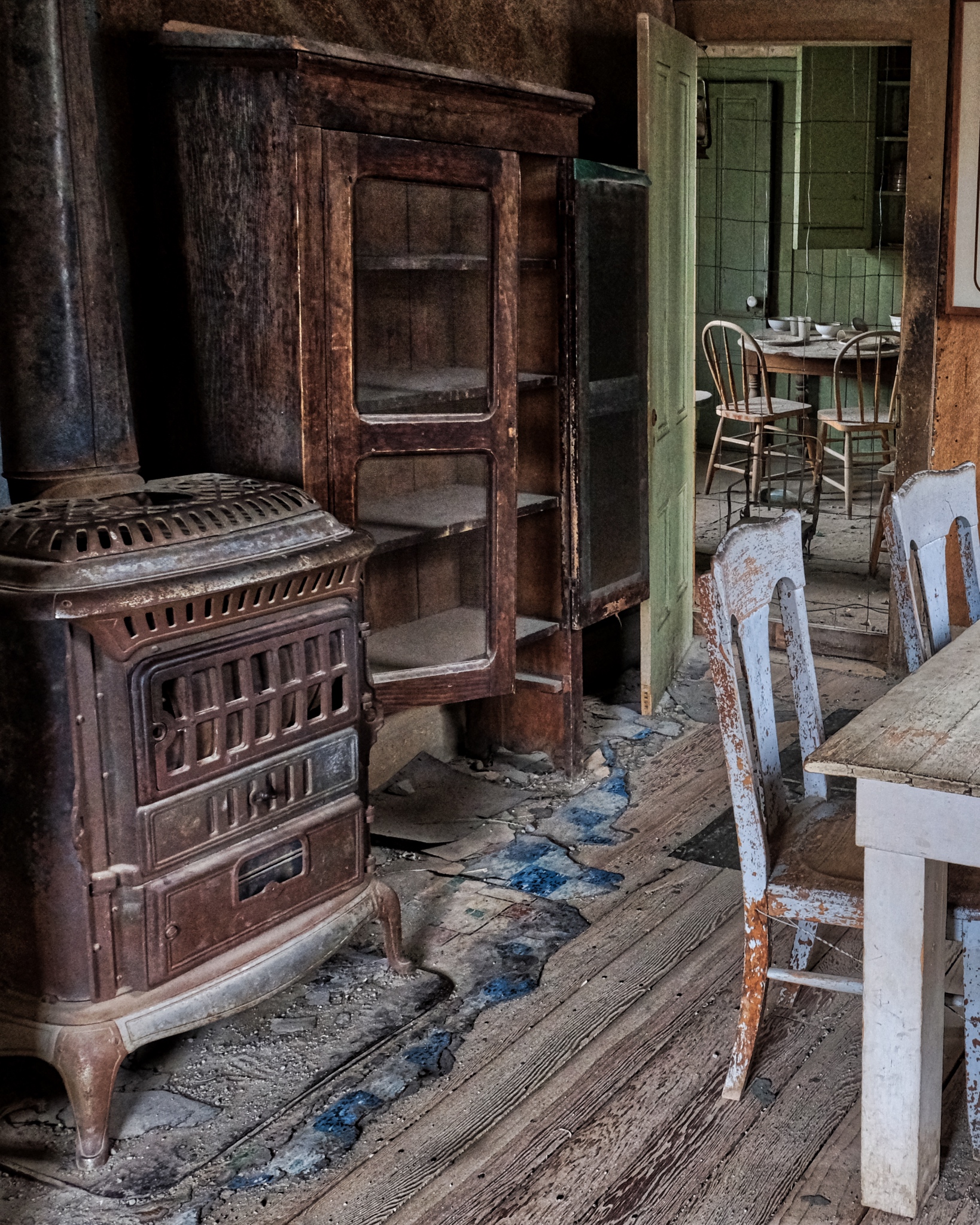 The old wood stove would have been the center of life in this very cold place.
The old wood stove would have been the center of life in this very cold place.
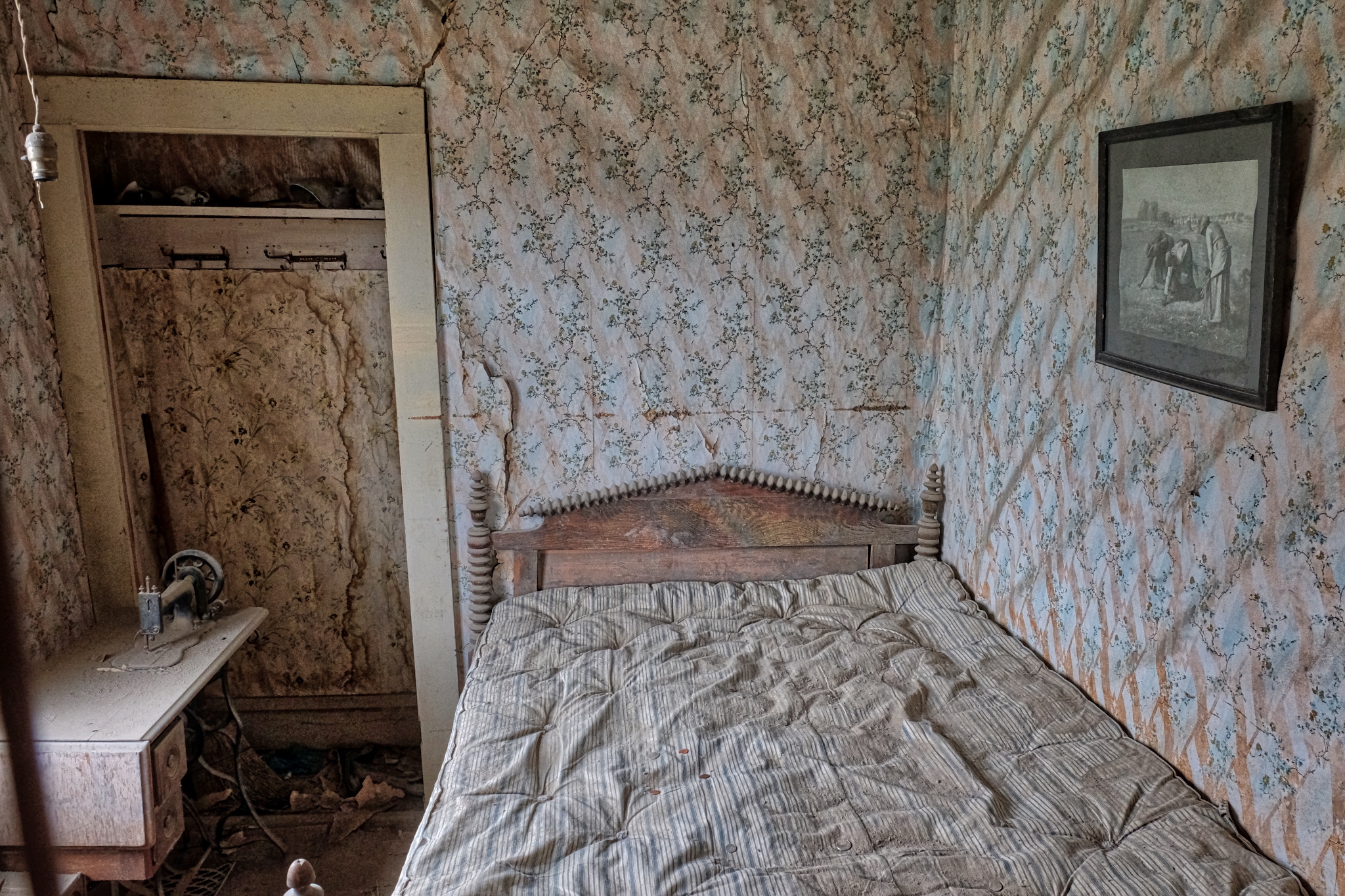 Looks like a cozy room . . . at one time.
Looks like a cozy room . . . at one time.
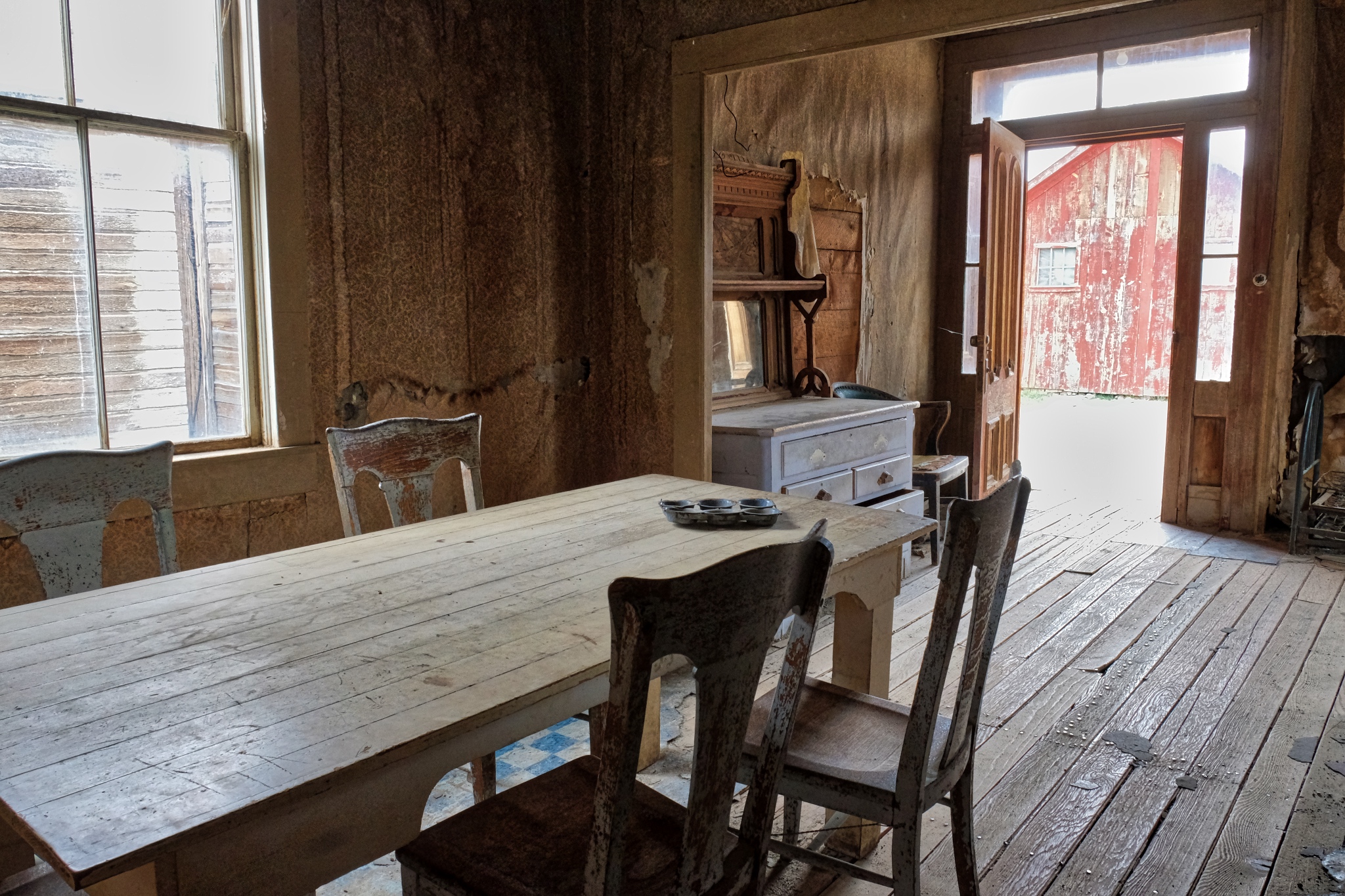 I spent a long time in this old house . . . soaking up the silent beauty . . . and reflecting on the human lives that were lived out here . . . and my own life.
I spent a long time in this old house . . . soaking up the silent beauty . . . and reflecting on the human lives that were lived out here . . . and my own life.
 Such beautiful visual compositions laying around everywhere. Another photographers' paradise!
Such beautiful visual compositions laying around everywhere. Another photographers' paradise!
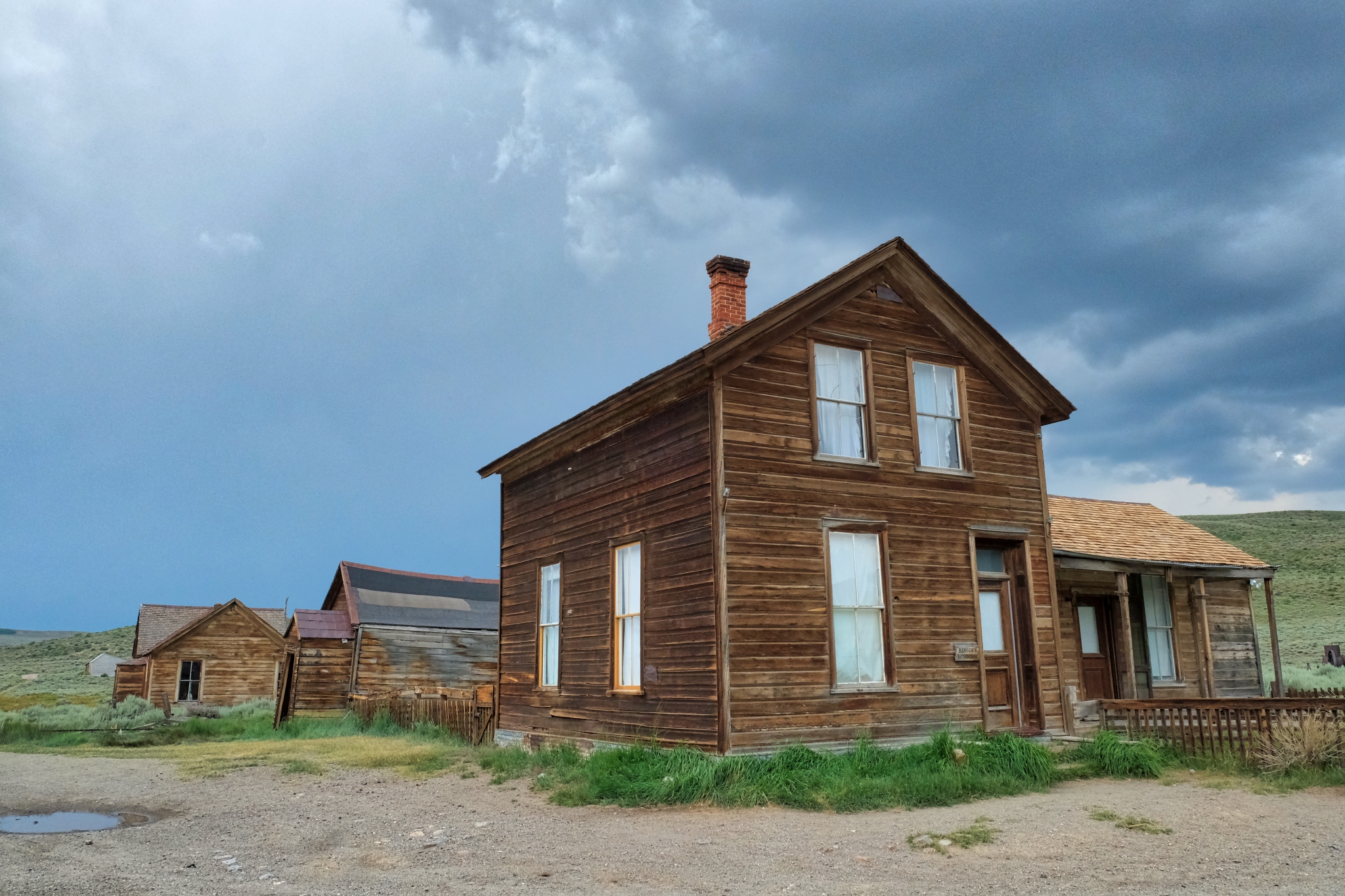 The longer we stayed, the darker the sky became . . . we started to move back to the camper at about this point. There was much more to see in Bodie, but the rain would drive us out.
The longer we stayed, the darker the sky became . . . we started to move back to the camper at about this point. There was much more to see in Bodie, but the rain would drive us out.
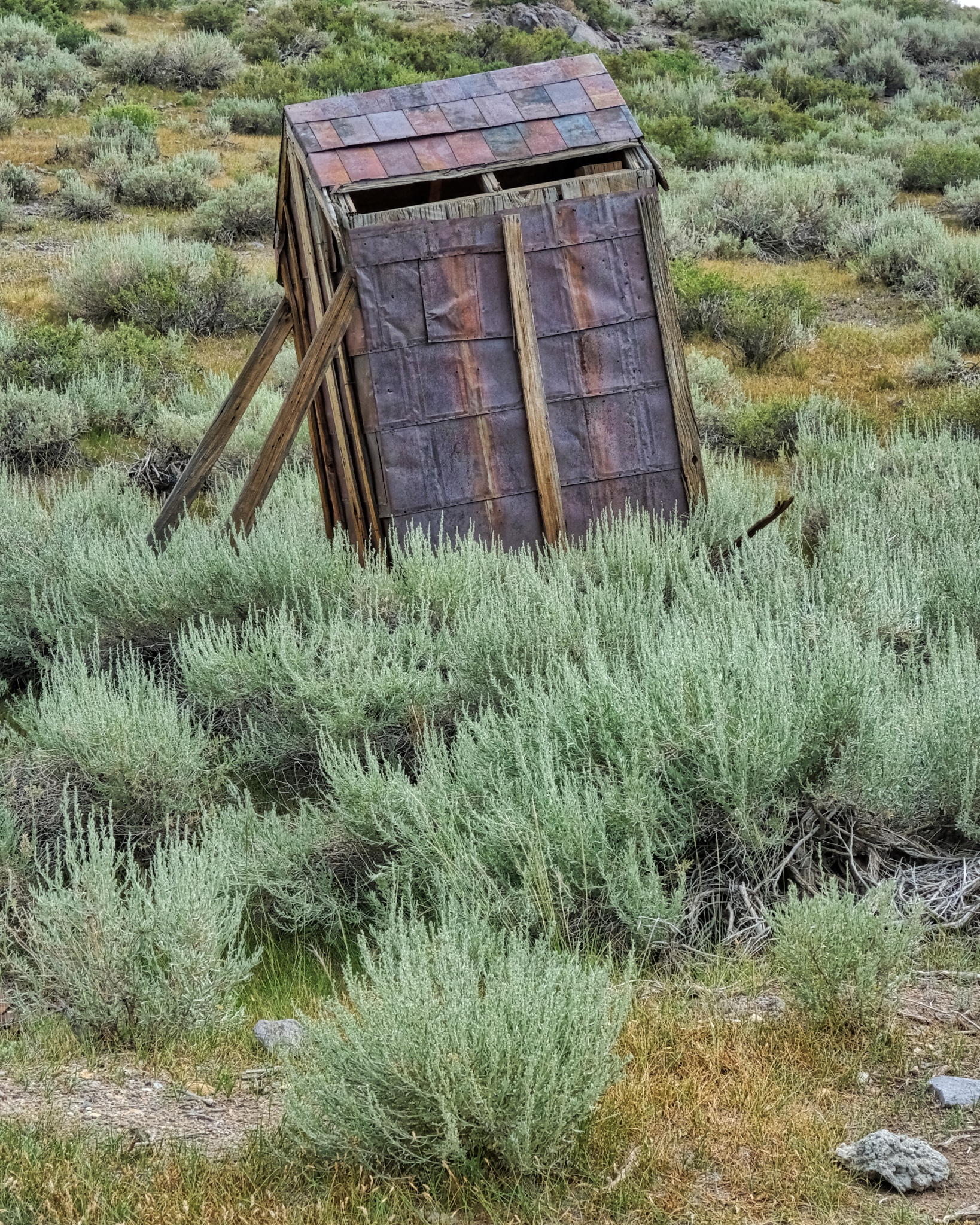 This steel out-house looks like it has tipped over in the past . . . I wonder how this happened?
This steel out-house looks like it has tipped over in the past . . . I wonder how this happened?
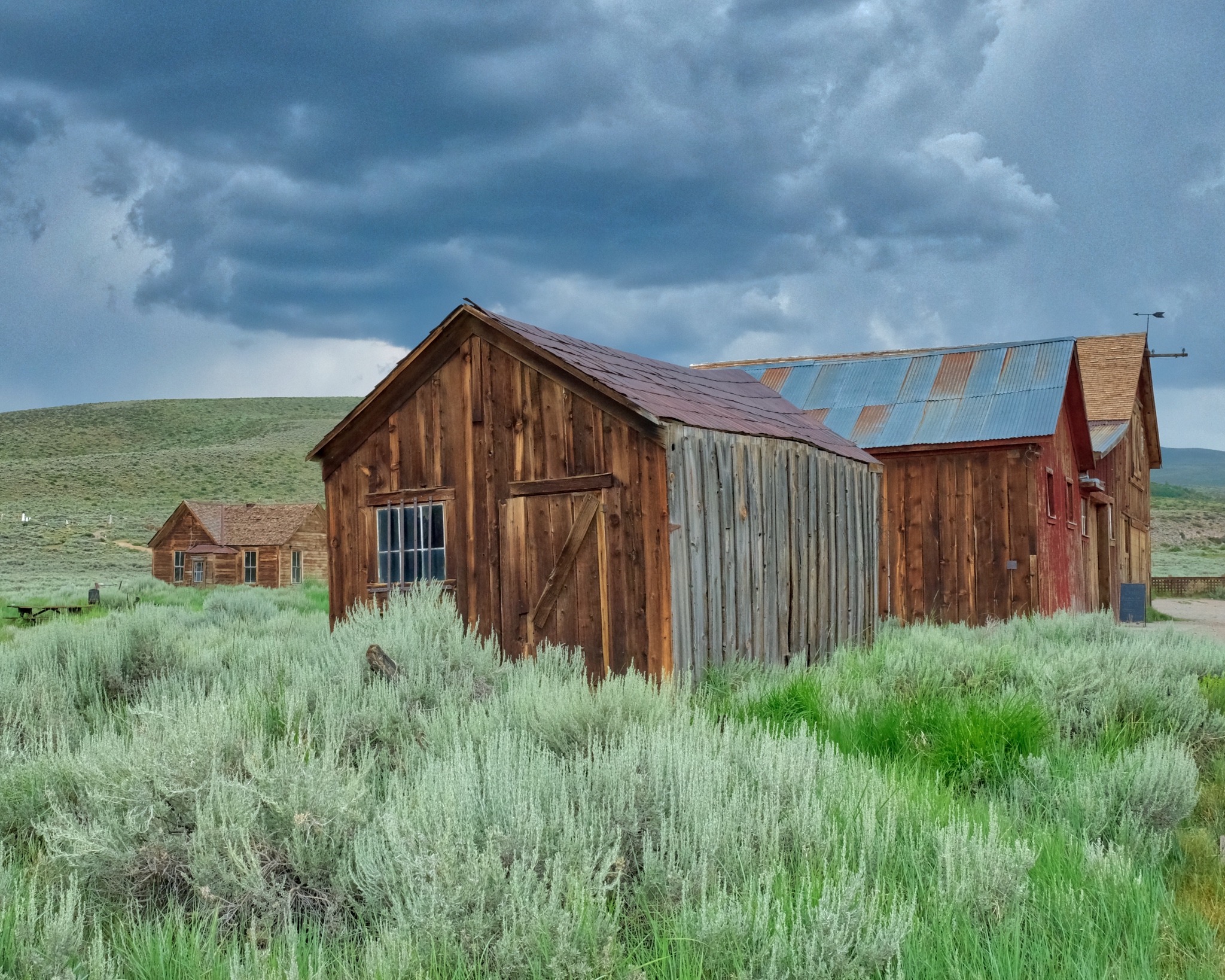 Darker and darker . . .
Darker and darker . . .
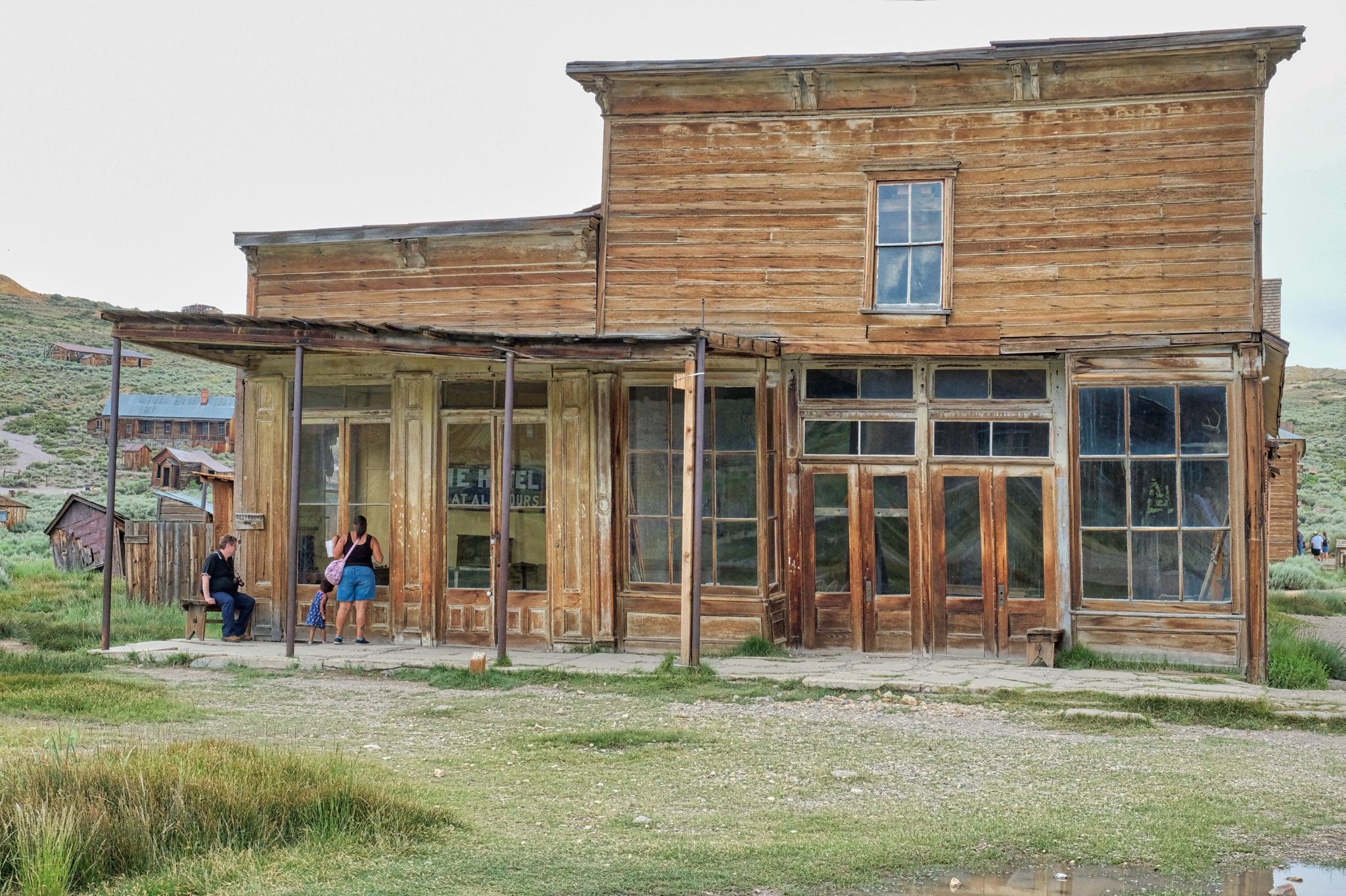 My fellow tourists were heading to cover from the approaching rain.
My fellow tourists were heading to cover from the approaching rain.
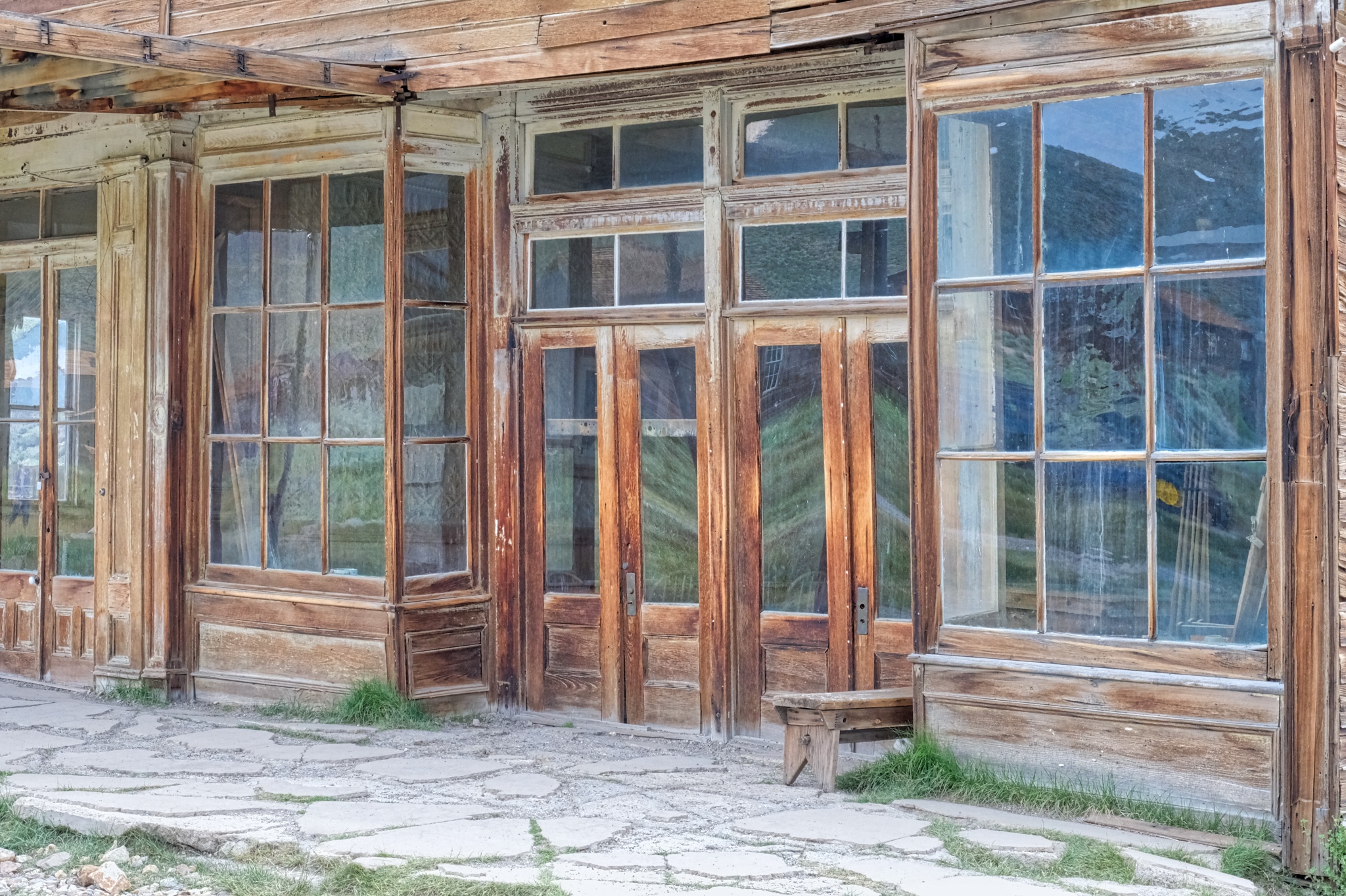 This shop-front must have been beautiful back in the day.
This shop-front must have been beautiful back in the day.
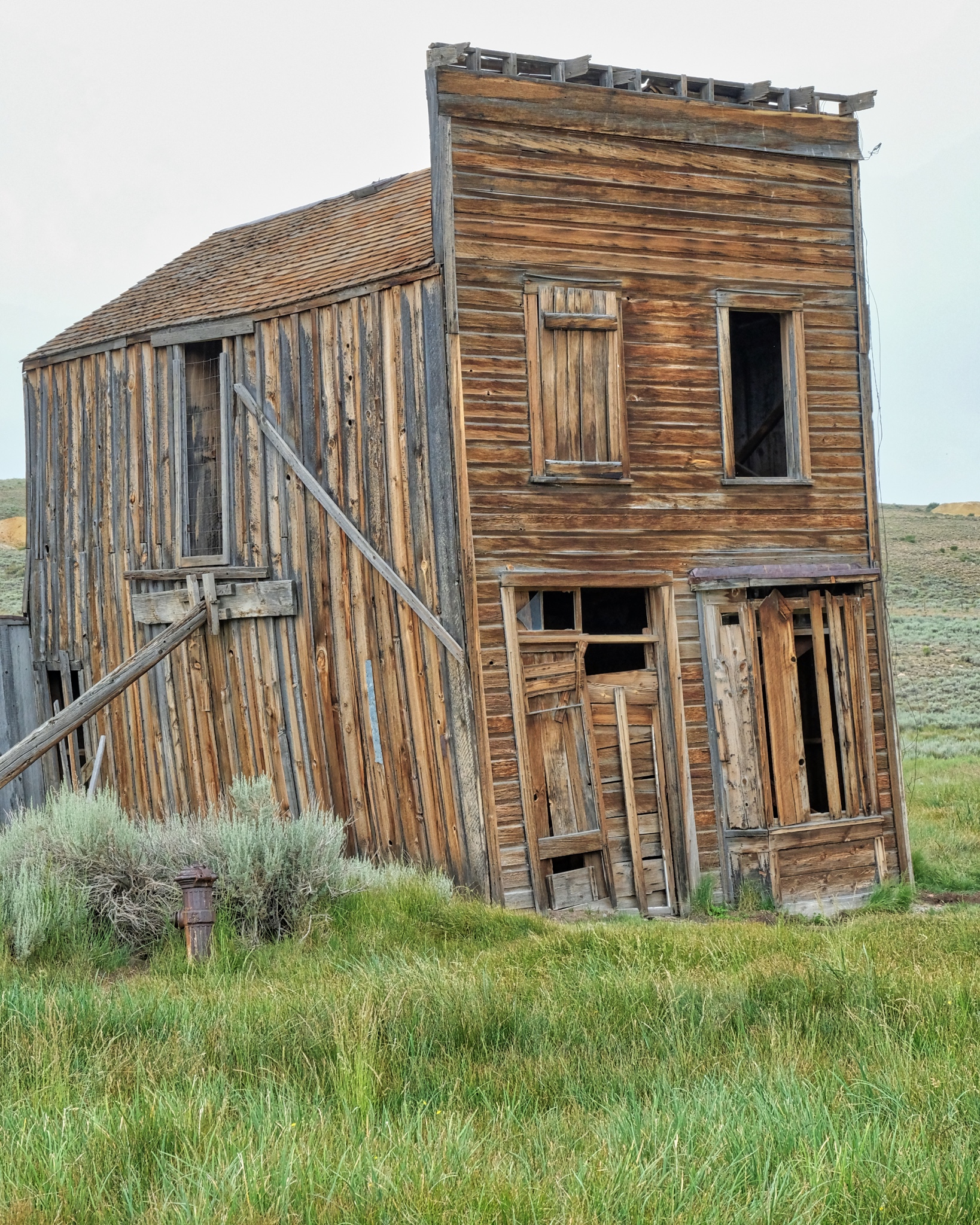 This intreguing and tilting little building was beautiful from the front and side (next photo).
This intreguing and tilting little building was beautiful from the front and side (next photo).
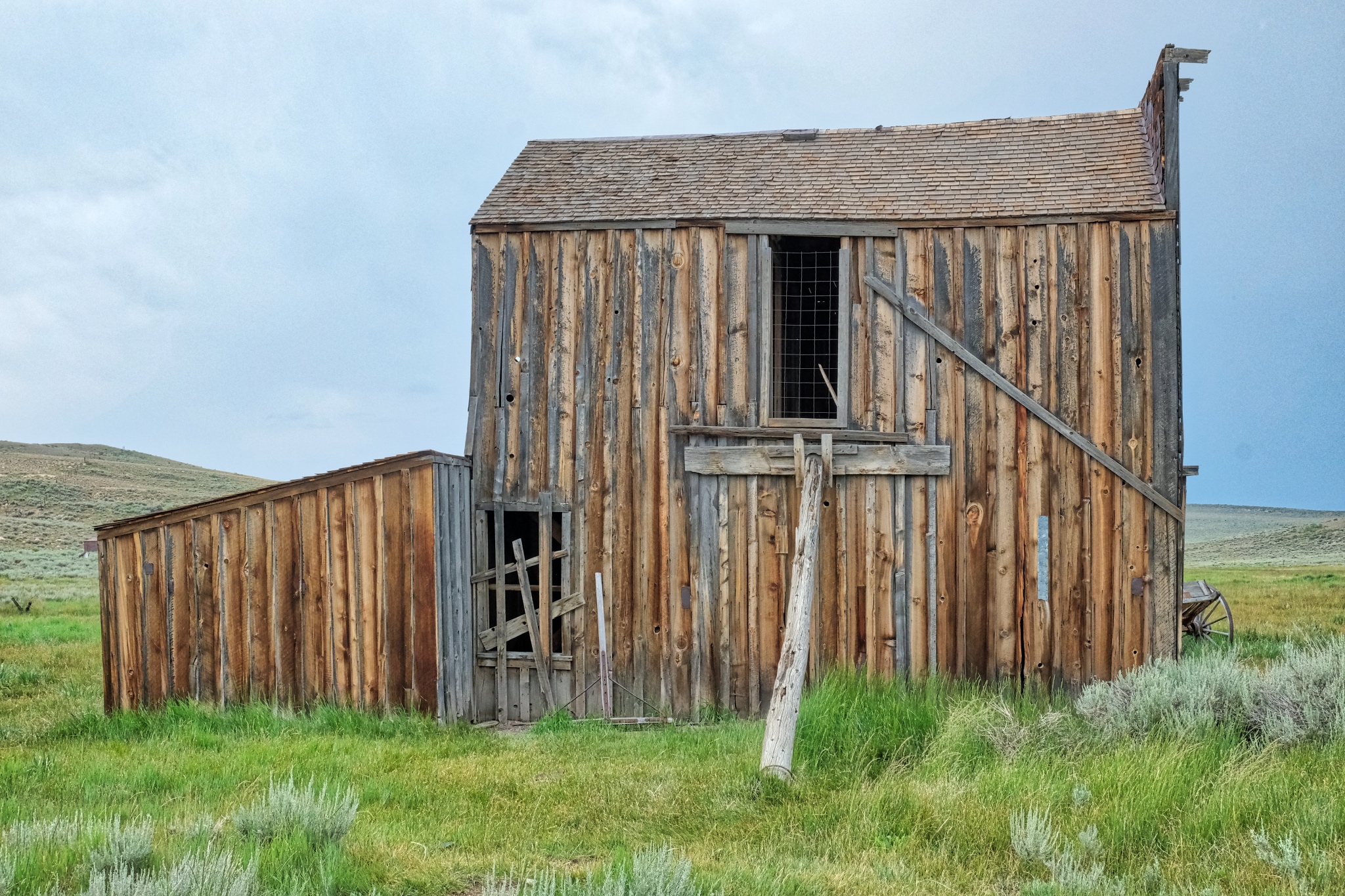 Such wonderfully defined textures and colors . . . highlighted by the fine mist that has settled on them.
Such wonderfully defined textures and colors . . . highlighted by the fine mist that has settled on them.
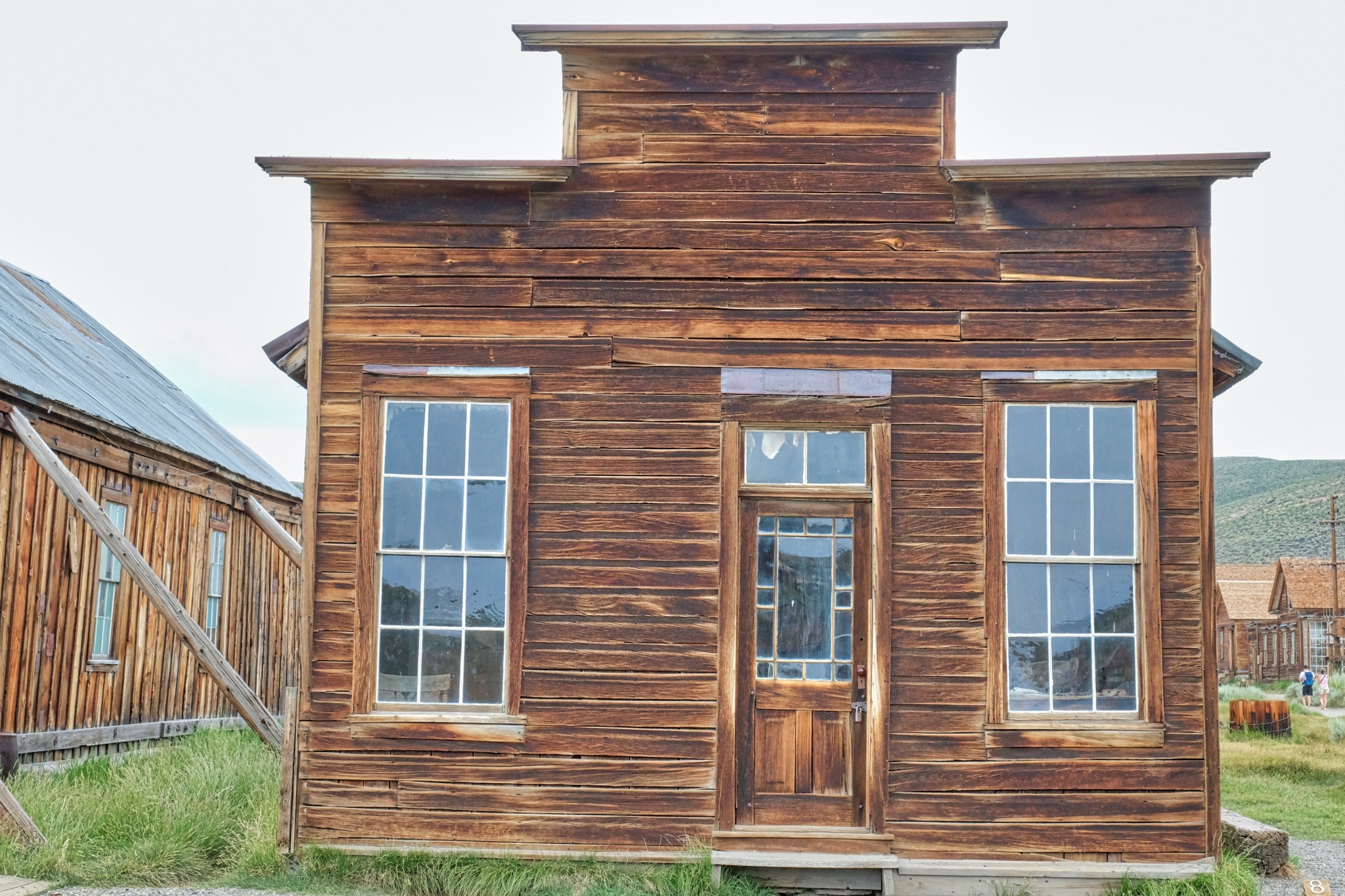 Sweet little place . . .
Sweet little place . . .
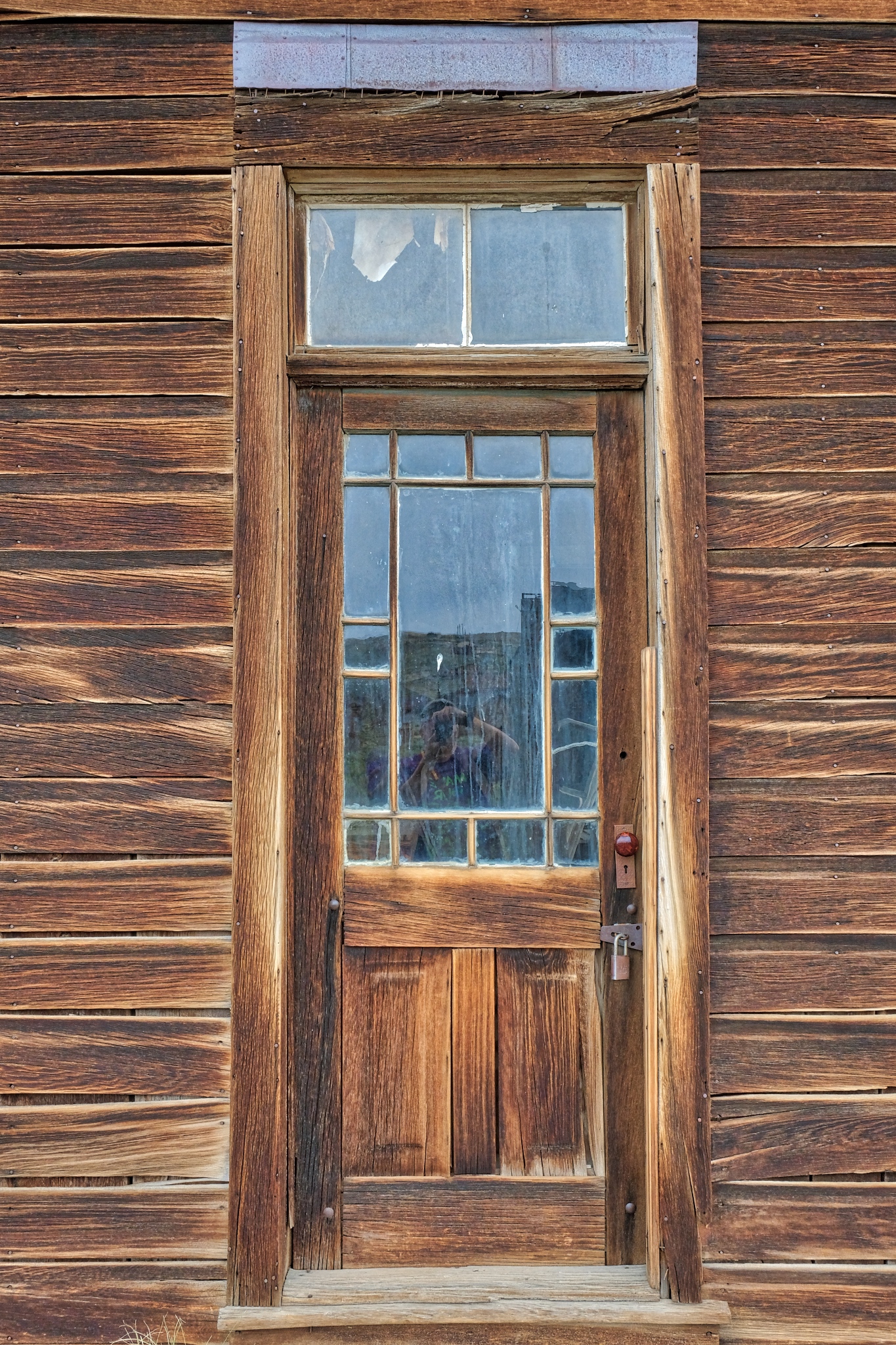 Fine, honest door (and self-portrait!).
Fine, honest door (and self-portrait!).
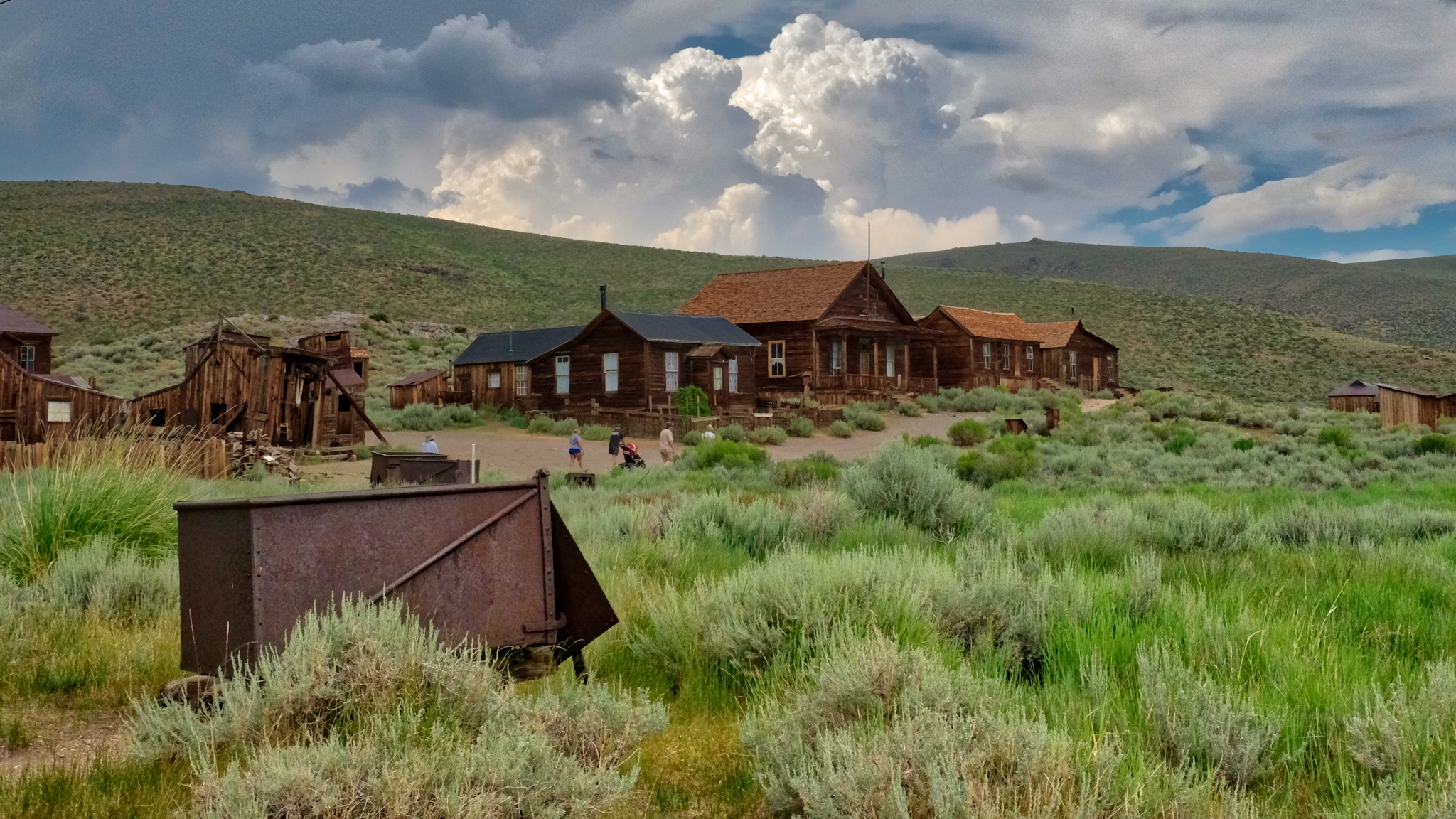 Time to go.
Time to go.
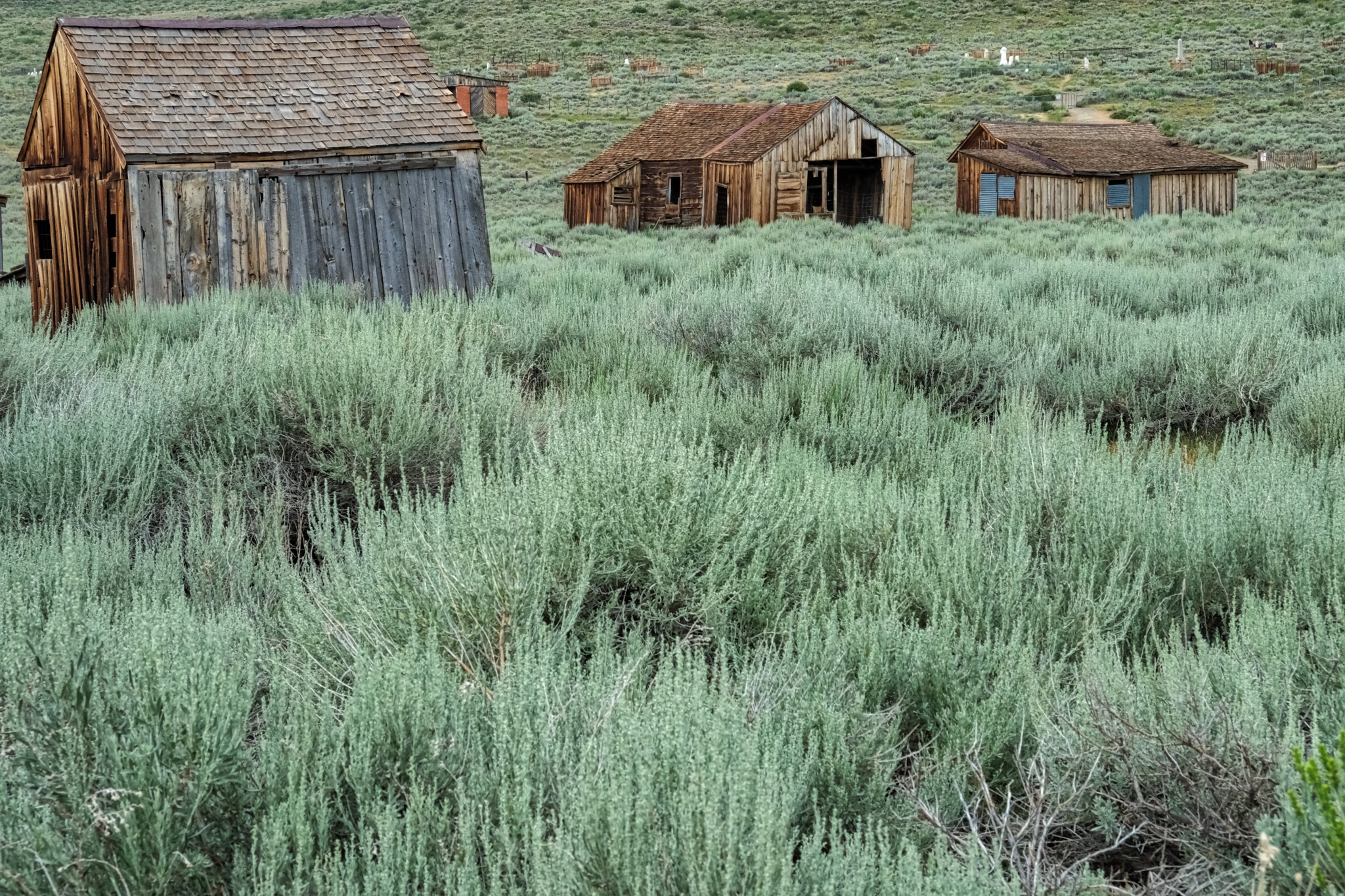 The sage brush has reclaimed most of the streets and paths.
The sage brush has reclaimed most of the streets and paths.
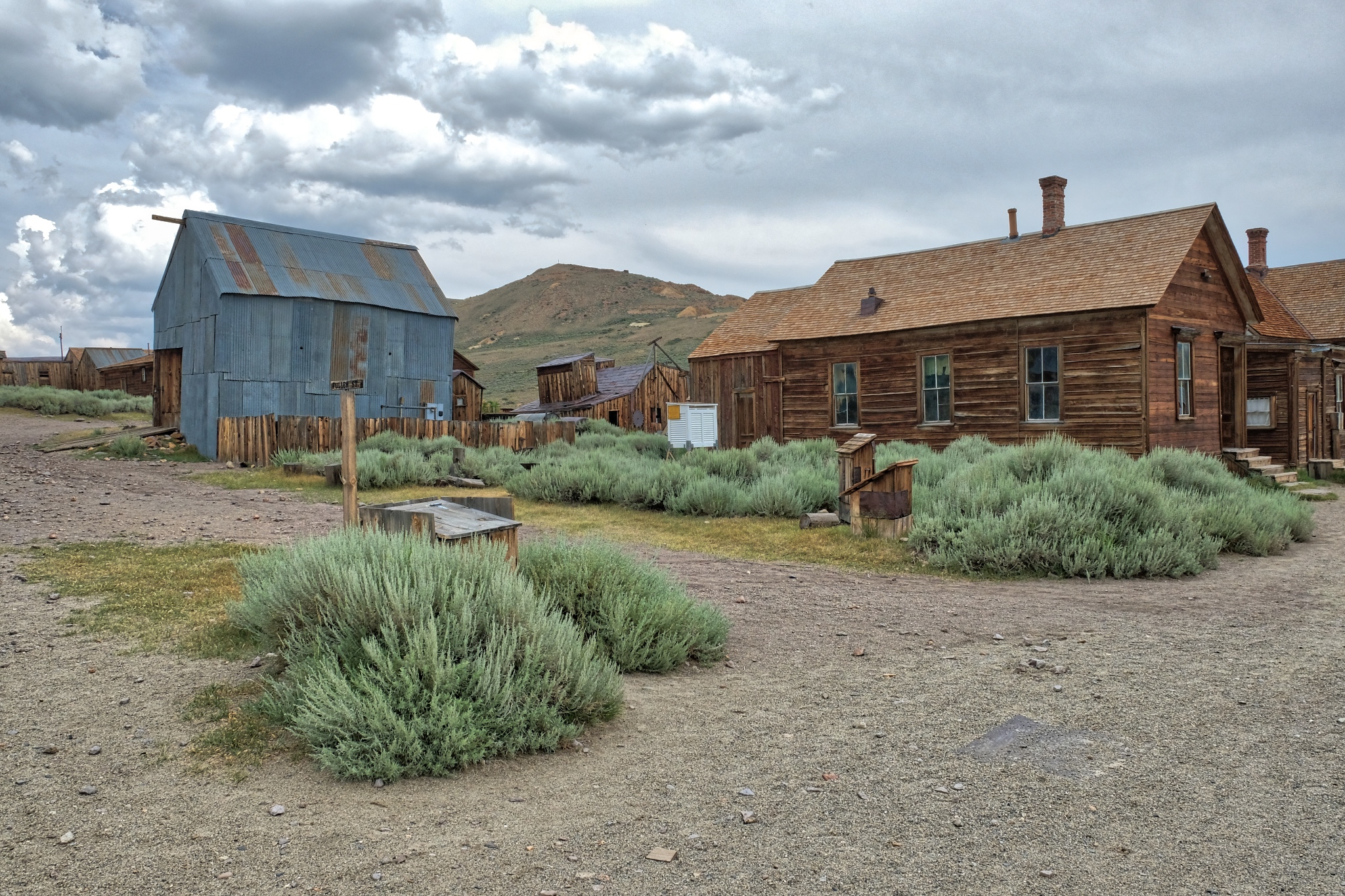 I would like to come back here . . . perhaps when there is some snow on the ground . . . and better light.
I would like to come back here . . . perhaps when there is some snow on the ground . . . and better light.
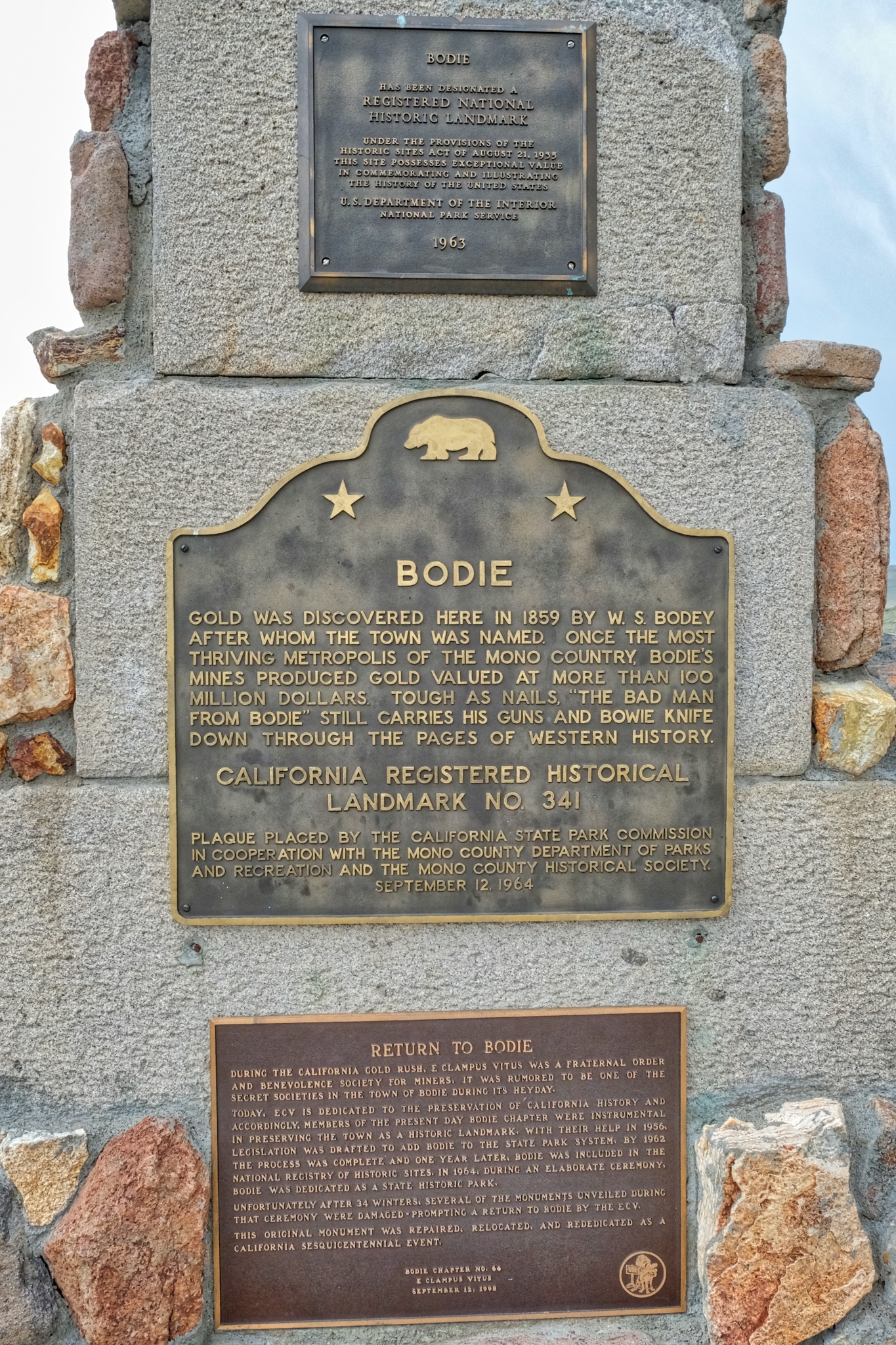 Commemorative plaques.
Commemorative plaques.
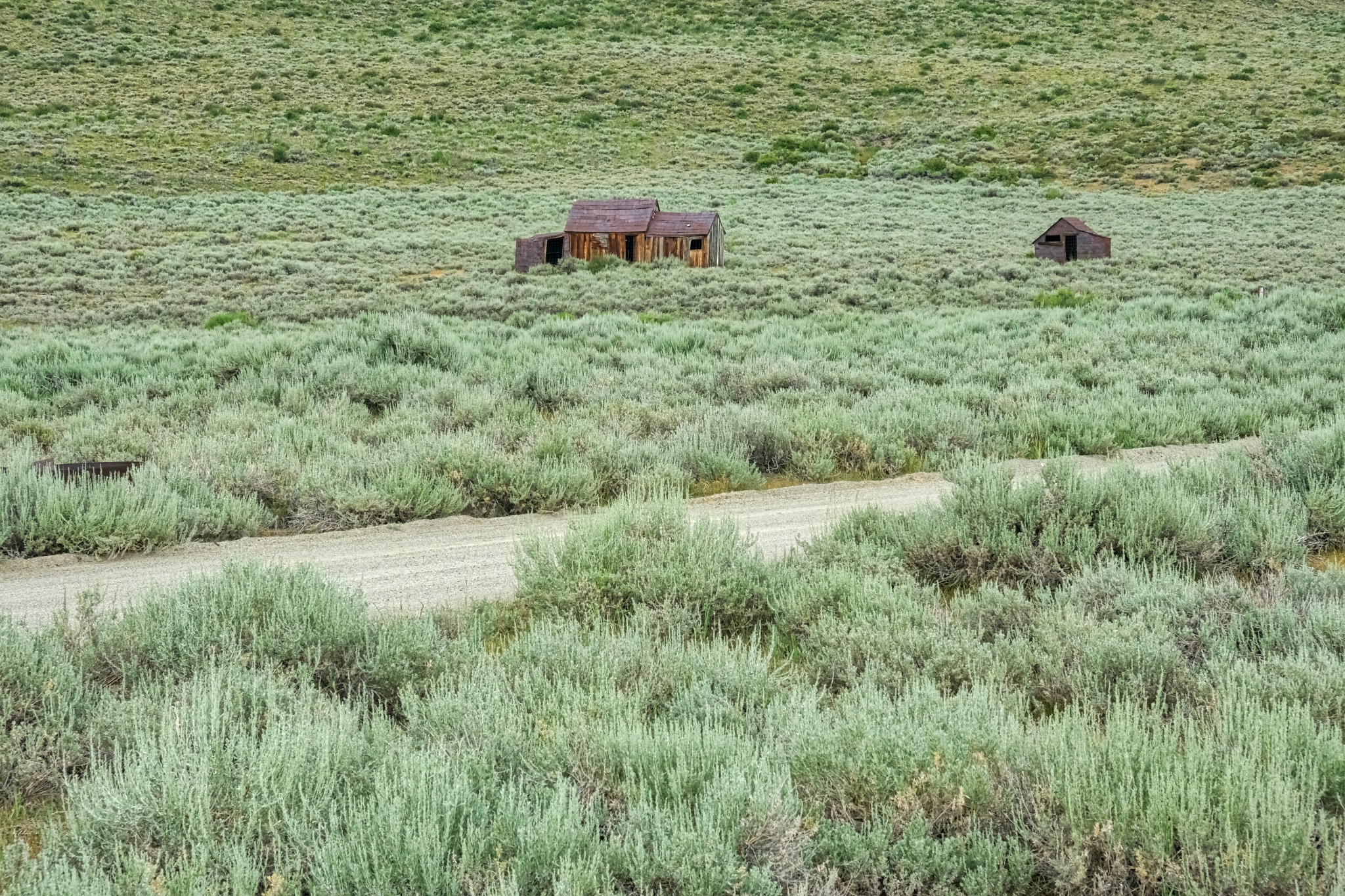 And so, we drove off from Bodie.
And so, we drove off from Bodie.
 One last look at the scattered shacks and sheds among the sage.
One last look at the scattered shacks and sheds among the sage.
 We drove back out the 20 miles to US Highway 395 and headed south toward Mono Lake.
We drove back out the 20 miles to US Highway 395 and headed south toward Mono Lake.
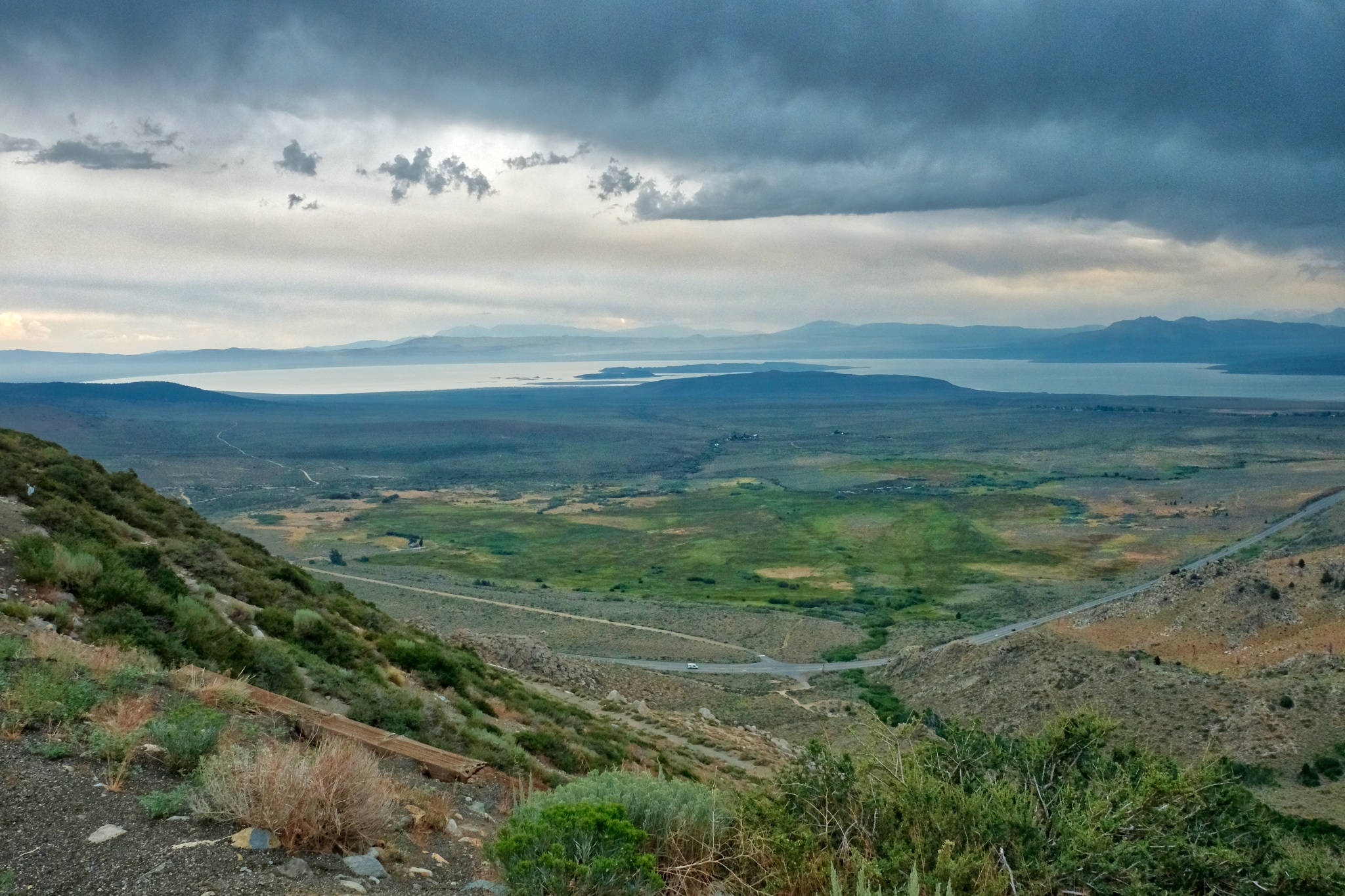 We pulled over on US 395 at this amazing viewpoint high above Mono Lake.
We pulled over on US 395 at this amazing viewpoint high above Mono Lake.
Road Trip USA: Benton Hot Springs, California . . . Almost A Ghost Town
 Sunday, December 30, 2018 at 5:50AM
Sunday, December 30, 2018 at 5:50AM 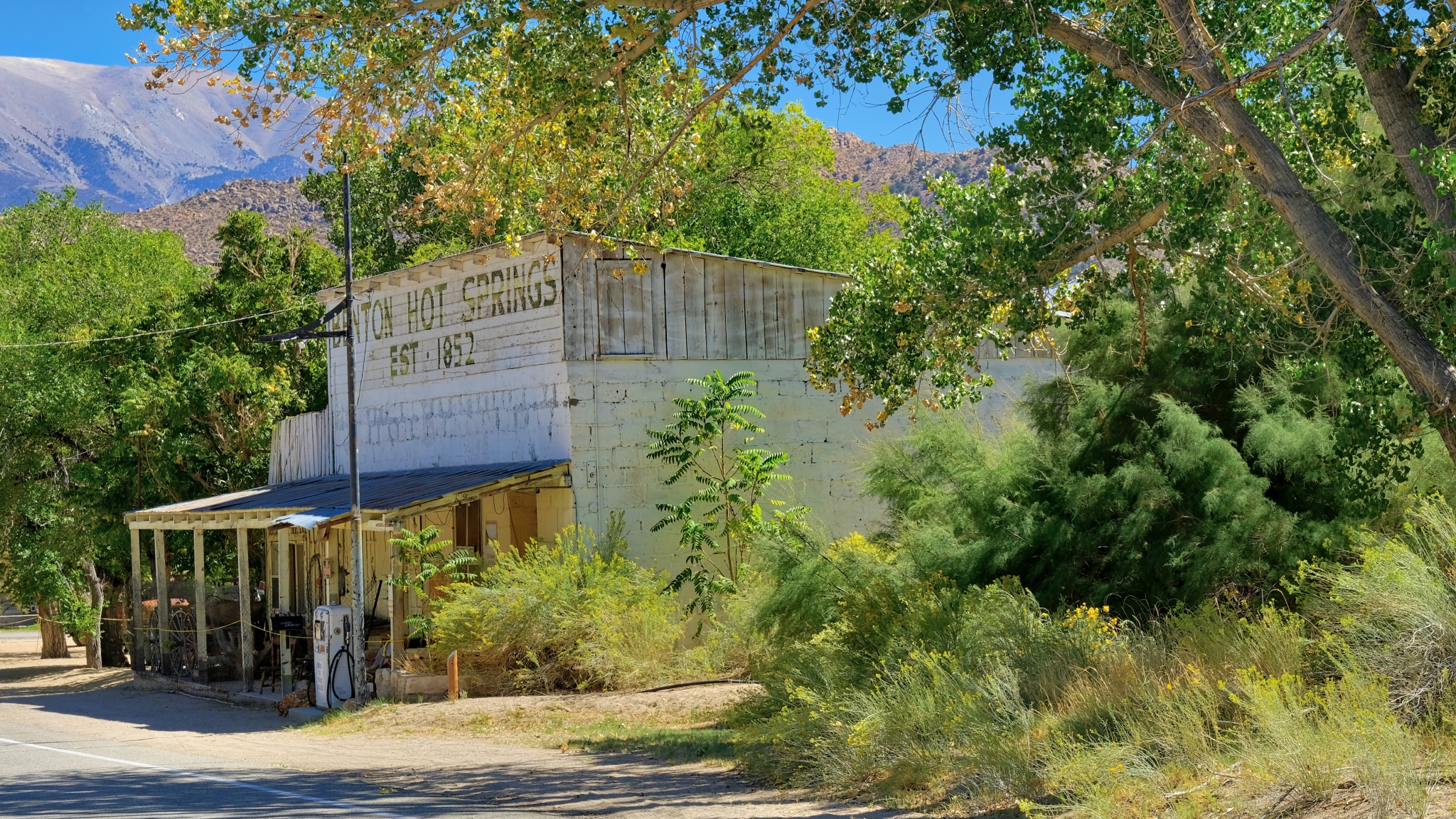 On my drive from the Bonneville Salt Flats in Utah back to my friend's house in the High Eastern Sierras, I took a 'short cut' down some very small, and often unpaved, roads. One of the joys of this type of travel is the discovery of amazingly photogenic little wide spots in the road. One such gem was Benton Hot Springs, just off of US Highway 6, just across the state line . . . on California State Road 120.
On my drive from the Bonneville Salt Flats in Utah back to my friend's house in the High Eastern Sierras, I took a 'short cut' down some very small, and often unpaved, roads. One of the joys of this type of travel is the discovery of amazingly photogenic little wide spots in the road. One such gem was Benton Hot Springs, just off of US Highway 6, just across the state line . . . on California State Road 120.
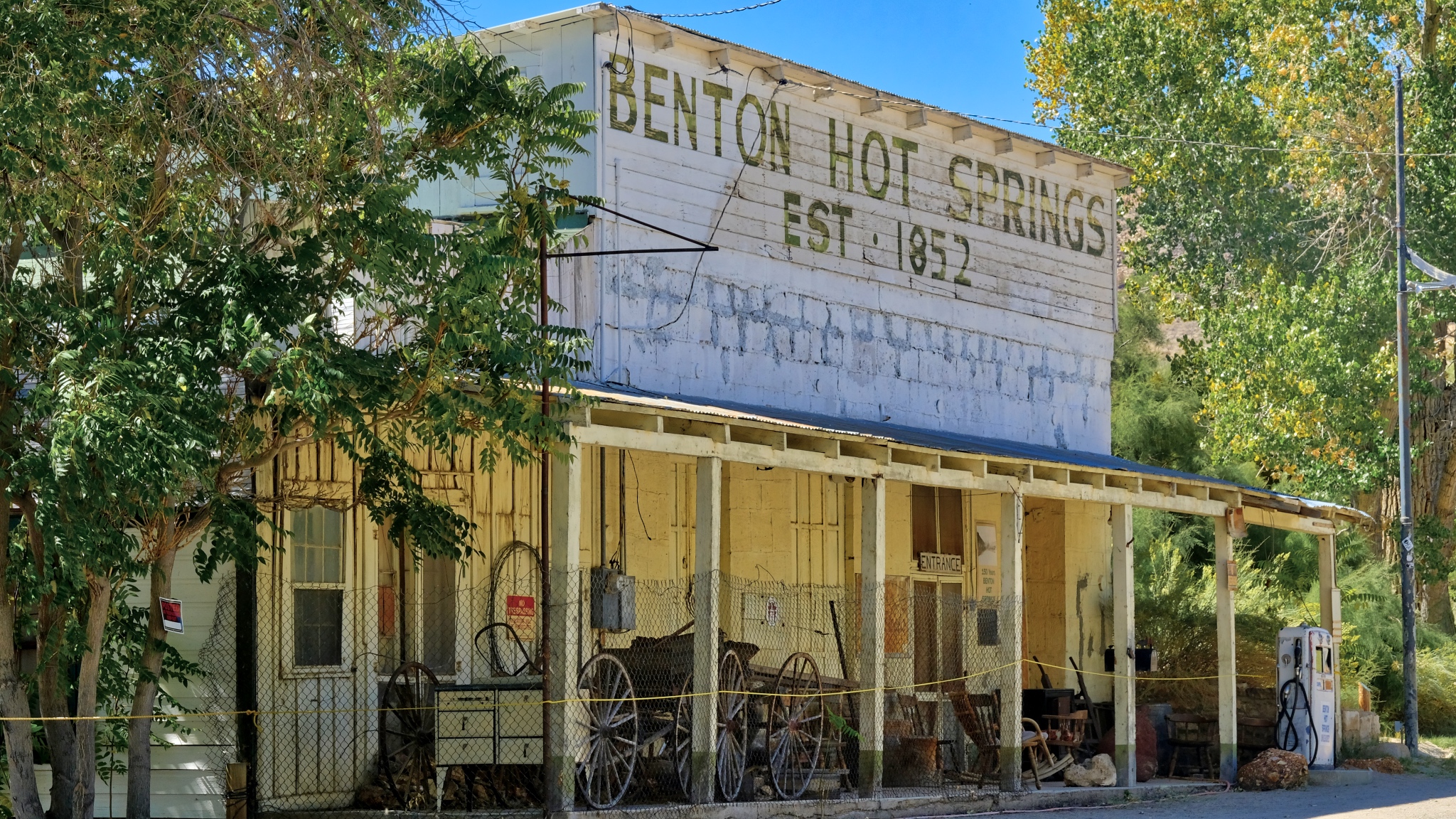 The Benton Hot Springs Hotel is the pride of the nearly dead town. The hotel (now closed) was founded as a general store and Wells Fargo Station in 1868.
The Benton Hot Springs Hotel is the pride of the nearly dead town. The hotel (now closed) was founded as a general store and Wells Fargo Station in 1868.
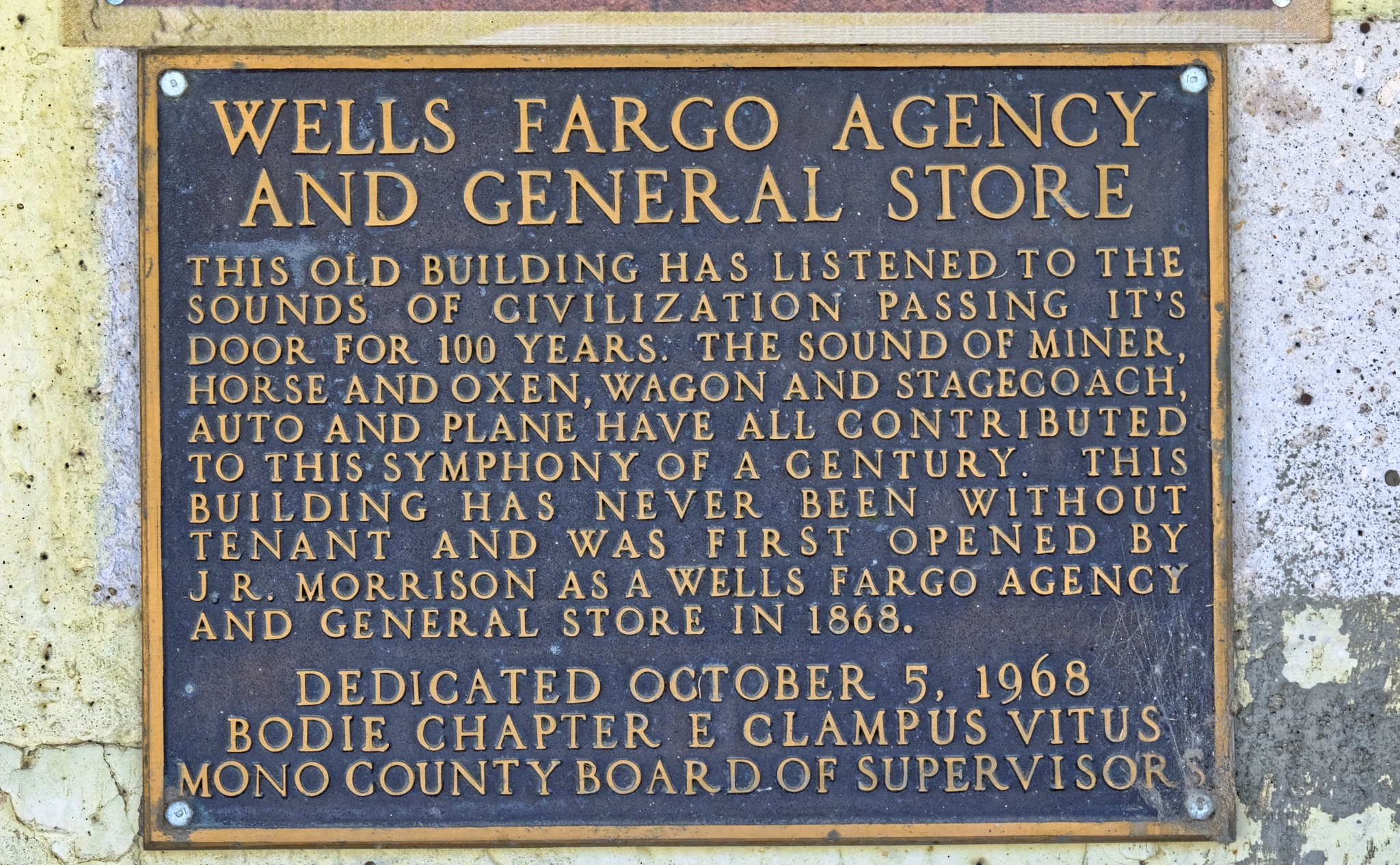 This lovely, and poetical plaque was placed on the old hotel in 1968.
This lovely, and poetical plaque was placed on the old hotel in 1968.
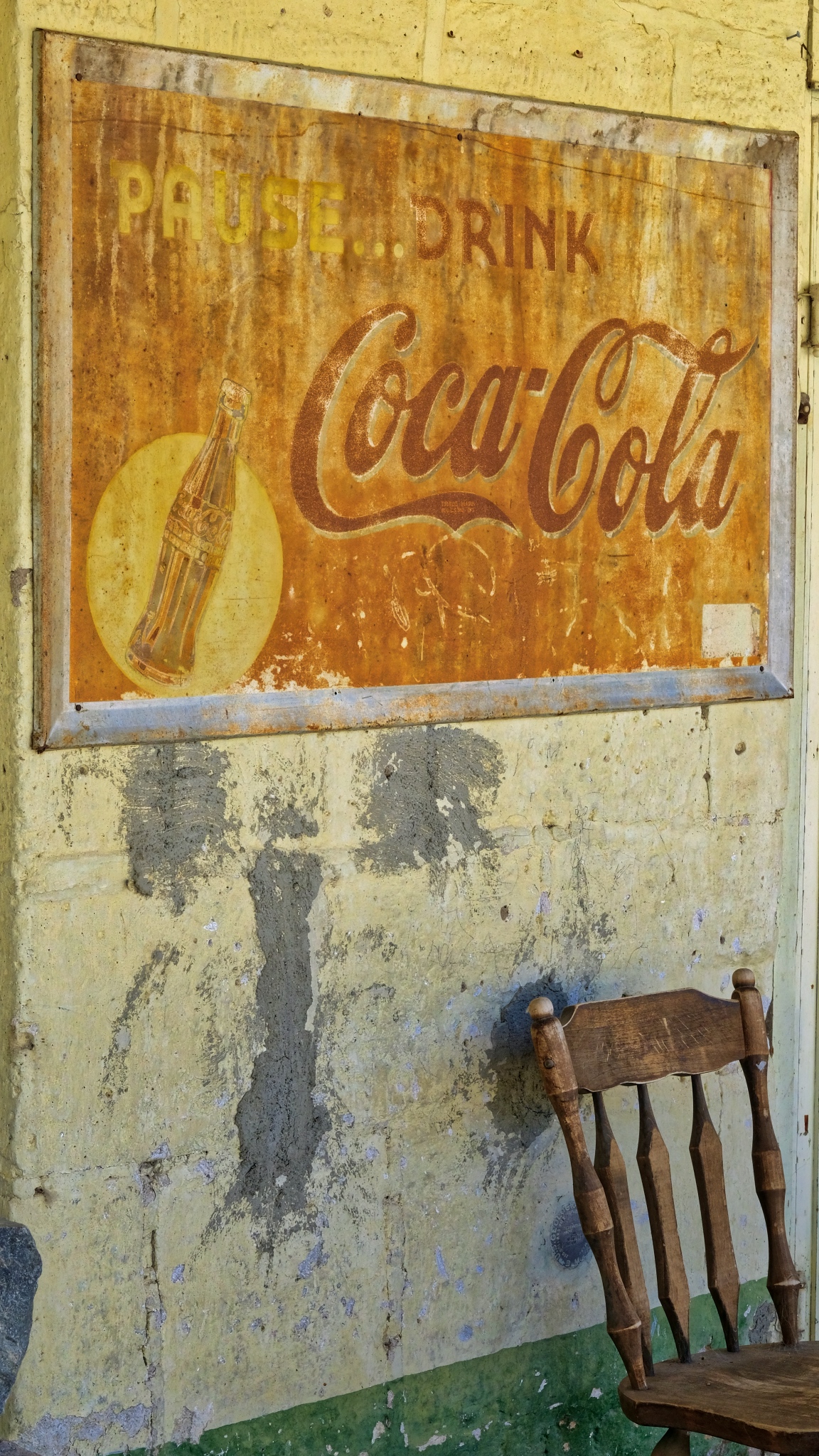 A nice place to lean a chair and pop open an ice cold Nehi on a hot summer day.
A nice place to lean a chair and pop open an ice cold Nehi on a hot summer day.
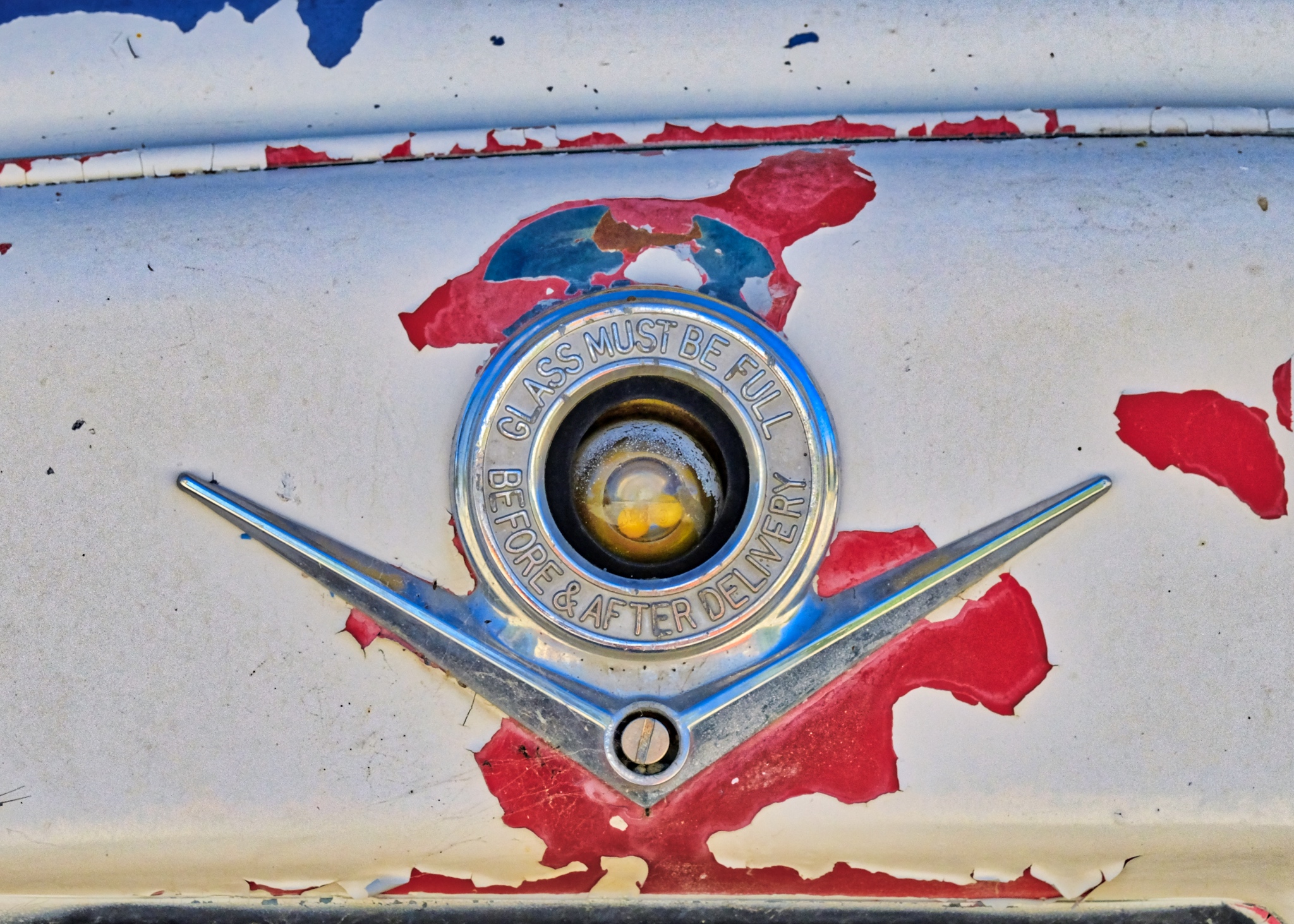 The old hotel/store still had its old gas pump outside.
The old hotel/store still had its old gas pump outside.
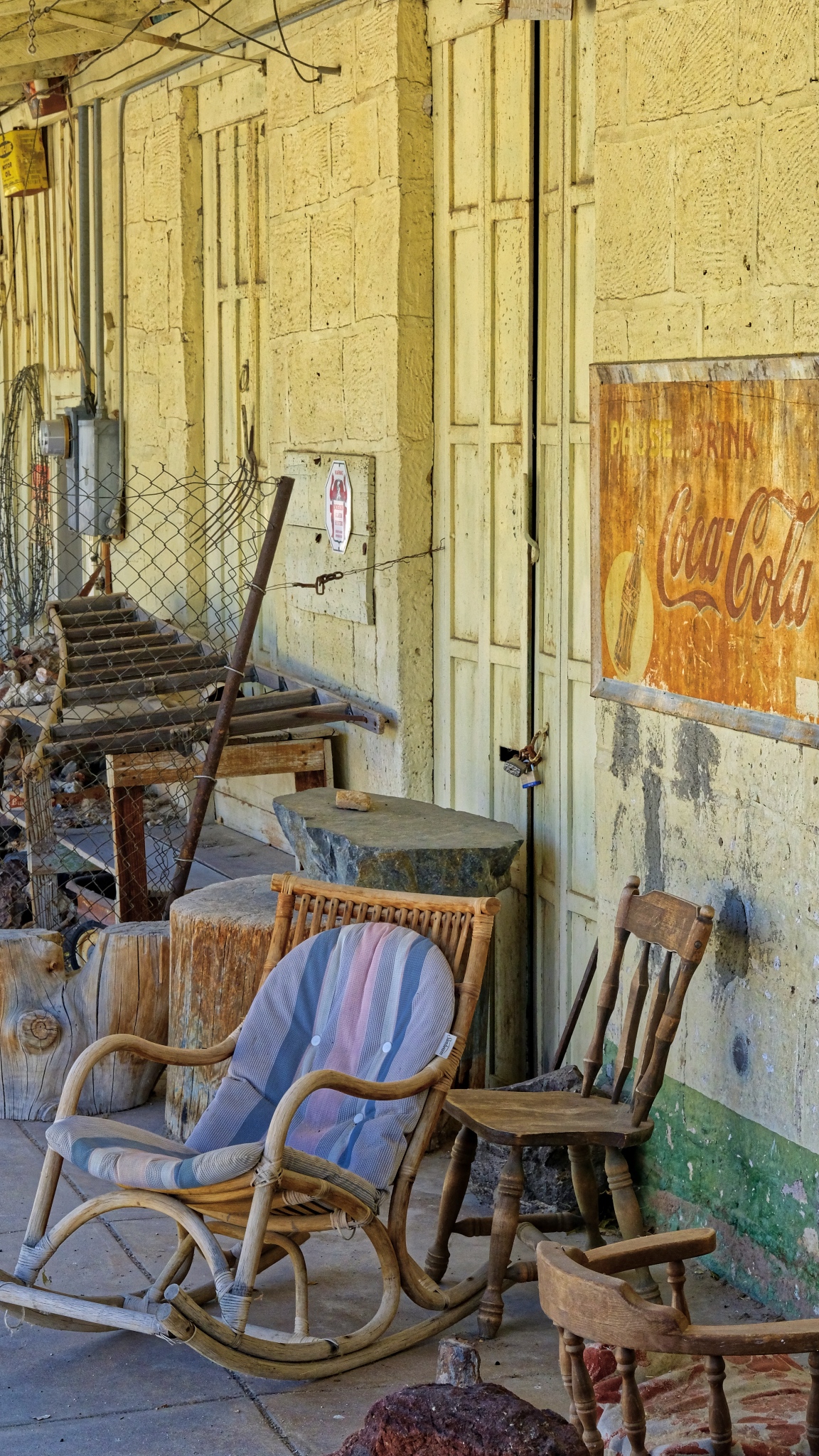 A lazy place lost in the dust of time.
A lazy place lost in the dust of time.
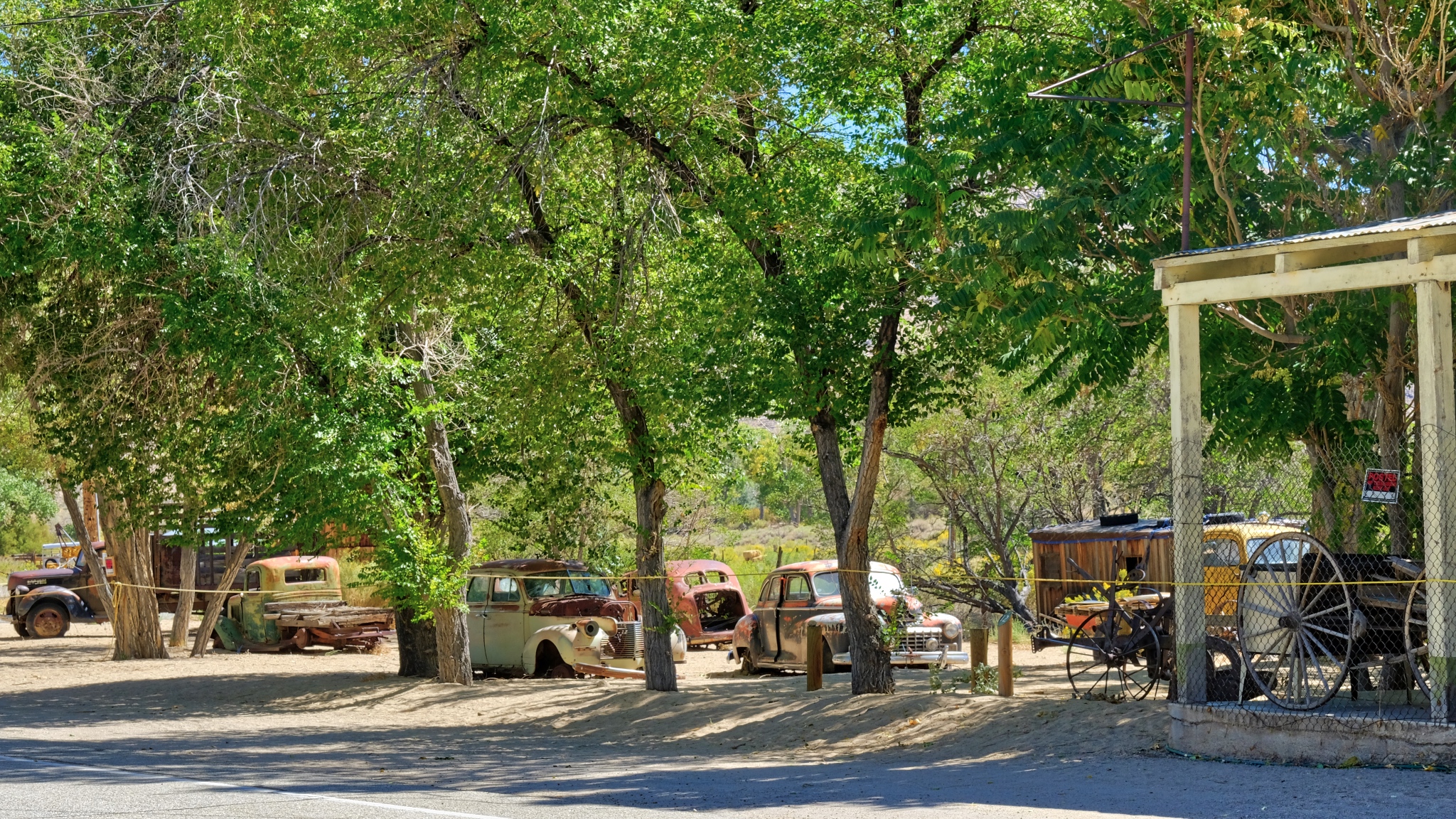 But what caught my eye in the first place as I drove along State Highway 120 were the old abandoned cars just beyond the hotel.
But what caught my eye in the first place as I drove along State Highway 120 were the old abandoned cars just beyond the hotel.
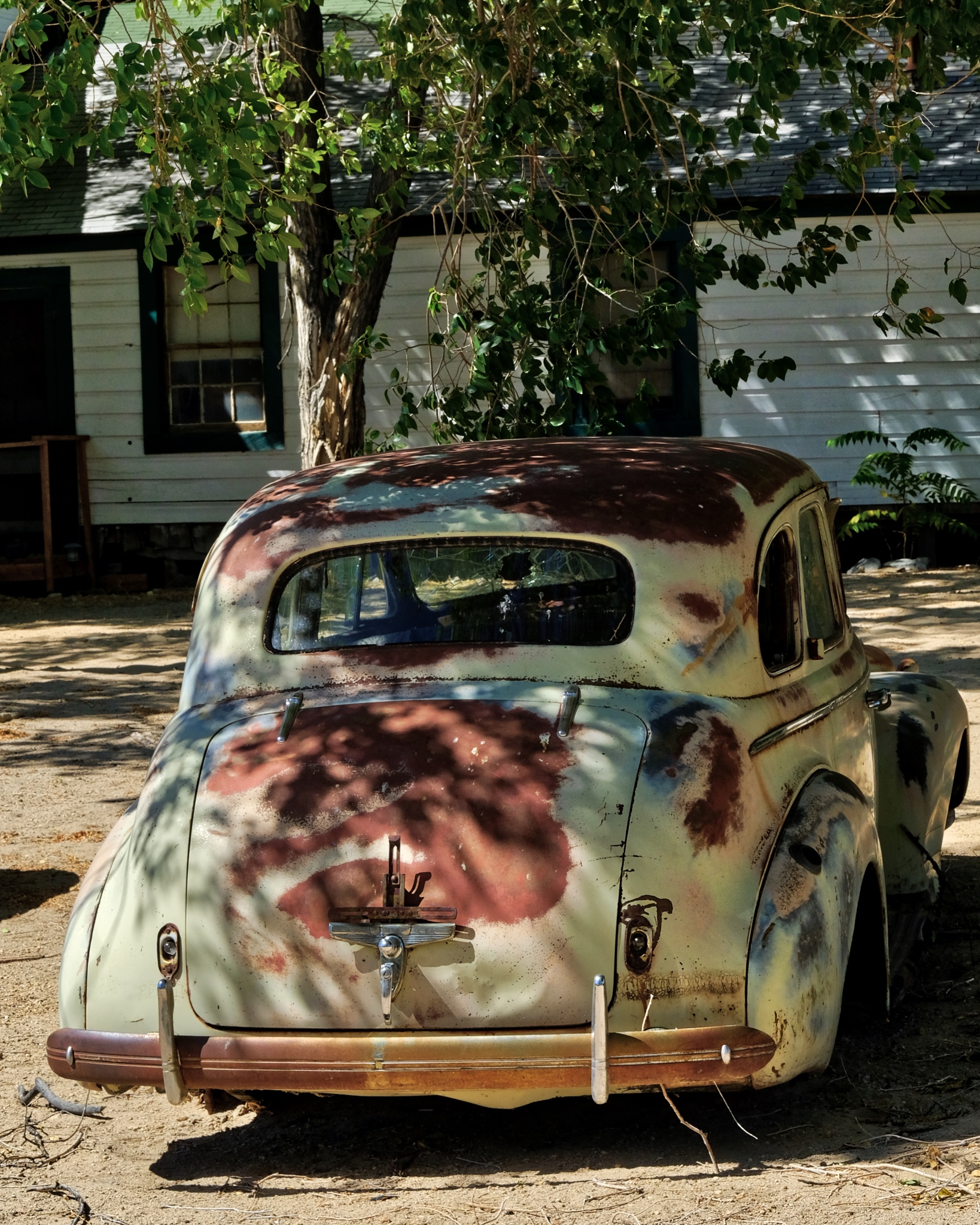 Although these cars were not necessarily abandoned where they sat (they had obviously been towed to their present locations for photographic effect, one suspects), they made for a wonderful atmosphere of age and neglect . . . my favorite subject!
Although these cars were not necessarily abandoned where they sat (they had obviously been towed to their present locations for photographic effect, one suspects), they made for a wonderful atmosphere of age and neglect . . . my favorite subject!
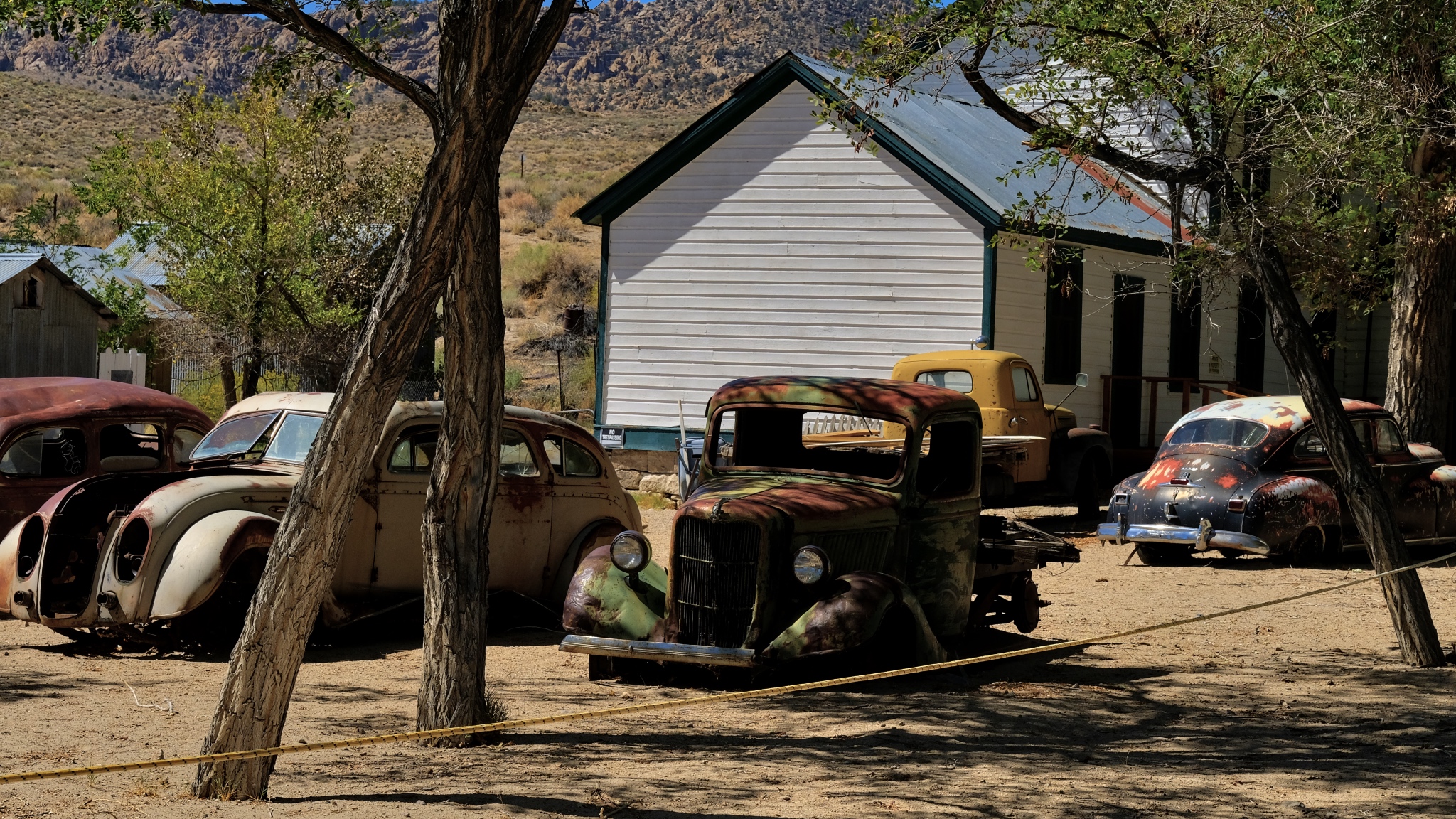 When I crisscrossed the USA with my family in the '50s and '60s, these kinds of scenes were common. Now, not so much.
When I crisscrossed the USA with my family in the '50s and '60s, these kinds of scenes were common. Now, not so much.
 I spotted a few very interesting cars here, like the 1934-1937 Chrysler Airflow (middle) - the first production car that attempted aerodynamic streamlining to increase economy.
I spotted a few very interesting cars here, like the 1934-1937 Chrysler Airflow (middle) - the first production car that attempted aerodynamic streamlining to increase economy.
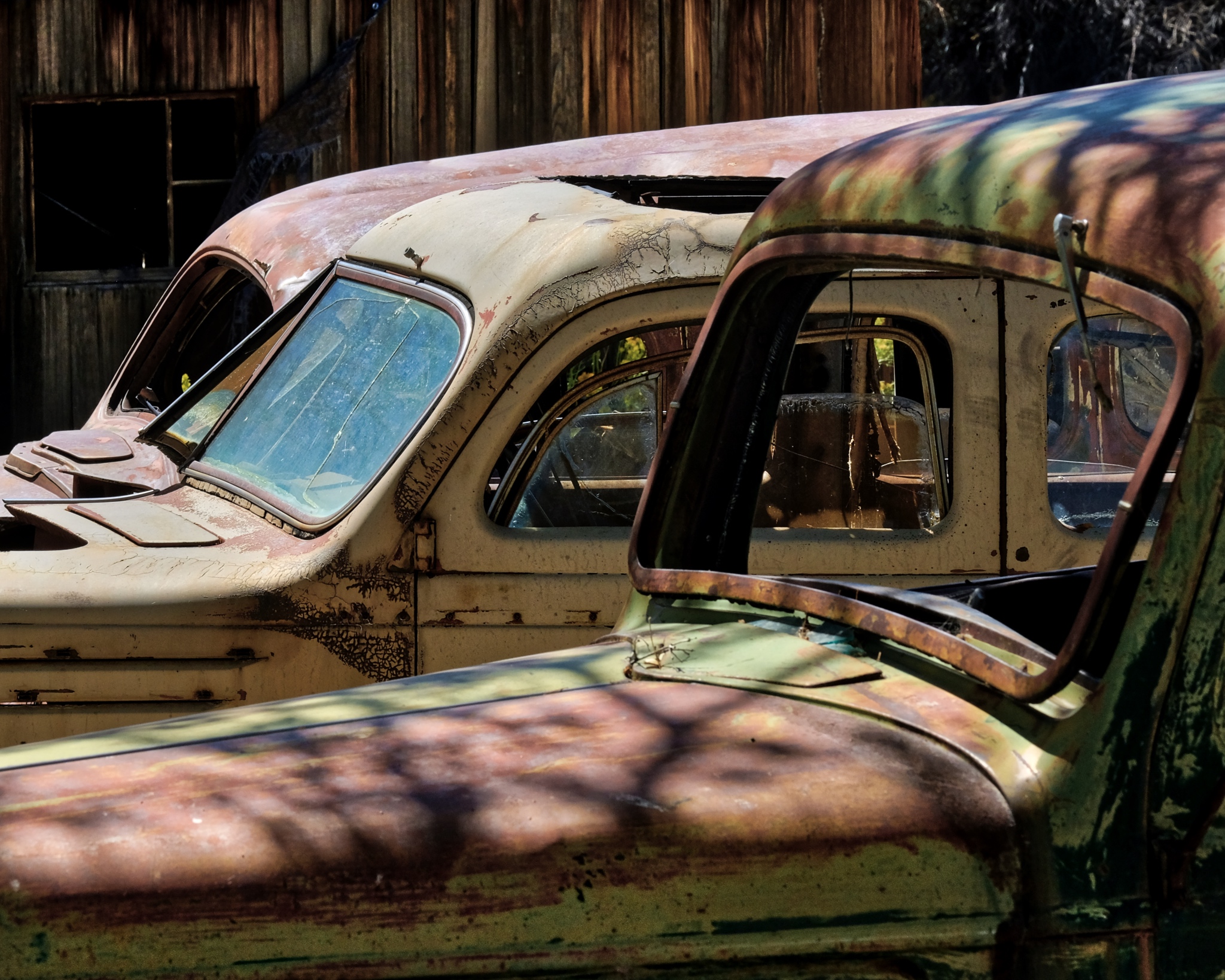 I had fun being an "art photographer" with all the shapes and patterns around me.
I had fun being an "art photographer" with all the shapes and patterns around me.
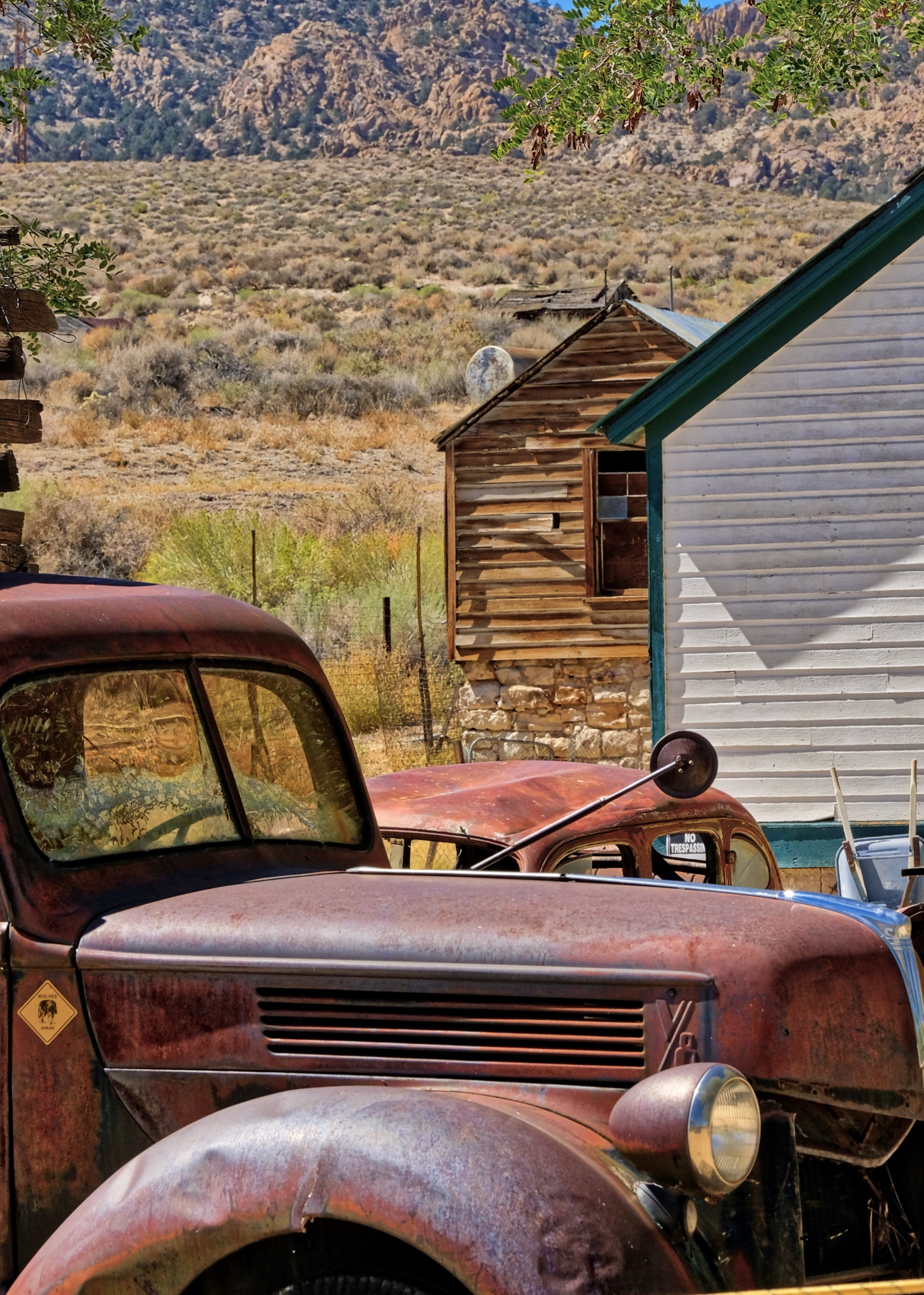 These scenes lend themselves to black and white photography, so I have added a number of B&W photos to the end of this blog entry.
These scenes lend themselves to black and white photography, so I have added a number of B&W photos to the end of this blog entry.
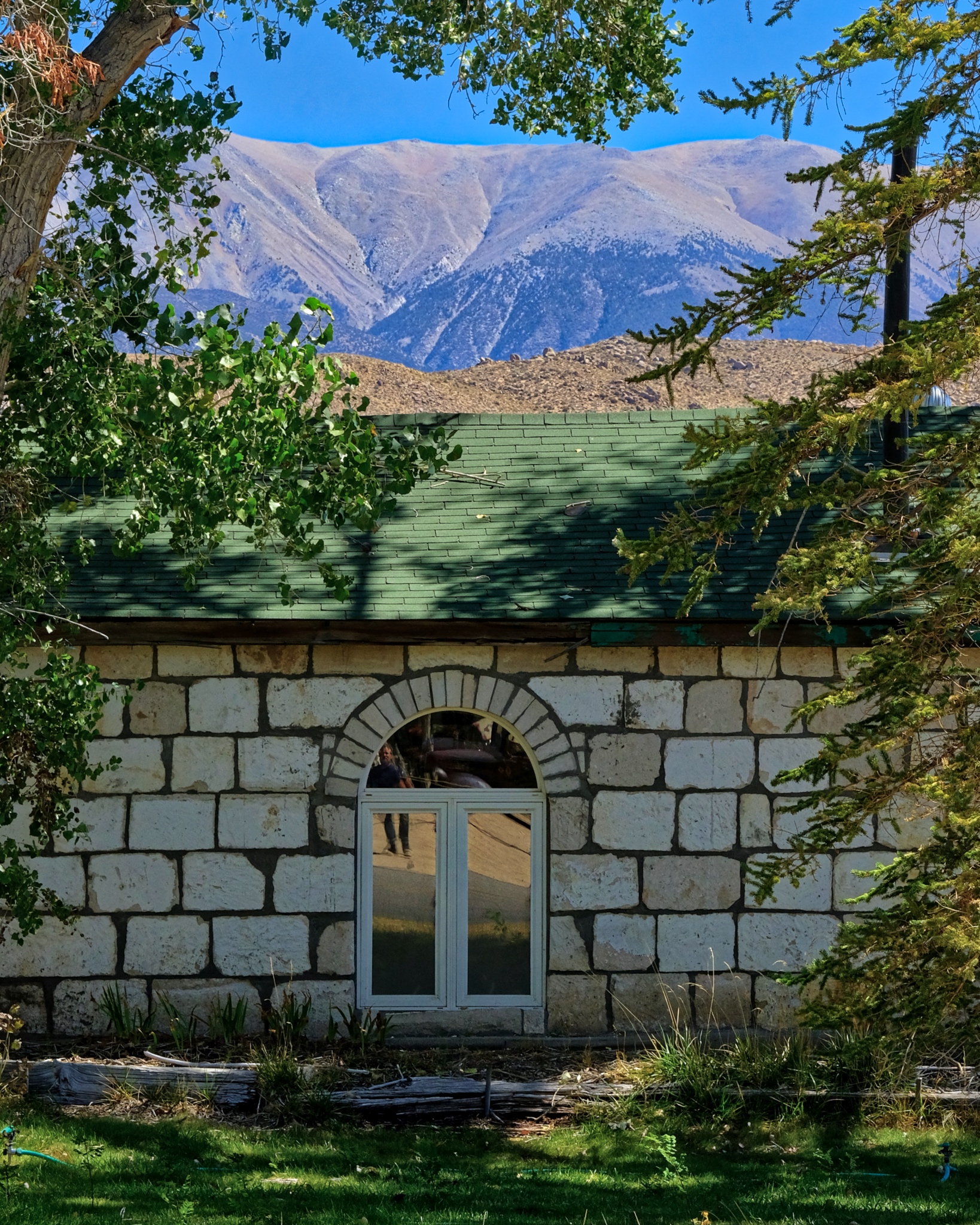 There weren't very many buildings in Benton Hot Springs, but this one had nice arched windows.
There weren't very many buildings in Benton Hot Springs, but this one had nice arched windows.
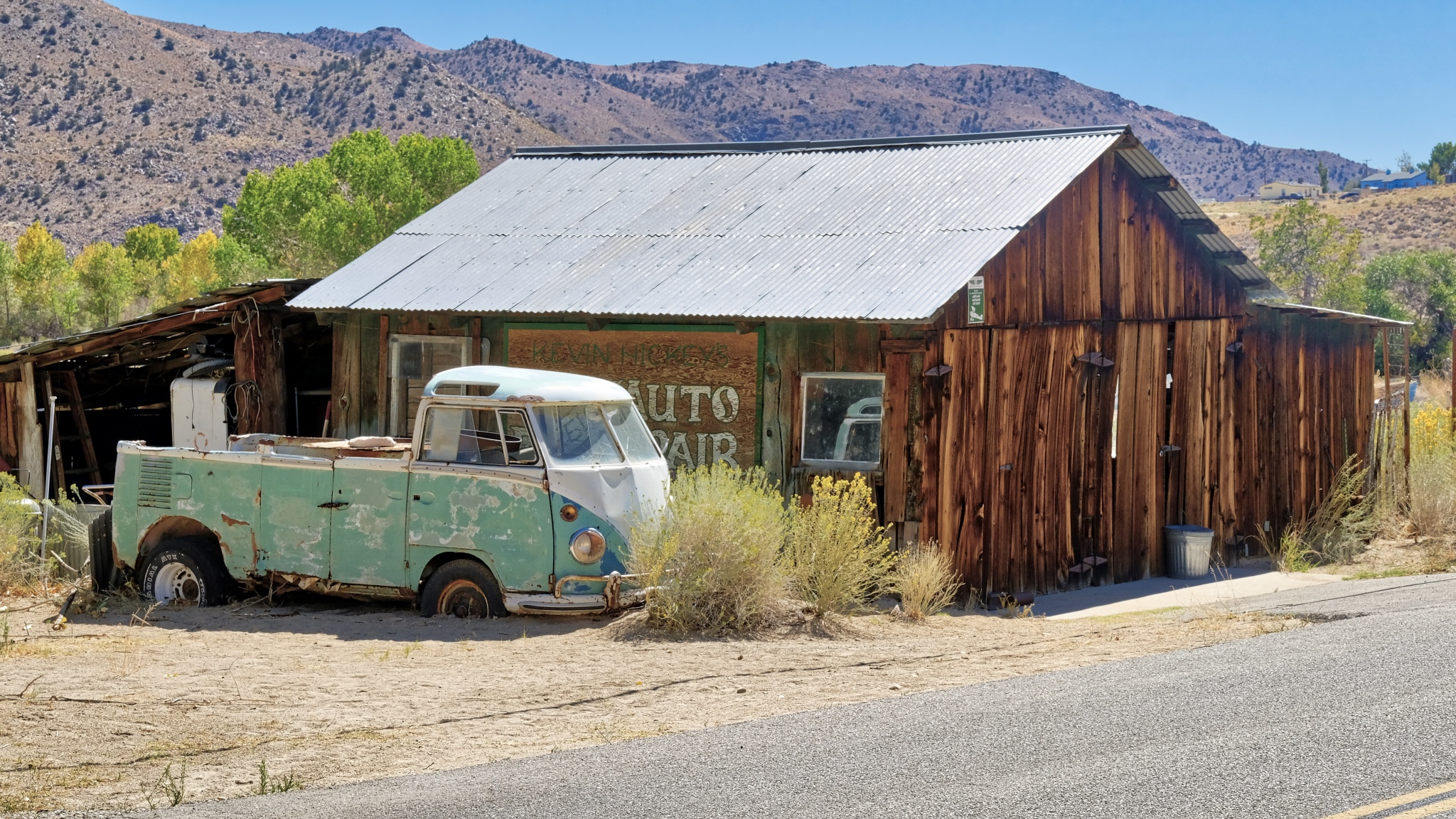 A chopped up old VW bus.
A chopped up old VW bus.
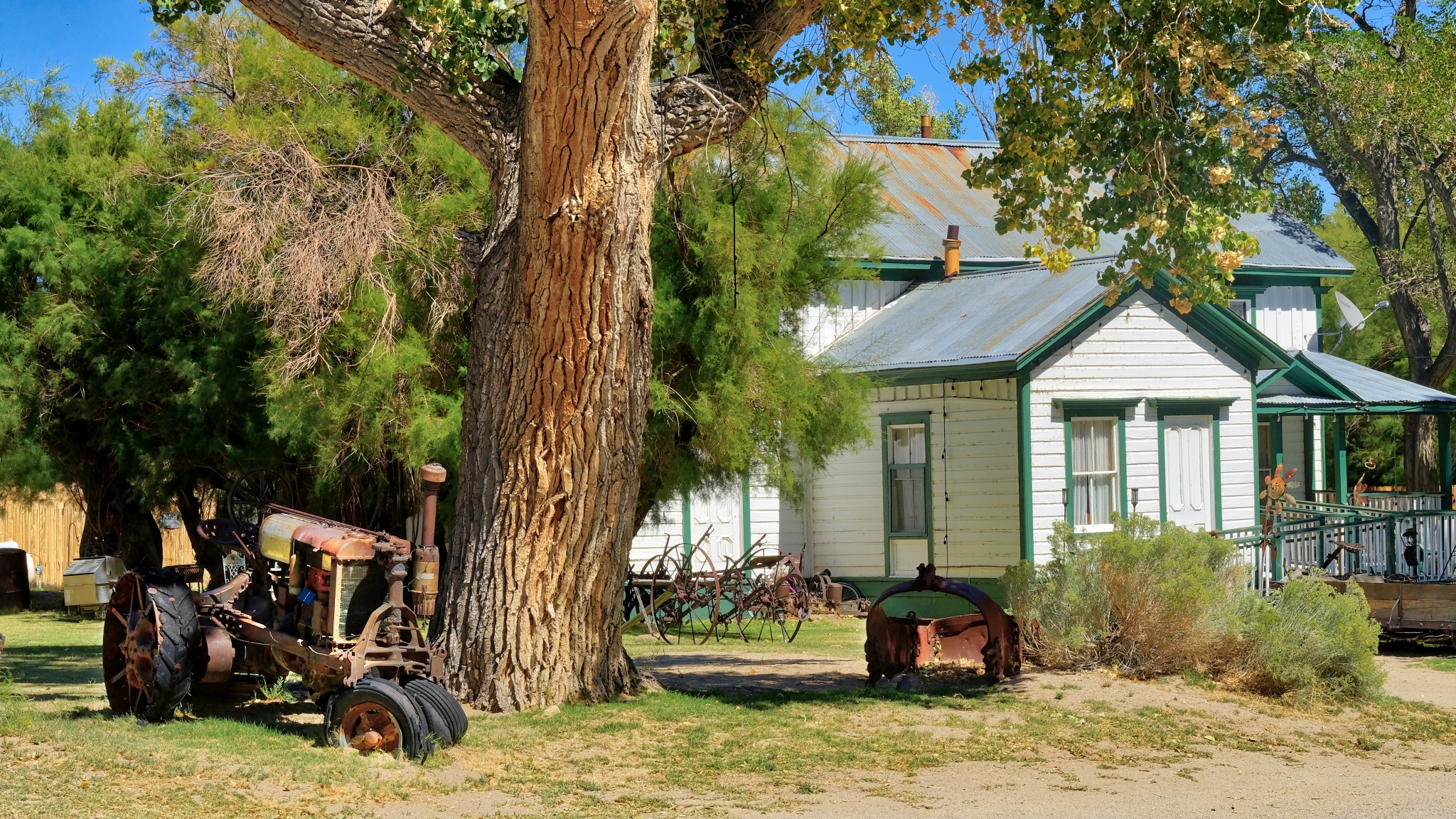 There was a nice old farmhouse across the road from the hotel.
There was a nice old farmhouse across the road from the hotel.
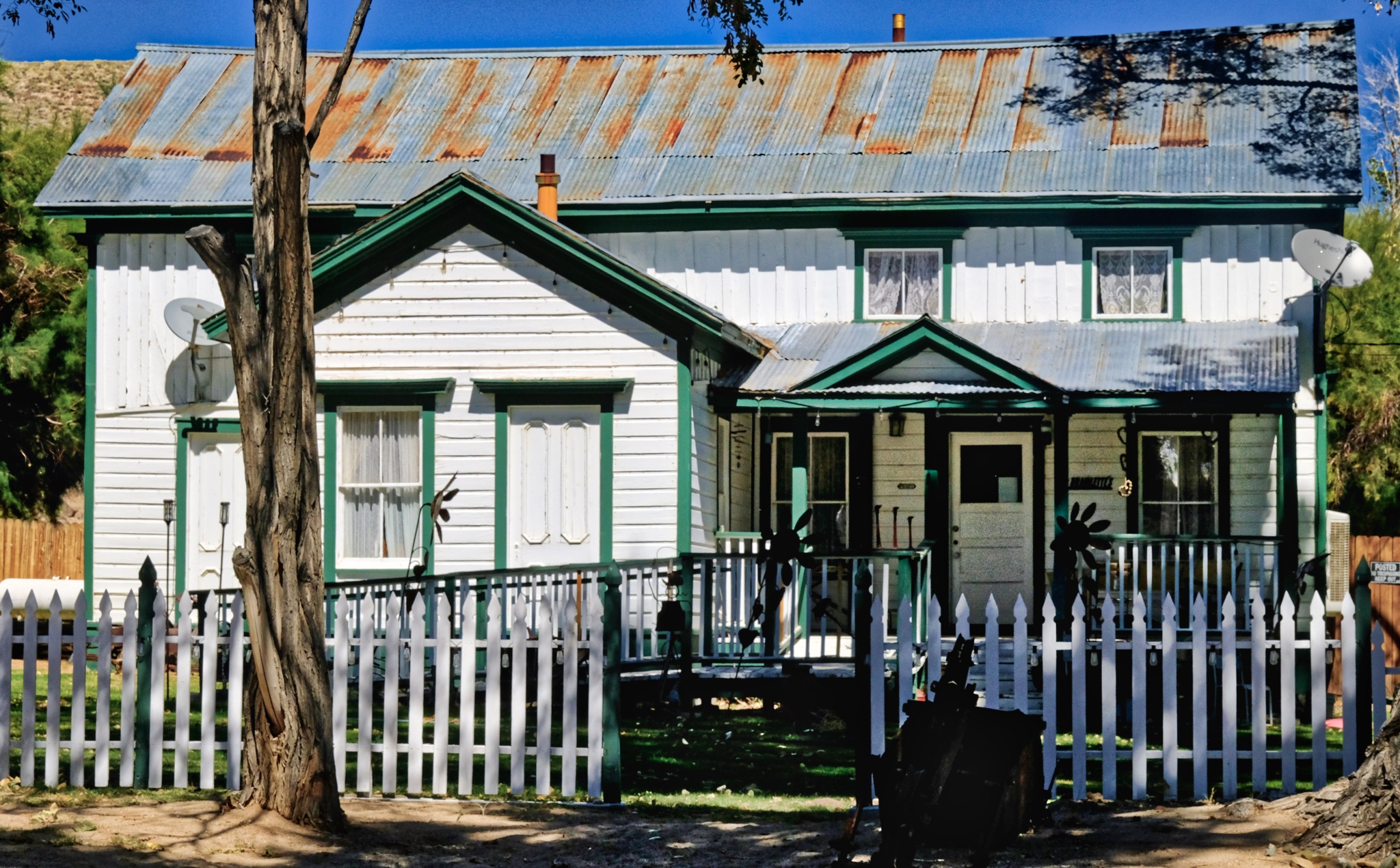 Very pretty little place . . . and only 30 miles to Bishop, California . . . the nearest mall.
Very pretty little place . . . and only 30 miles to Bishop, California . . . the nearest mall.
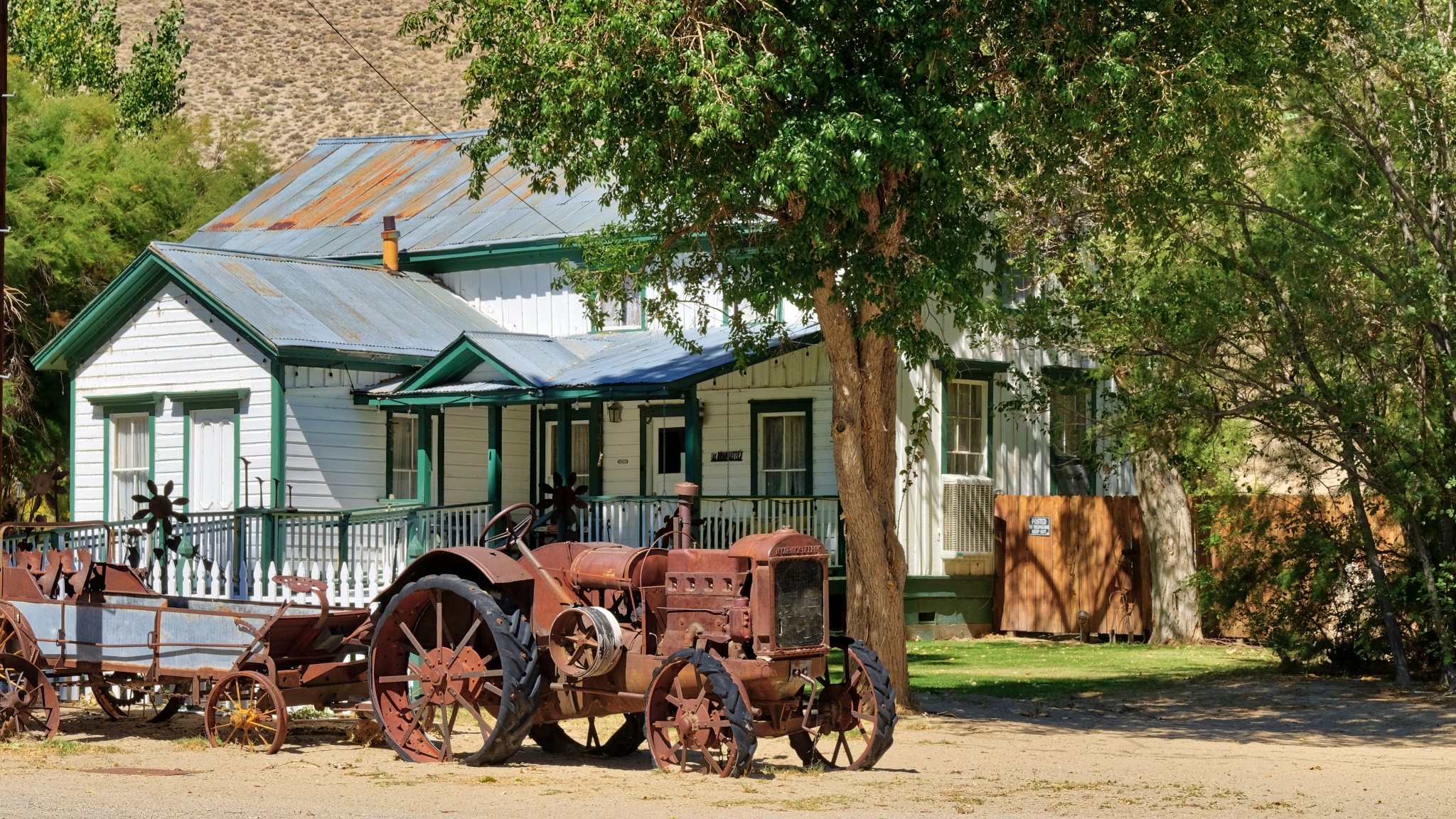 Although very fascinating to look at, it is a shame to see these old farm implements rusting away in the harsh weather. The average low temperature in January is 16(f) and the average high temperature in July is 92(f).
Although very fascinating to look at, it is a shame to see these old farm implements rusting away in the harsh weather. The average low temperature in January is 16(f) and the average high temperature in July is 92(f).
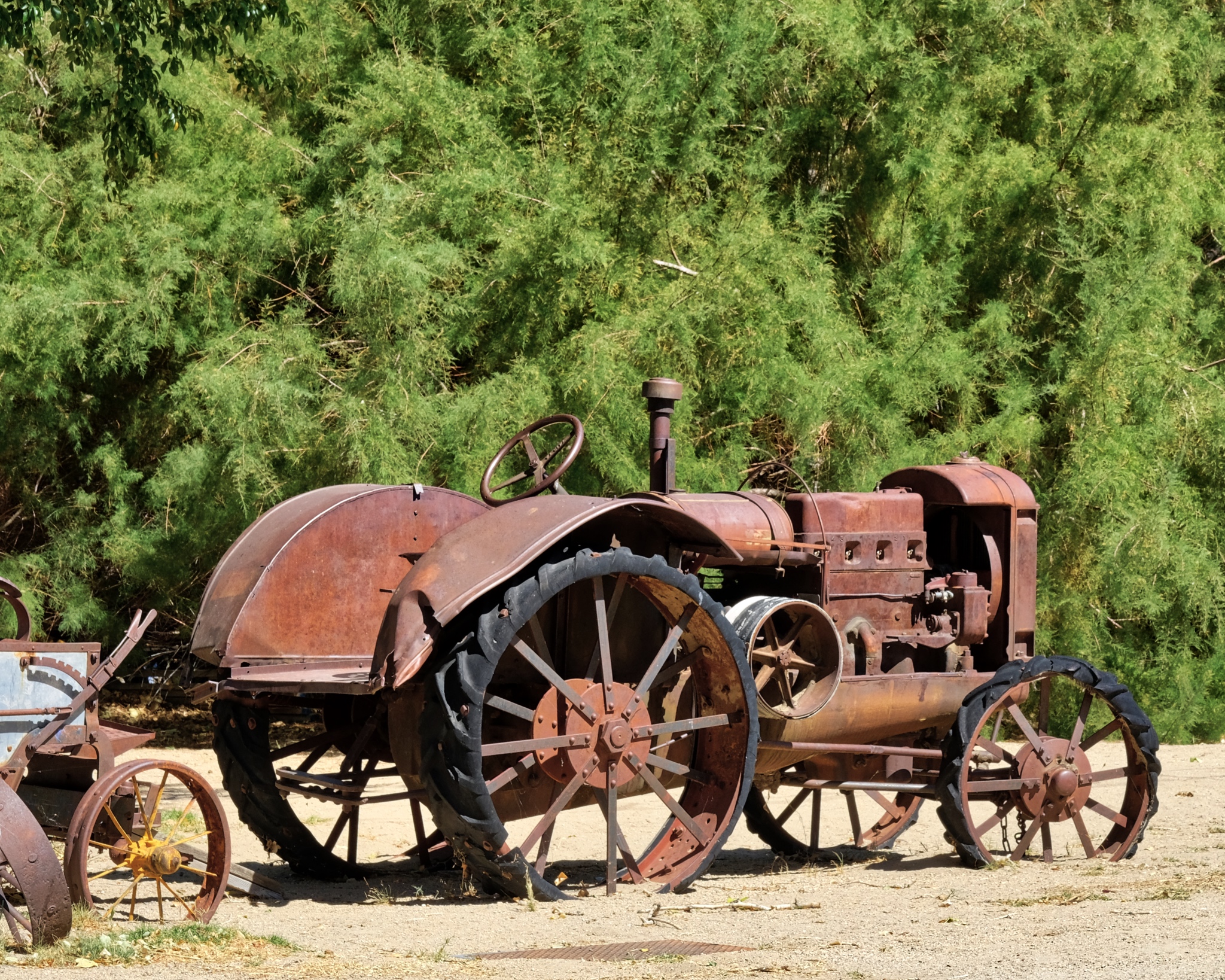 An antique tractor.
An antique tractor.
 Another antique tractor.
Another antique tractor.
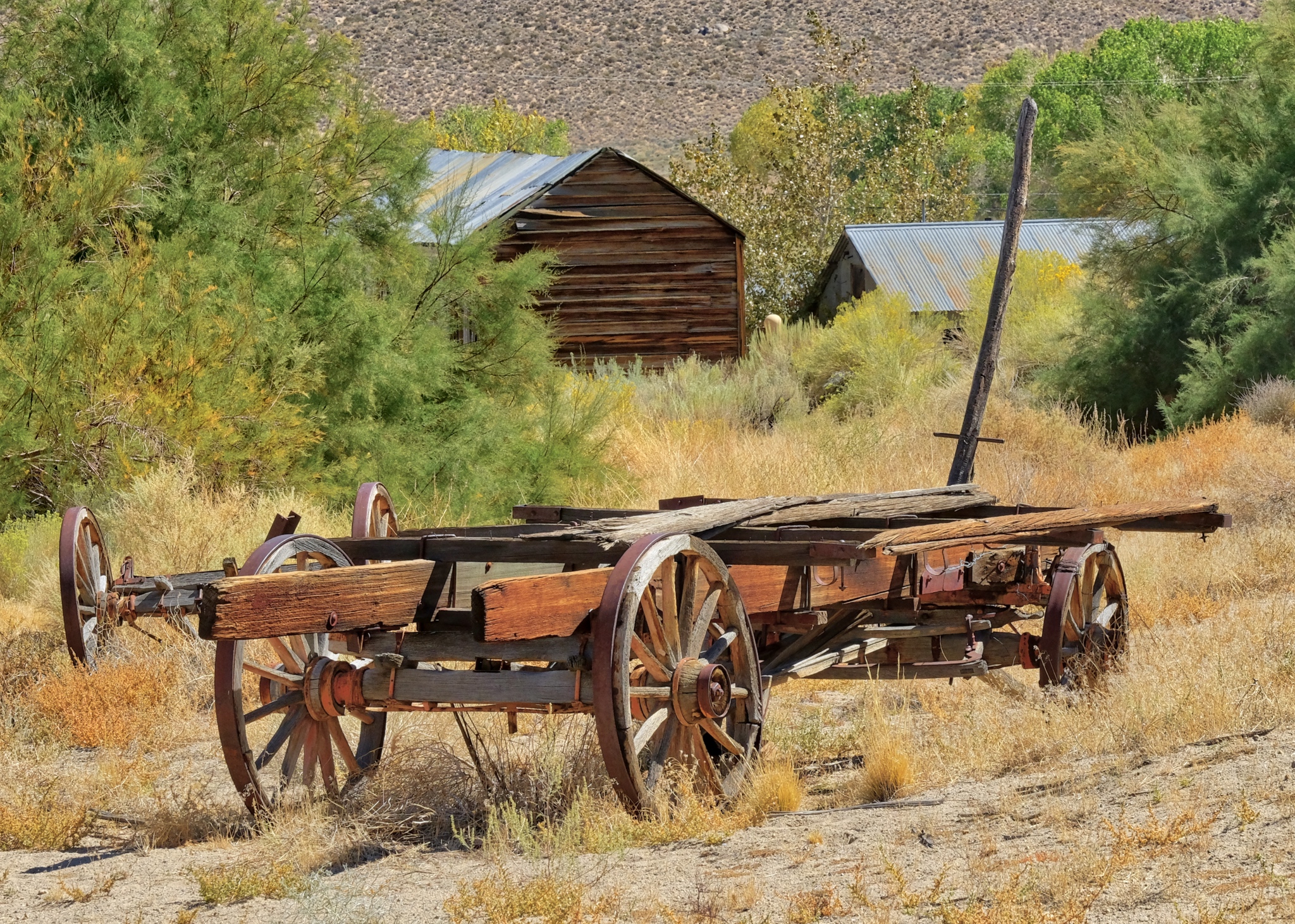 People who live out in the deserted parts seem to like to drag old stuff out of the hills and old mines and display it around their houses as yard decor. In Benton Hot Springs someone had gathered many old wagons and wagon wheels just outside of town. These should be preserved too.
People who live out in the deserted parts seem to like to drag old stuff out of the hills and old mines and display it around their houses as yard decor. In Benton Hot Springs someone had gathered many old wagons and wagon wheels just outside of town. These should be preserved too.
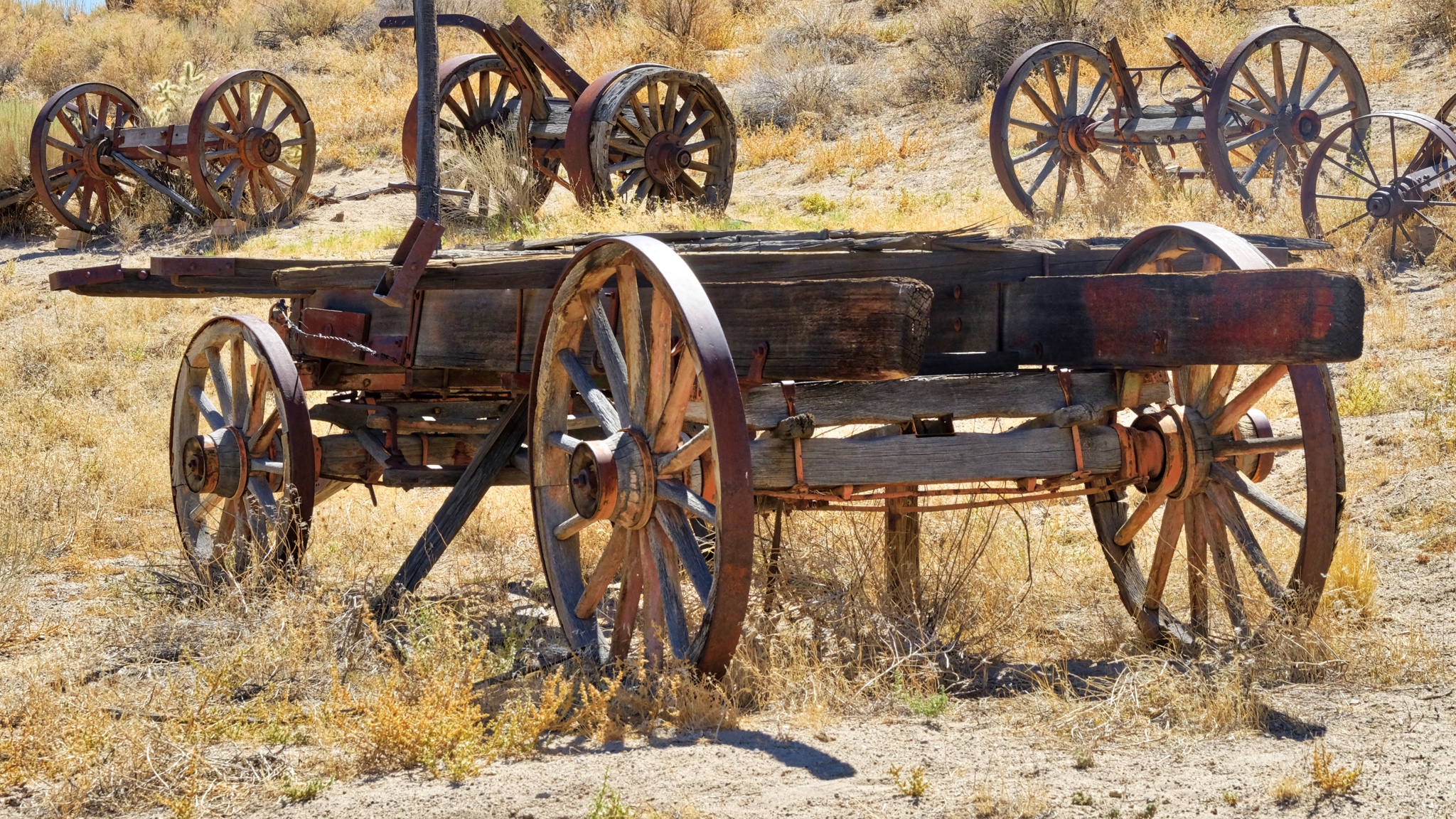 There was a hillside covered with these old wagons from the horse and buggy days.
There was a hillside covered with these old wagons from the horse and buggy days.
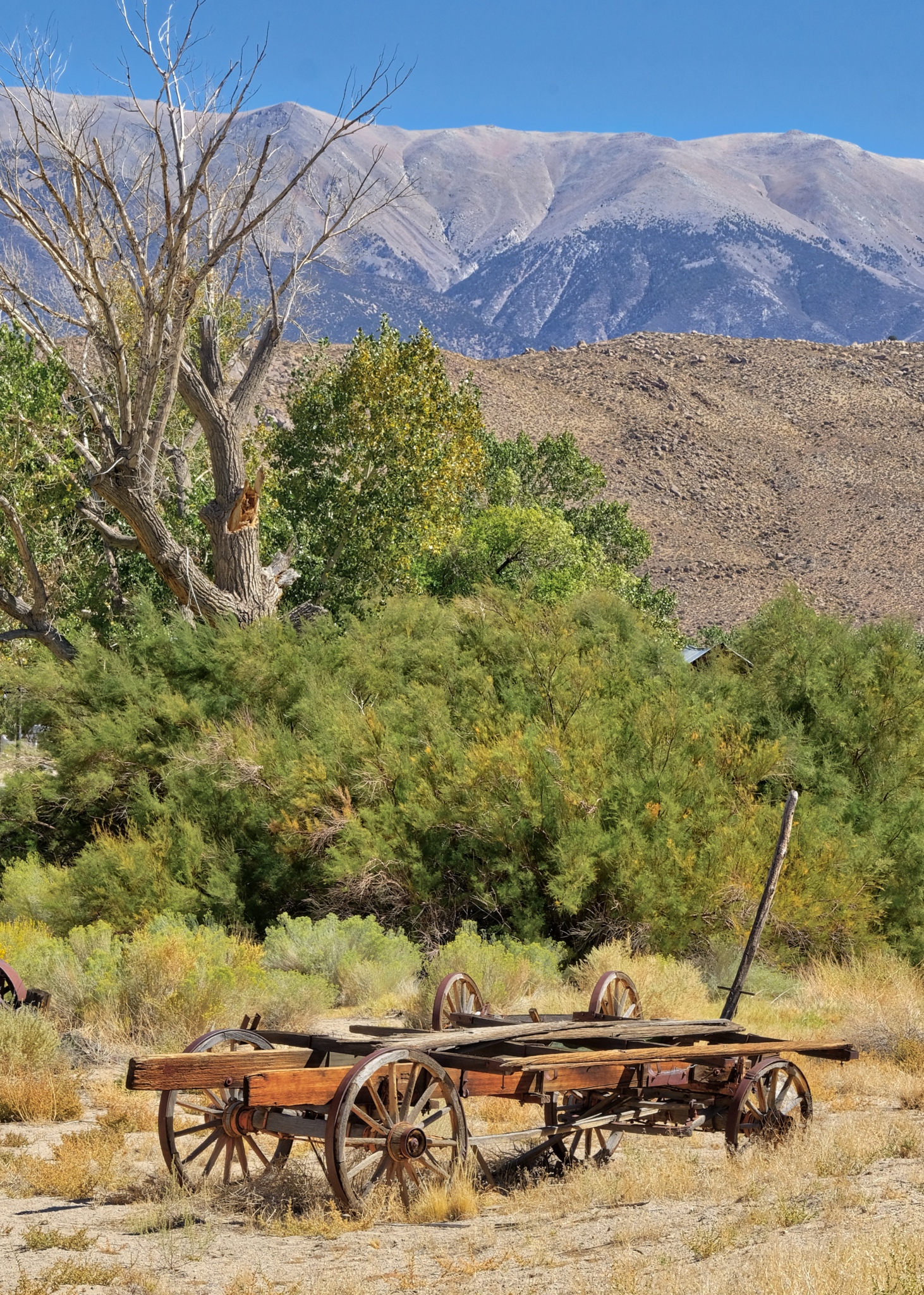 Benton Hot Springs sits in a green valley below Boundary Peak.
Benton Hot Springs sits in a green valley below Boundary Peak.
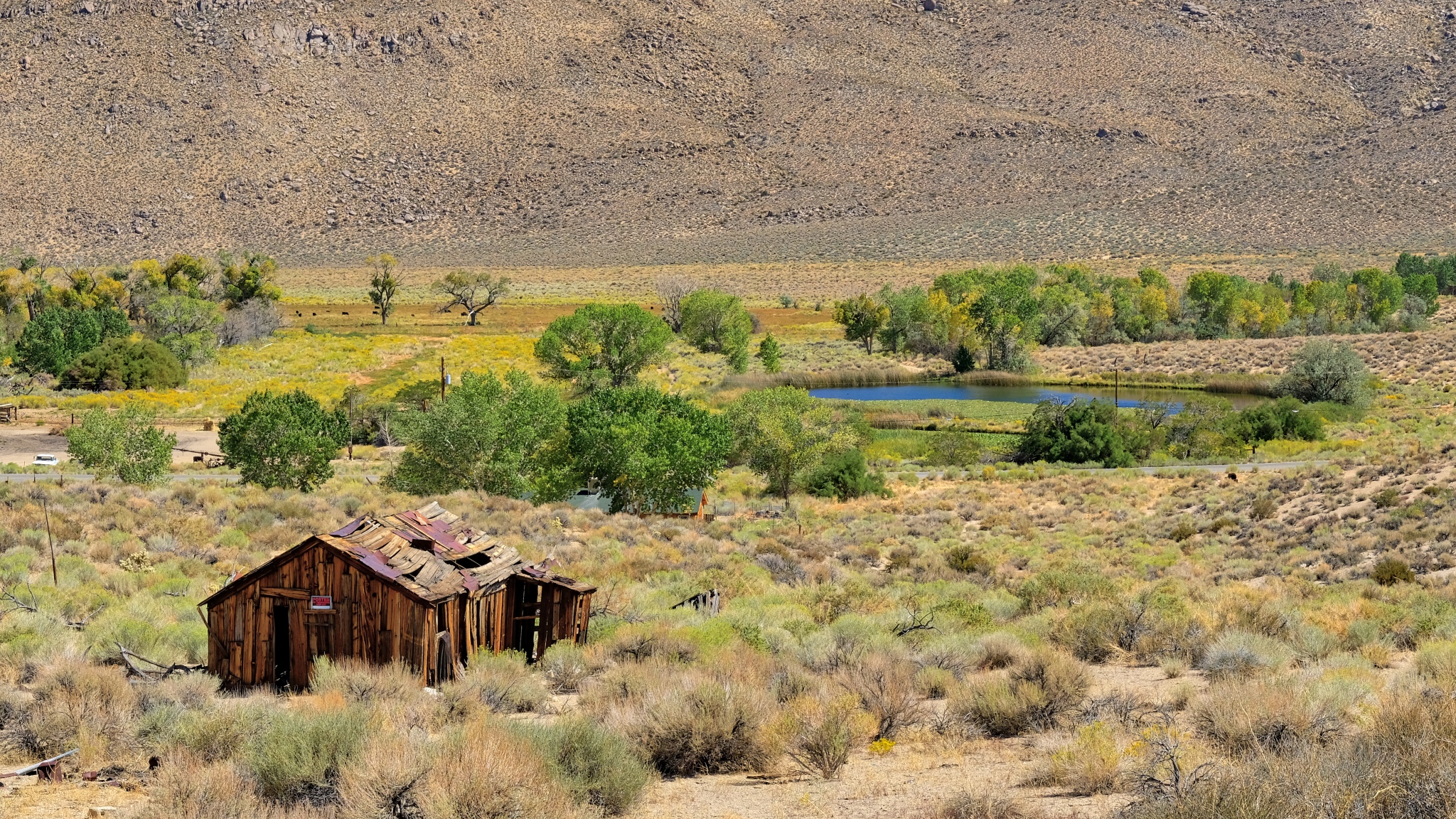 I walked out of town and up a hill to get a view of Benton Hot Springs.
I walked out of town and up a hill to get a view of Benton Hot Springs.
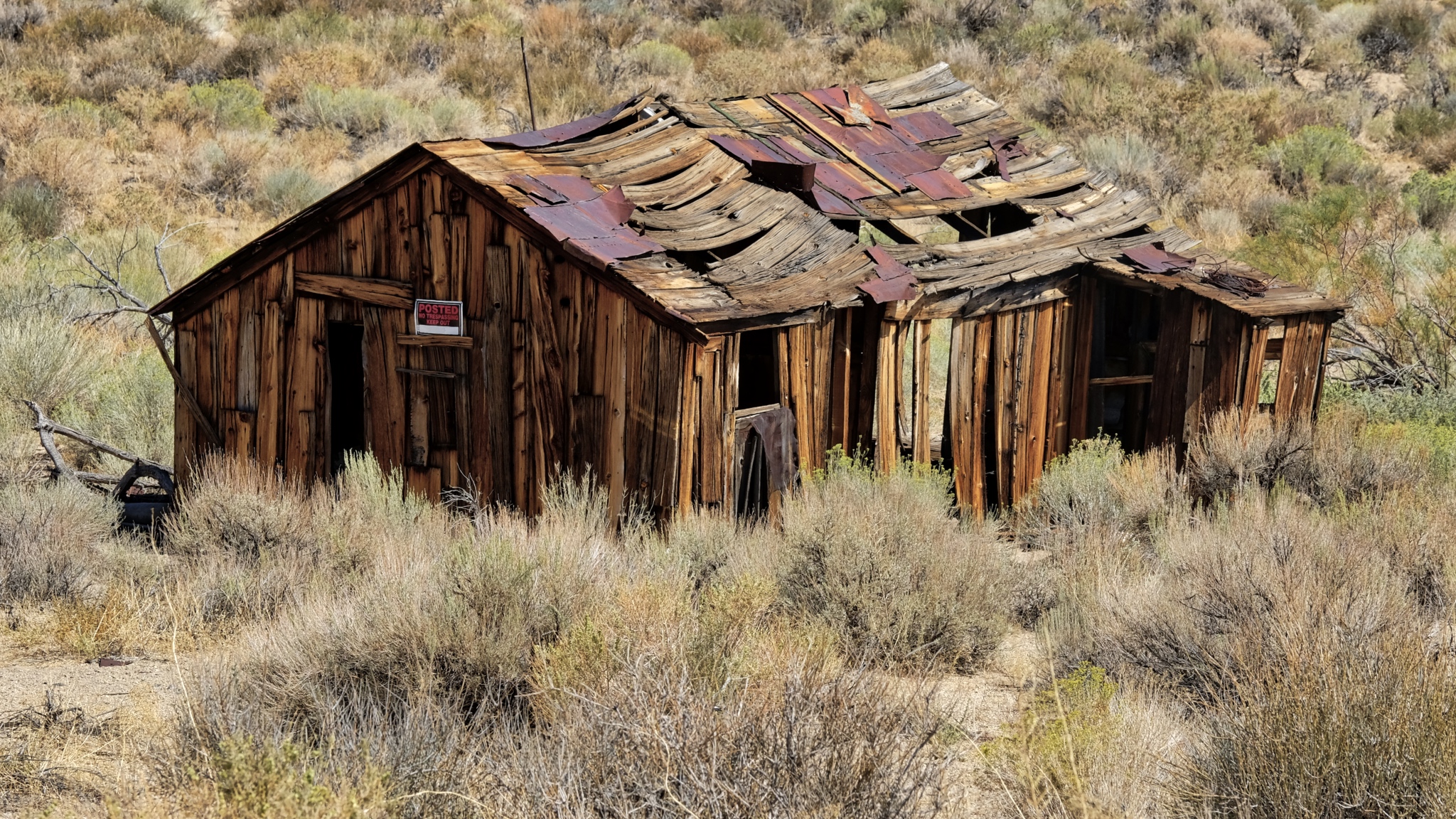 "If these walls could talk." Indeed.
"If these walls could talk." Indeed.
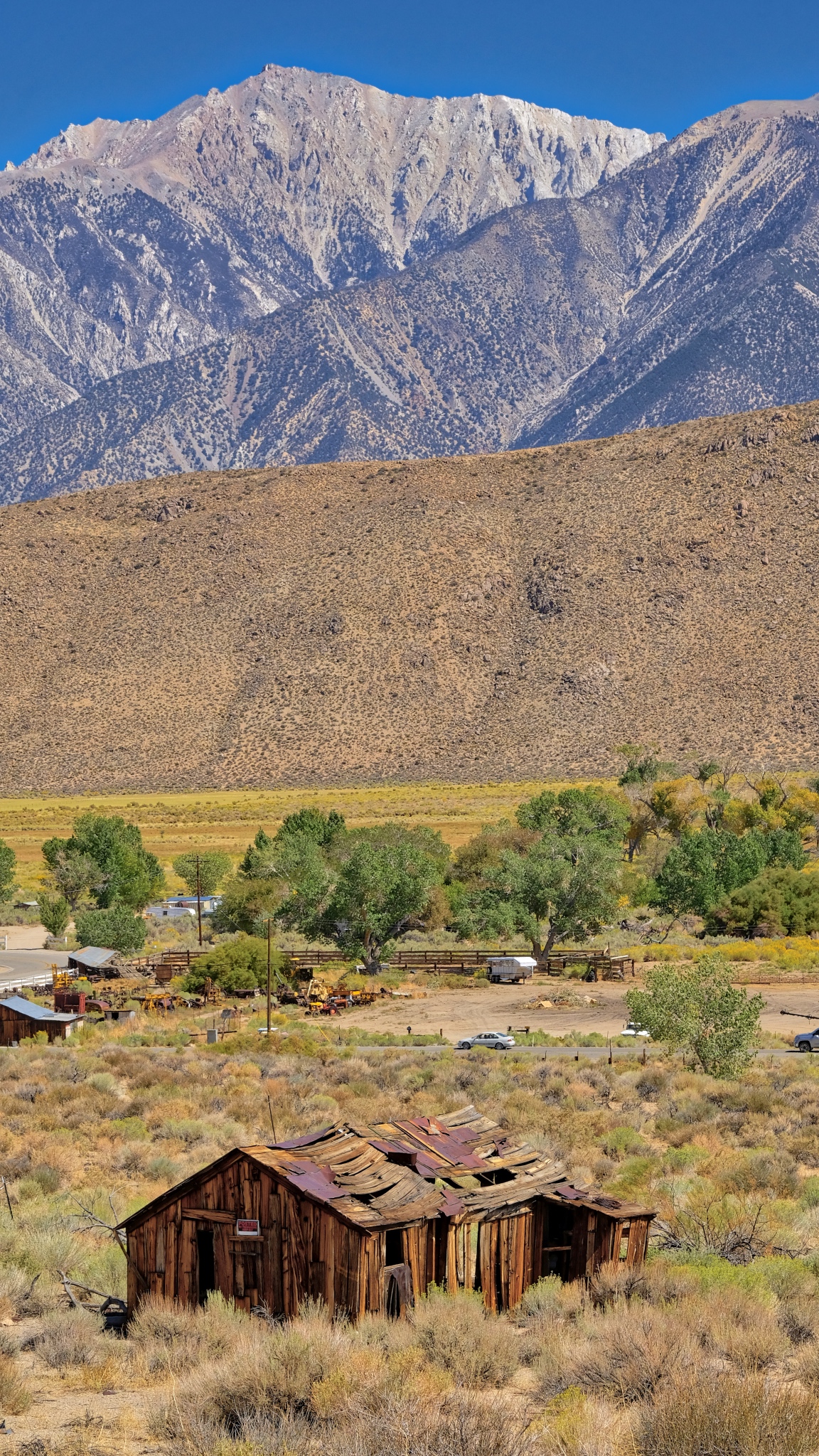 As I travel the world I often ask myself, could I live here, in this place? I mean actually live here . . . to actually move to the place and make a life there. I am capable and free enough to live wherever in the world I want. I can say YES, I could live here. I may look into it more closely.
As I travel the world I often ask myself, could I live here, in this place? I mean actually live here . . . to actually move to the place and make a life there. I am capable and free enough to live wherever in the world I want. I can say YES, I could live here. I may look into it more closely.
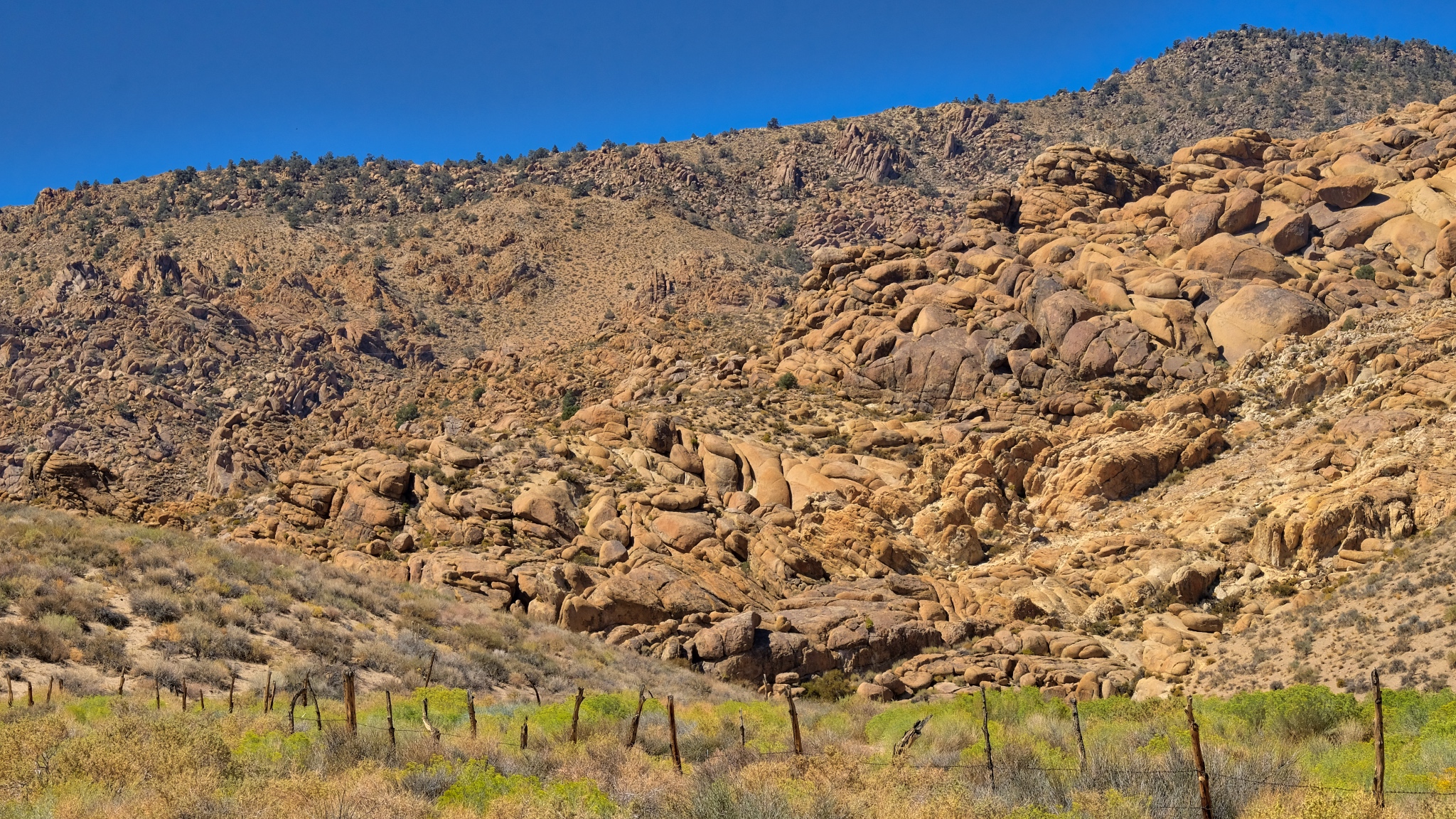 I left Benton Hot Springs behind and headed into the rocky landscape along California State Highway 120 toward Swall Meadows.
I left Benton Hot Springs behind and headed into the rocky landscape along California State Highway 120 toward Swall Meadows.
 Dr. Jeff Harper
Dr. Jeff Harper
BONUS: Black & white photos of Benton Hot Springs, California!
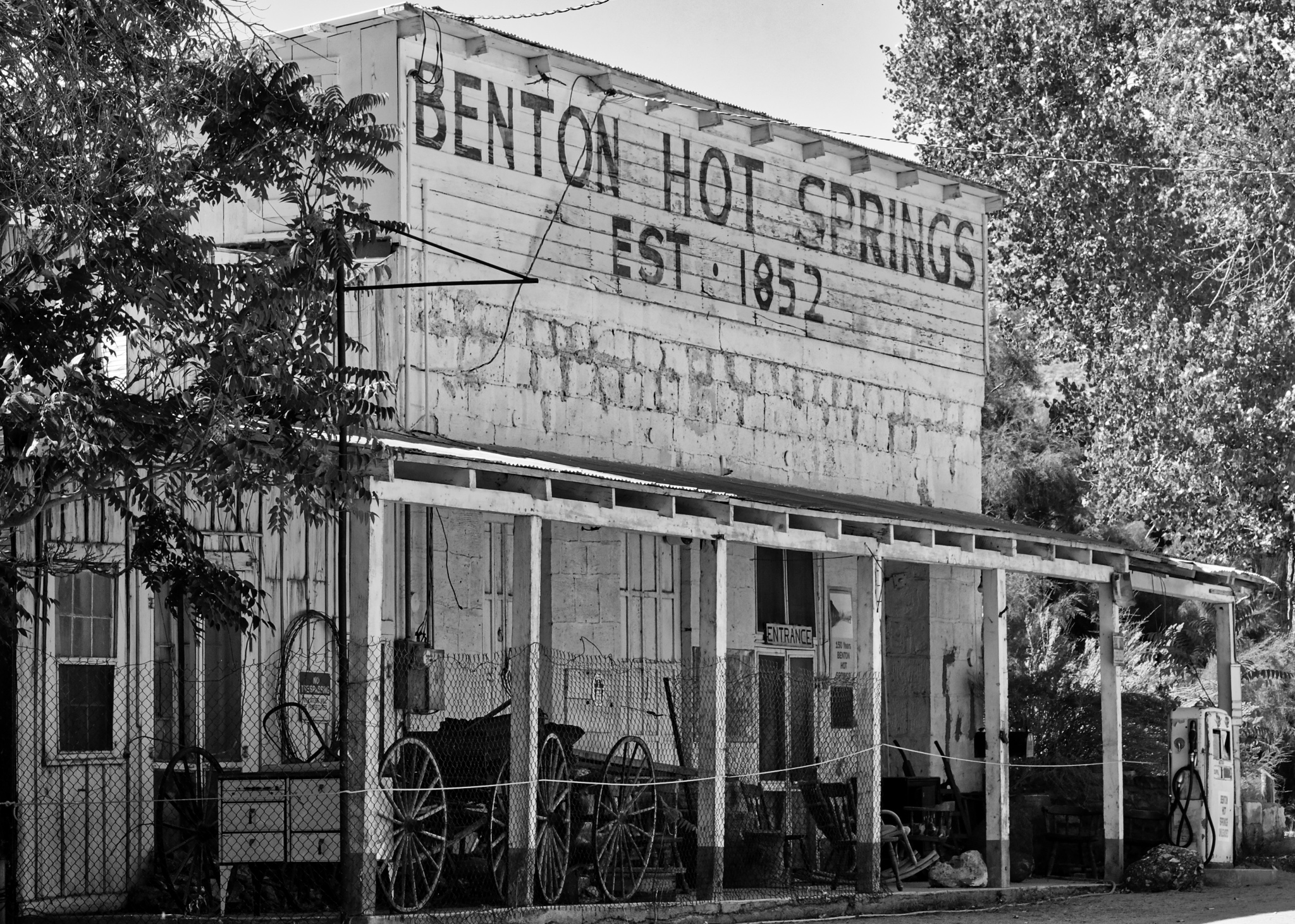
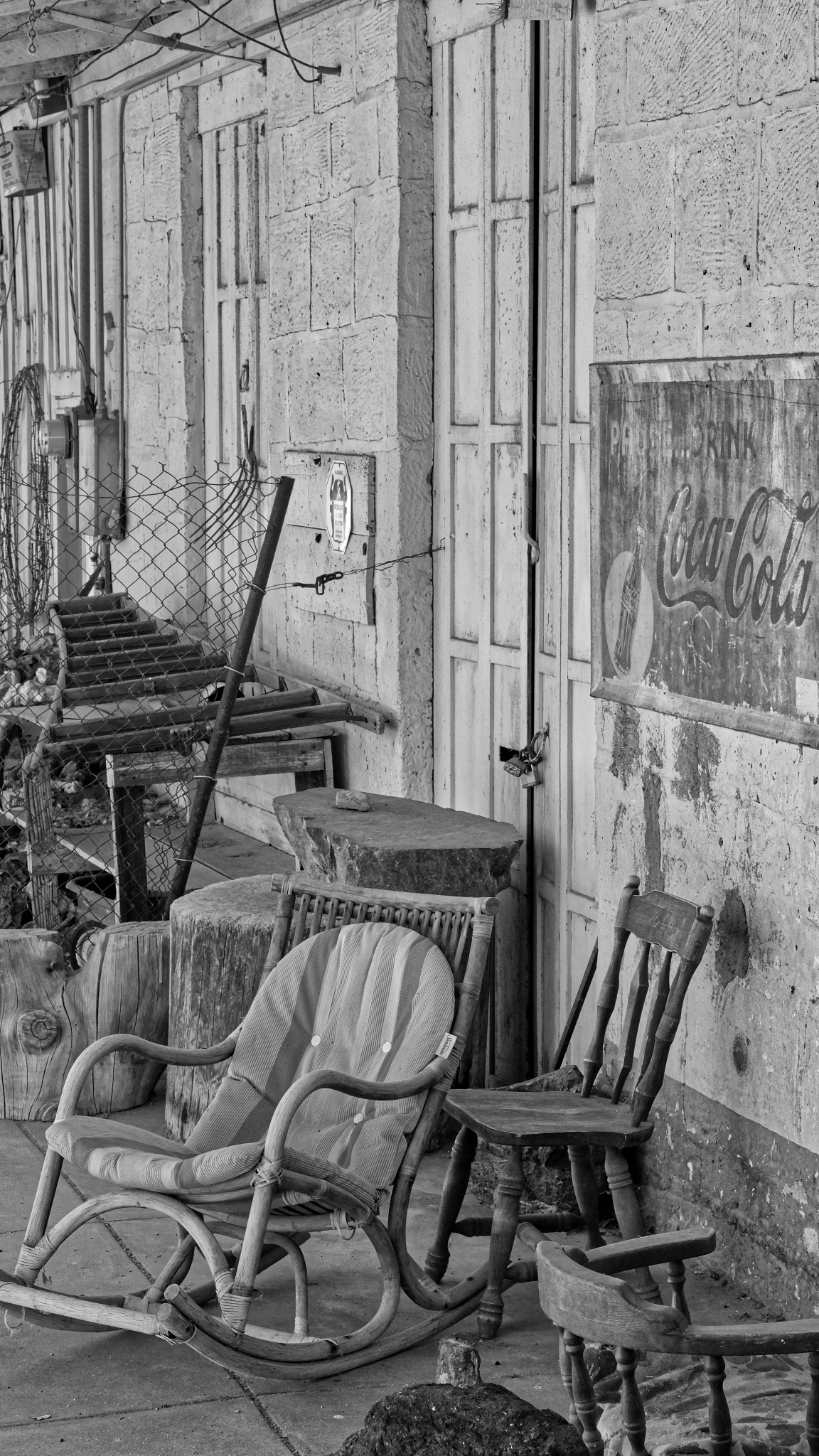
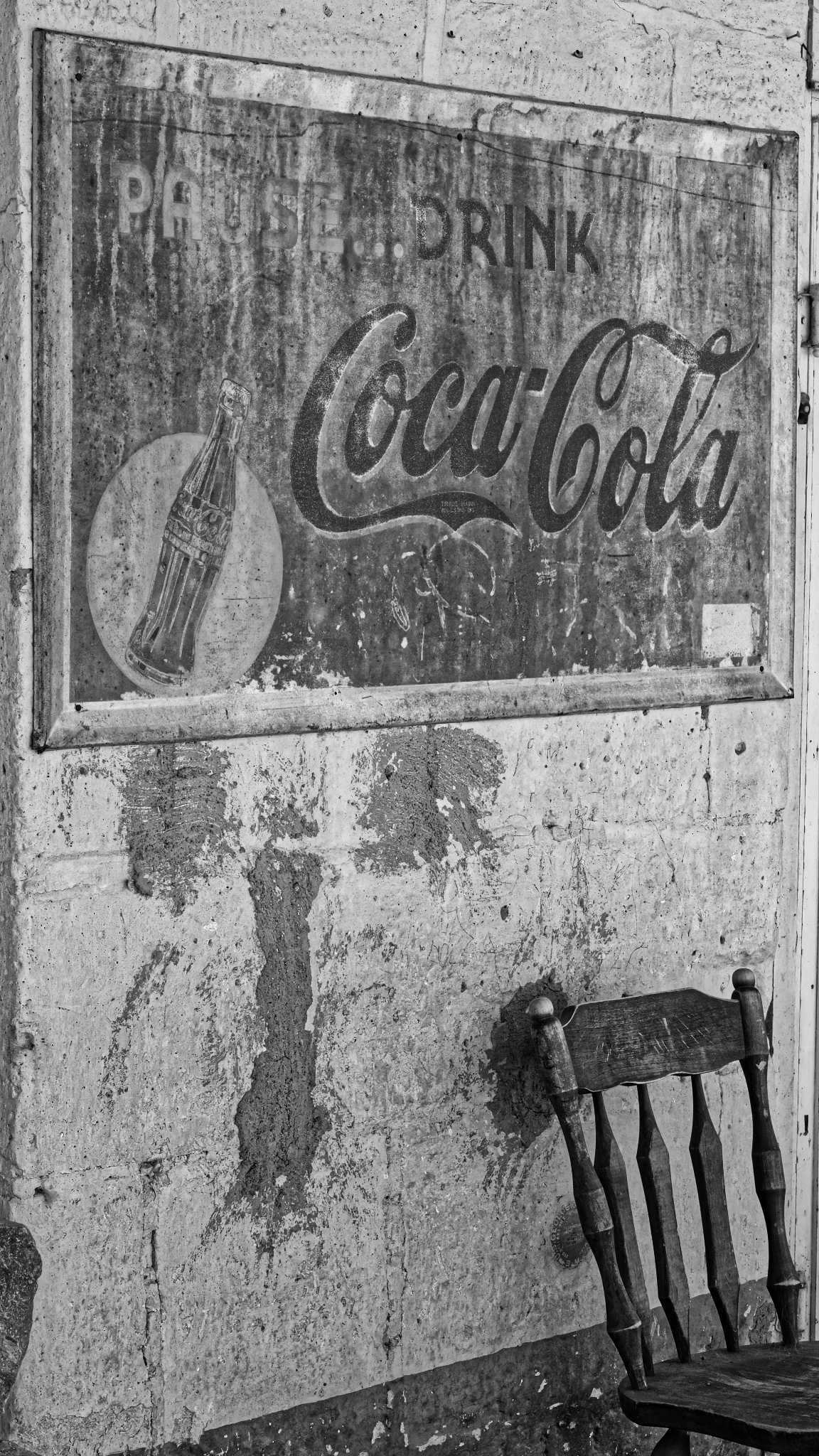
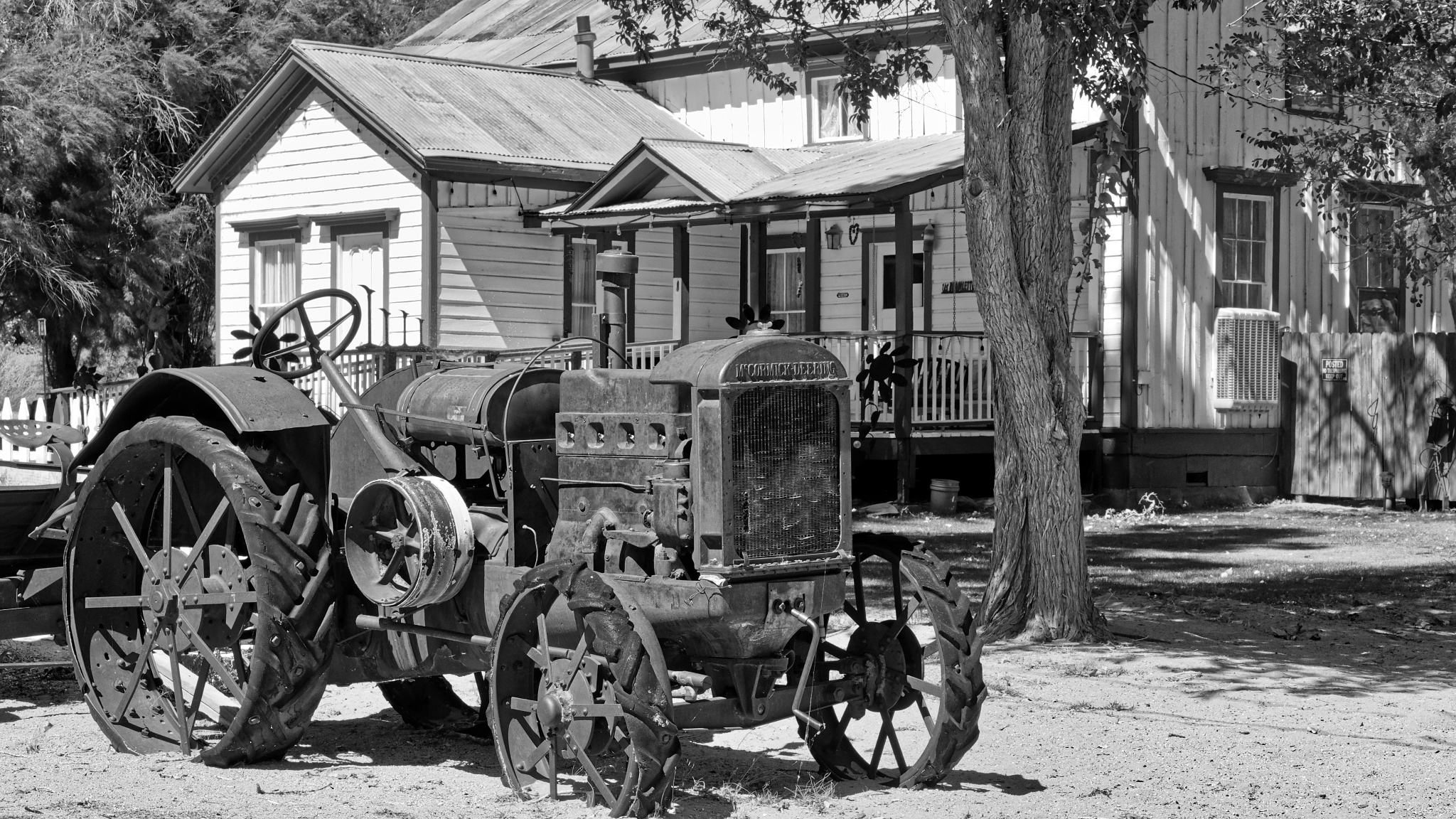
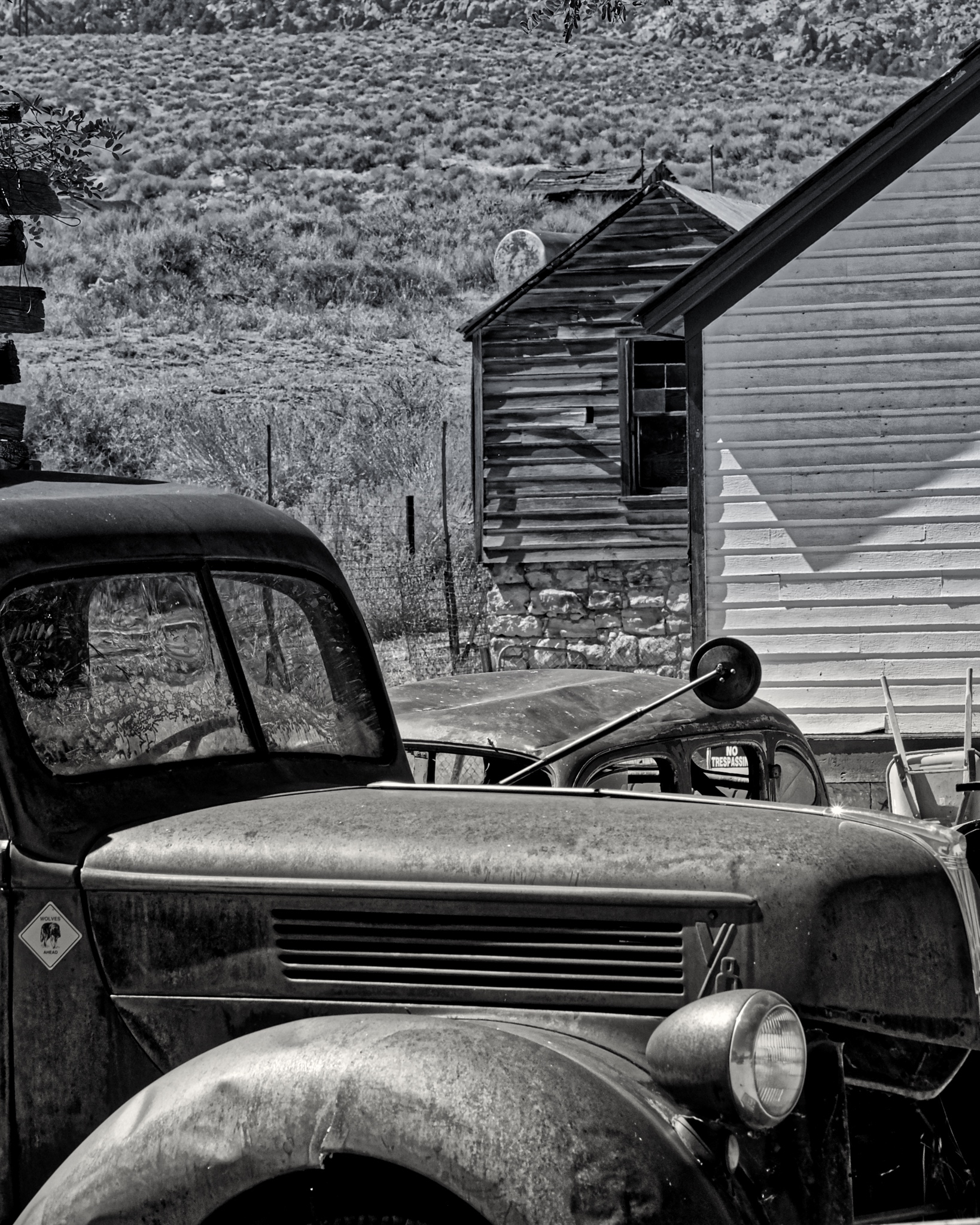
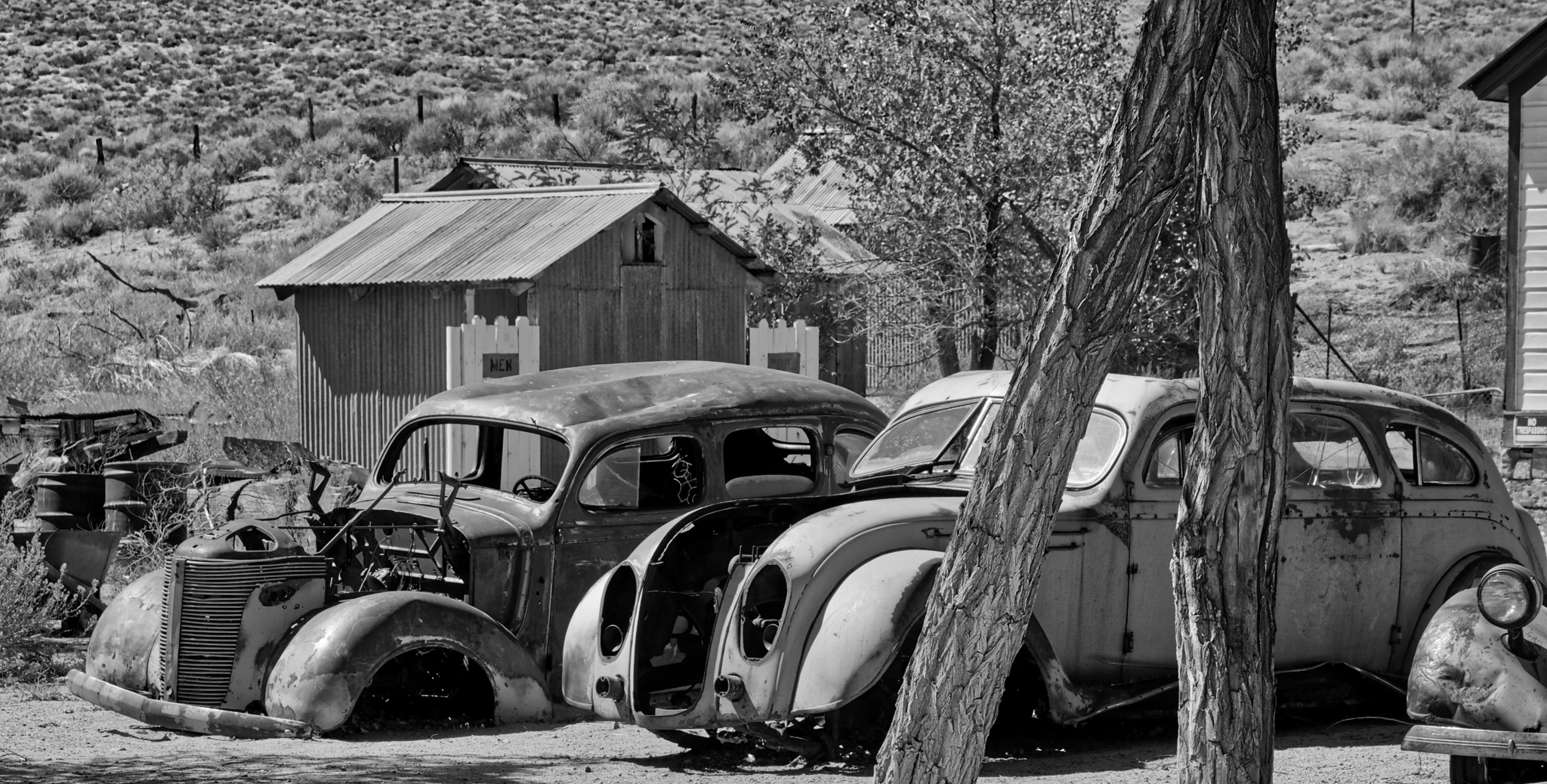
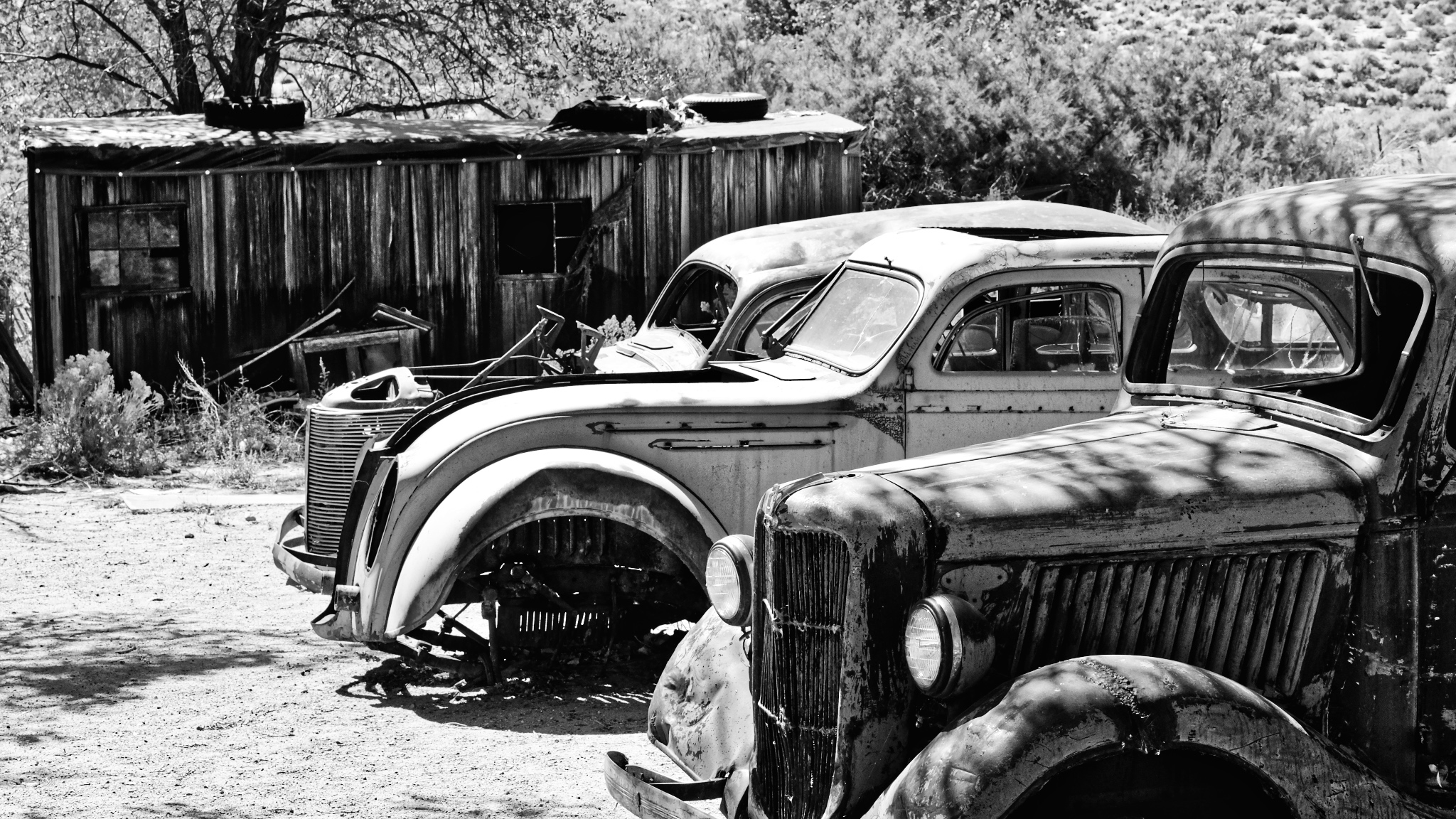
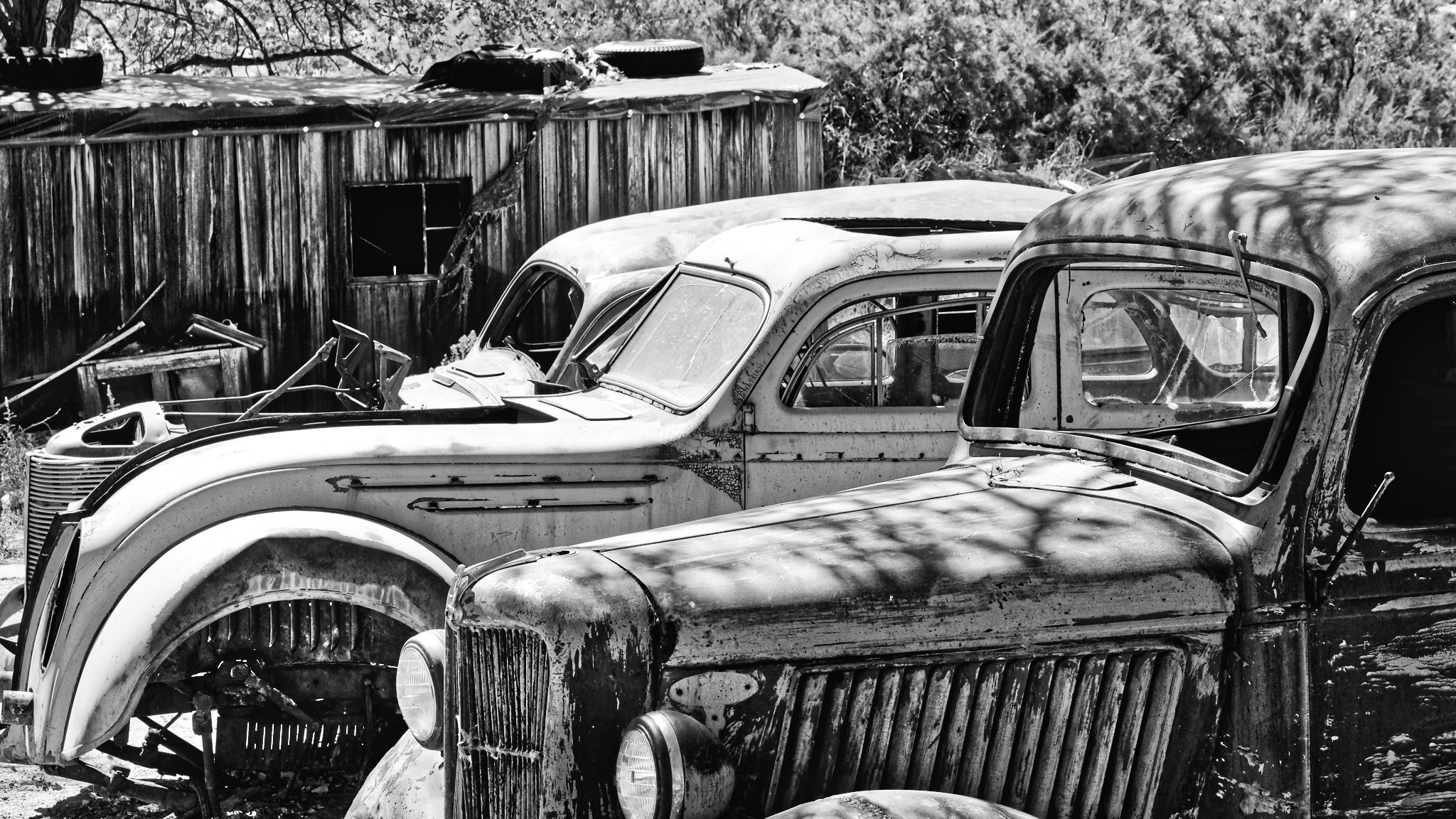
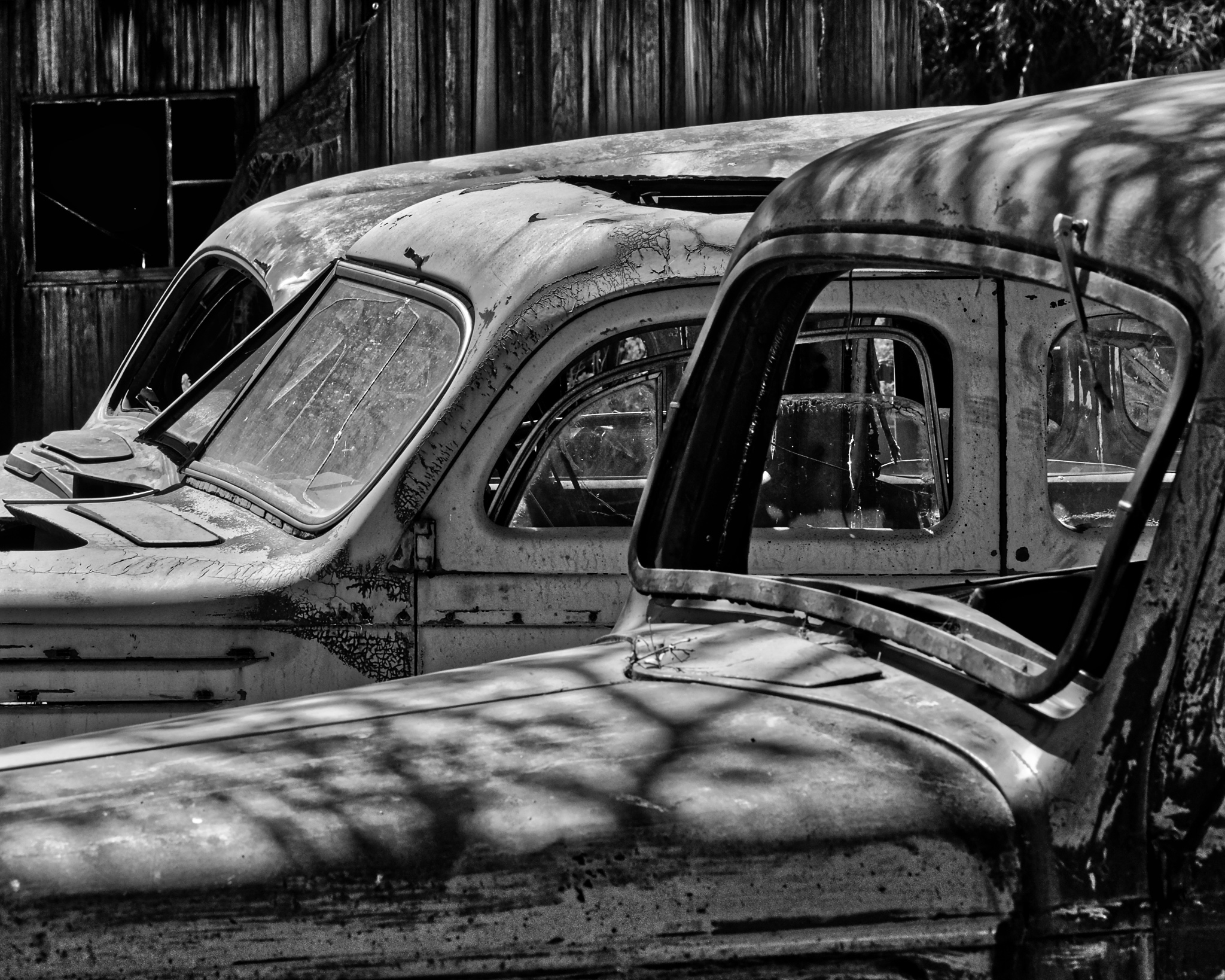
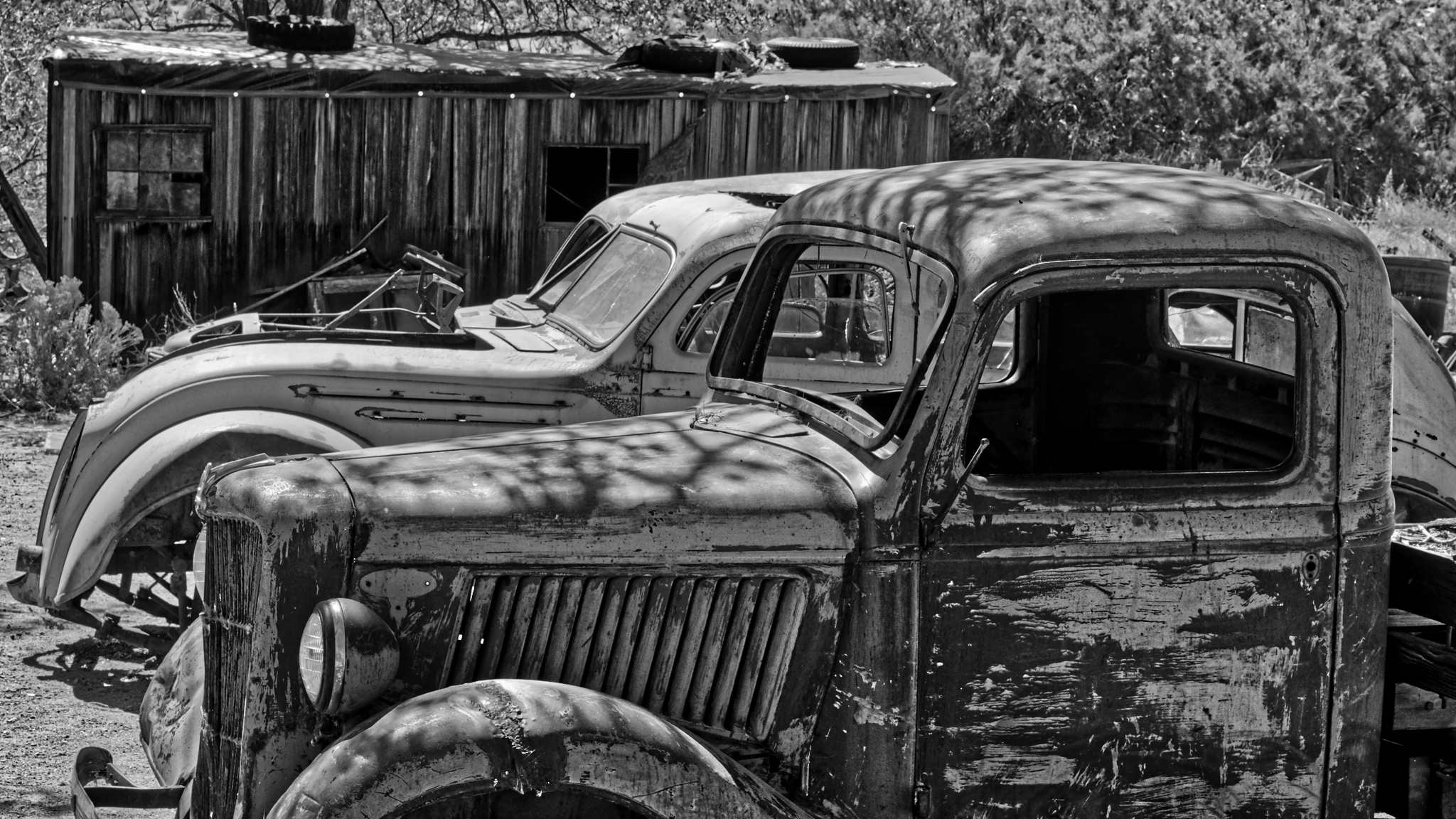
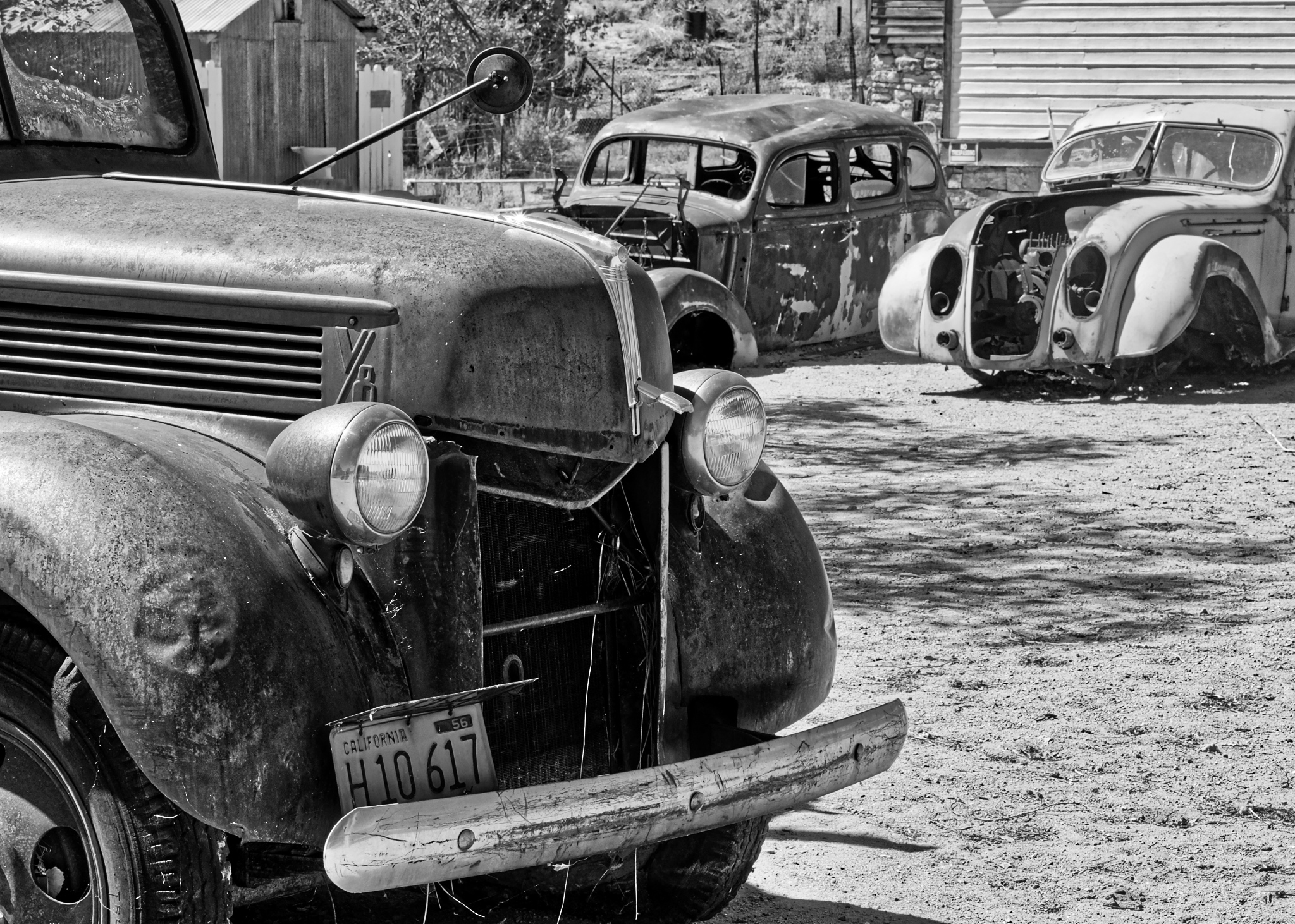
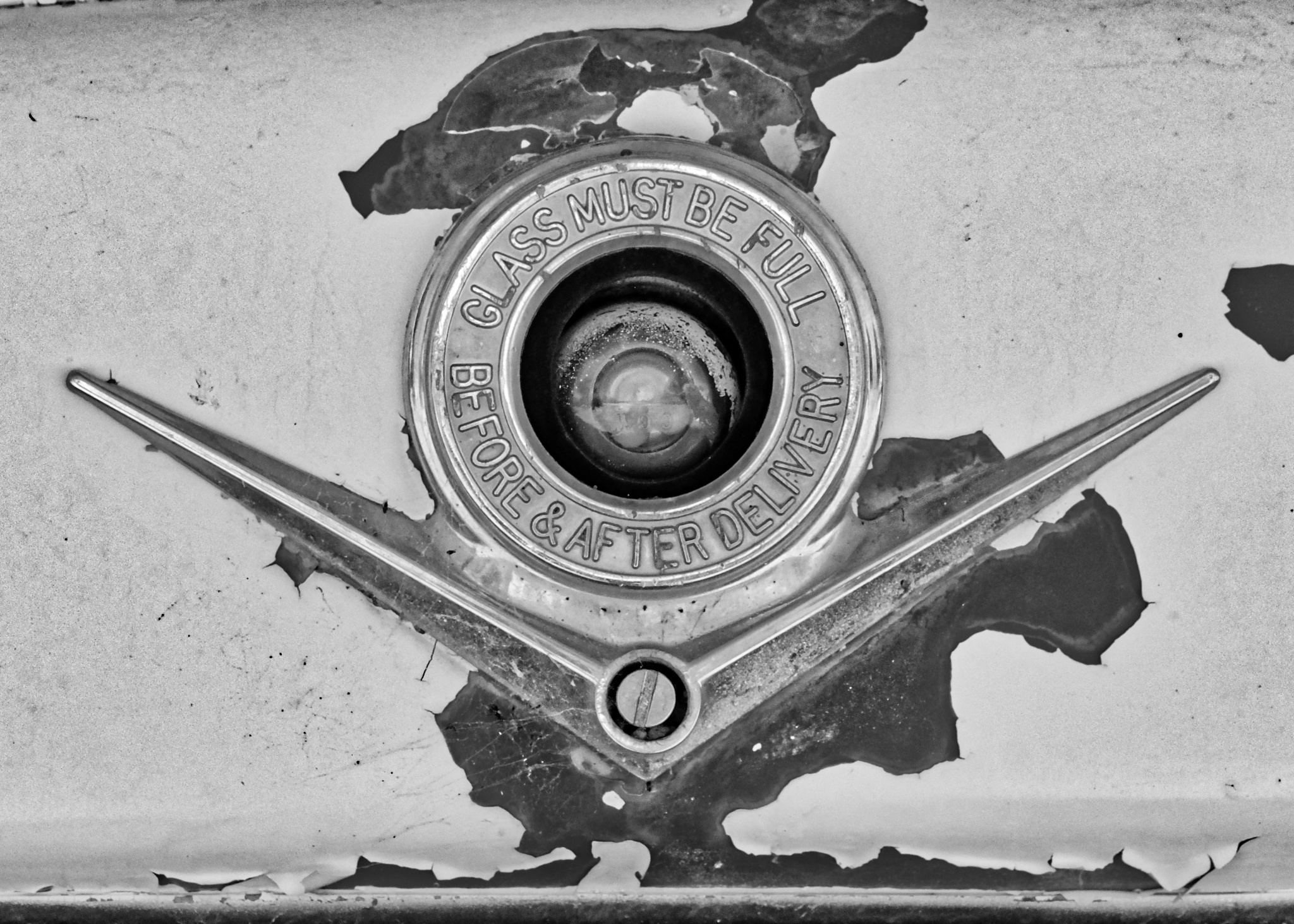
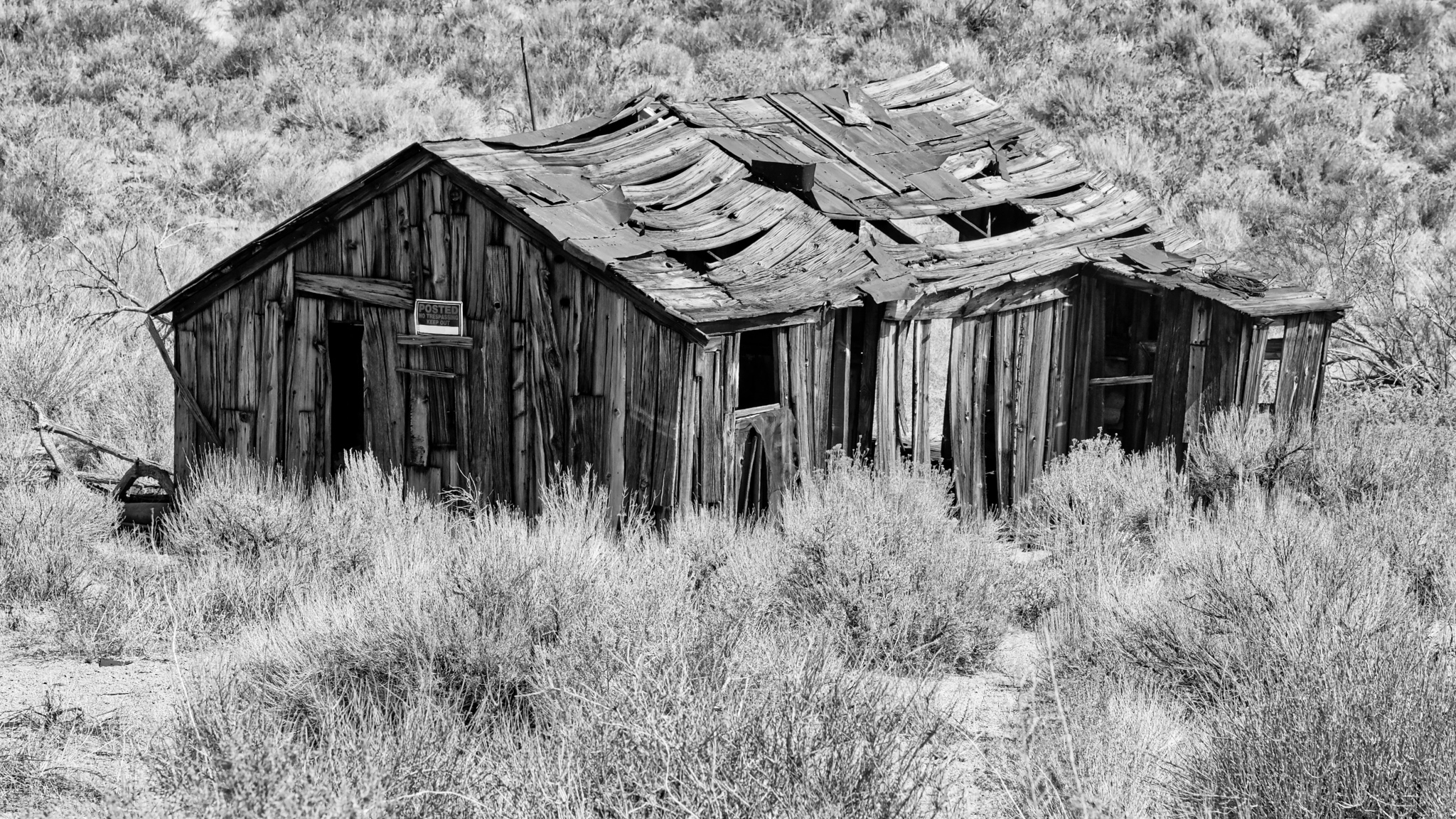
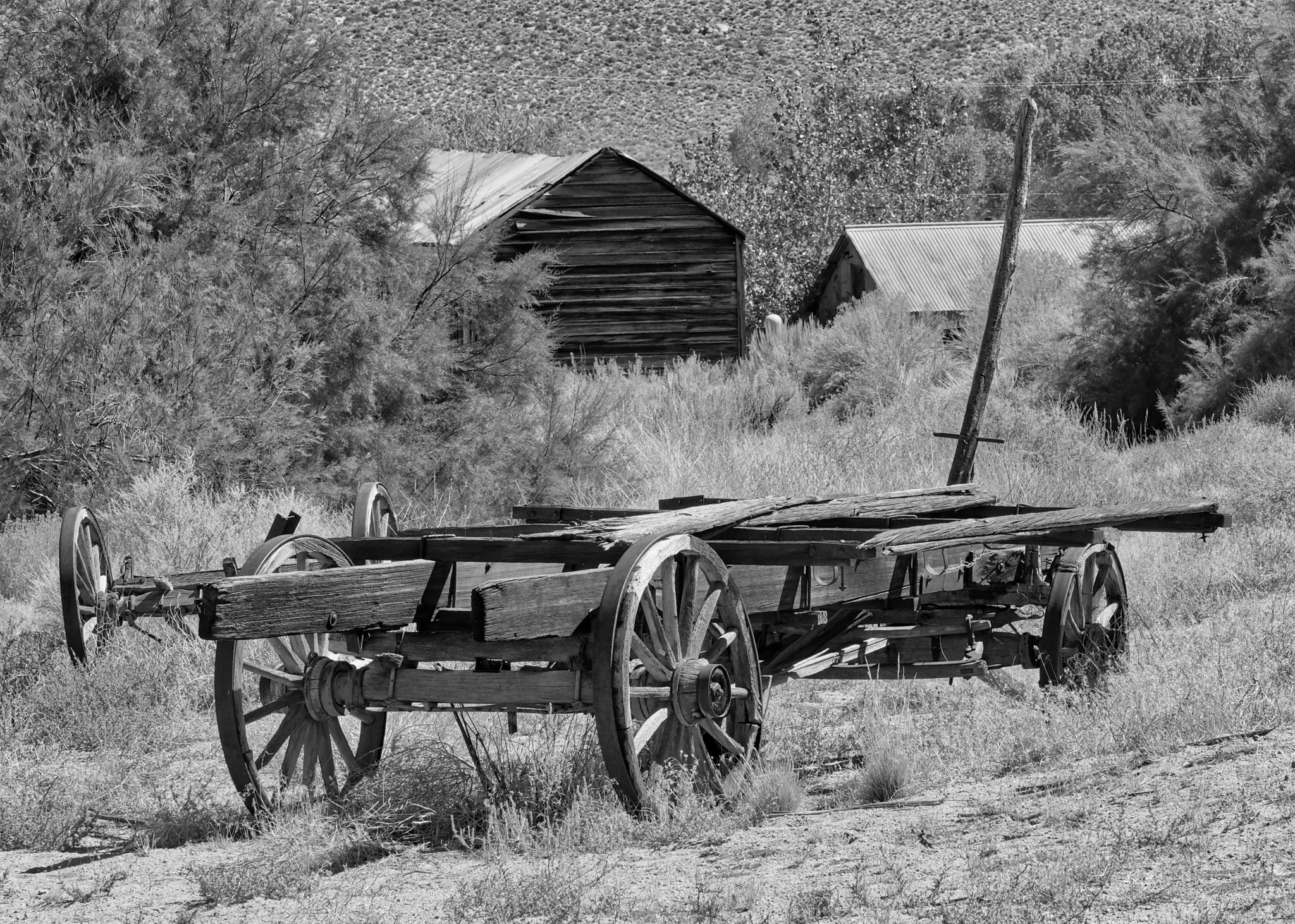
Road Trip USA: The New Jersey Shore
 Saturday, December 22, 2018 at 11:59AM
Saturday, December 22, 2018 at 11:59AM  I have good friends who are semi-retired and live year round in Ocean City, New Jersey. I spent a wonderful five days visiting them.
I have good friends who are semi-retired and live year round in Ocean City, New Jersey. I spent a wonderful five days visiting them.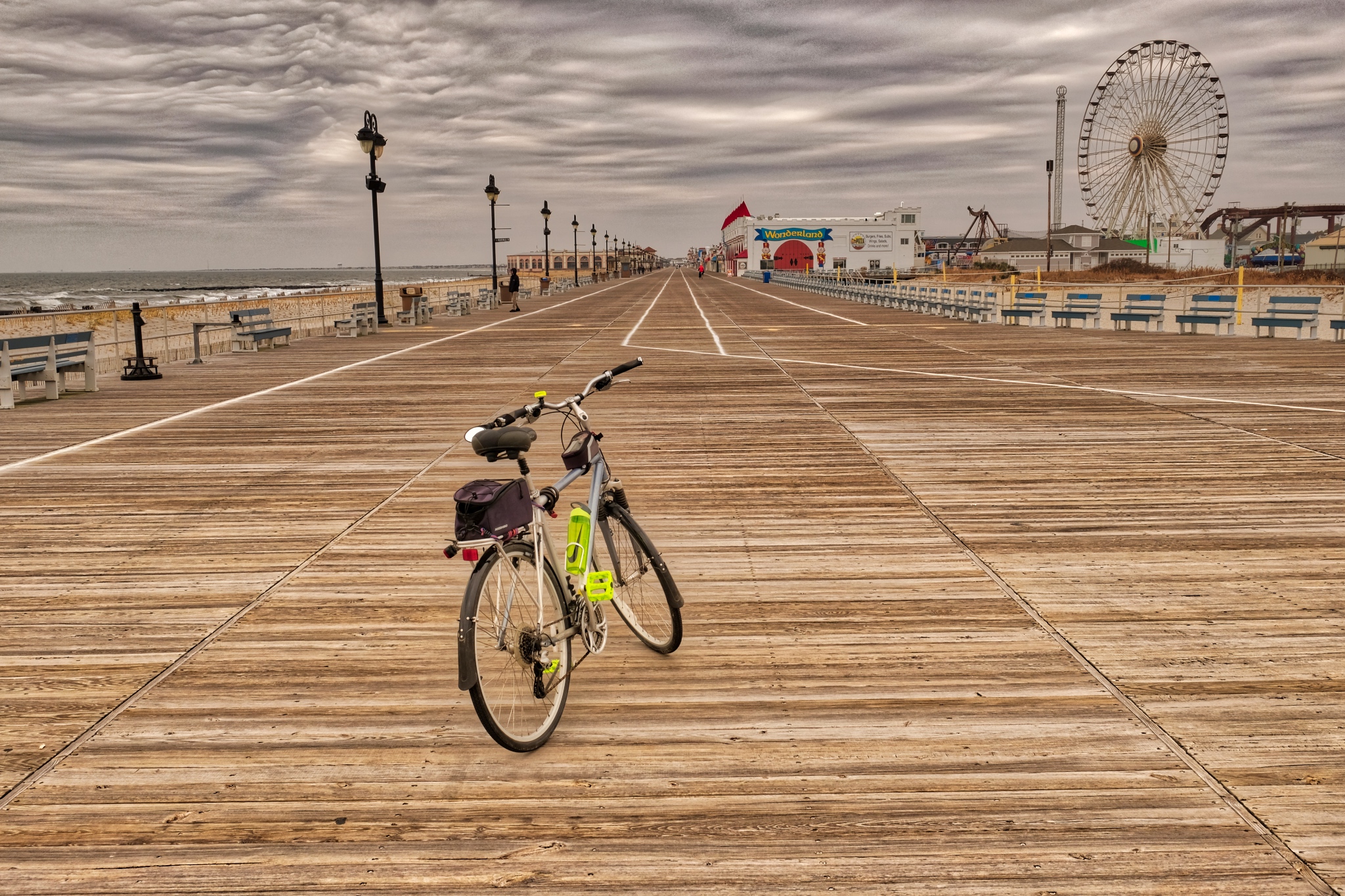 I brought my bicycle with me so that I could ride the many miles of Ocean City boardwalk.
I brought my bicycle with me so that I could ride the many miles of Ocean City boardwalk.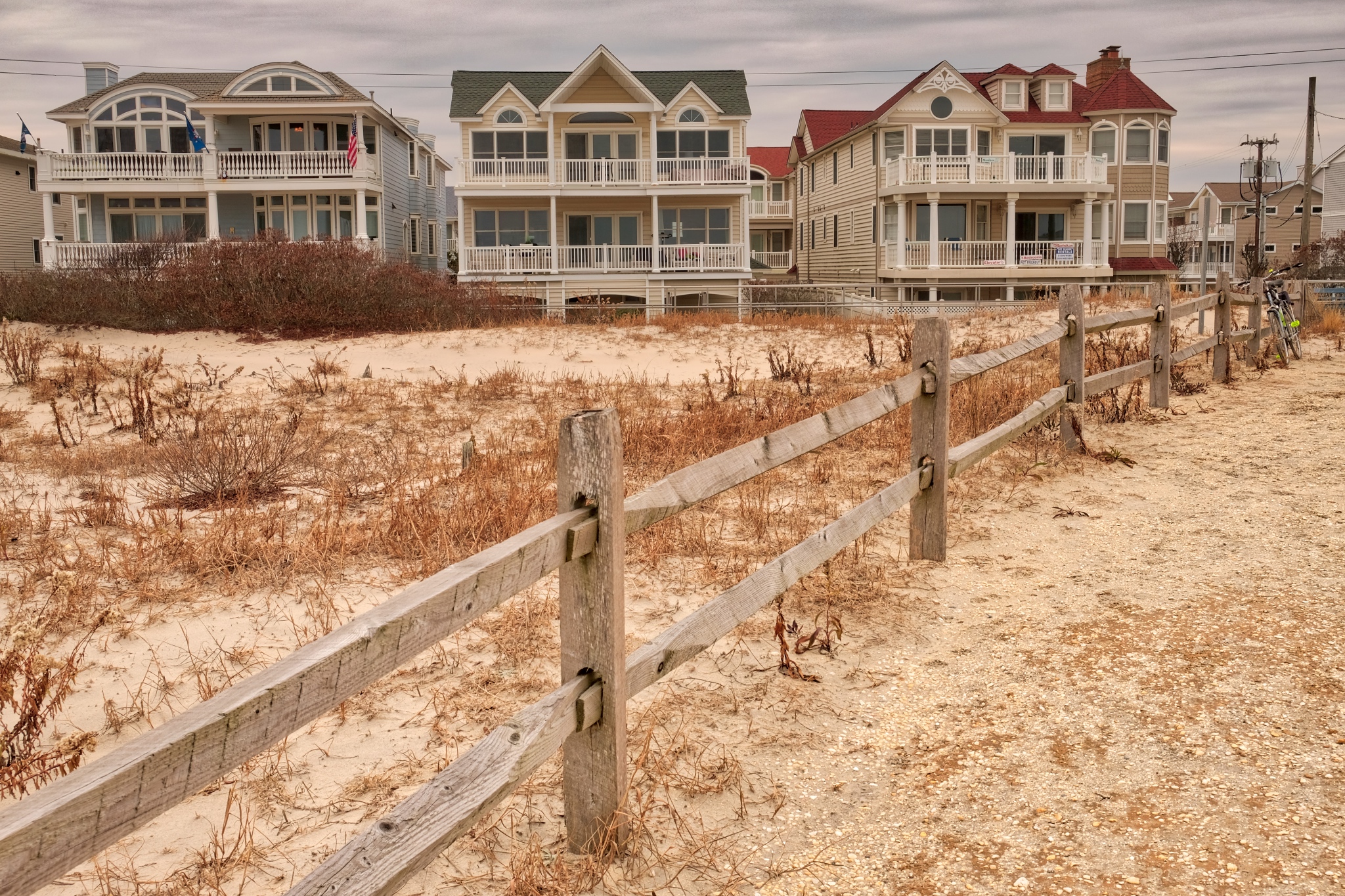 Although Ocean City is a very old beach resort (for mostly rich folks from Philadelphia), many of the old beach houses were torn down and replaced with these fanciful 'kit' beach houses. About 80% of these are vacant during the off-season.
Although Ocean City is a very old beach resort (for mostly rich folks from Philadelphia), many of the old beach houses were torn down and replaced with these fanciful 'kit' beach houses. About 80% of these are vacant during the off-season.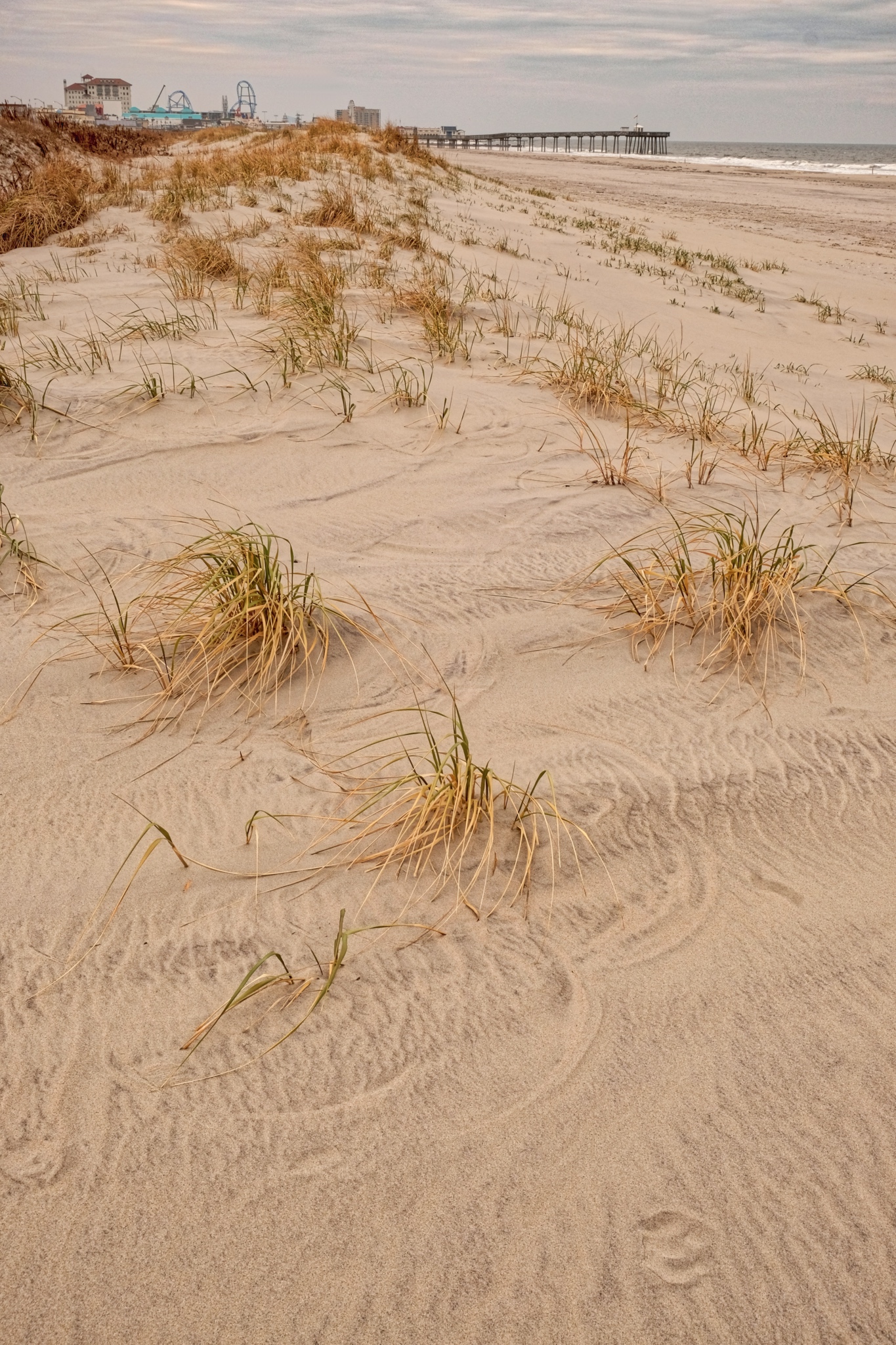 Ocean City has a nice beach. There used to be a major pier, but it was washed away during Hurricane Sandy . . . which also inundated Ocean City streets. The pier in the background is the private pier of the Ocean City Fishing Club.
Ocean City has a nice beach. There used to be a major pier, but it was washed away during Hurricane Sandy . . . which also inundated Ocean City streets. The pier in the background is the private pier of the Ocean City Fishing Club.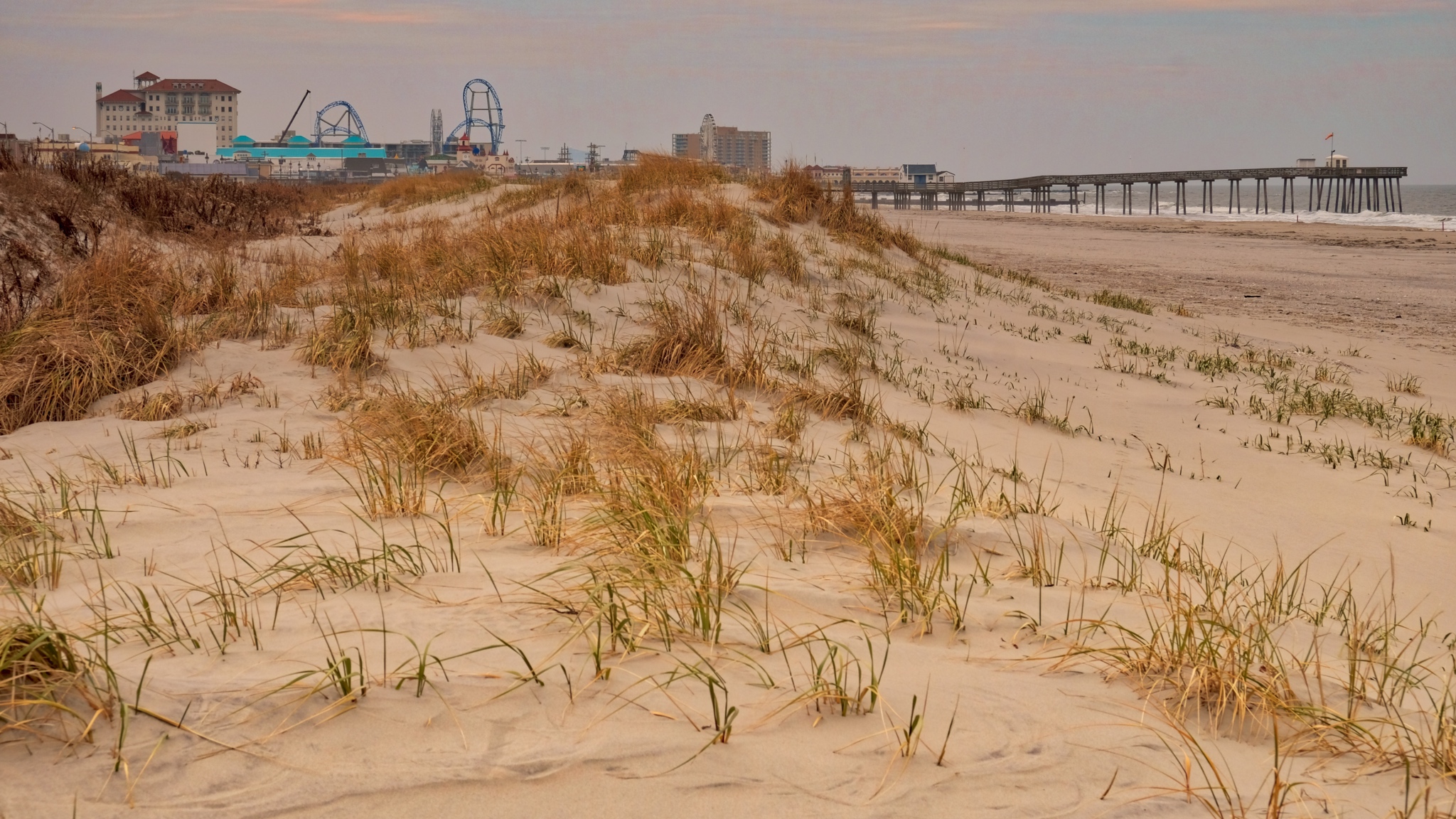 Ocean City has a few attractions, including a very fine boardwalk. The town is 'dry' - alcohol is not sold in stores, so it has gained a reputation as a family beach.
Ocean City has a few attractions, including a very fine boardwalk. The town is 'dry' - alcohol is not sold in stores, so it has gained a reputation as a family beach.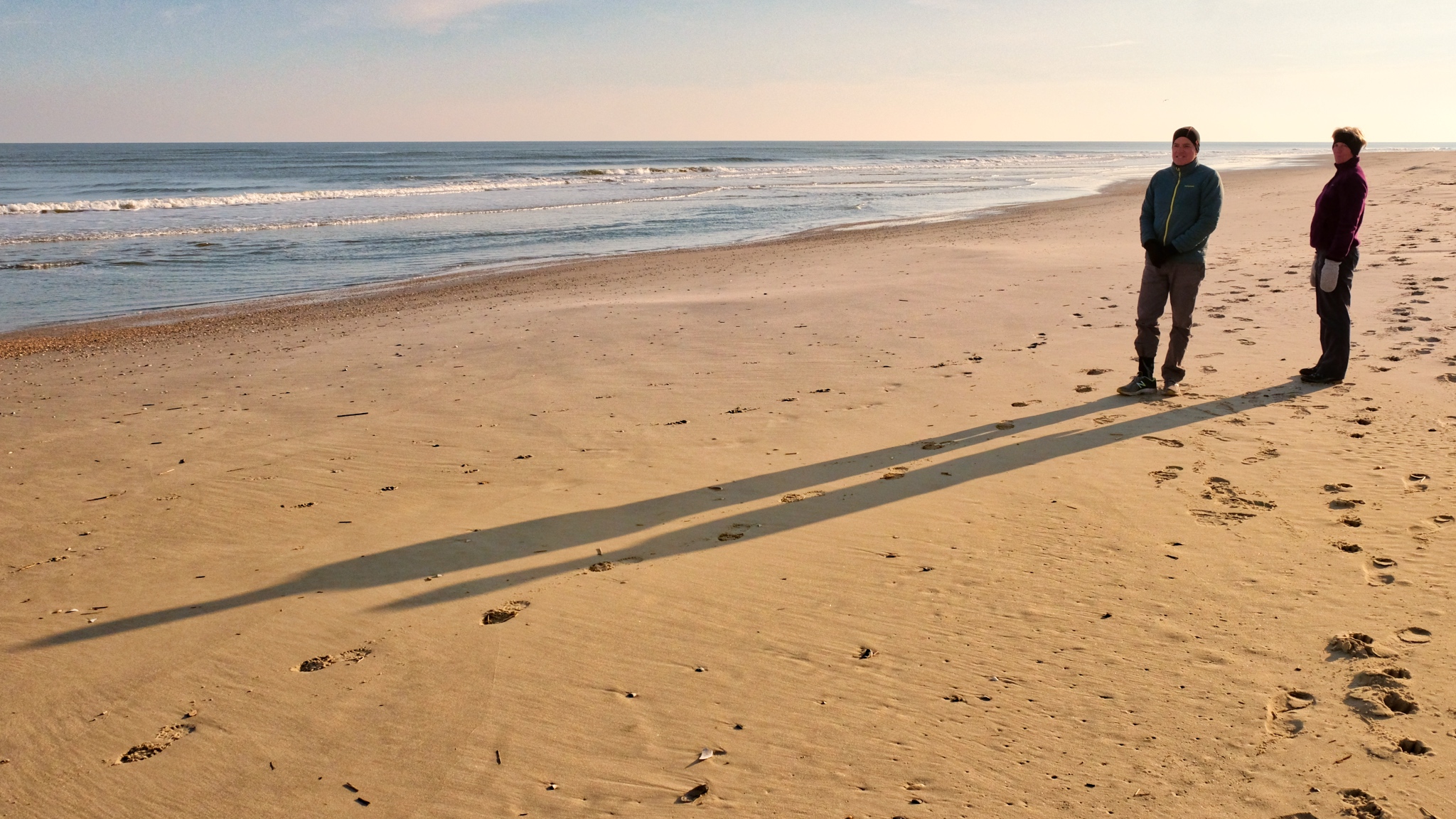 We had the beach to ourselves every day.
We had the beach to ourselves every day.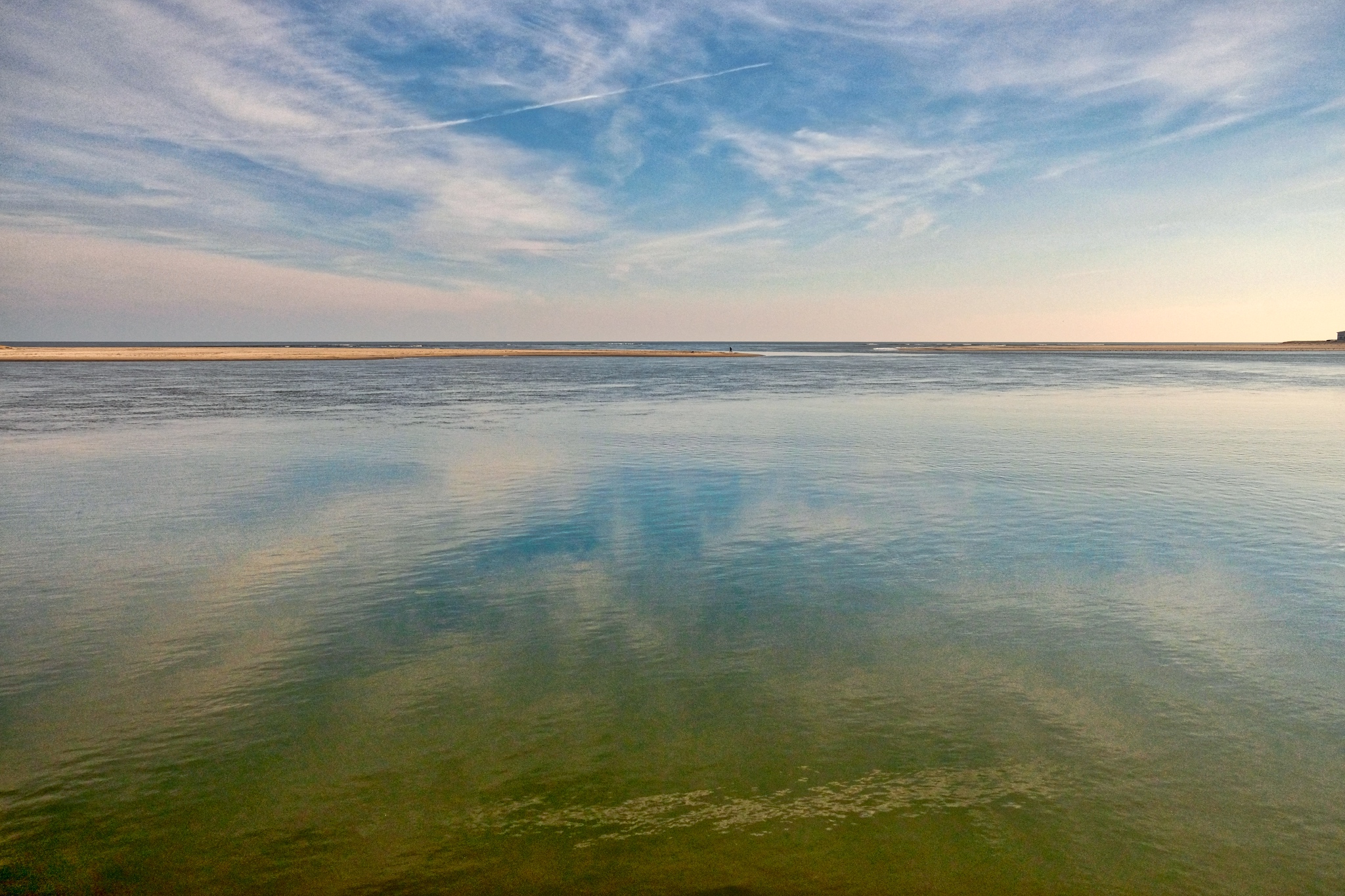 I had the good luck to be here between storms . . . and wind. Quite mild and calm days for December. We took a nice bike ride to a nearby island and saw this inlet along the way.
I had the good luck to be here between storms . . . and wind. Quite mild and calm days for December. We took a nice bike ride to a nearby island and saw this inlet along the way. Much of the area to the west of Ocean City is designated as a wildlife reserve.
Much of the area to the west of Ocean City is designated as a wildlife reserve.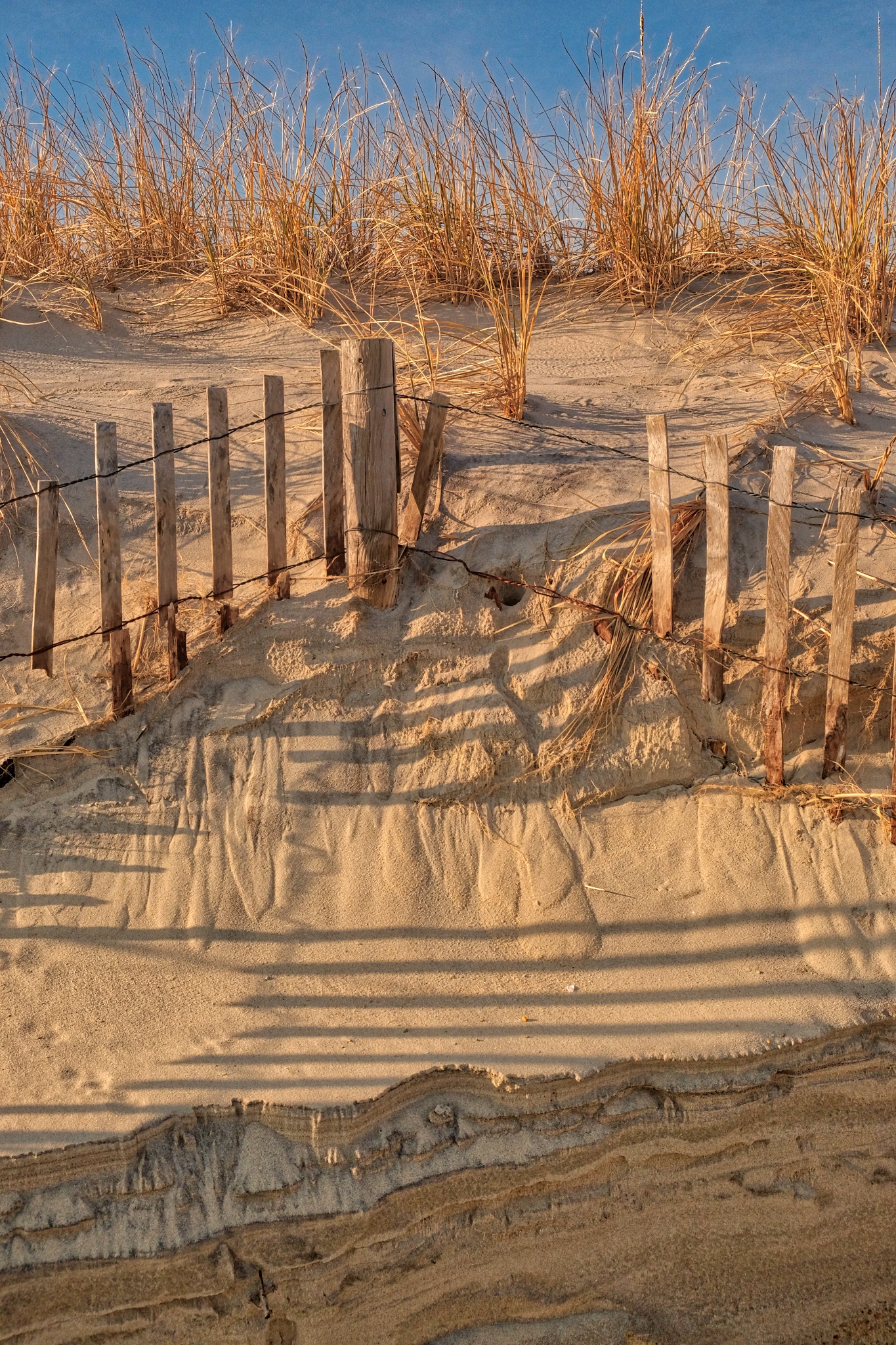 Beach erosion is still an issue. Successive hurricanes and 'noreasters' severely depleted the sands. The local government dredged the seabed and sprayed sand back to make a new beach. It will have to find it's new 'natural' levels.
Beach erosion is still an issue. Successive hurricanes and 'noreasters' severely depleted the sands. The local government dredged the seabed and sprayed sand back to make a new beach. It will have to find it's new 'natural' levels.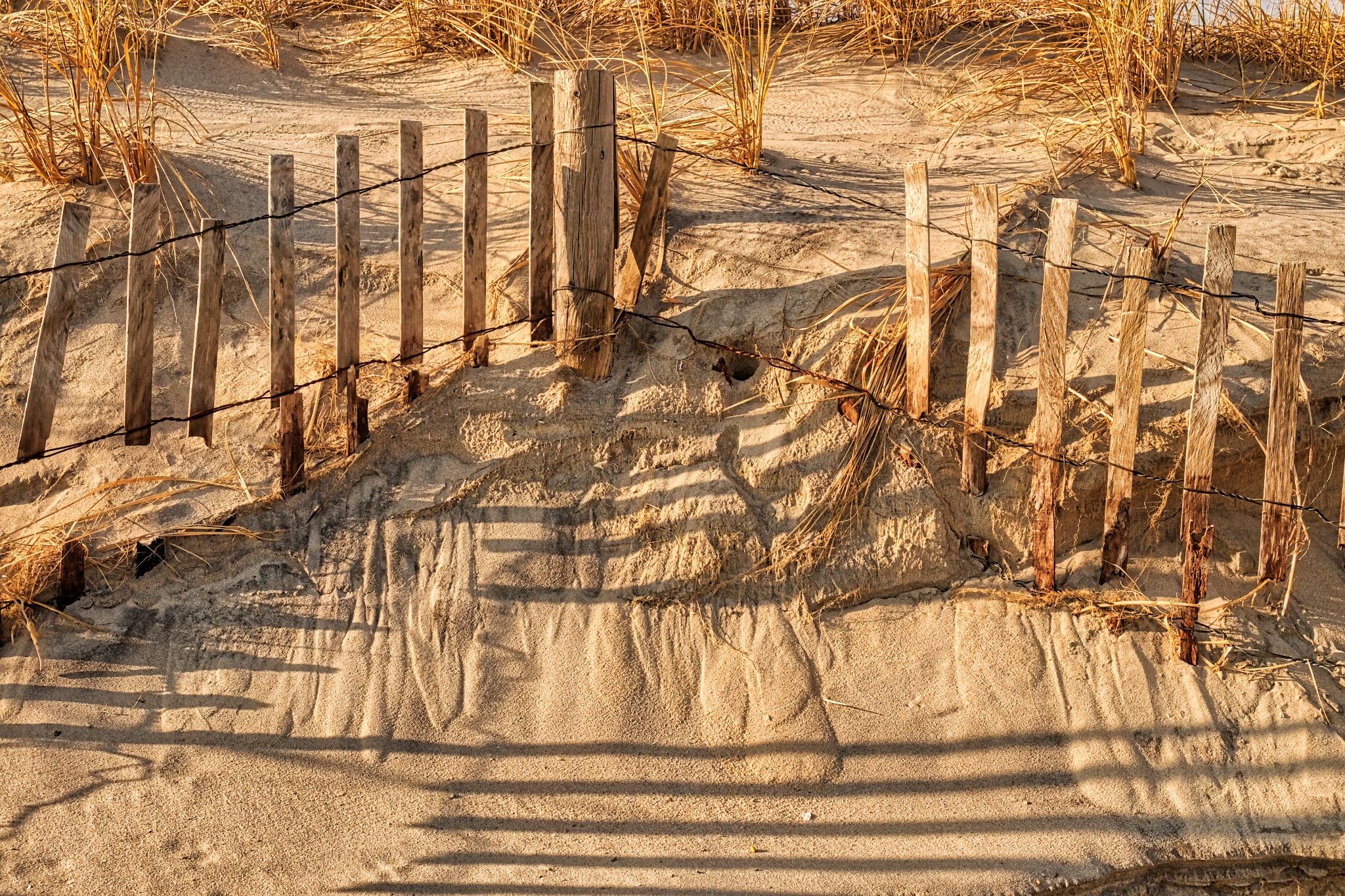 Wonderful patterns, shapes, and shadows in the beach dunes.
Wonderful patterns, shapes, and shadows in the beach dunes.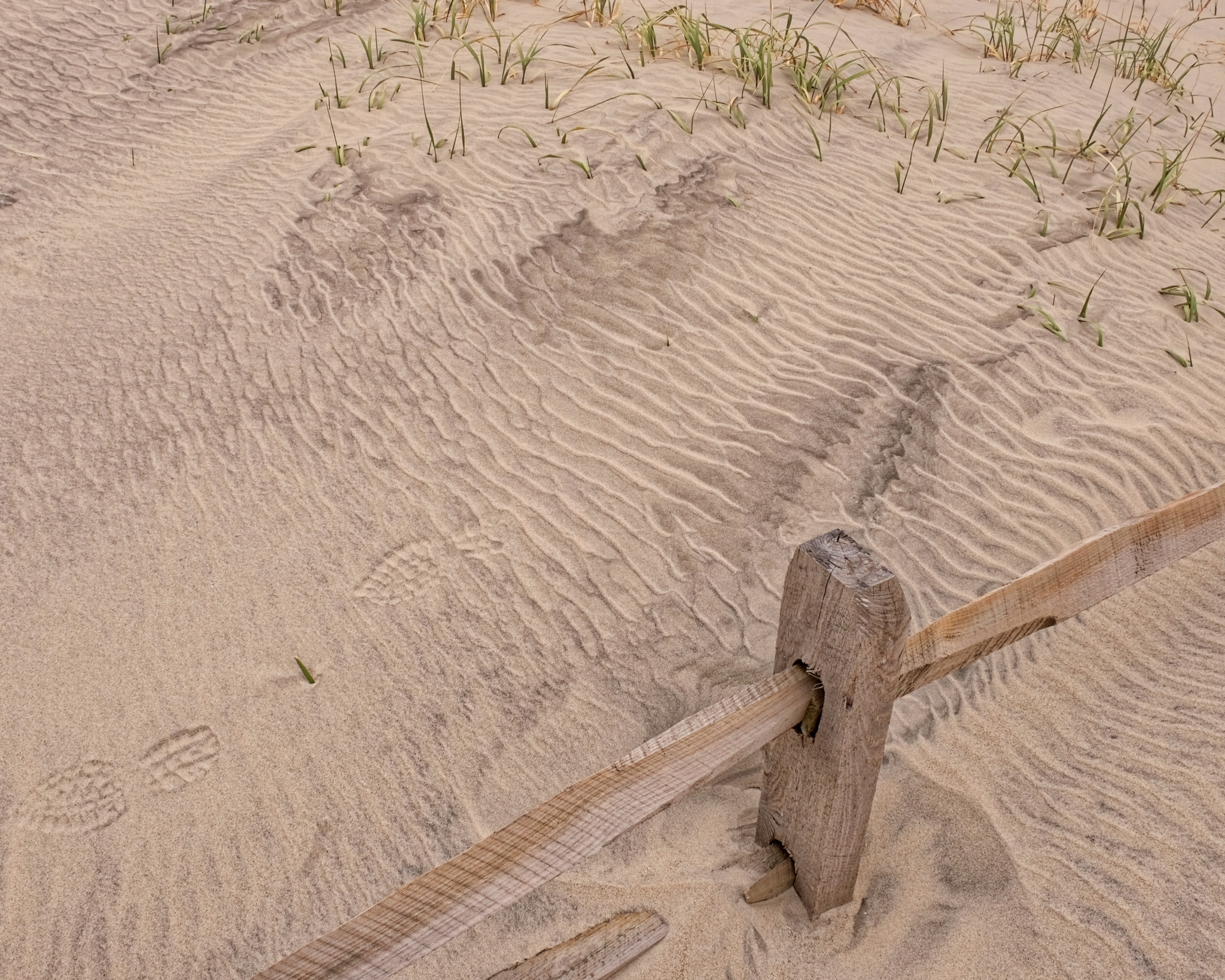 Wind patterns in the sand.
Wind patterns in the sand. With my good buddy, Bud.
With my good buddy, Bud. My friends and I drove 20 minutes south to the lovely colonial seaside village of Cape May in the late afternoon to see the decorated old Victorian and Colonial houses.
My friends and I drove 20 minutes south to the lovely colonial seaside village of Cape May in the late afternoon to see the decorated old Victorian and Colonial houses.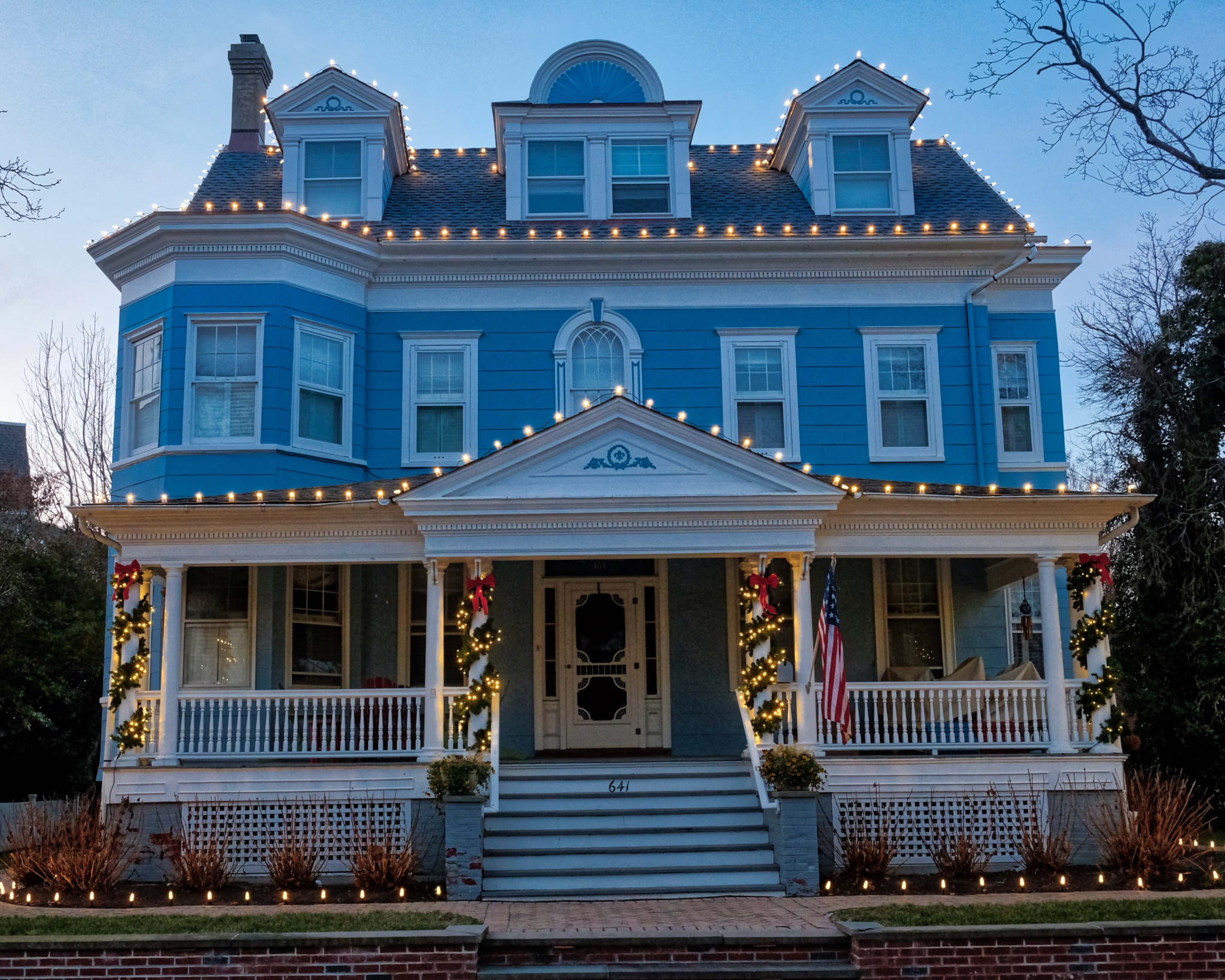 The sun had just gone down . . . and the houses were beginning to take on their night identity.
The sun had just gone down . . . and the houses were beginning to take on their night identity. There are so many cute houses in Cape May. The Cape May Historic District has over 600 listed homes. Fantastic!
There are so many cute houses in Cape May. The Cape May Historic District has over 600 listed homes. Fantastic!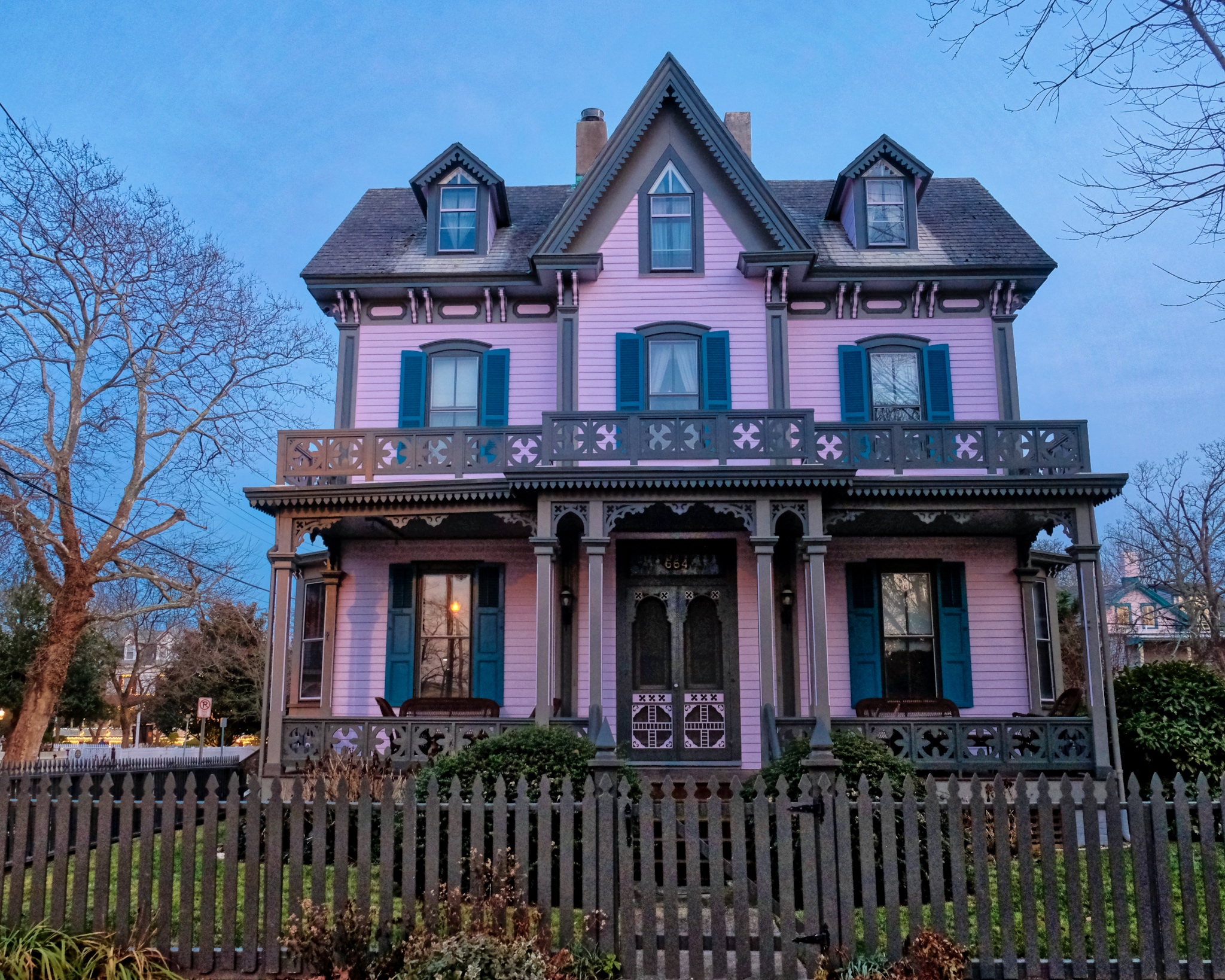 Cape May was first established as a village in 1632, on of the earliest settlements along the Atlantic coast. Most of the homes in the Historic District are of the Late Victorian Era Style.
Cape May was first established as a village in 1632, on of the earliest settlements along the Atlantic coast. Most of the homes in the Historic District are of the Late Victorian Era Style.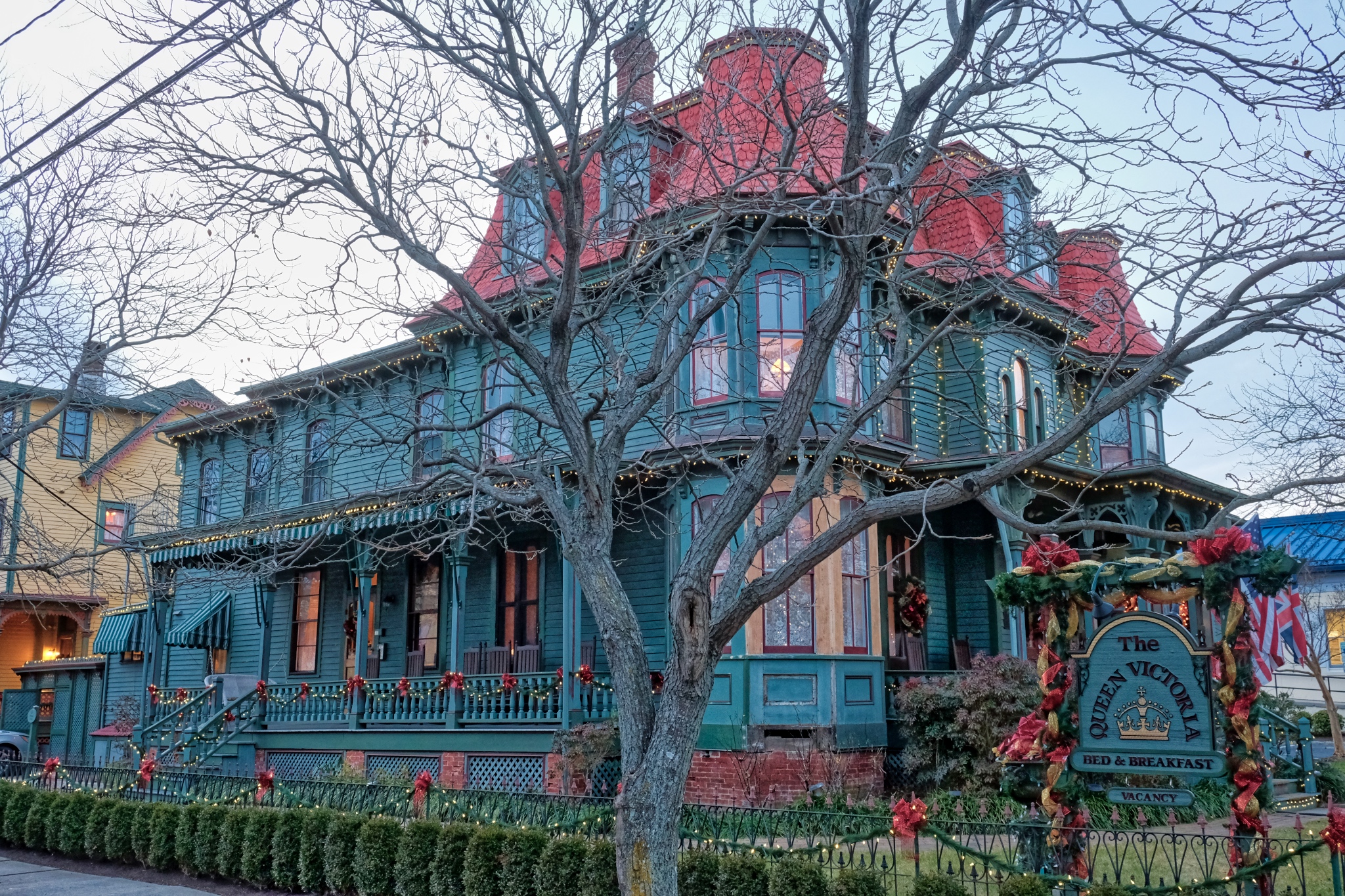 The beautiful Victoria B&B . . . .
The beautiful Victoria B&B . . . .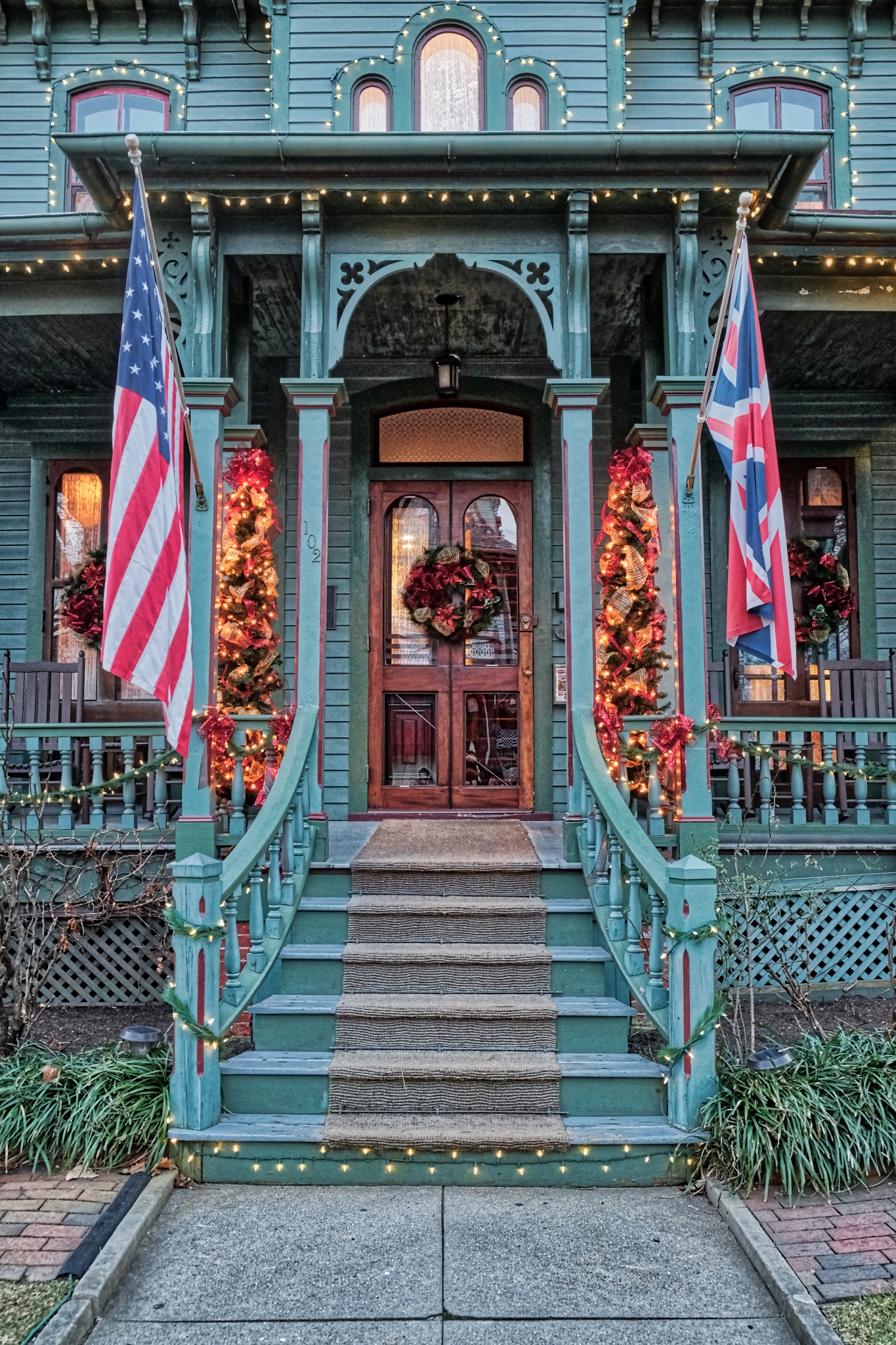 The Queen Victoria B&B front door.
The Queen Victoria B&B front door.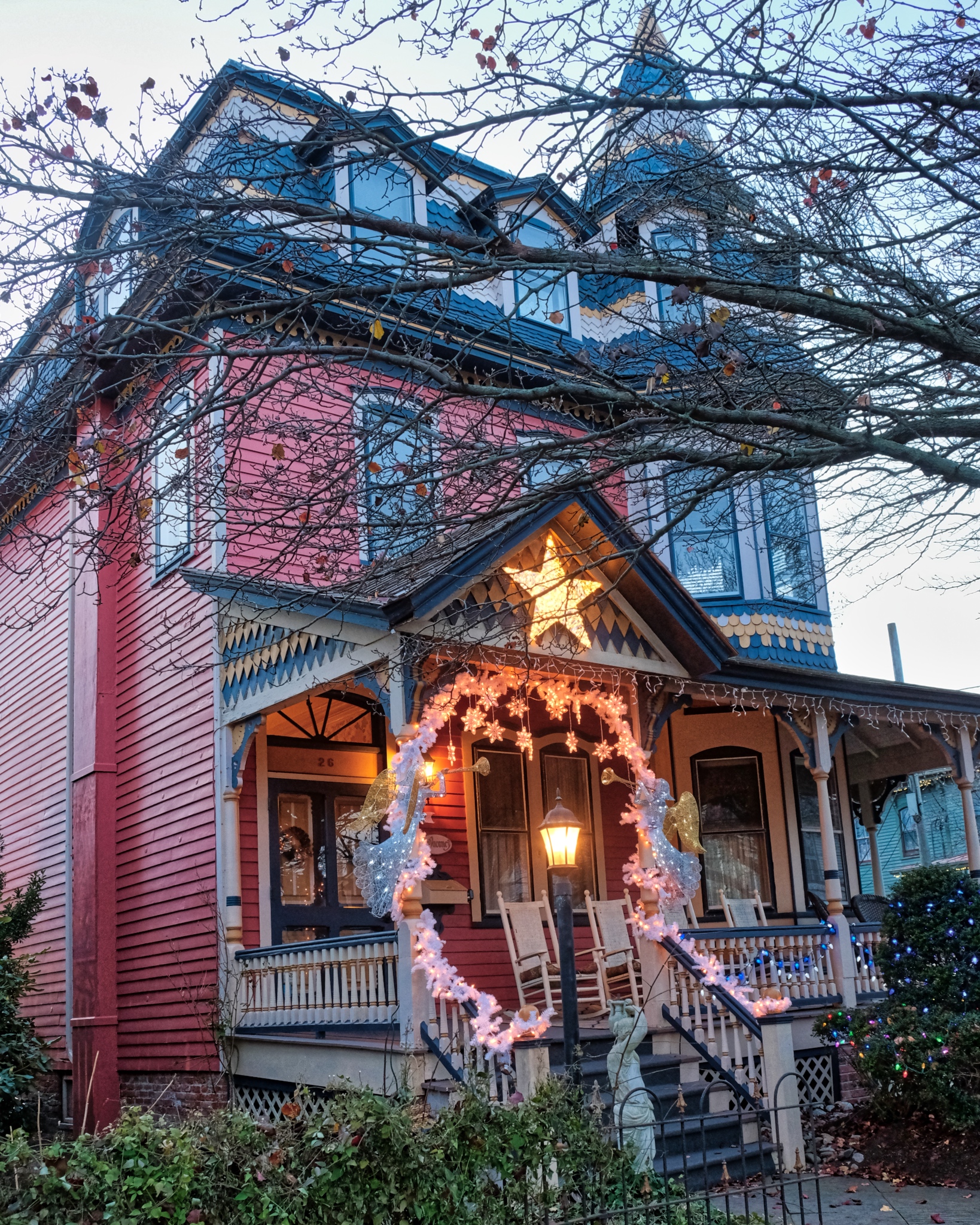 Lovely turreted Victorian mansion.
Lovely turreted Victorian mansion.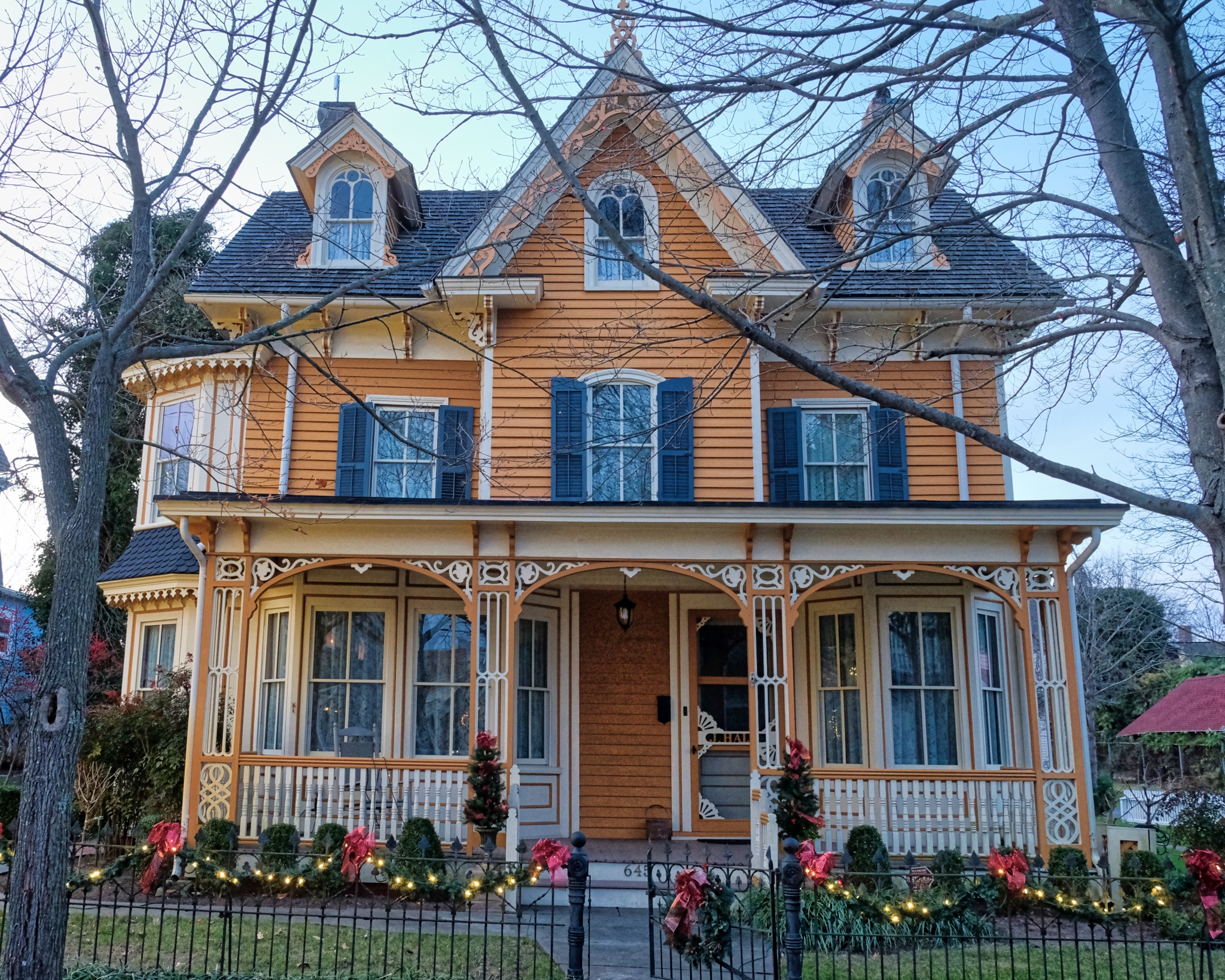 The pastel colors of the perfectly restored (maintained?) Victorians were so sweet.
The pastel colors of the perfectly restored (maintained?) Victorians were so sweet.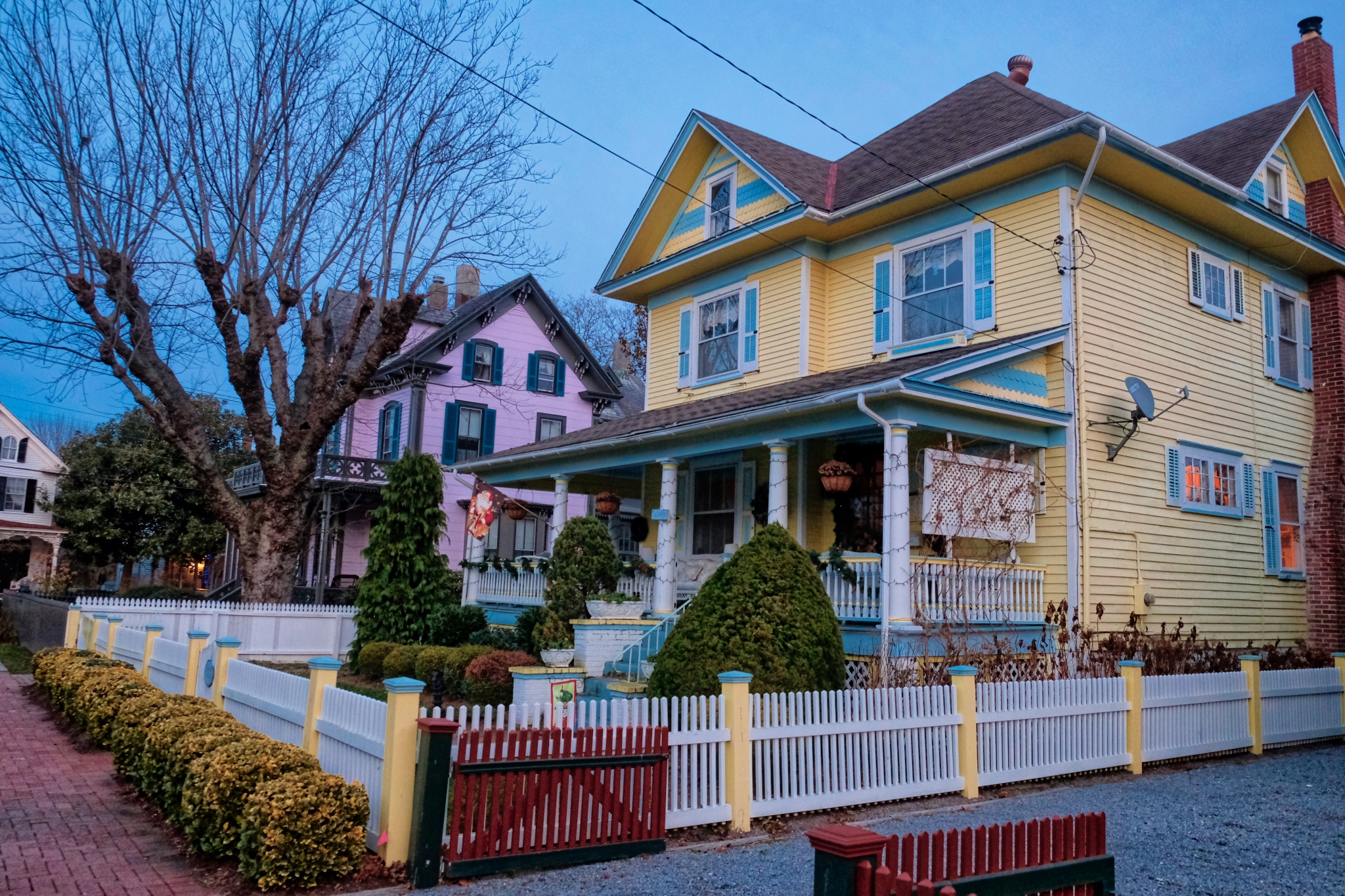 As the darkness continued to fall, the old houses began to light up in their Christmas charm.
As the darkness continued to fall, the old houses began to light up in their Christmas charm. Although not as grand or ornate as some others in Cape May, I like this modest white house the most: it seems so inviting.
Although not as grand or ornate as some others in Cape May, I like this modest white house the most: it seems so inviting.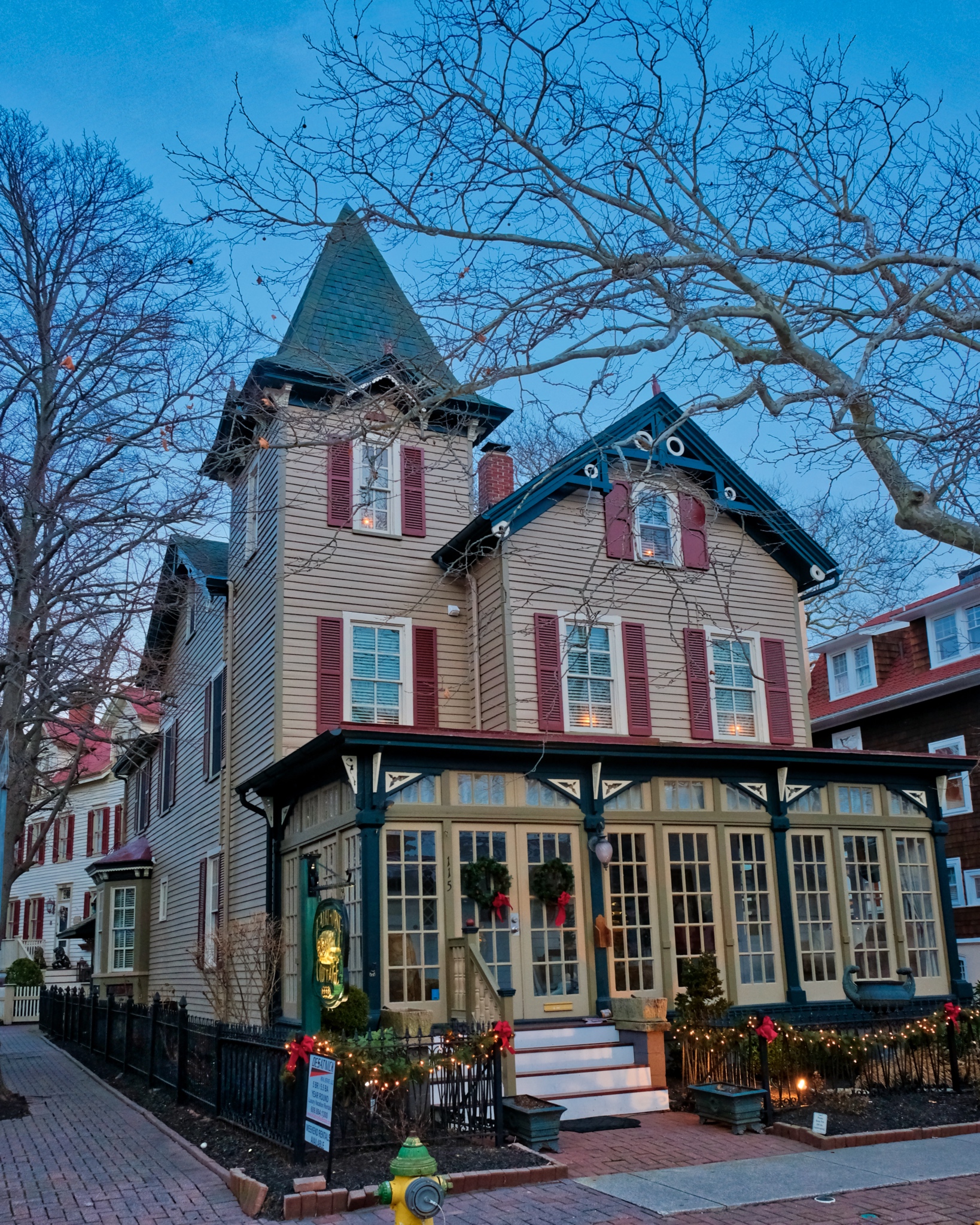 Another one of my favorites . . . that enclosed porch is just perfect!
Another one of my favorites . . . that enclosed porch is just perfect!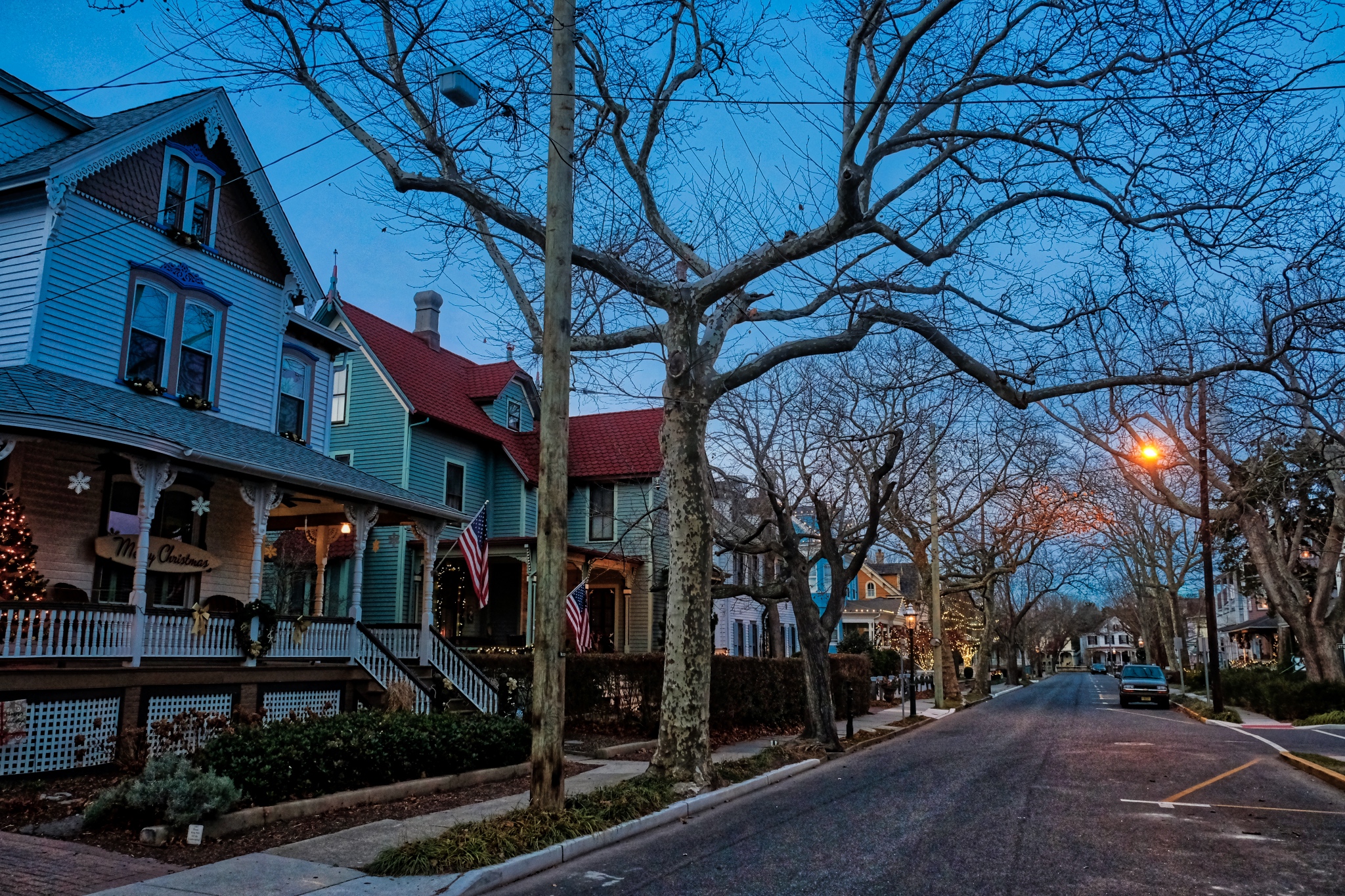 A typical Cape May street in the Historical District.
A typical Cape May street in the Historical District. Photographers love the 'magic hour' - the first and last hour of sunlight, but we also love the 'Blue Hour' - the time just before dark when the sky is a deep blue.
Photographers love the 'magic hour' - the first and last hour of sunlight, but we also love the 'Blue Hour' - the time just before dark when the sky is a deep blue.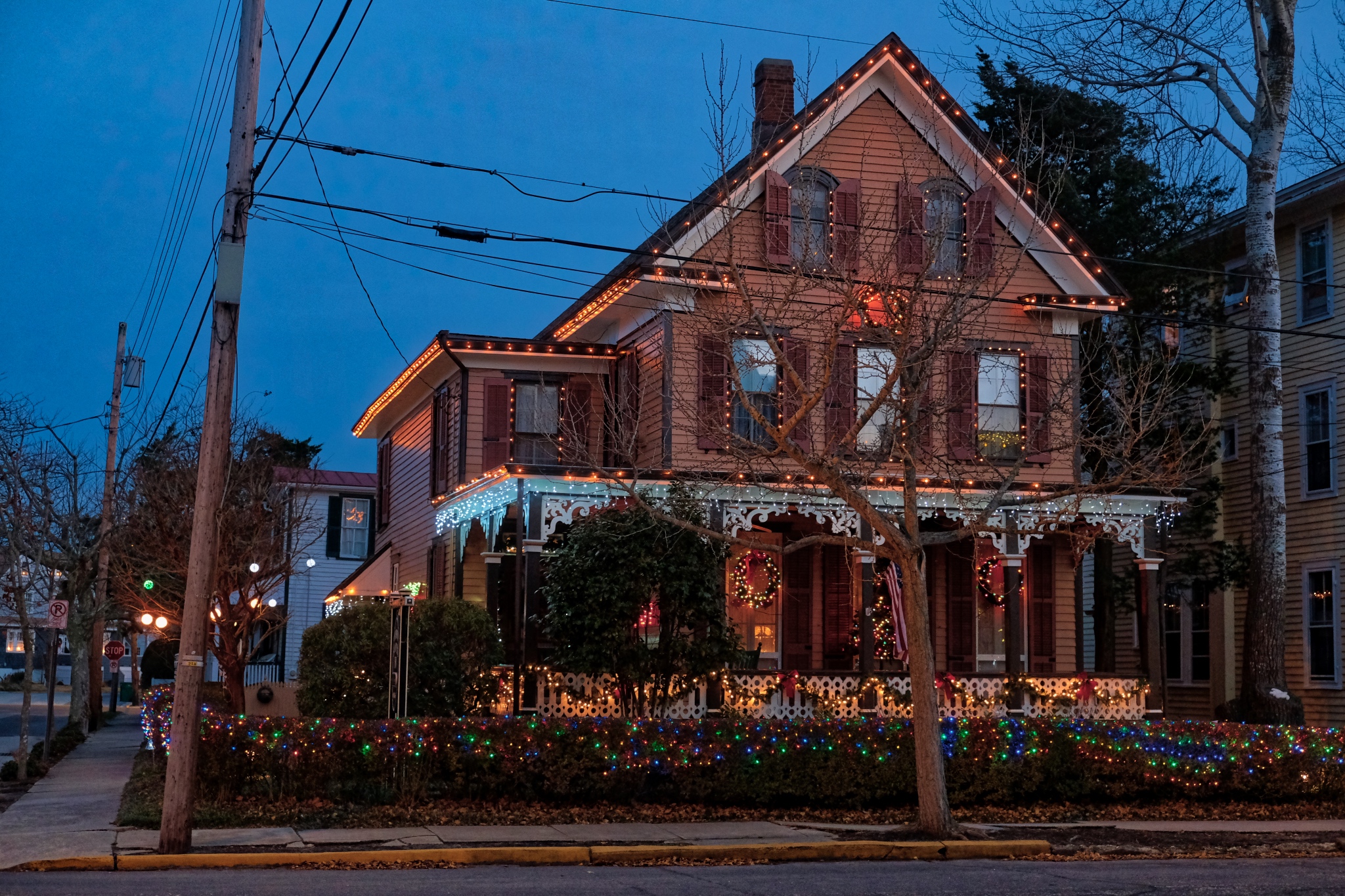 The holiday decorations were very nicely done . . . and NONE of those horrible inflatables!
The holiday decorations were very nicely done . . . and NONE of those horrible inflatables!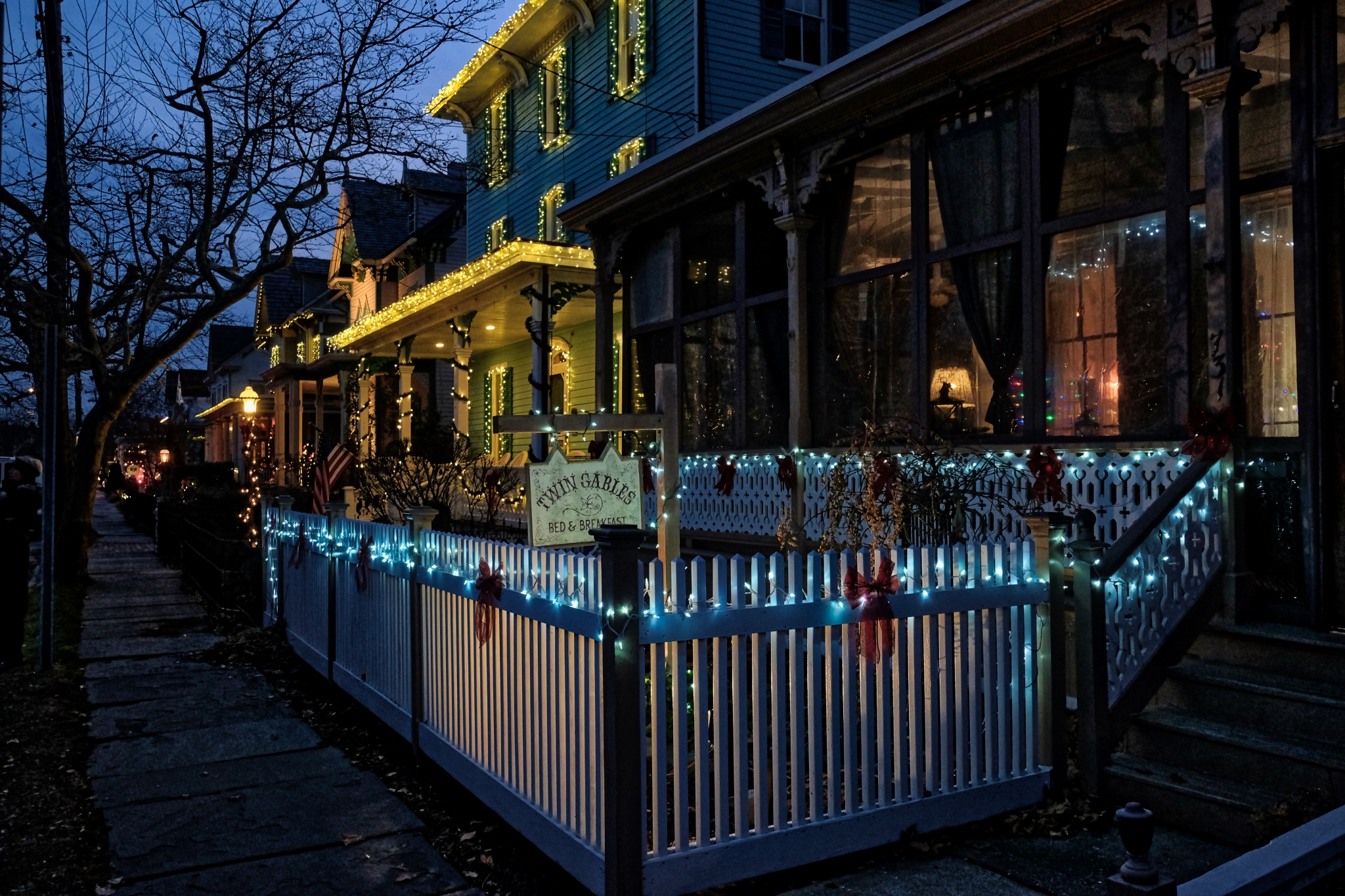 Such a lovely little town . . . "The way it used it be" . . . at least for the few who could afford it, even back then. My friends said this is "Philadelphia money."
Such a lovely little town . . . "The way it used it be" . . . at least for the few who could afford it, even back then. My friends said this is "Philadelphia money."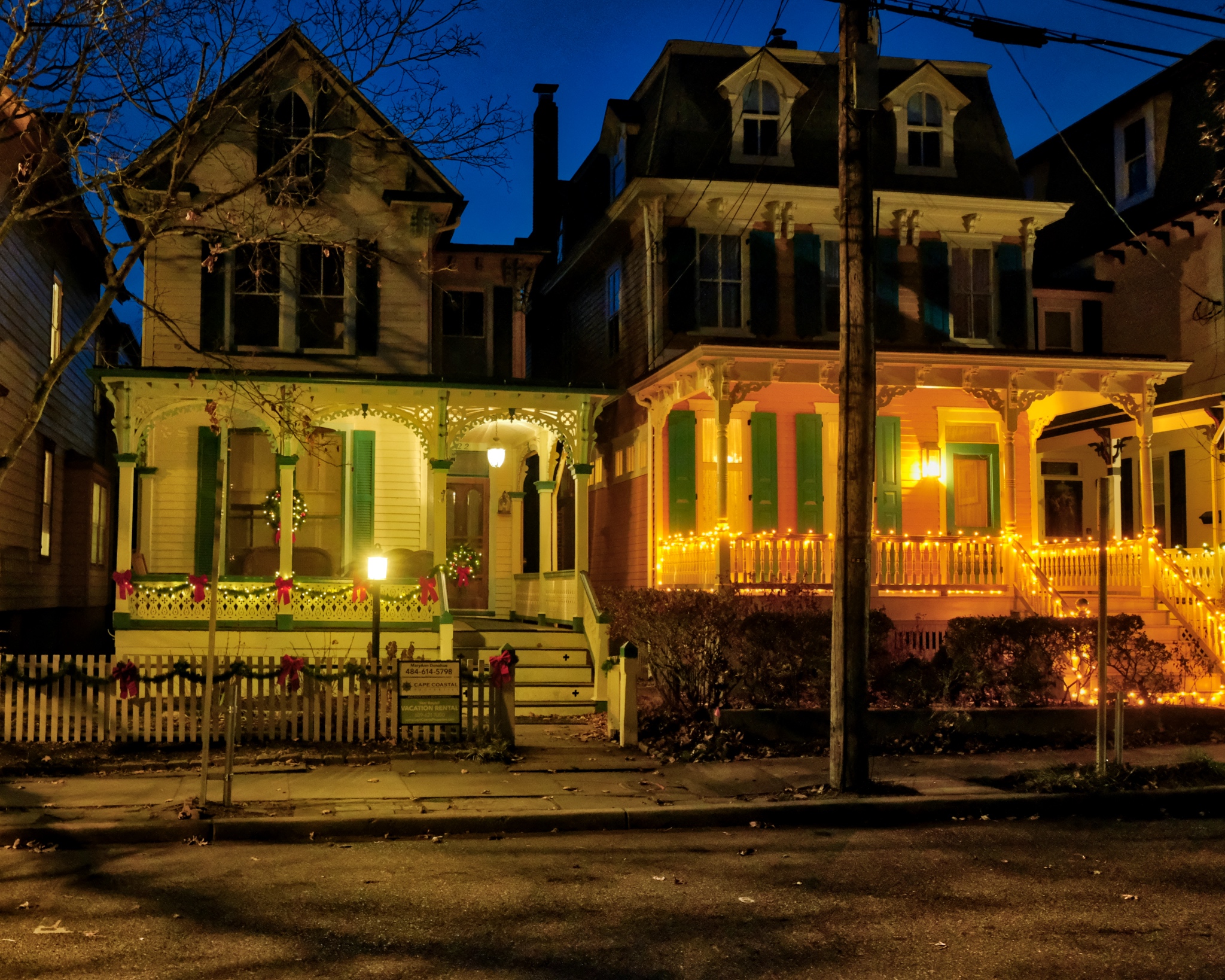 At times it seemed we were walking through a movie set . . . so perfect was the restoration . . .
At times it seemed we were walking through a movie set . . . so perfect was the restoration . . .  These two were gems: big porches on both floors!
These two were gems: big porches on both floors! Such a fantasy house!
Such a fantasy house! Cape May!
Cape May! 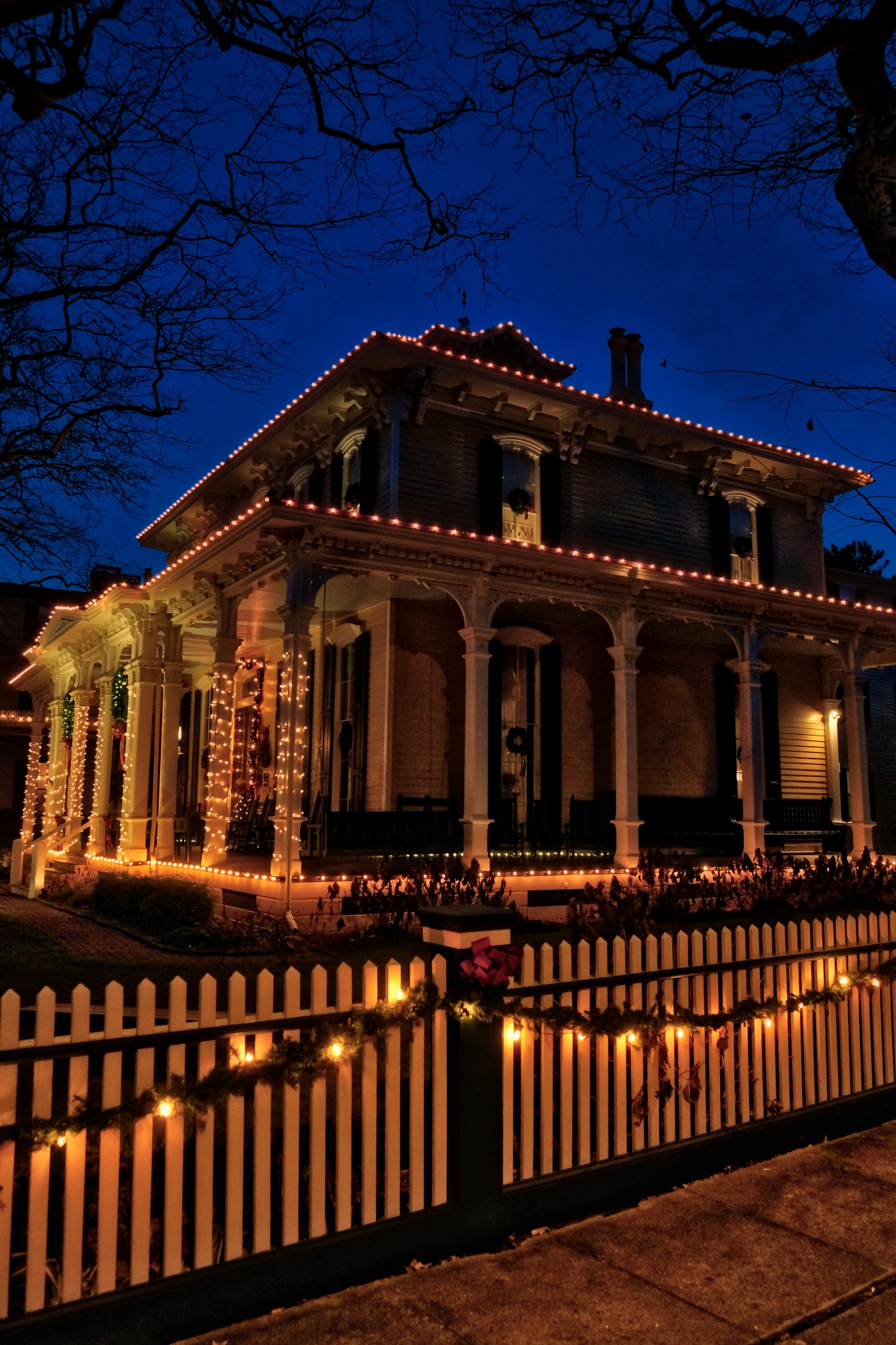 A beautiful gem in the blue hour.
A beautiful gem in the blue hour.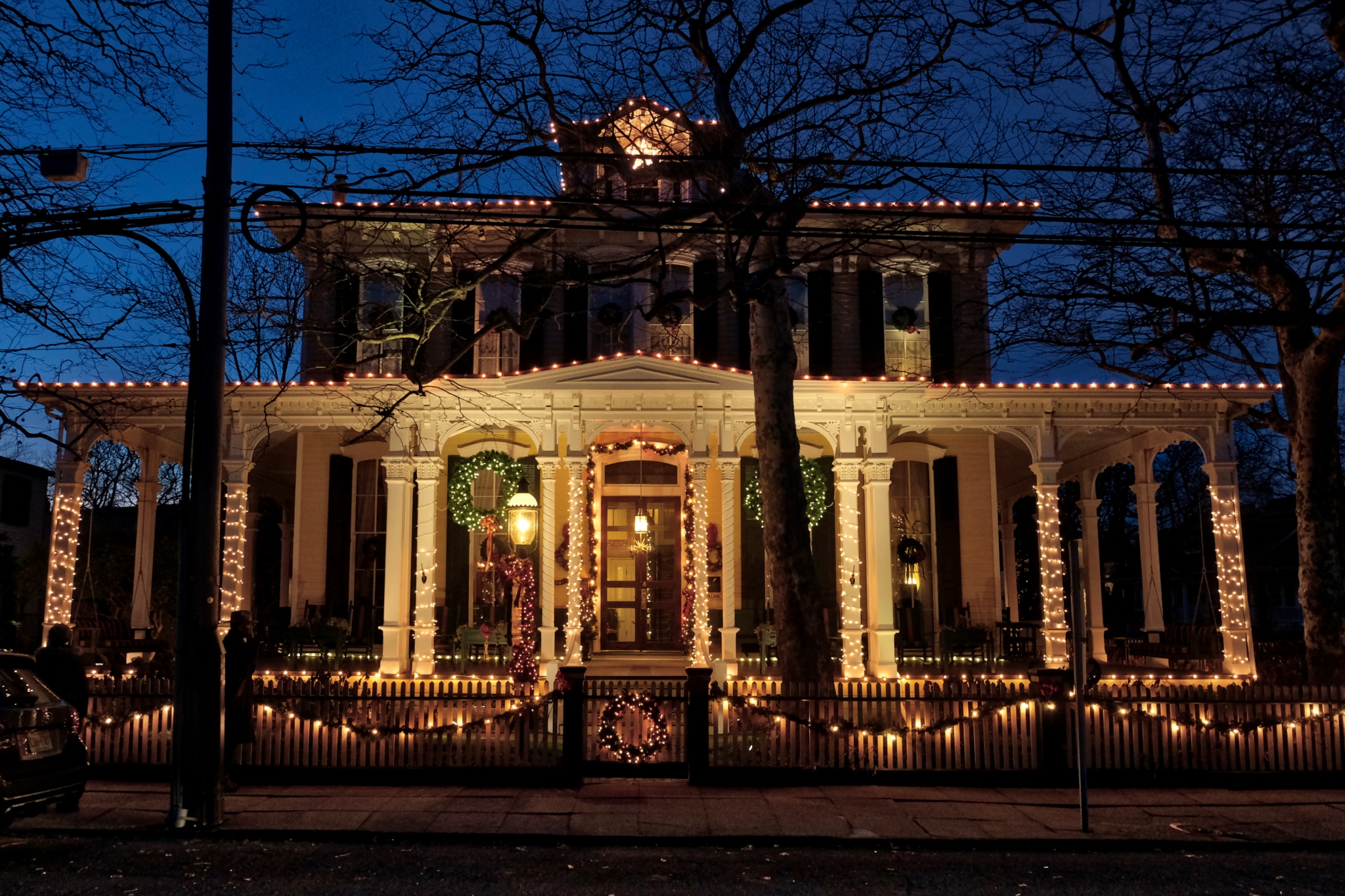 I could live here!
I could live here!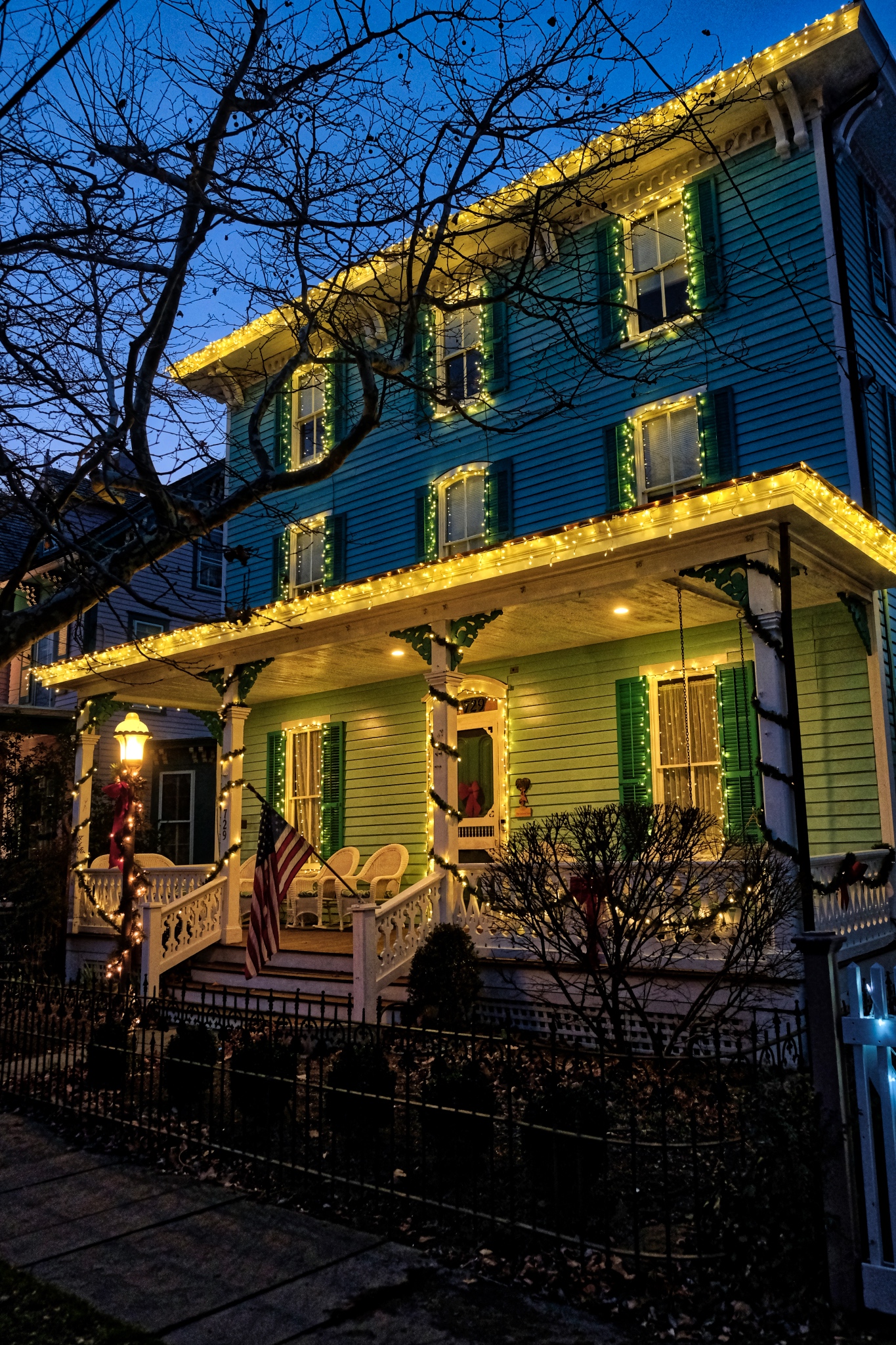 The old houses come in many colors.
The old houses come in many colors. Tourists come to Cape May all year.
Tourists come to Cape May all year. 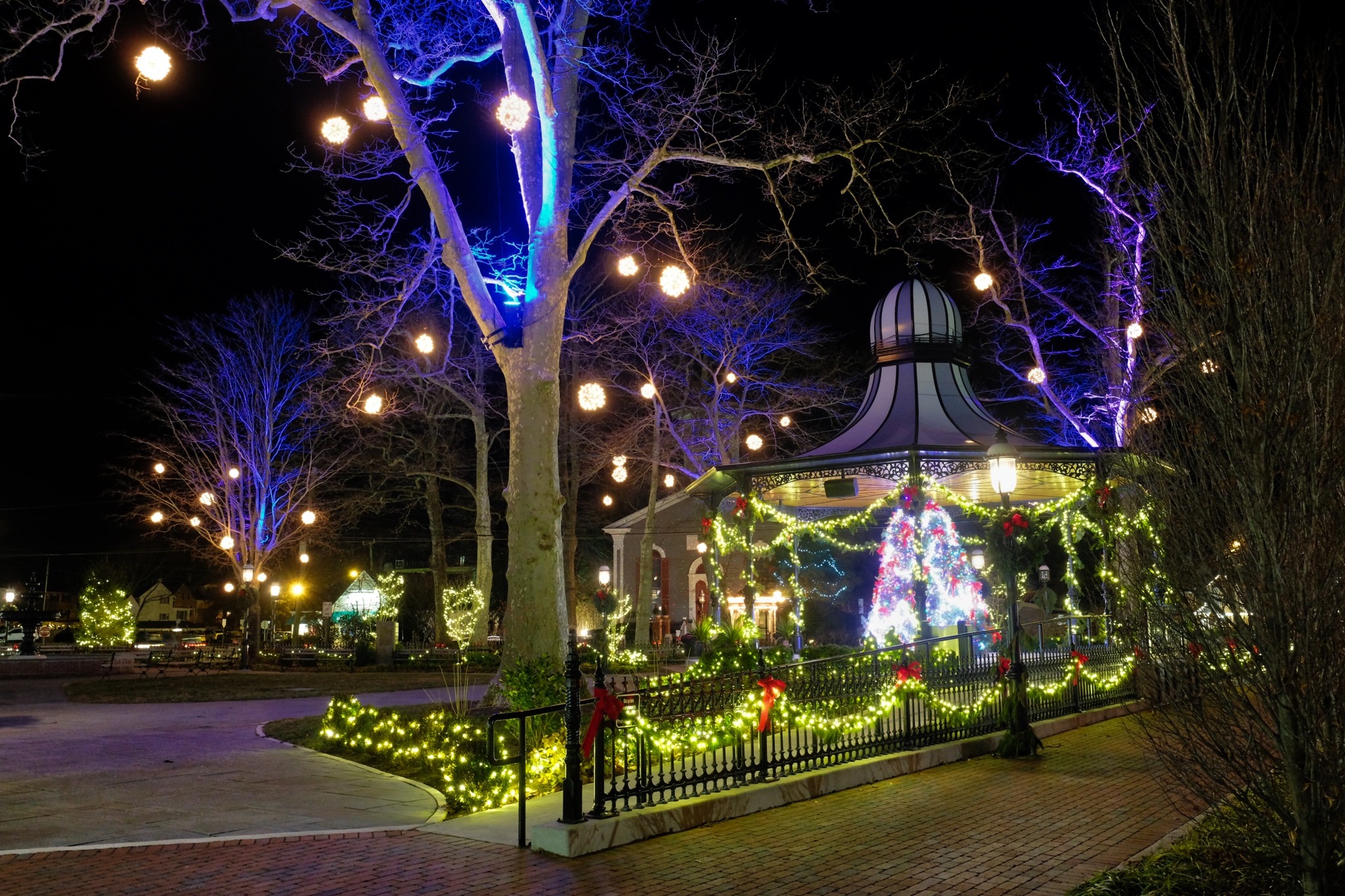 There is an old timey park in Cape May with a lovely gazebo.
There is an old timey park in Cape May with a lovely gazebo.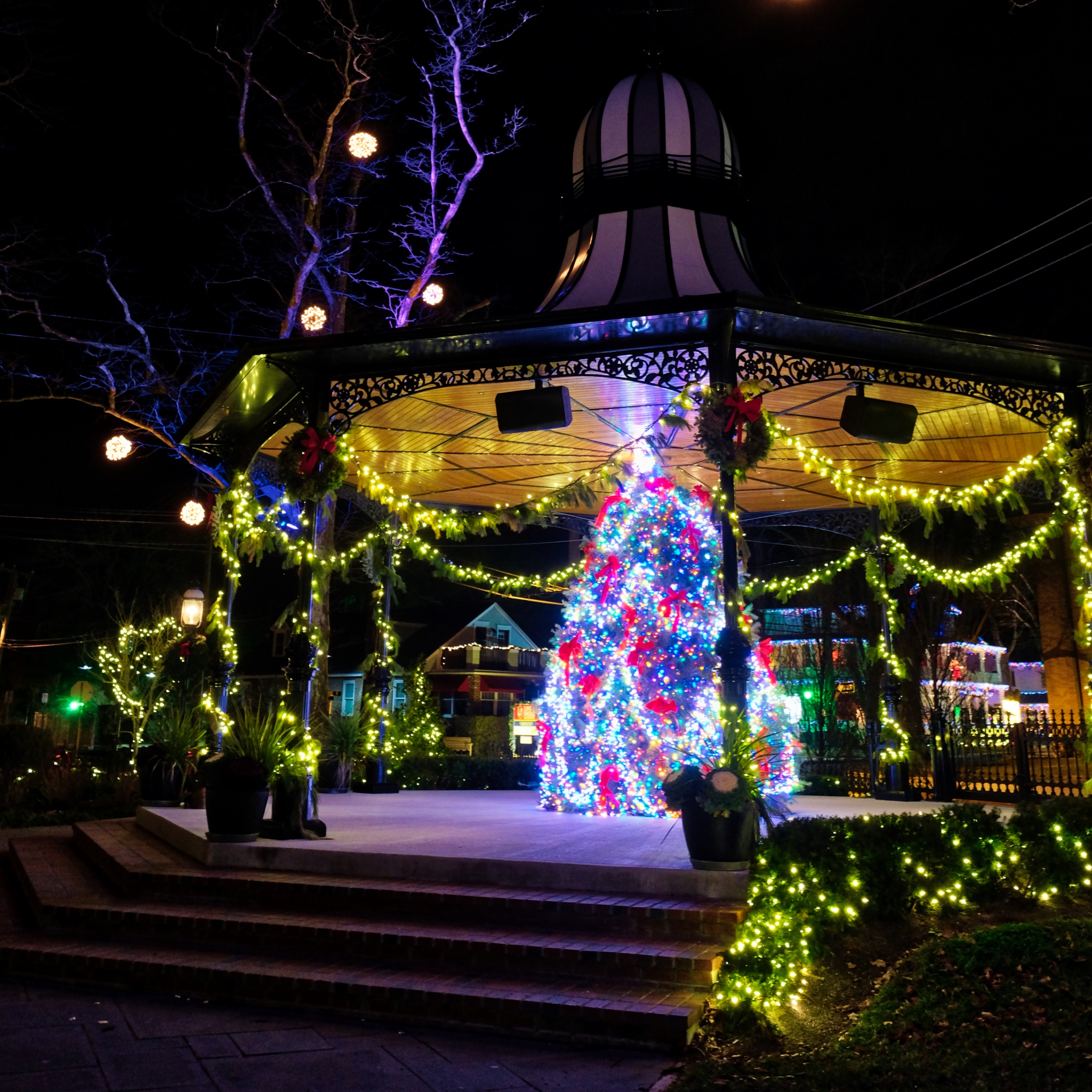 Such a festive feeling.
Such a festive feeling.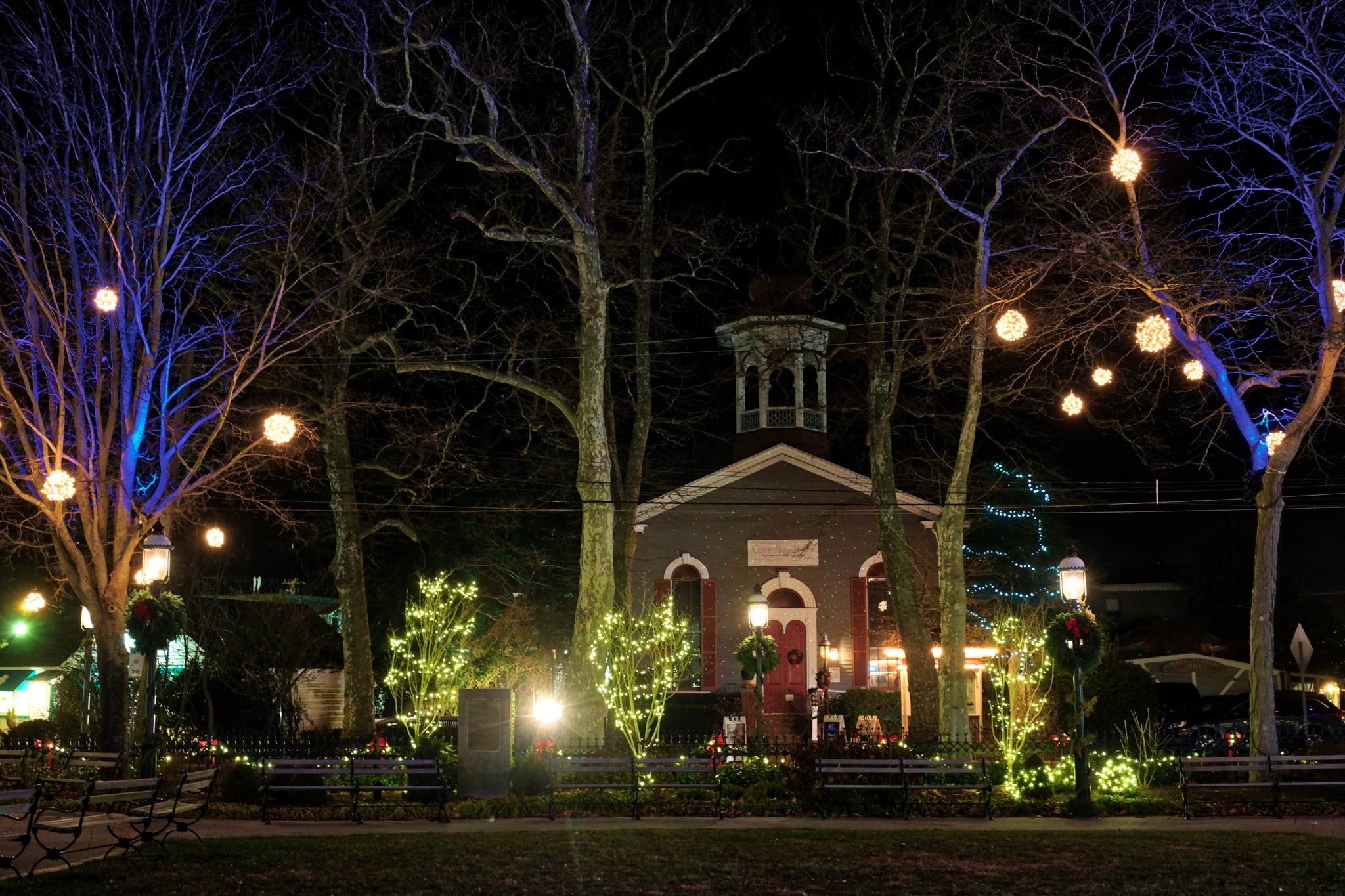 The buildings around the old town square.
The buildings around the old town square.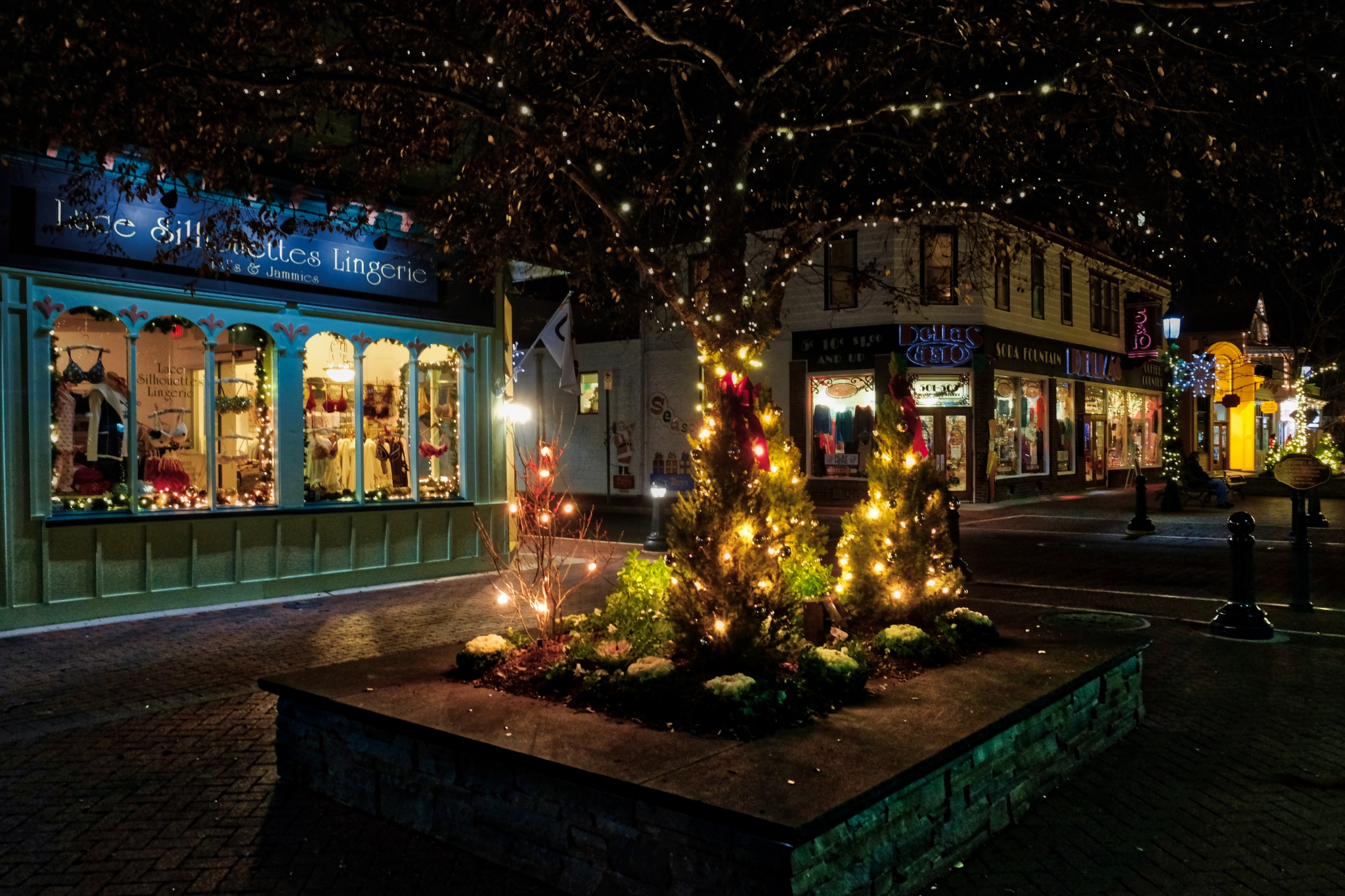 There is a nice walking street of old shops in Cape May proper.
There is a nice walking street of old shops in Cape May proper. The shop windows were dressed for the season.
The shop windows were dressed for the season. So pretty.
So pretty.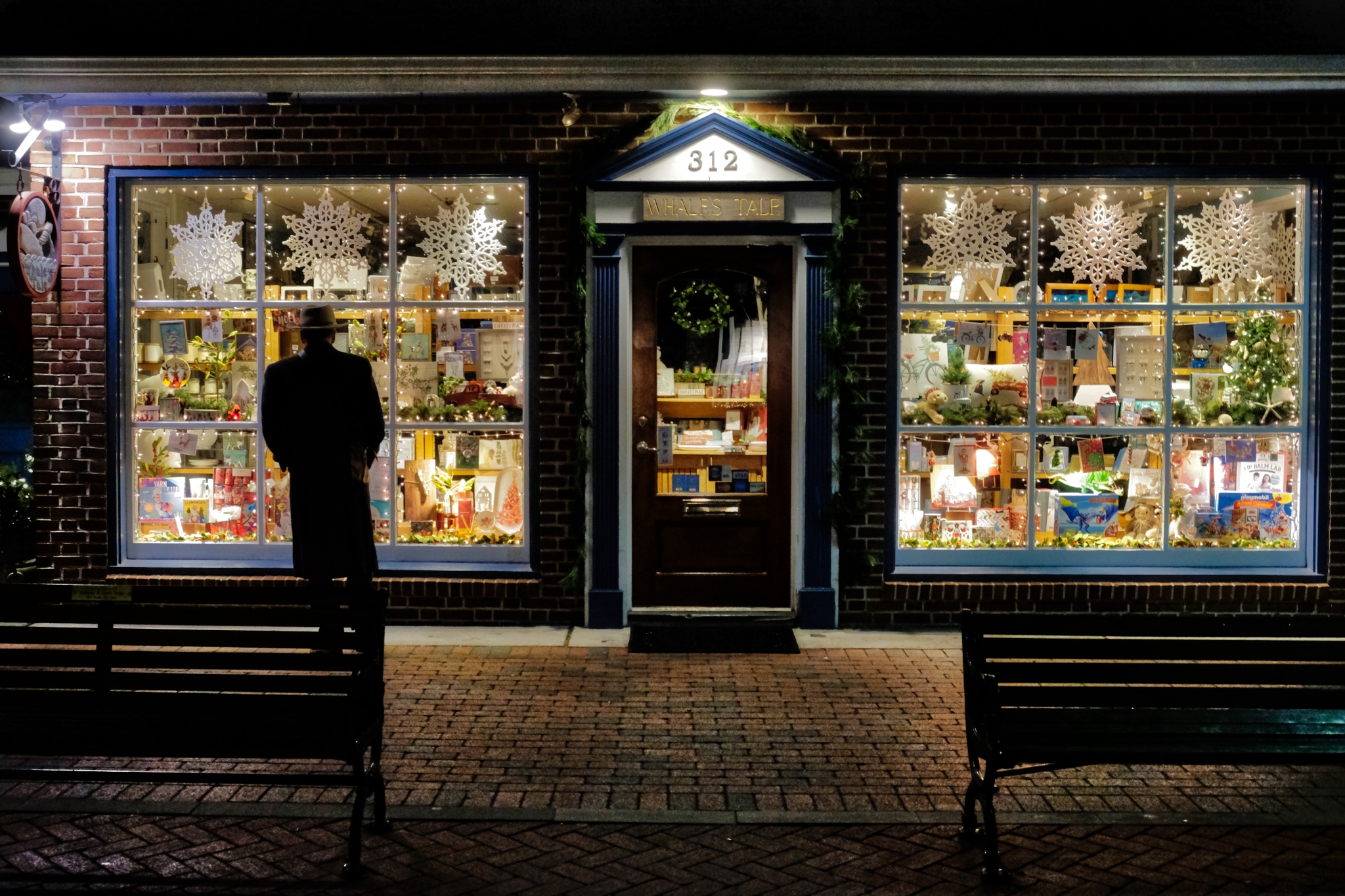 My friend, Bud, doing some last minute shopping.
My friend, Bud, doing some last minute shopping.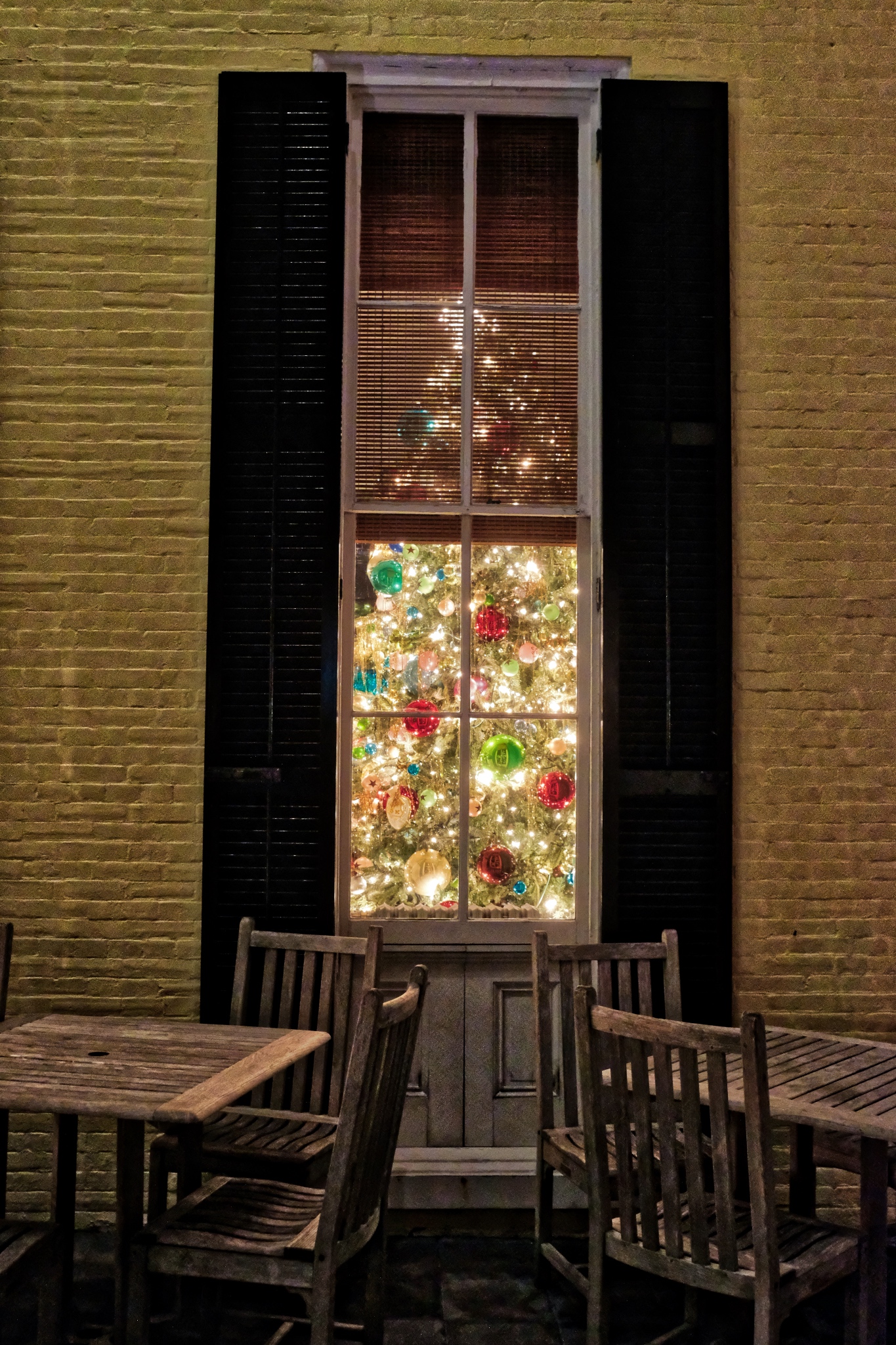 Christmas trees seemingly in every window!
Christmas trees seemingly in every window!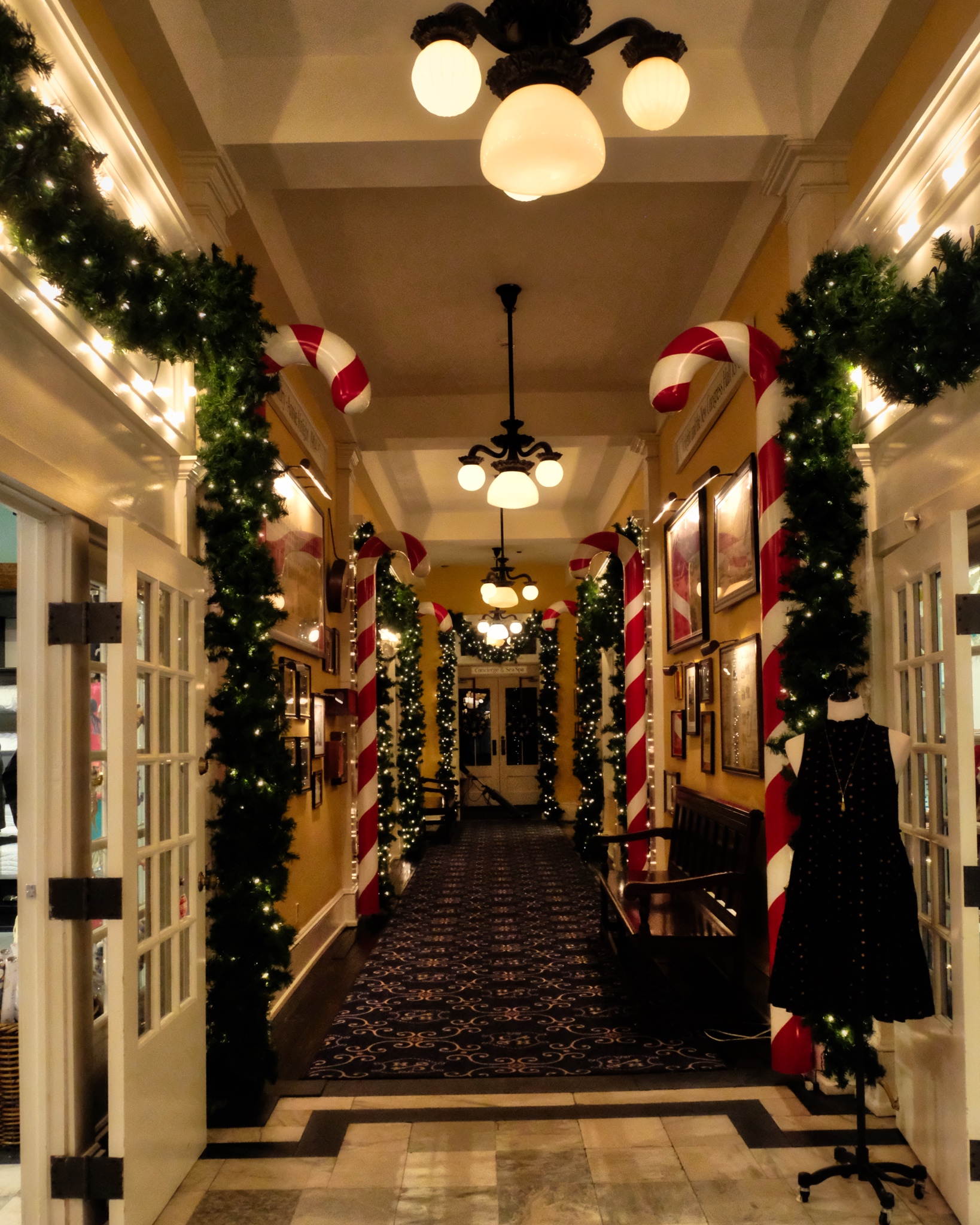 The interior of this hotel was nicely festooned with Christmas regalia.
The interior of this hotel was nicely festooned with Christmas regalia.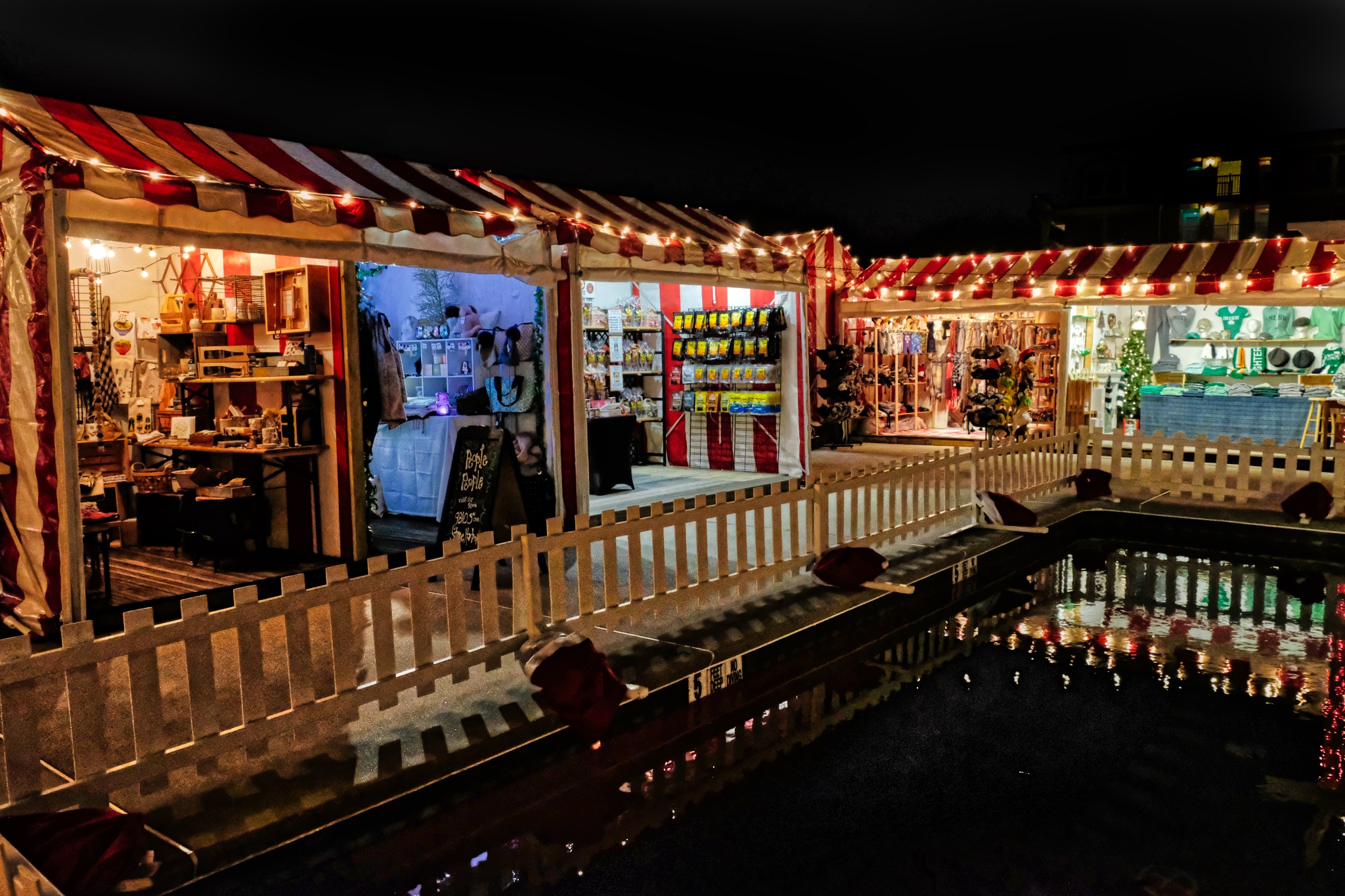 There was even a small Christmas Market in the garden of the old Heritage Hall Hotel. Yes, we had glüwine.
There was even a small Christmas Market in the garden of the old Heritage Hall Hotel. Yes, we had glüwine.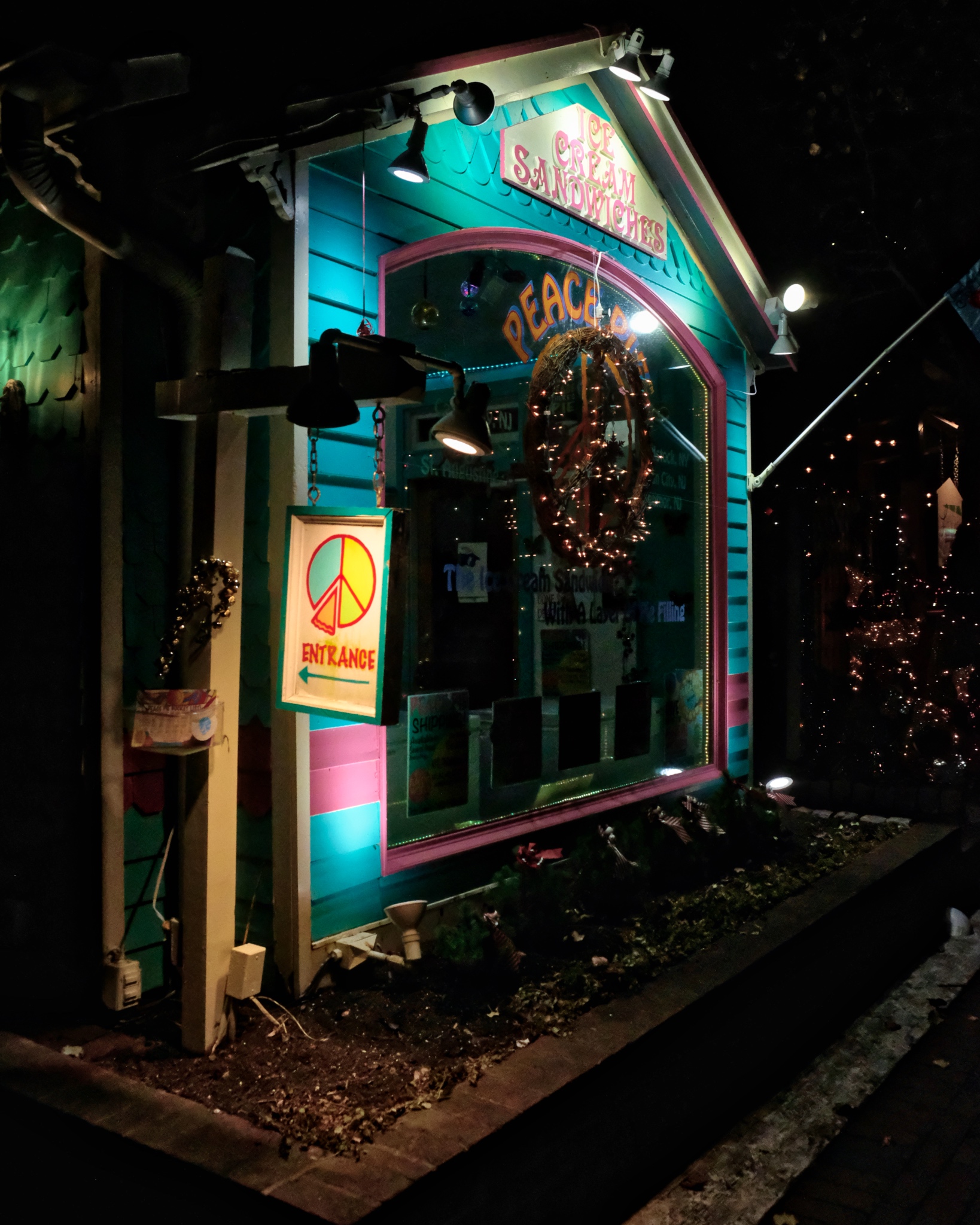 There were many cute little shops around the town center.
There were many cute little shops around the town center. As sweet as the commercial area of Cape May was, the star of the city is the vast numbers of Victorian houses lit in Christmas decorations.
As sweet as the commercial area of Cape May was, the star of the city is the vast numbers of Victorian houses lit in Christmas decorations.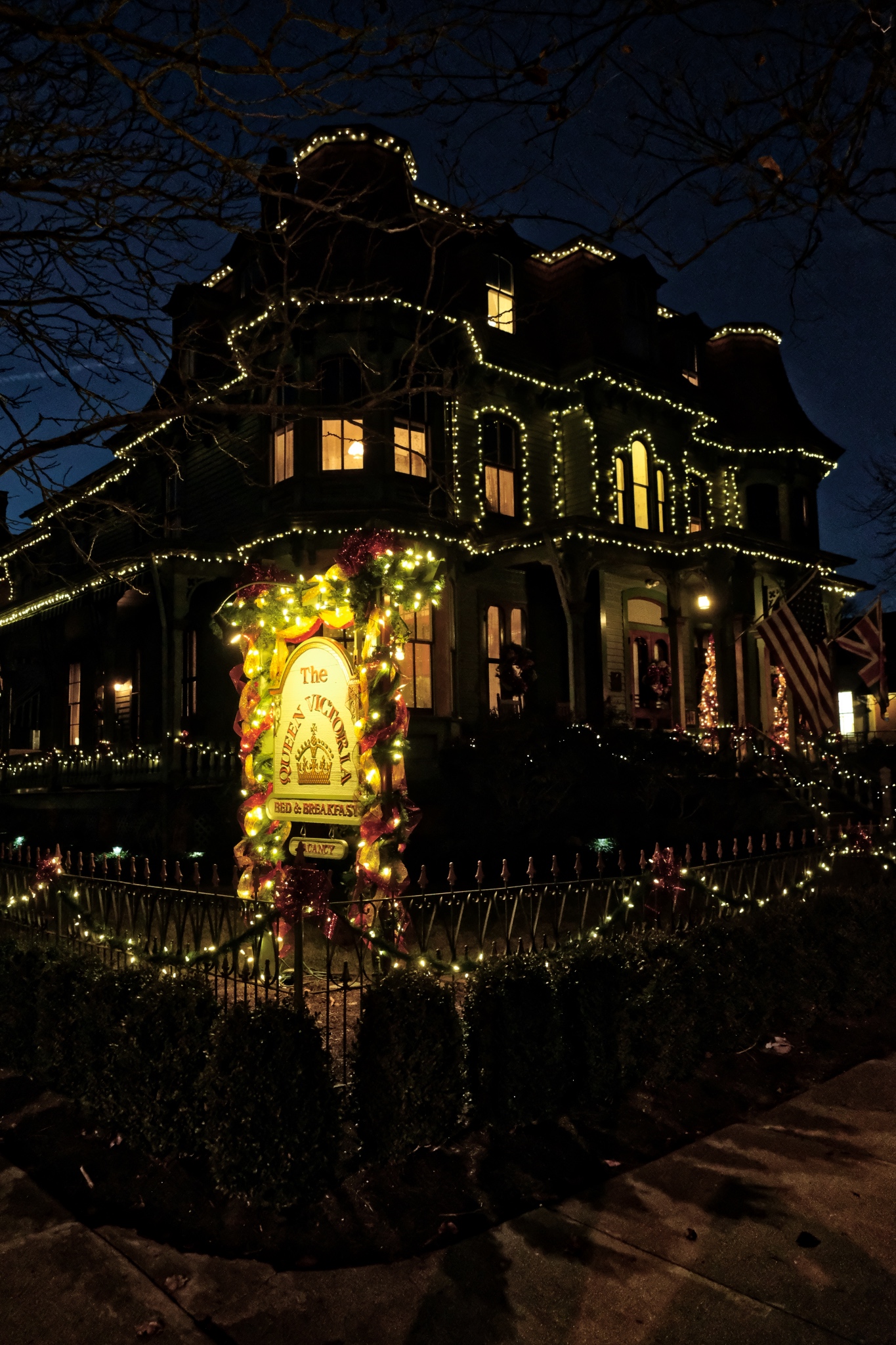 Gems in the night.
Gems in the night.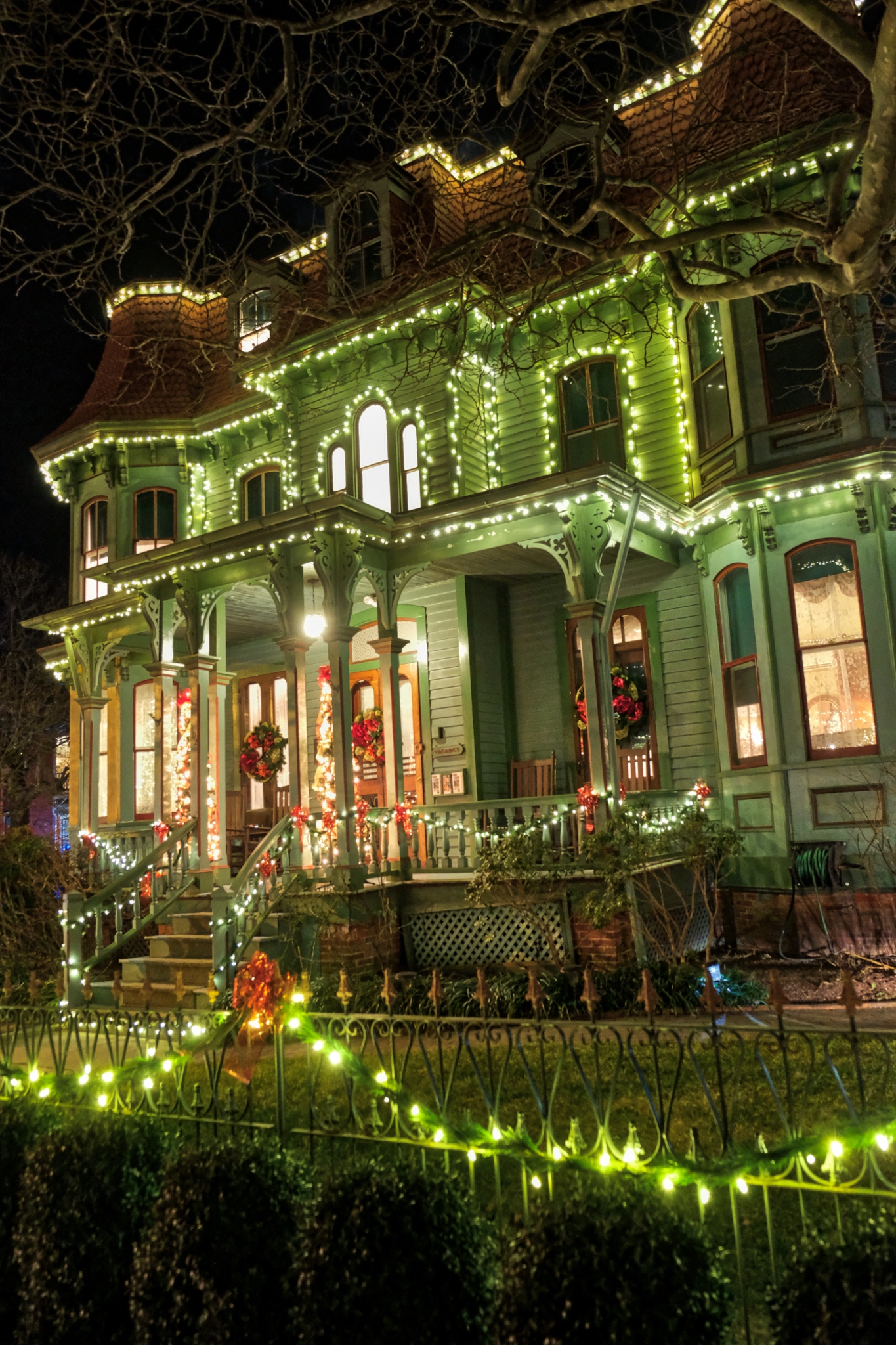 Lit up like Christmas, as they say.
Lit up like Christmas, as they say.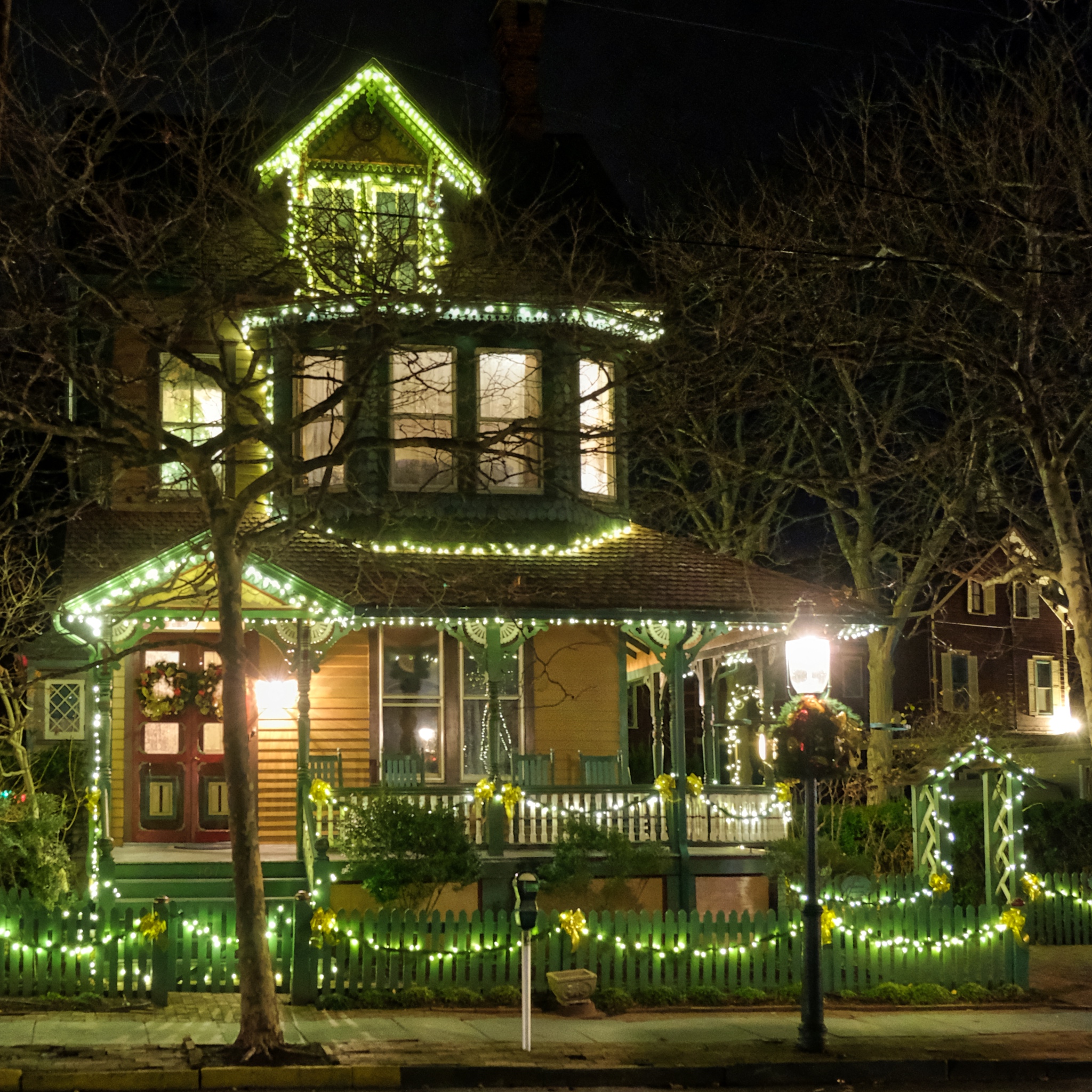 A dream house . . .
A dream house . . . 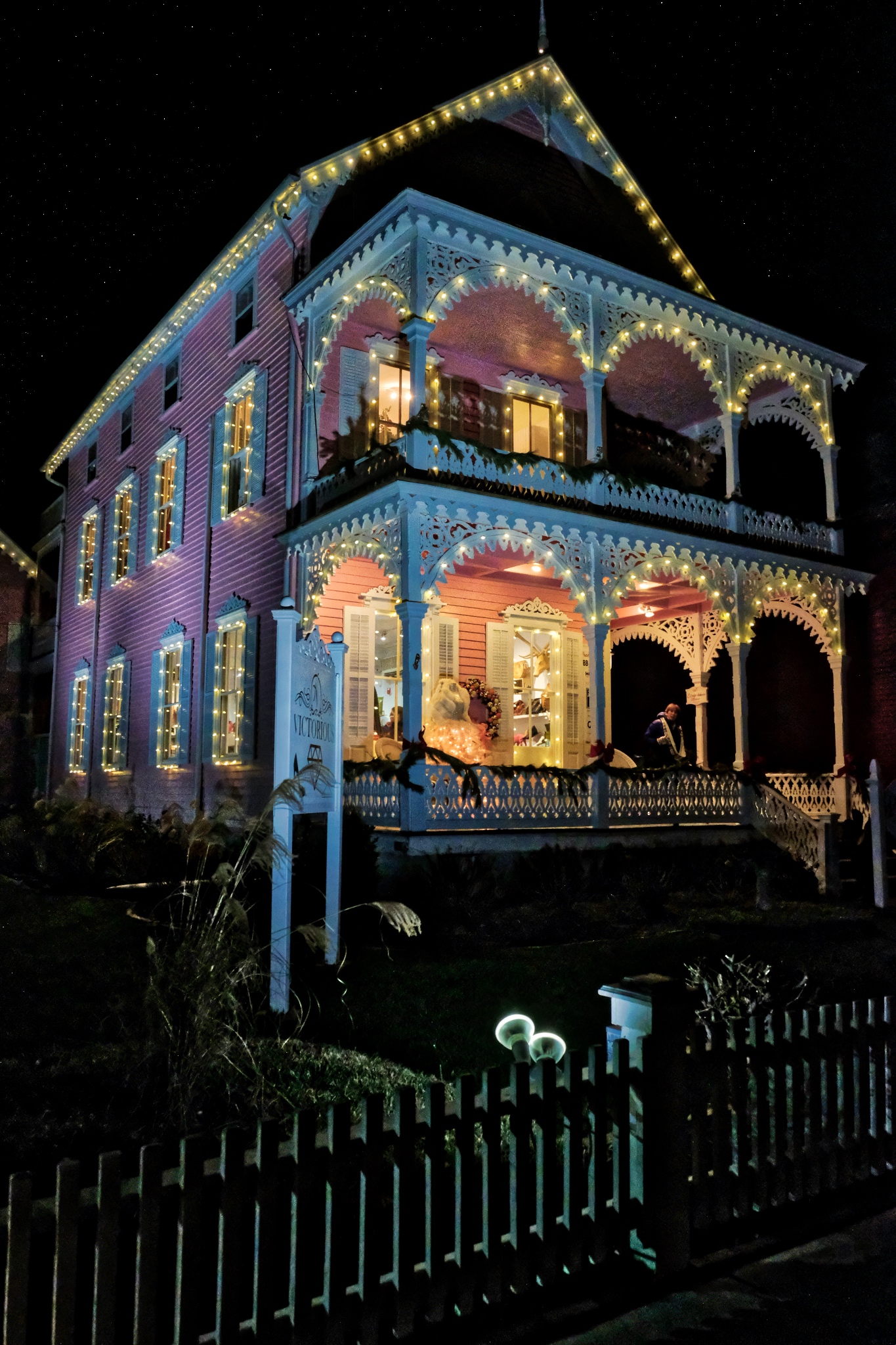 Another favorite of mine . . . this pink grand dame in all its glory!
Another favorite of mine . . . this pink grand dame in all its glory!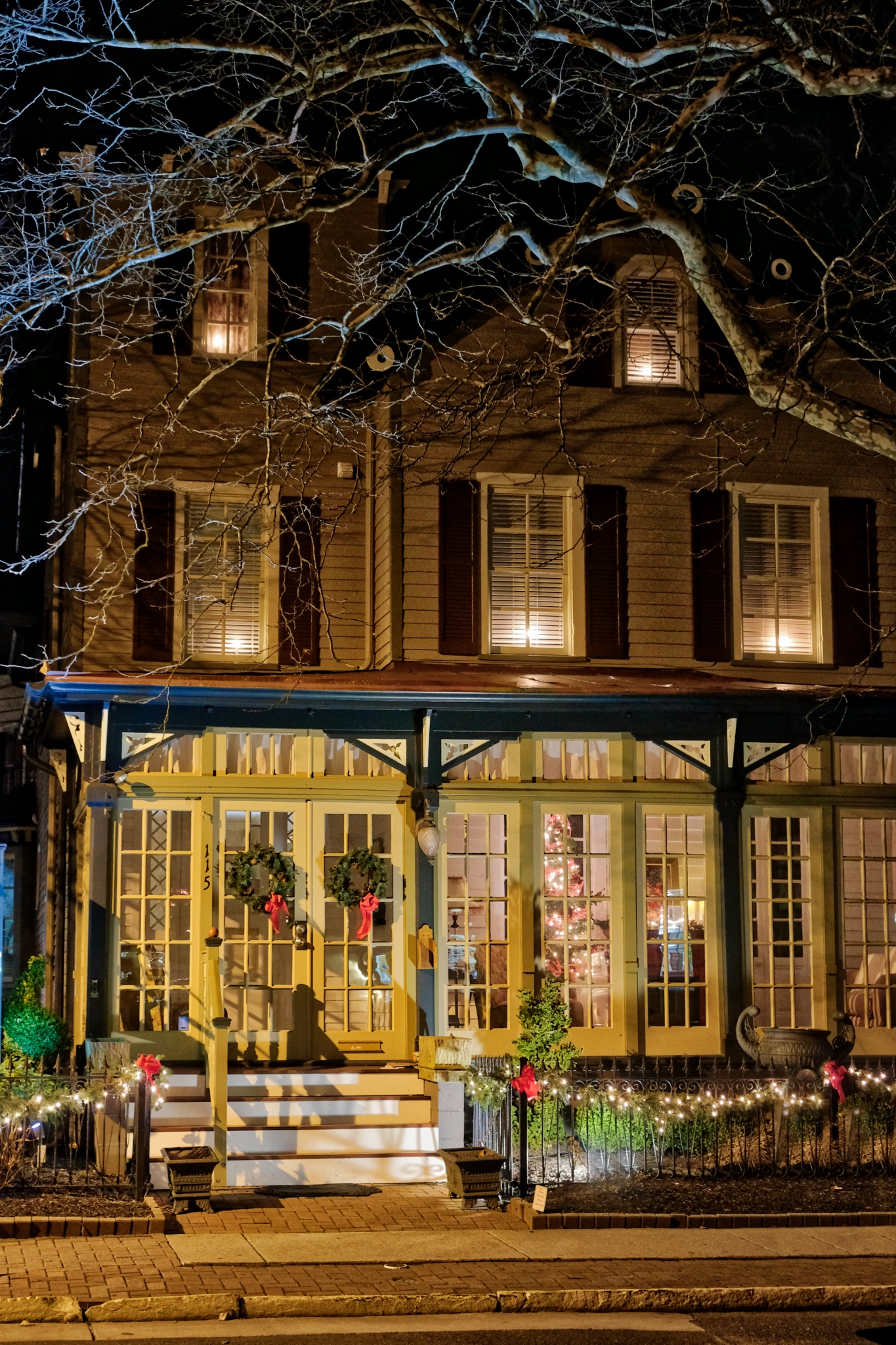 Seen earlier in the daylight, now a gem box of amazing color and form.
Seen earlier in the daylight, now a gem box of amazing color and form.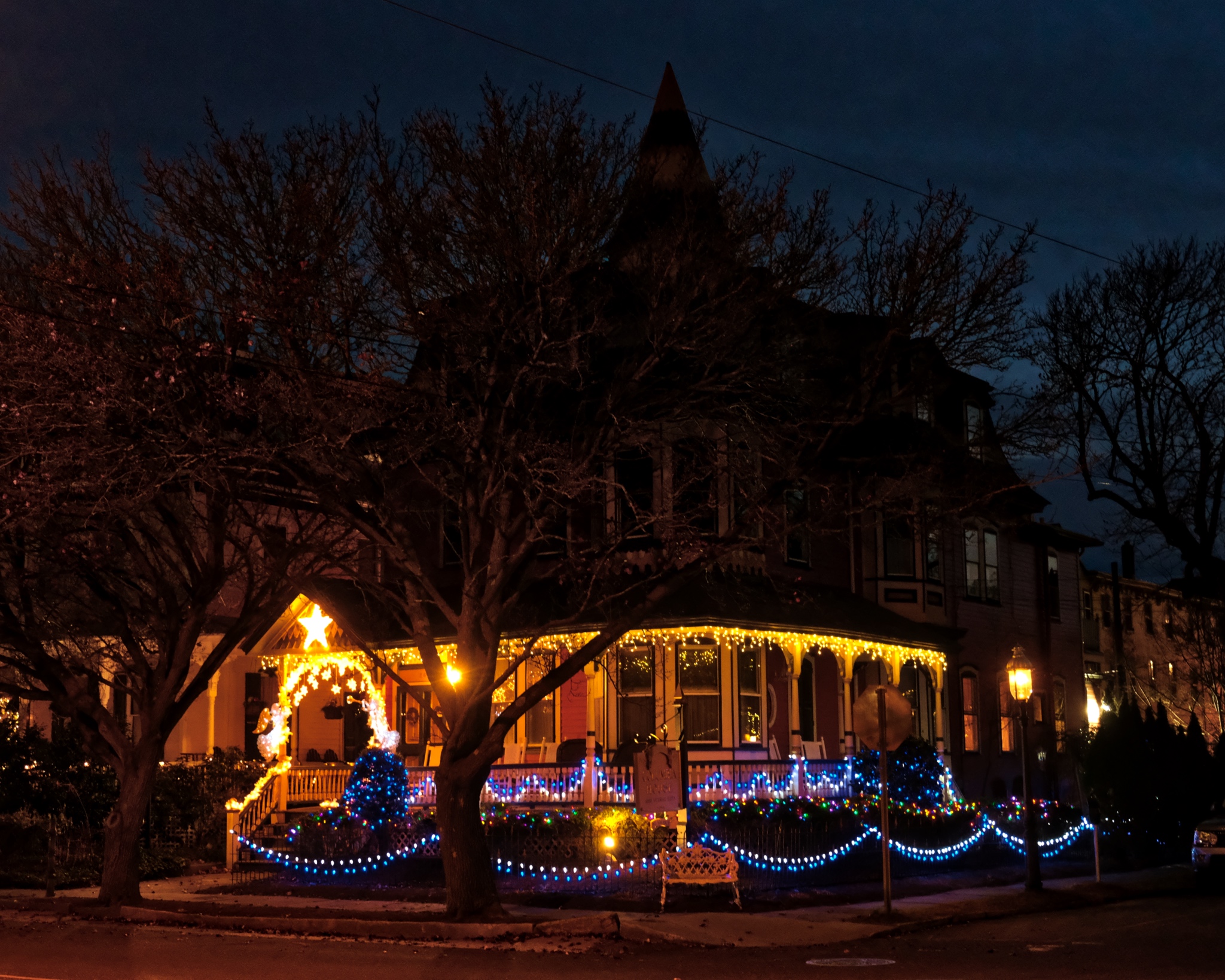 It was late (and cold!) when we finally left Cape May. I want to come back and stay in one of these old beauties. I have added an additional entry at the end of this blog focusing on just the front porches of these old Victorians (Bottom).
It was late (and cold!) when we finally left Cape May. I want to come back and stay in one of these old beauties. I have added an additional entry at the end of this blog focusing on just the front porches of these old Victorians (Bottom).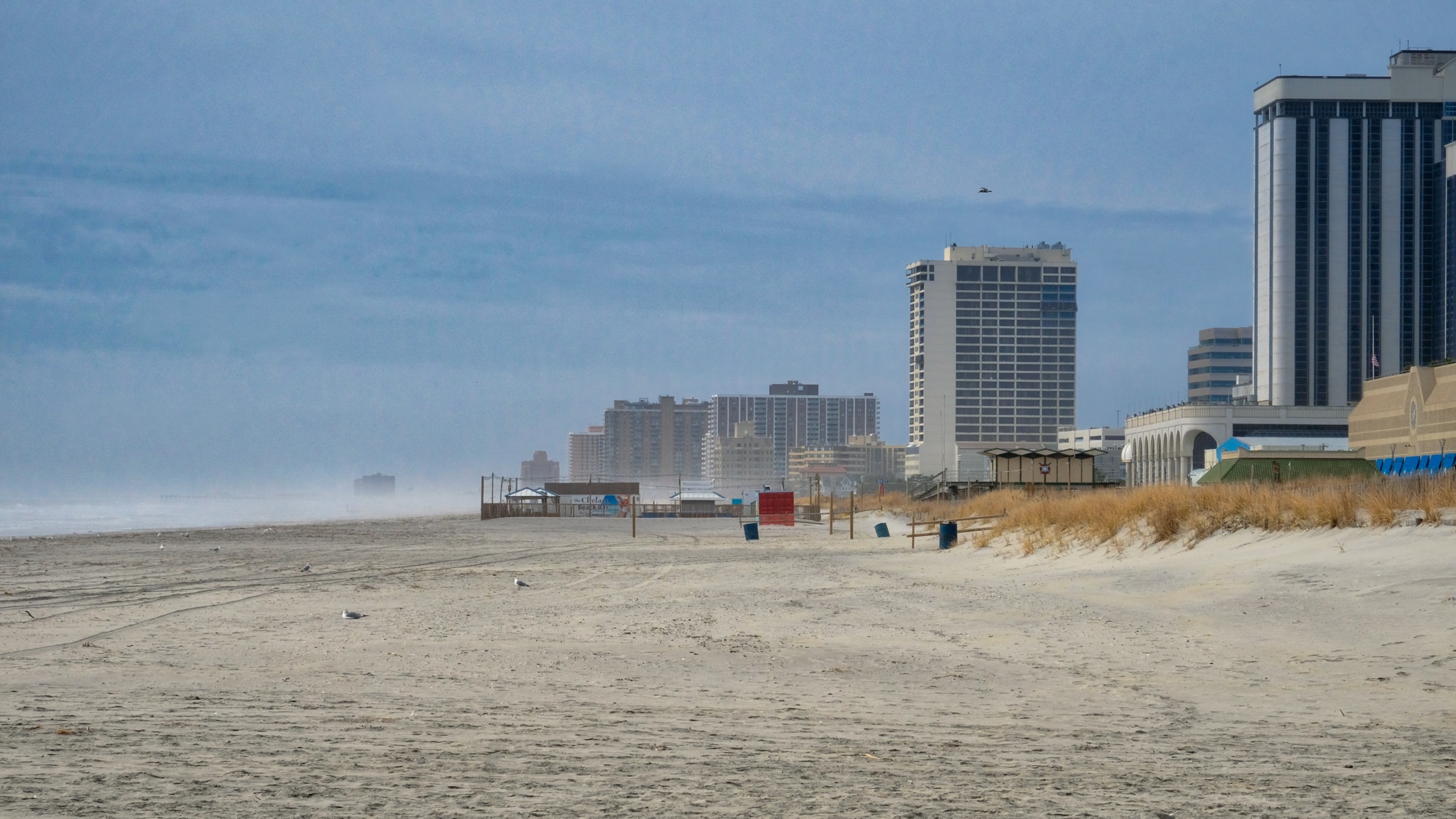 I drove north 30minutes from Ocean City one nice winter day. I brought my bicycle with me and had a nice 10 mile ride along he famous Atlantic City boardwalk.
I drove north 30minutes from Ocean City one nice winter day. I brought my bicycle with me and had a nice 10 mile ride along he famous Atlantic City boardwalk.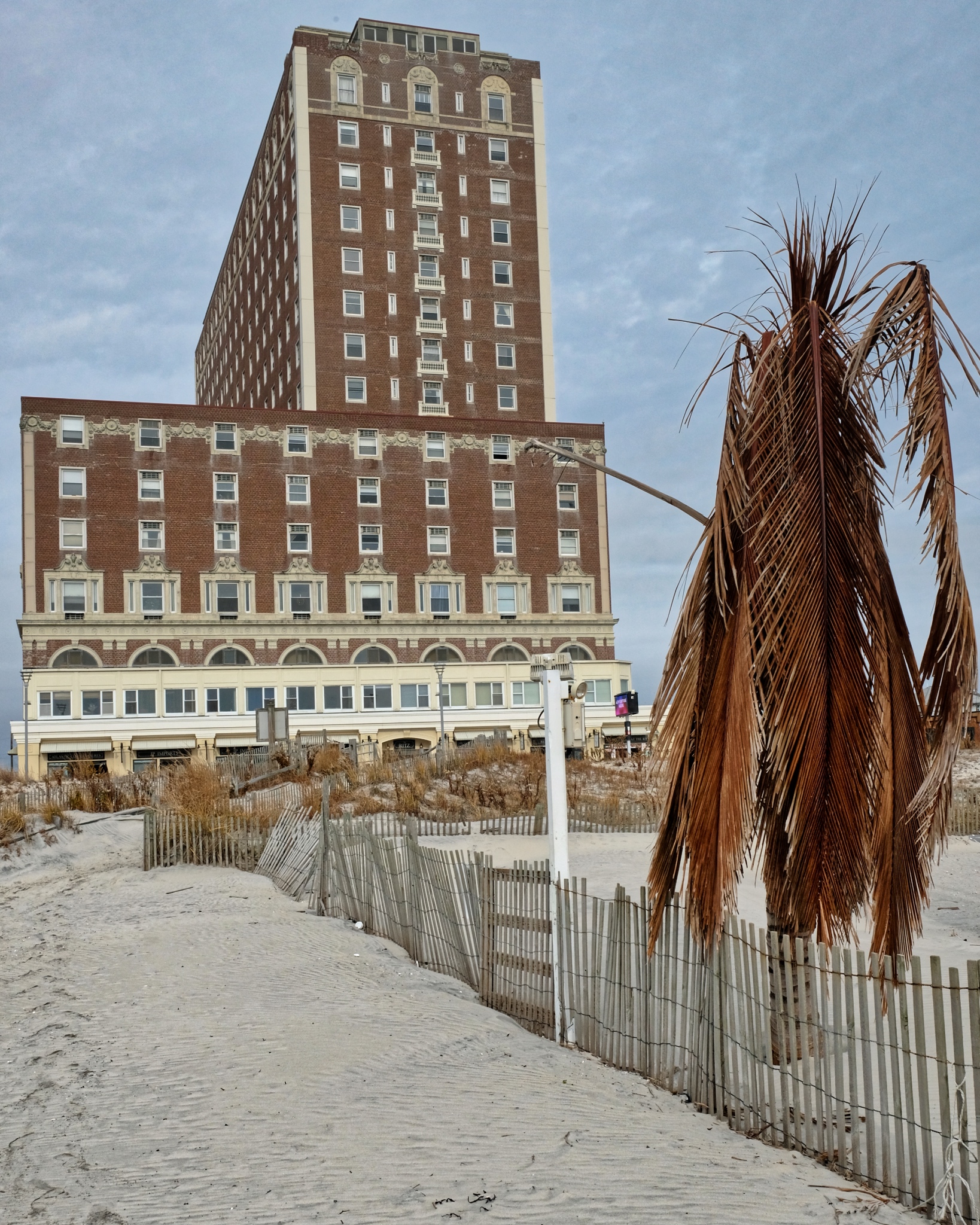 Atlantic City has been the dream retirement spot for eastcoasters for generations. . .
Atlantic City has been the dream retirement spot for eastcoasters for generations. . .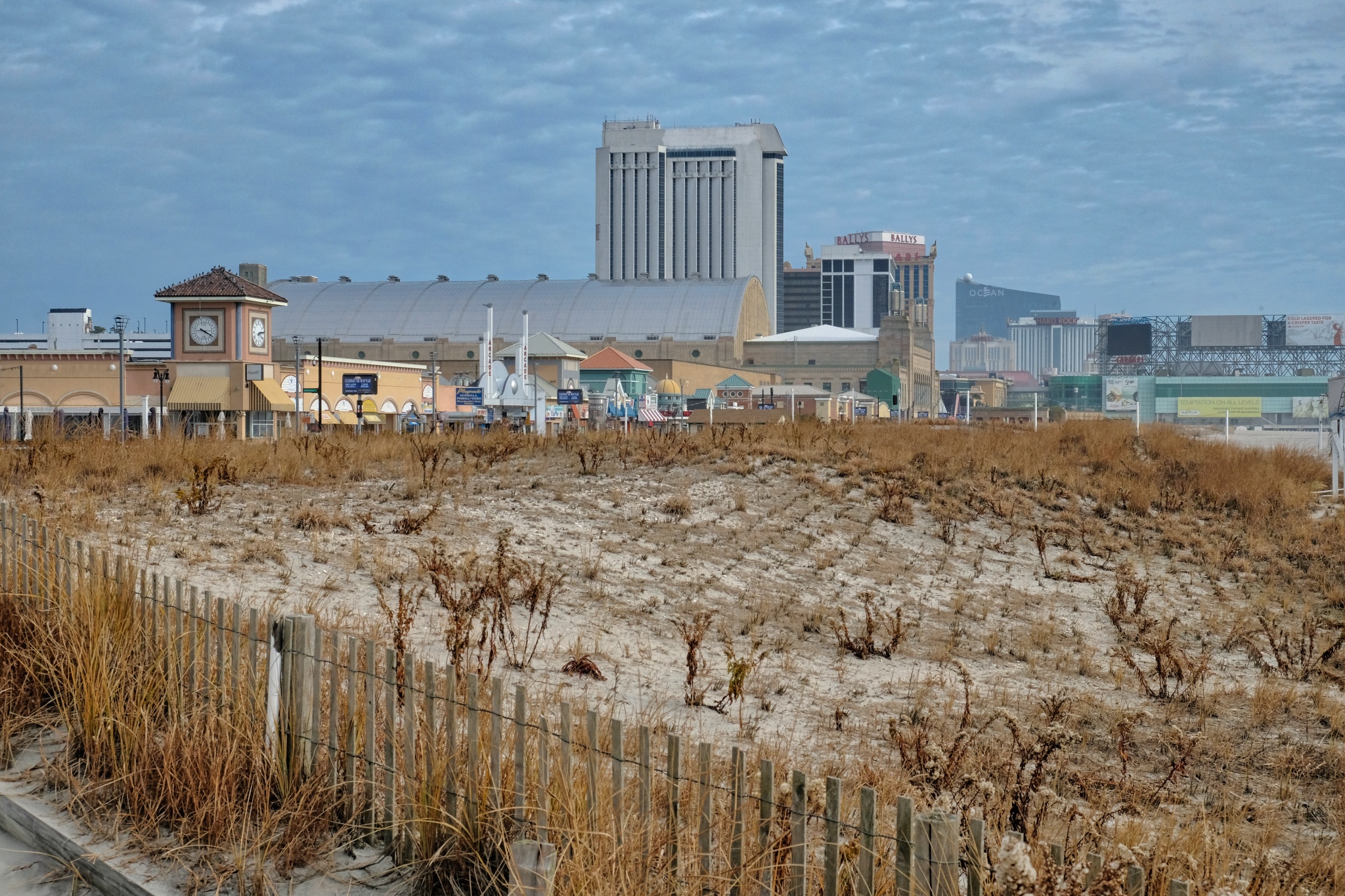 Hurricane Sandy and other major storms have played havoc with the Jersey Shore. After dredged sand was blown in, an attempt to stabilize the new beach.
Hurricane Sandy and other major storms have played havoc with the Jersey Shore. After dredged sand was blown in, an attempt to stabilize the new beach.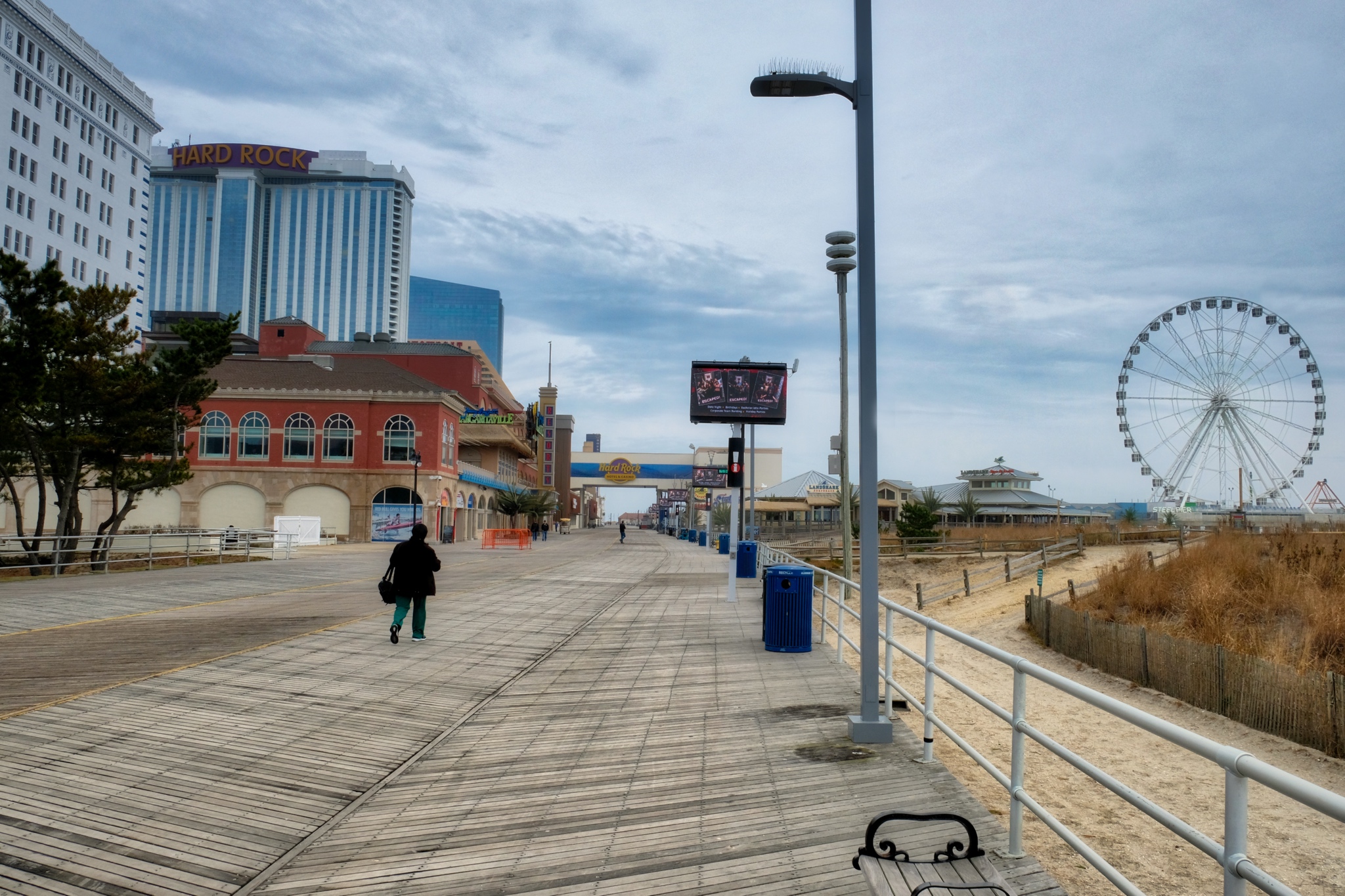 The boardwalk and most of the buildings seemed to be in a good state of repair.
The boardwalk and most of the buildings seemed to be in a good state of repair.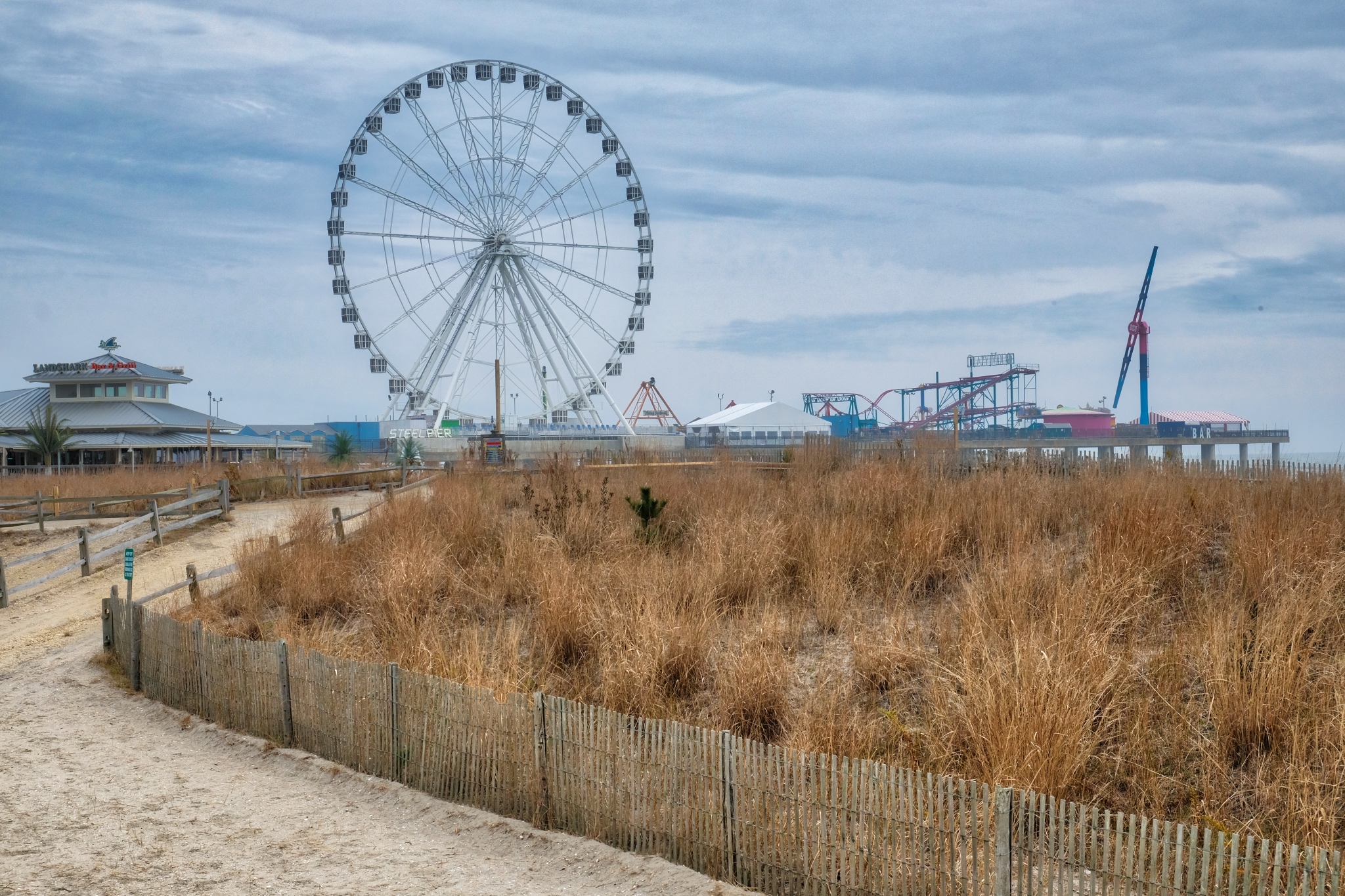 The famous pier at Atlantic City was closed for the season.
The famous pier at Atlantic City was closed for the season.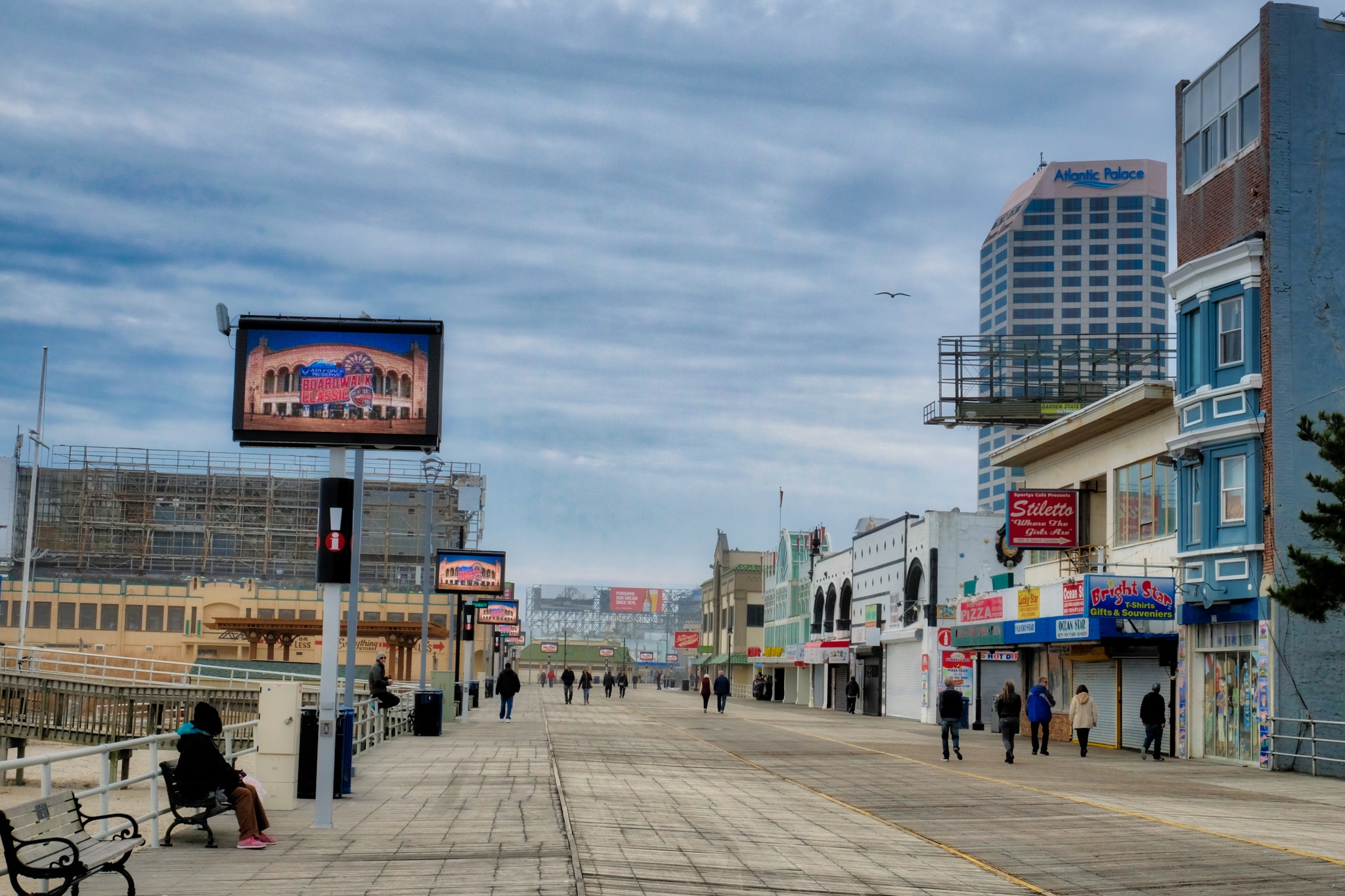 But, of curse, it is the Atlantic City boardwalk that attracts people, even on this cold and clear December day. I really enjoyed my 10 mile bike ride along this wooden bike path.
But, of curse, it is the Atlantic City boardwalk that attracts people, even on this cold and clear December day. I really enjoyed my 10 mile bike ride along this wooden bike path.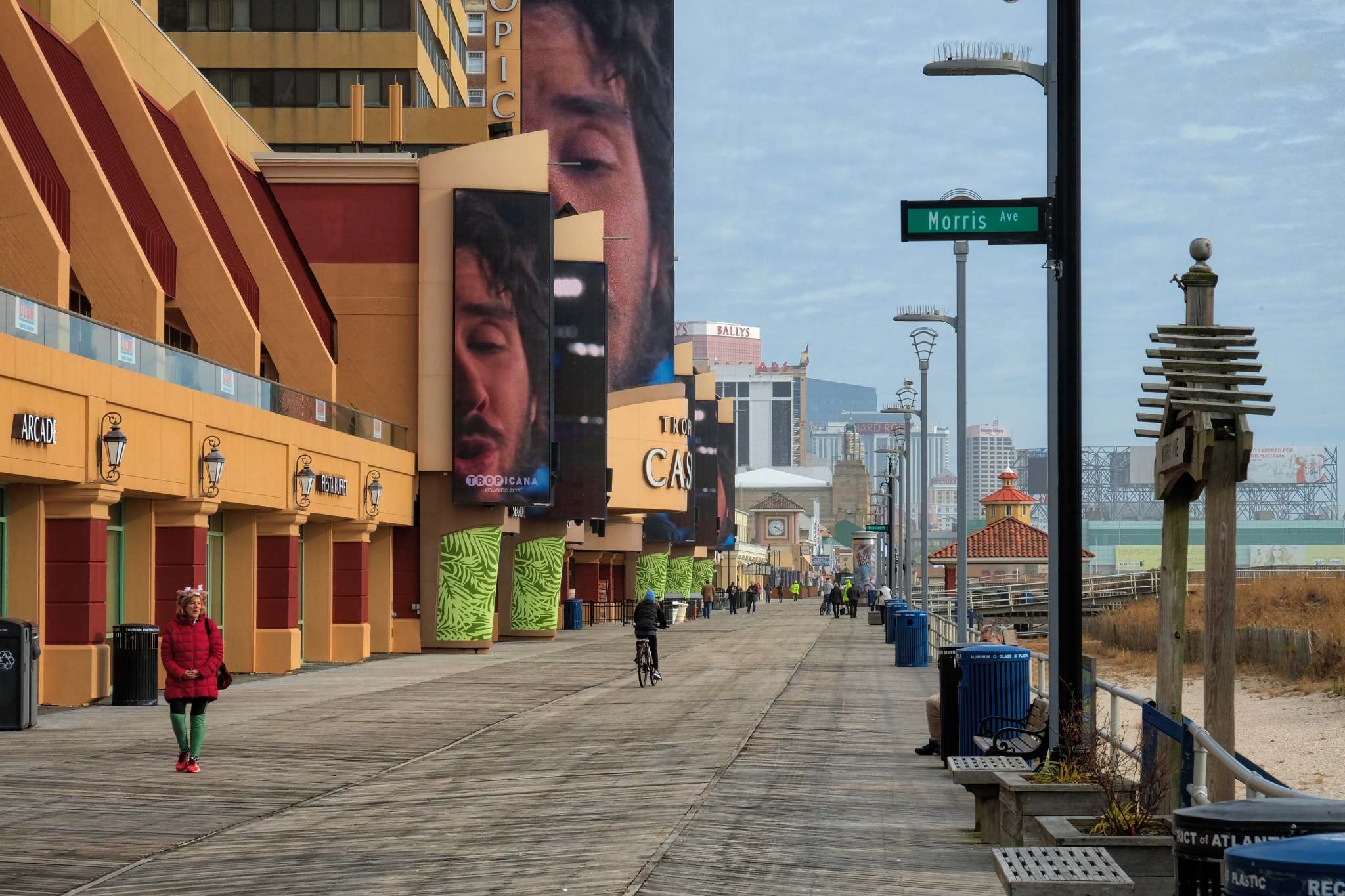 As I took a closer look at the large hotels, I was shocked to see so many of them boarded up . . . closed and abandoned. The economic collapse of 2008 and the establishment of Native American casinos in Pennsylvania had a major negative eeconomic impact on Atlantic City.
As I took a closer look at the large hotels, I was shocked to see so many of them boarded up . . . closed and abandoned. The economic collapse of 2008 and the establishment of Native American casinos in Pennsylvania had a major negative eeconomic impact on Atlantic City.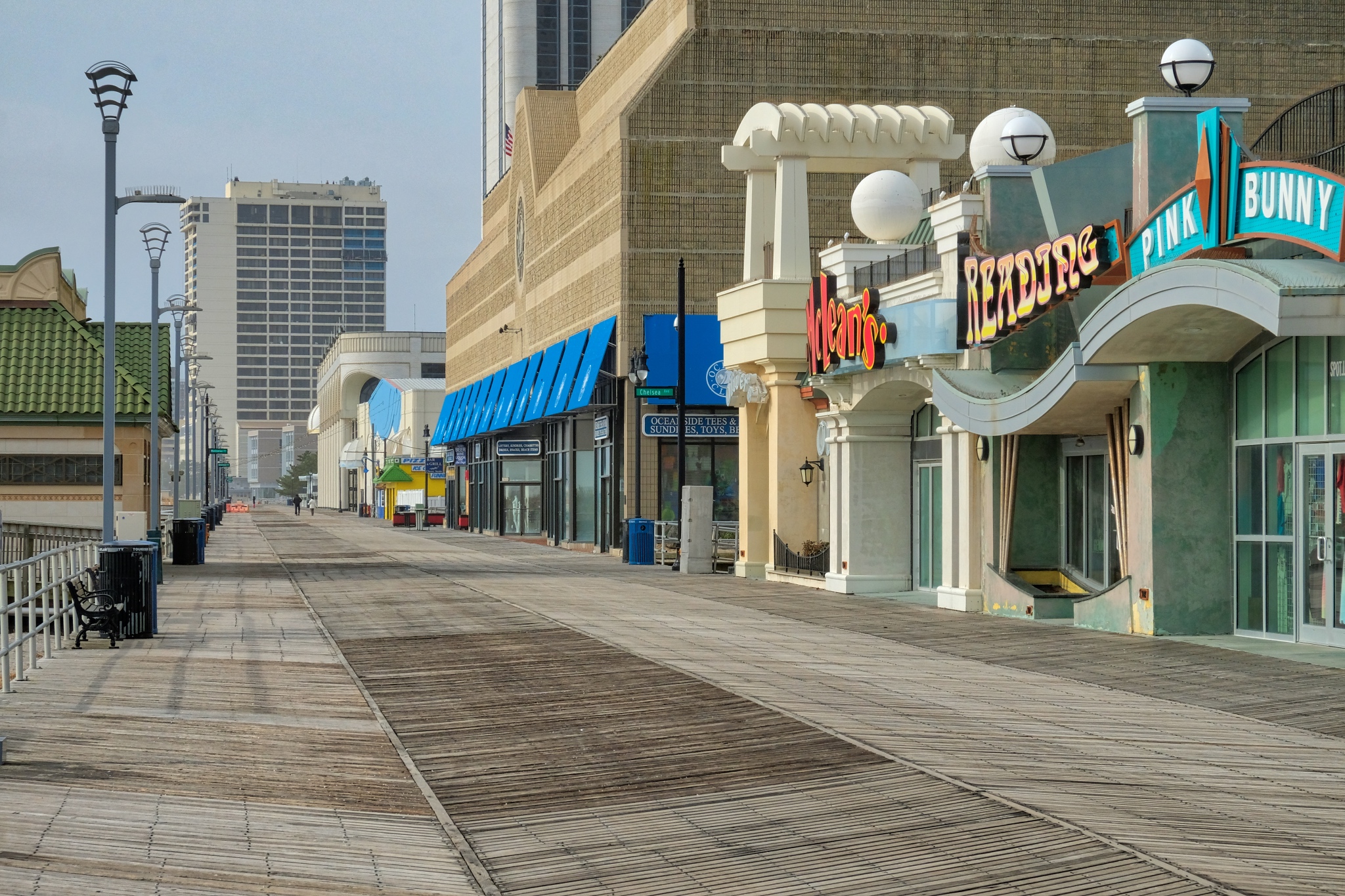 There were a few shops and a couple of cafes open to service the winter wanderers, like me.
There were a few shops and a couple of cafes open to service the winter wanderers, like me. The weathered remains of a hotel beach party set-up . . . the last trace of the summer season. I rode my bike back five miles, loaded it into my camper, and drove back to Ocean City . . . good exercise for the day.
The weathered remains of a hotel beach party set-up . . . the last trace of the summer season. I rode my bike back five miles, loaded it into my camper, and drove back to Ocean City . . . good exercise for the day. Dr. Jeff Harper
Dr. Jeff Harper
The Victorian Porches of Cape May, New Jersey
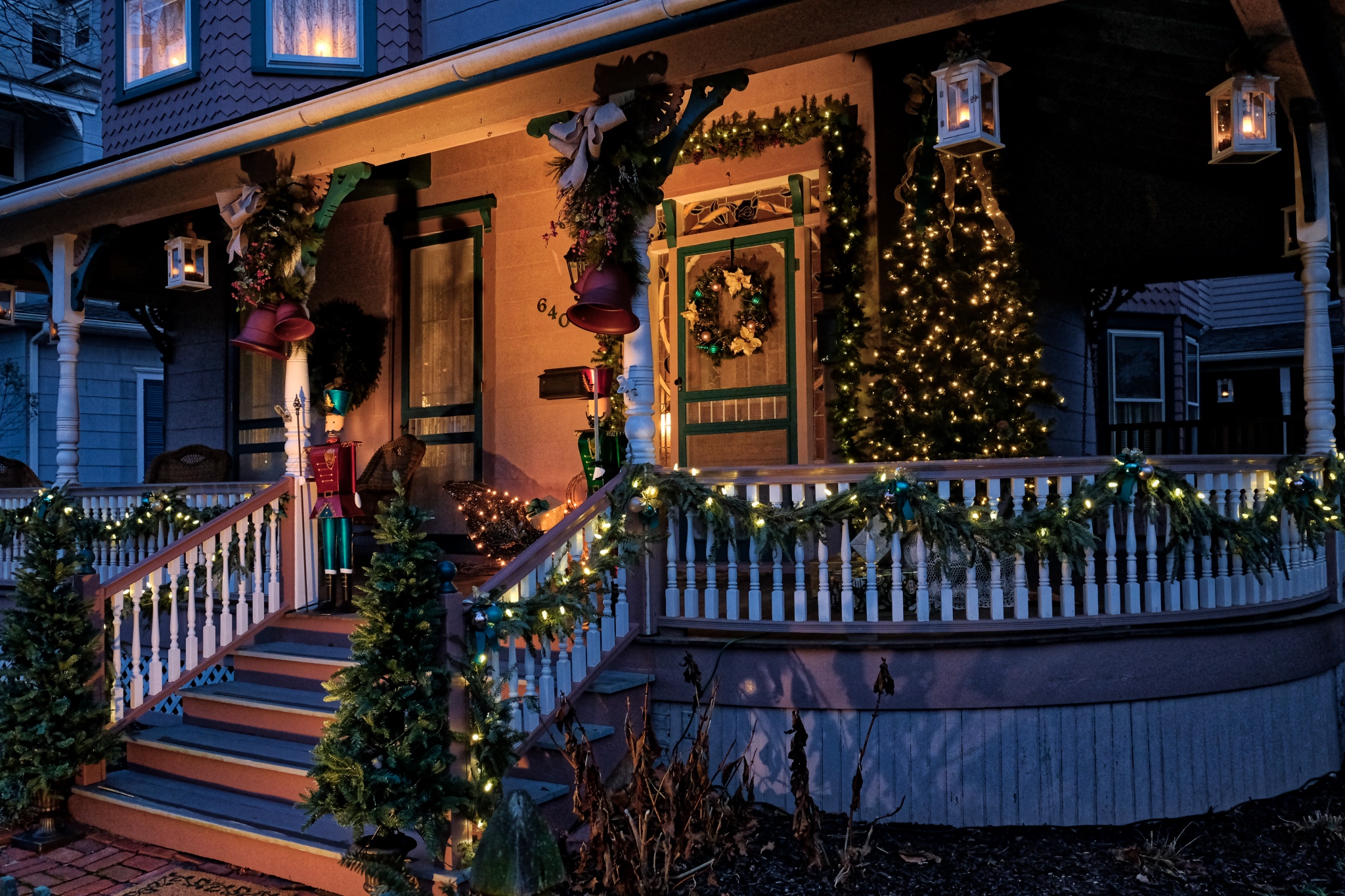 One of the most beautiful architectural features of Cape May, New Jersey are the front porches of the old Victorian houses.
One of the most beautiful architectural features of Cape May, New Jersey are the front porches of the old Victorian houses.
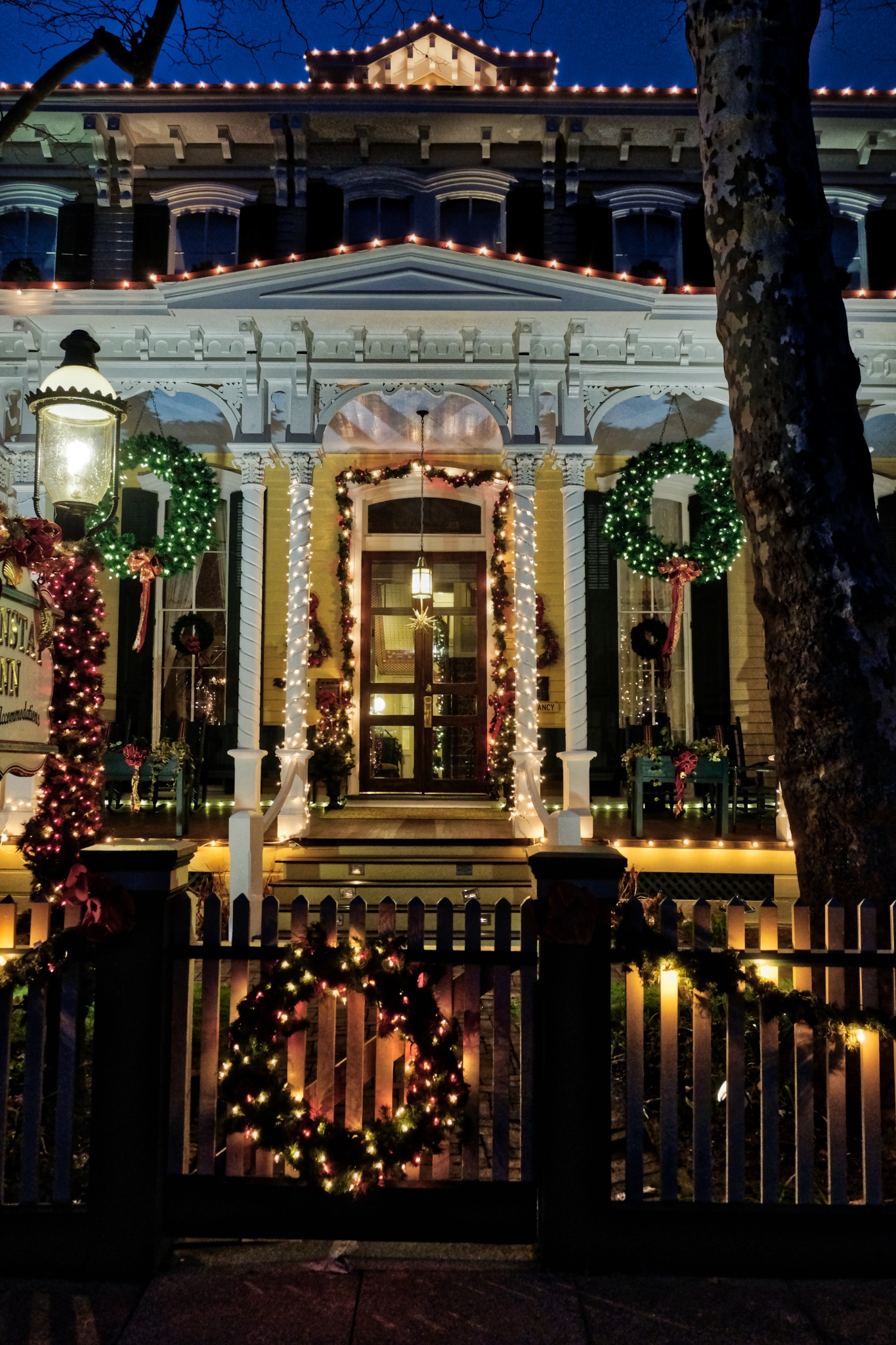 These houses date form a period in cultural history when the front door mattered as the face of the family that lived inside.
These houses date form a period in cultural history when the front door mattered as the face of the family that lived inside.
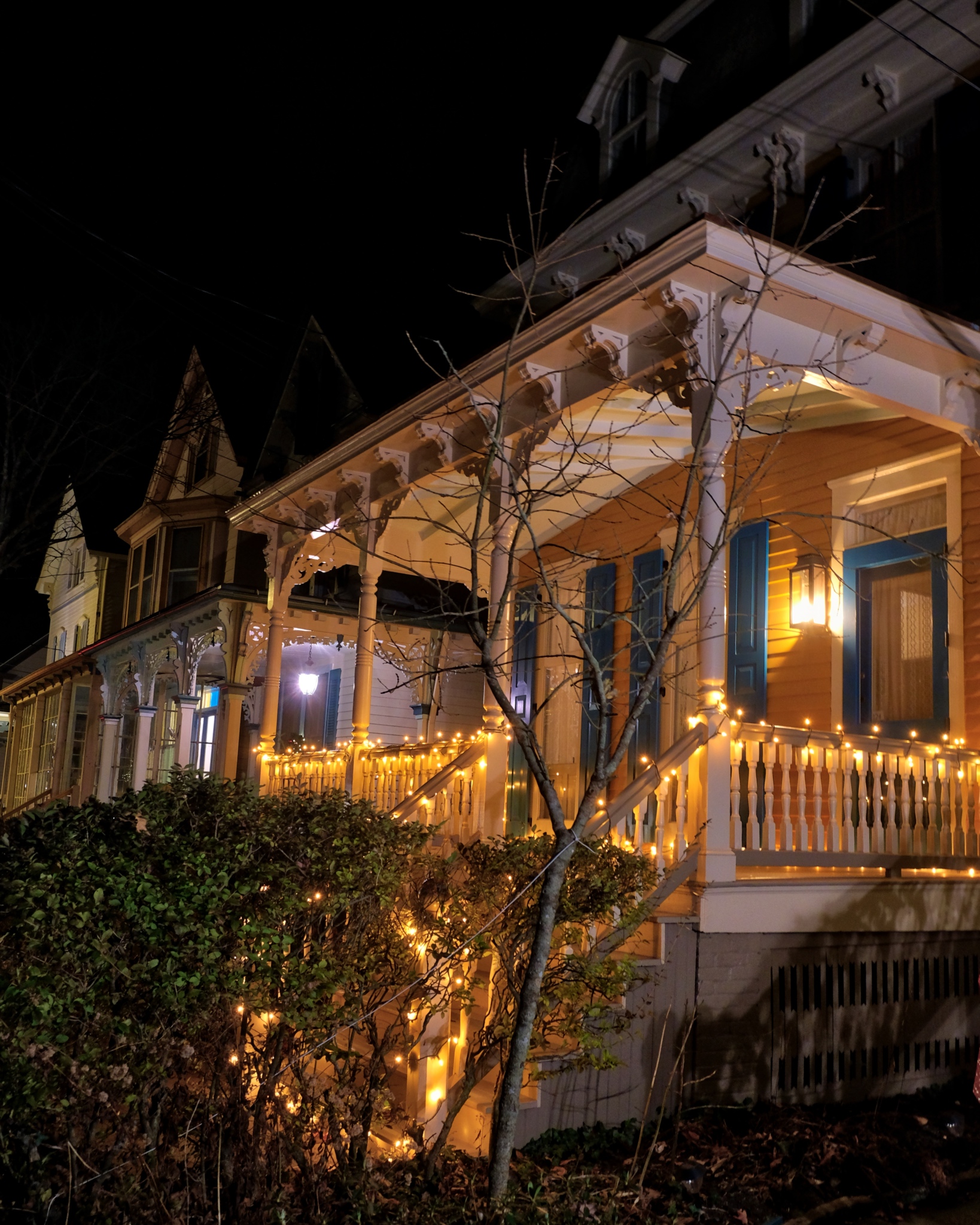 In summer the porch serves as a place to sit and greet your neighbors as they pass by. In winter, it serves as a stage to light the Holiday Season.
In summer the porch serves as a place to sit and greet your neighbors as they pass by. In winter, it serves as a stage to light the Holiday Season.
 Closed or open porches . . . they are such a beautiful feature one wonders why they ever fell out of fashion.
Closed or open porches . . . they are such a beautiful feature one wonders why they ever fell out of fashion.
 Please, step on in . . .
Please, step on in . . .
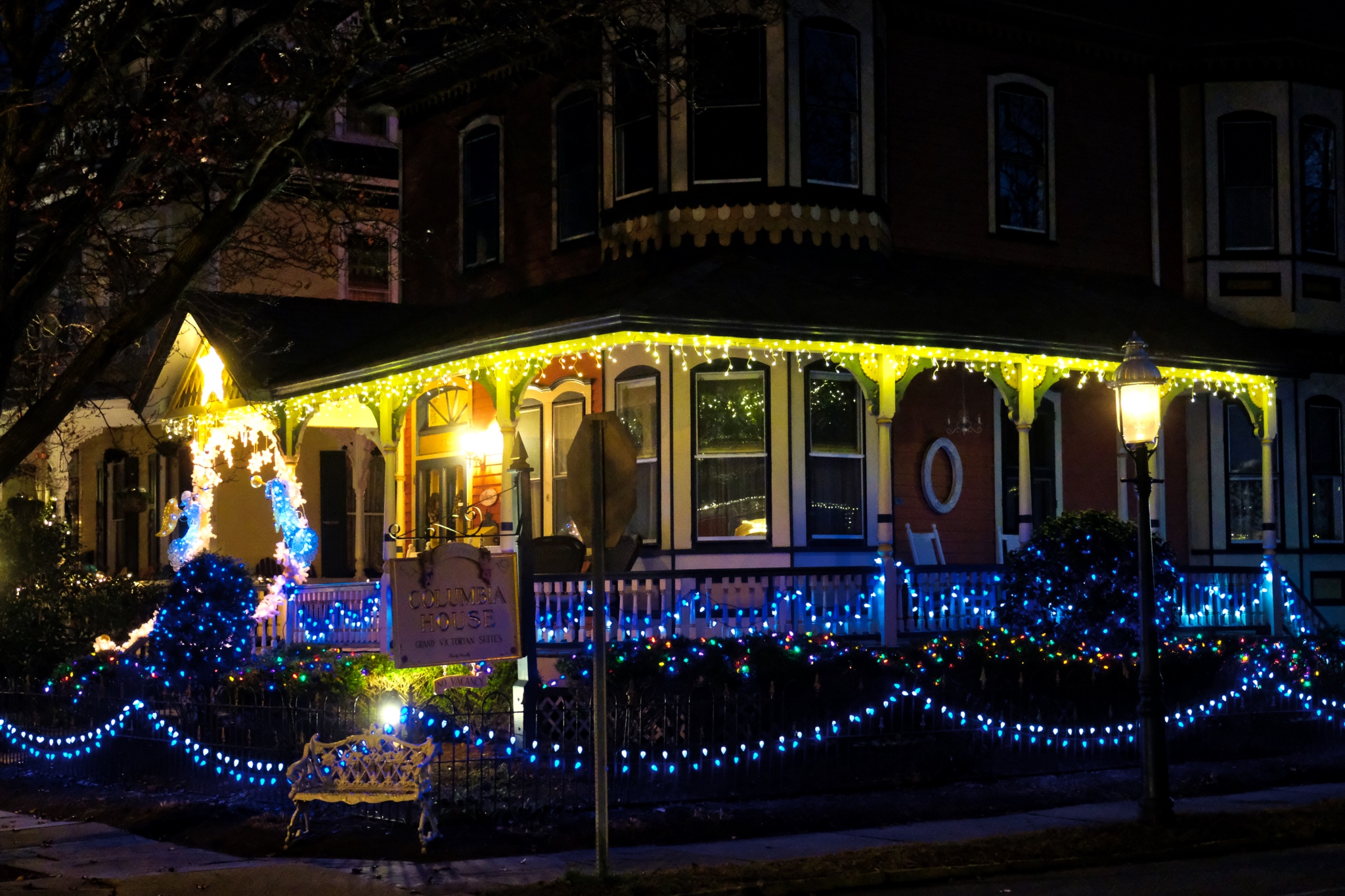 The many B&Bs in Cape May must be packed during the summer season . . . and the rocking chairs on the porches fully occupied.
The many B&Bs in Cape May must be packed during the summer season . . . and the rocking chairs on the porches fully occupied.
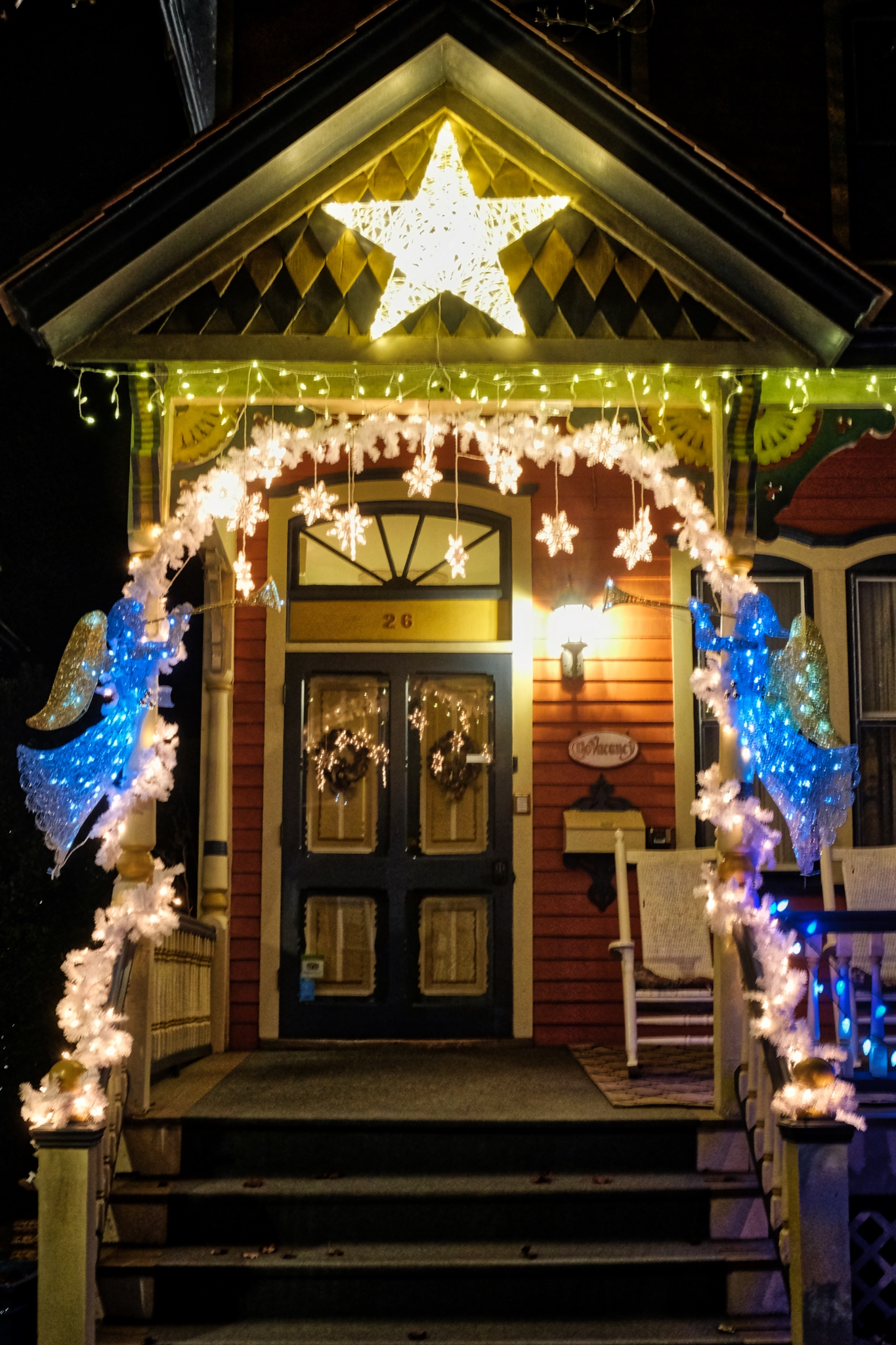 Festive, to say the least.
Festive, to say the least.
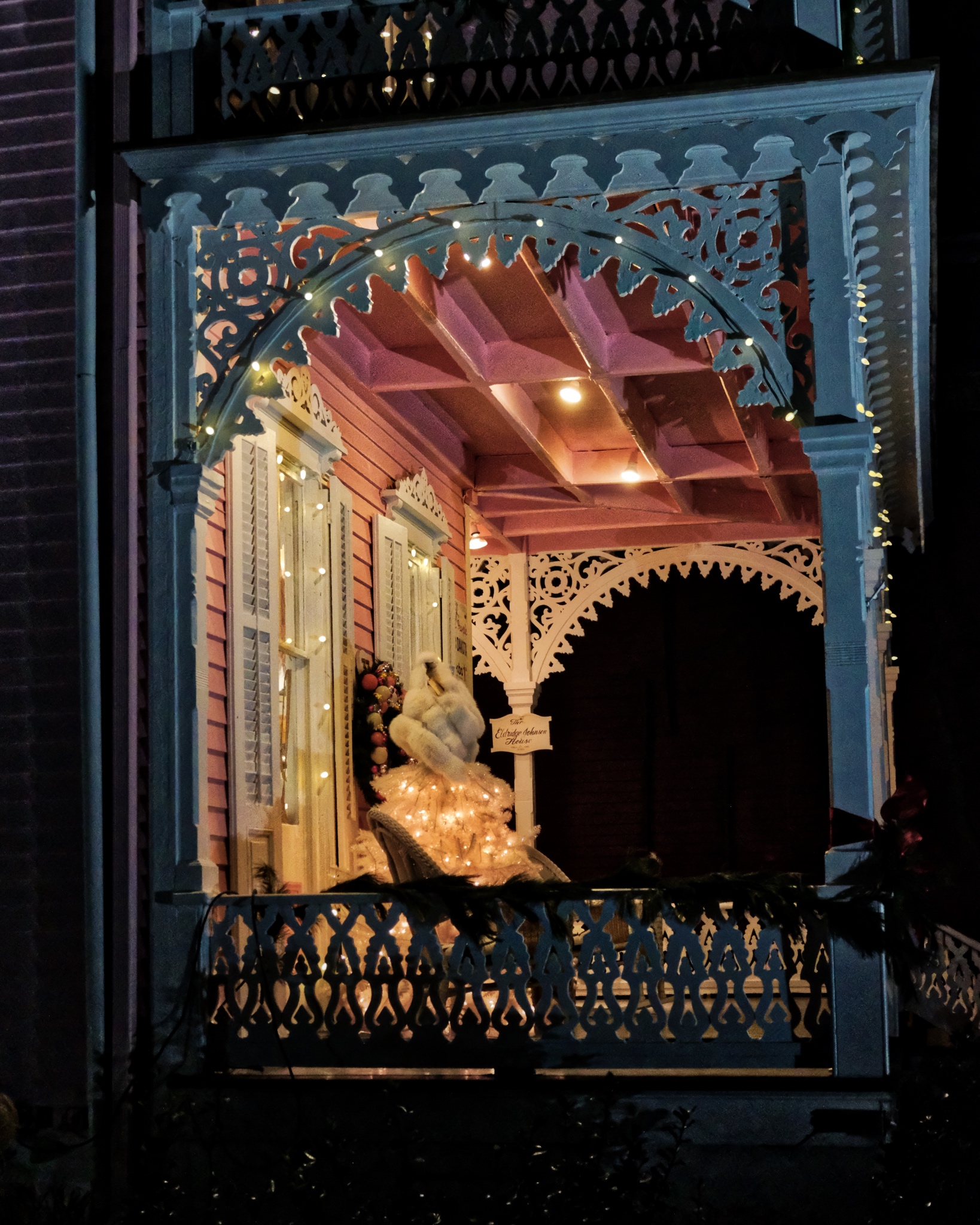 The Carpenter Victorian porch is just pure fantasy!
The Carpenter Victorian porch is just pure fantasy!
 Charming and bold colors.
Charming and bold colors.
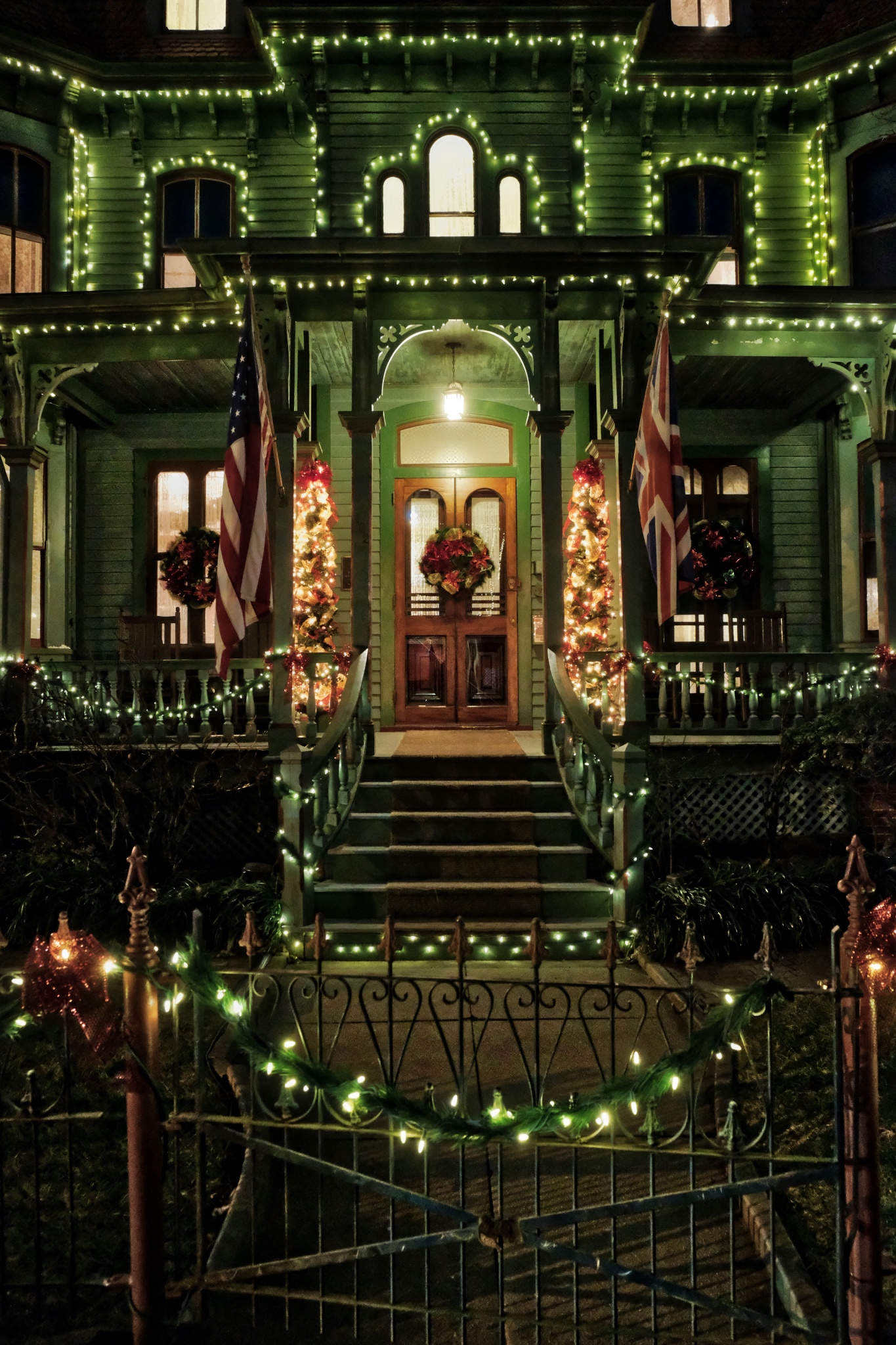 An old Victorian in all its Yuletide glory.
An old Victorian in all its Yuletide glory.
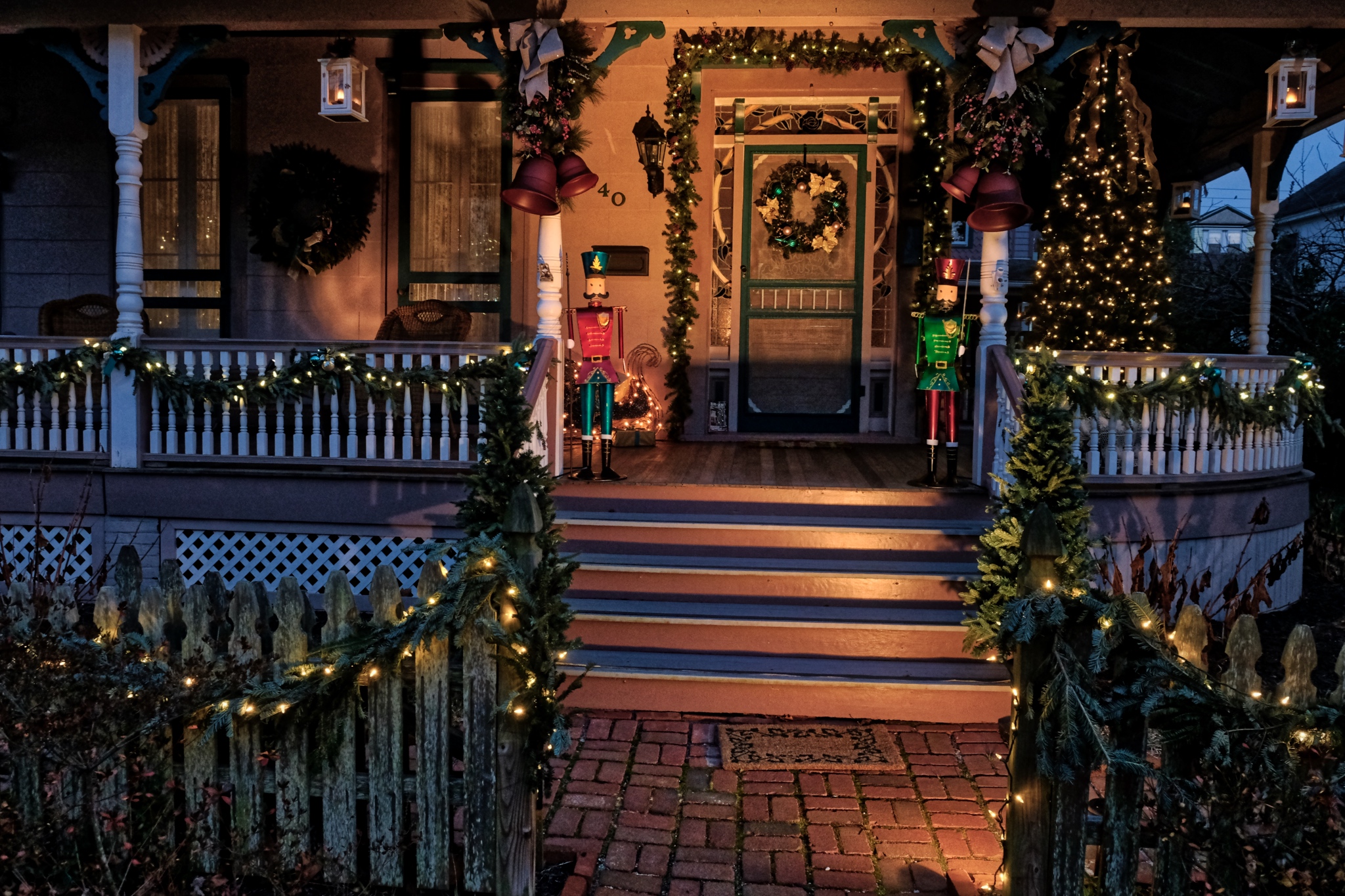 Soooo inviting!
Soooo inviting!
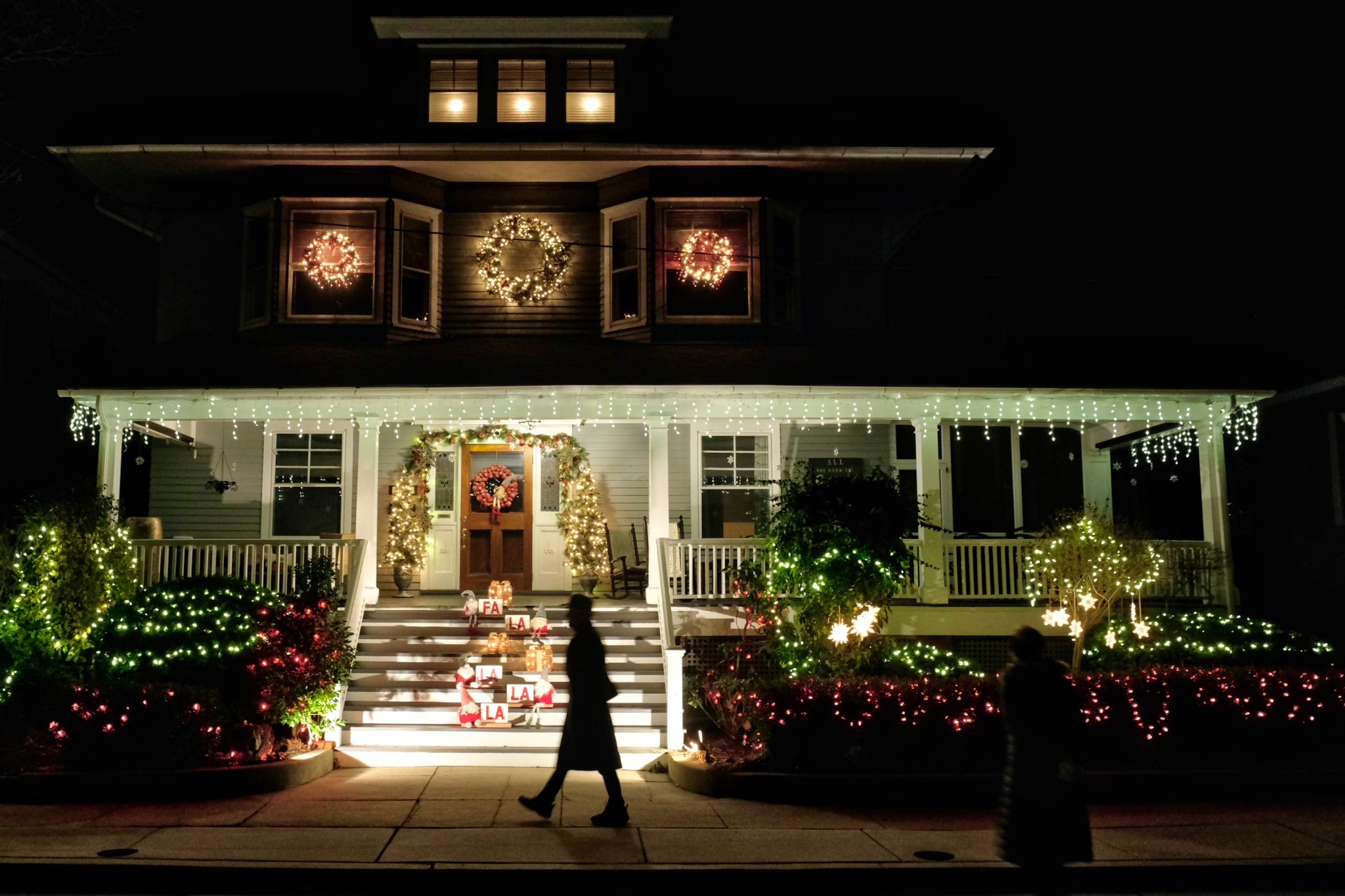 Porch Life has not vanished from the Earth . . . it lives on in Cape May, New Jersey!
Porch Life has not vanished from the Earth . . . it lives on in Cape May, New Jersey!
Road Trip USA: In and Out of Winnemucca, Nevada
 Monday, December 3, 2018 at 3:50AM
Monday, December 3, 2018 at 3:50AM September 2018
 After camping up on Steens Mountain in Oregon, I drove south on Oregon Highway 205. My destination was Winnemucca, Nevada, where I would stage for my planned camping out on Nevada's Black Rock Desert. I was dirty, my camper was dirty, and my clothes were dirty. I needed a few nights in an RV park . . . and I had a hankering for Mexican food.
After camping up on Steens Mountain in Oregon, I drove south on Oregon Highway 205. My destination was Winnemucca, Nevada, where I would stage for my planned camping out on Nevada's Black Rock Desert. I was dirty, my camper was dirty, and my clothes were dirty. I needed a few nights in an RV park . . . and I had a hankering for Mexican food.
 It was roughly 200 miles from my campsite in The Steens to Winnemucca through some of the most uninhabited countryside in the USA. The major wildfires that had swept through much of the western states left behind smoke and haze that obscured the landscape . . . and in some cases made it more interesting.
It was roughly 200 miles from my campsite in The Steens to Winnemucca through some of the most uninhabited countryside in the USA. The major wildfires that had swept through much of the western states left behind smoke and haze that obscured the landscape . . . and in some cases made it more interesting.
 This unforgiving high arid country left behind many abandoned homesteaders and miners' shacks, sheds, and farms buildings in the giant western landscapes.
This unforgiving high arid country left behind many abandoned homesteaders and miners' shacks, sheds, and farms buildings in the giant western landscapes.
 If these walls could talk . . . certainly applies here.
If these walls could talk . . . certainly applies here.
 I had fun stopping, getting out of the truck, taking a photo, driving on a few feet and getting out again . . . . These scenes are so photogenic, I didn't want to miss a shot!
I had fun stopping, getting out of the truck, taking a photo, driving on a few feet and getting out again . . . . These scenes are so photogenic, I didn't want to miss a shot!
 The road went on and on through the dry, smoky landscape. Oregon Highway 205 became Nevada Highways 292 and 140 before joining US Highway 95 into Winnemucca.
The road went on and on through the dry, smoky landscape. Oregon Highway 205 became Nevada Highways 292 and 140 before joining US Highway 95 into Winnemucca.
 An old abandoned farmstead. This one looks like it wasn't abandoned all that long ago. What was the story of this house? Its history?
An old abandoned farmstead. This one looks like it wasn't abandoned all that long ago. What was the story of this house? Its history?
 There were a few wide spot in the road towns along the road to Winnemucca.
There were a few wide spot in the road towns along the road to Winnemucca.
 My camper ECU was acting up . . . the engine developed a radical rich condition . . . lots of black smoke. I diagnosed the problem as a temperature sender. I stopped to let the engine cool down and reset the ECU. It was an opportunity to take a walk around in the parched land.
My camper ECU was acting up . . . the engine developed a radical rich condition . . . lots of black smoke. I diagnosed the problem as a temperature sender. I stopped to let the engine cool down and reset the ECU. It was an opportunity to take a walk around in the parched land.
 It was quiet and still. Cars would come by on the highway only every 10-15 minutes.
It was quiet and still. Cars would come by on the highway only every 10-15 minutes.
 It had been dry here for a long time. Other travellers along this highway had driven off the road into the desert too.
It had been dry here for a long time. Other travellers along this highway had driven off the road into the desert too.
 Yes, the desert is not a welcoming place.
Yes, the desert is not a welcoming place.
 Bone identification is not my academic field of study . . . sheep or cow?
Bone identification is not my academic field of study . . . sheep or cow?
 Back out on the highway and toward distant mountains. I thoroughly enjoy these long desert drives . . . and have missed them in my tropical, equatorial life.
Back out on the highway and toward distant mountains. I thoroughly enjoy these long desert drives . . . and have missed them in my tropical, equatorial life.
 Such lovely layered mountain ridge silhouettes in the wildfire haze.
Such lovely layered mountain ridge silhouettes in the wildfire haze.
 I pulled over to the side of the road whenever I would see these old decaying sheds.
I pulled over to the side of the road whenever I would see these old decaying sheds.
 One of the joys of long desert drives is having the scenery suddenly change as you drive up and over a mountain pass.
One of the joys of long desert drives is having the scenery suddenly change as you drive up and over a mountain pass.
 Another abandoned homestead. This old ranch house was literally 60 miles from the nearest store and gas station.
Another abandoned homestead. This old ranch house was literally 60 miles from the nearest store and gas station.
 Such rough construction. The summer temperatures out here are blistering . . . and the winter sees deep snow for months at a time.
Such rough construction. The summer temperatures out here are blistering . . . and the winter sees deep snow for months at a time.
 My camper was running well now . . .
My camper was running well now . . .
 Dry desert just north of Winnemucca, Nevada.
Dry desert just north of Winnemucca, Nevada.
 And on I went . . . down the highway of mirages.
And on I went . . . down the highway of mirages.
 I eventually arrived in Winnemucca (pop.7,600), bought gas, went to a self-wash car wash, found a Mexican restaurant (and had a GREAT meal), checked into the Model T Casino RV Park (I bought the t-shirt!) I stayed there two nights while I resupplied the camper with food and water, ice, washed the clothes, cleaned out the camper (bought a small vacuum), took a shower, bought a new temperature sender for the truck, and watched a few NFL games on the big screen TV in the casino bar. A very nice stop.
I eventually arrived in Winnemucca (pop.7,600), bought gas, went to a self-wash car wash, found a Mexican restaurant (and had a GREAT meal), checked into the Model T Casino RV Park (I bought the t-shirt!) I stayed there two nights while I resupplied the camper with food and water, ice, washed the clothes, cleaned out the camper (bought a small vacuum), took a shower, bought a new temperature sender for the truck, and watched a few NFL games on the big screen TV in the casino bar. A very nice stop.
 There was a great sunset both nights in Winnemucca.
There was a great sunset both nights in Winnemucca.
 The view from my RV park.
The view from my RV park.
 I would come back to this same RV park when I returned from my extended camping in the Black Rock Desert.
I would come back to this same RV park when I returned from my extended camping in the Black Rock Desert.
 Steens Mountain (Frenchglen Hotel) to Winnemucca, Nevada.
Steens Mountain (Frenchglen Hotel) to Winnemucca, Nevada.
_________________________________________________
Golconda, Nevada
 US Interstate Highway 80 heading East toward the Bonneville Salt Flats.
US Interstate Highway 80 heading East toward the Bonneville Salt Flats.
 While driving east I was having some trouble with my old Chevy pick-up . . . the ECU was acting up and I knew I needed to replace the temp sender and fitting. I had a new one in the truck, but had been too lazy to change it. I pulled off at Golconda, Nevada and waited for the engine to cool off . . . and in the meantime I walked around this little old mining town with my camera. It was worth the stop.
While driving east I was having some trouble with my old Chevy pick-up . . . the ECU was acting up and I knew I needed to replace the temp sender and fitting. I had a new one in the truck, but had been too lazy to change it. I pulled off at Golconda, Nevada and waited for the engine to cool off . . . and in the meantime I walked around this little old mining town with my camera. It was worth the stop.
 I pulled up under a tree in front of the old Golconda School (circa, 1888), opened the hood, and headed down the street, camera in hand.
I pulled up under a tree in front of the old Golconda School (circa, 1888), opened the hood, and headed down the street, camera in hand.
 Golcanda, population 216, is an old mining town with very little activity left in the mining sector. Corrugation!
Golcanda, population 216, is an old mining town with very little activity left in the mining sector. Corrugation!
 One of my favorite photographic subjects is corrugation and dilapidation . . . Golconda had both.
One of my favorite photographic subjects is corrugation and dilapidation . . . Golconda had both.
 There were lots of old farm implements sitting around in the brush.
There were lots of old farm implements sitting around in the brush.
 It seemed like about half of the houses and businesses were closed, abandoned.
It seemed like about half of the houses and businesses were closed, abandoned.
 Some beautiful ensembles of junk, old cars, weathered surfaces, and light . . .
Some beautiful ensembles of junk, old cars, weathered surfaces, and light . . .
 A failed scooter business . . . .
A failed scooter business . . . .
 Like a movie set . . .
Like a movie set . . .
 A closed store out on Old Texas Highway 40 heading out of town.
A closed store out on Old Texas Highway 40 heading out of town.
 Closed, vacant, the people and stories gone.
Closed, vacant, the people and stories gone.
 I couldn't resist these marvelous shapes, surfaces, and shadows.
I couldn't resist these marvelous shapes, surfaces, and shadows.
 Gone from use.
Gone from use.
 A fire burned the rear of the old store . . . but at sometime after it had been abandoned.
A fire burned the rear of the old store . . . but at sometime after it had been abandoned.
 WOW! These surface textures are amazing . . . and beautiful in a strange way.
WOW! These surface textures are amazing . . . and beautiful in a strange way.
 Sad and forlorn, still and silent . . .
Sad and forlorn, still and silent . . .
 A straw rake imbedded in a tumbleweed . . . with white picket fence.
A straw rake imbedded in a tumbleweed . . . with white picket fence.
 Lots of old, abandoned automobiles about . . . and a surprising number of panel trucks.
Lots of old, abandoned automobiles about . . . and a surprising number of panel trucks.
 I'm surprised the hot rodders haven't been by and 'picked' this nice Chevy panel. I'd love to have it . . .
I'm surprised the hot rodders haven't been by and 'picked' this nice Chevy panel. I'd love to have it . . .
 I know these towns . . . the hot, quiet, lonely days . . .
I know these towns . . . the hot, quiet, lonely days . . .
 I do not fully understand why I find great beauty in these old places . . .
I do not fully understand why I find great beauty in these old places . . .
 I walked back across the mainline rails to the school and my camper. Such a beautiful location for a town.
I walked back across the mainline rails to the school and my camper. Such a beautiful location for a town.
 The pride of the town, the restored, and nationally listed, Golconda School.
The pride of the town, the restored, and nationally listed, Golconda School.
 Winnemucca to the Bonneville Salt Flats.
Winnemucca to the Bonneville Salt Flats.